The Neo4j Developer Manual V3.3 3.3 Java
User Manual:
Open the PDF directly: View PDF ![]() .
.
Page Count: 403 [warning: Documents this large are best viewed by clicking the View PDF Link!]

The Neo4j Developer Manual
v3.3
Table of Contents
Introduction. . . . . . . . . . . . . . . . . . . . . . . . . . . . . . . . . . . . . . . . . . . . . . . . . . . . . . . . . . . . . . . . . . . . . . . . . . . . . . Ê1
1. Neo4j highlights . . . . . . . . . . . . . . . . . . . . . . . . . . . . . . . . . . . . . . . . . . . . . . . . . . . . . . . . . . . . . . . . . . . . . . Ê2
2. Graph database concepts. . . . . . . . . . . . . . . . . . . . . . . . . . . . . . . . . . . . . . . . . . . . . . . . . . . . . . . . . . . . . . Ê3
Get started. . . . . . . . . . . . . . . . . . . . . . . . . . . . . . . . . . . . . . . . . . . . . . . . . . . . . . . . . . . . . . . . . . . . . . . . . . . . . . . Ê8
3. Install Neo4j . . . . . . . . . . . . . . . . . . . . . . . . . . . . . . . . . . . . . . . . . . . . . . . . . . . . . . . . . . . . . . . . . . . . . . . . . Ê9
4. Get started with Cypher . . . . . . . . . . . . . . . . . . . . . . . . . . . . . . . . . . . . . . . . . . . . . . . . . . . . . . . . . . . . . . Ê10
Cypher . . . . . . . . . . . . . . . . . . . . . . . . . . . . . . . . . . . . . . . . . . . . . . . . . . . . . . . . . . . . . . . . . . . . . . . . . . . . . . . . . Ê25
5. Introduction . . . . . . . . . . . . . . . . . . . . . . . . . . . . . . . . . . . . . . . . . . . . . . . . . . . . . . . . . . . . . . . . . . . . . . . . Ê26
6. Syntax . . . . . . . . . . . . . . . . . . . . . . . . . . . . . . . . . . . . . . . . . . . . . . . . . . . . . . . . . . . . . . . . . . . . . . . . . . . . . Ê31
7. Clauses . . . . . . . . . . . . . . . . . . . . . . . . . . . . . . . . . . . . . . . . . . . . . . . . . . . . . . . . . . . . . . . . . . . . . . . . . . . . Ê68
8. Functions . . . . . . . . . . . . . . . . . . . . . . . . . . . . . . . . . . . . . . . . . . . . . . . . . . . . . . . . . . . . . . . . . . . . . . . . . Ê146
9. Schema . . . . . . . . . . . . . . . . . . . . . . . . . . . . . . . . . . . . . . . . . . . . . . . . . . . . . . . . . . . . . . . . . . . . . . . . . . . Ê210
10. Query tuning . . . . . . . . . . . . . . . . . . . . . . . . . . . . . . . . . . . . . . . . . . . . . . . . . . . . . . . . . . . . . . . . . . . . . Ê230
11. Execution plans . . . . . . . . . . . . . . . . . . . . . . . . . . . . . . . . . . . . . . . . . . . . . . . . . . . . . . . . . . . . . . . . . . . Ê248
12. Deprecations, additions and compatibility . . . . . . . . . . . . . . . . . . . . . . . . . . . . . . . . . . . . . . . . . . . . Ê324
13. Glossary of keywords . . . . . . . . . . . . . . . . . . . . . . . . . . . . . . . . . . . . . . . . . . . . . . . . . . . . . . . . . . . . . . Ê327
Drivers . . . . . . . . . . . . . . . . . . . . . . . . . . . . . . . . . . . . . . . . . . . . . . . . . . . . . . . . . . . . . . . . . . . . . . . . . . . . . . . . Ê334
14. Get started . . . . . . . . . . . . . . . . . . . . . . . . . . . . . . . . . . . . . . . . . . . . . . . . . . . . . . . . . . . . . . . . . . . . . . . Ê335
15. Client applications . . . . . . . . . . . . . . . . . . . . . . . . . . . . . . . . . . . . . . . . . . . . . . . . . . . . . . . . . . . . . . . . . Ê339
16. Sessions and transactions . . . . . . . . . . . . . . . . . . . . . . . . . . . . . . . . . . . . . . . . . . . . . . . . . . . . . . . . . . Ê346
17. Working with Cypher values . . . . . . . . . . . . . . . . . . . . . . . . . . . . . . . . . . . . . . . . . . . . . . . . . . . . . . . . Ê354
HTTP API . . . . . . . . . . . . . . . . . . . . . . . . . . . . . . . . . . . . . . . . . . . . . . . . . . . . . . . . . . . . . . . . . . . . . . . . . . . . . . Ê358
18. Transactional Cypher HTTP endpoint . . . . . . . . . . . . . . . . . . . . . . . . . . . . . . . . . . . . . . . . . . . . . . . . . Ê359
19. Authentication and authorization . . . . . . . . . . . . . . . . . . . . . . . . . . . . . . . . . . . . . . . . . . . . . . . . . . . . Ê369
Extending Neo4j . . . . . . . . . . . . . . . . . . . . . . . . . . . . . . . . . . . . . . . . . . . . . . . . . . . . . . . . . . . . . . . . . . . . . . . . Ê372
20. Procedures . . . . . . . . . . . . . . . . . . . . . . . . . . . . . . . . . . . . . . . . . . . . . . . . . . . . . . . . . . . . . . . . . . . . . . . Ê373
21. User-defined functions . . . . . . . . . . . . . . . . . . . . . . . . . . . . . . . . . . . . . . . . . . . . . . . . . . . . . . . . . . . . . Ê381
22. Authentication and authorization plugins . . . . . . . . . . . . . . . . . . . . . . . . . . . . . . . . . . . . . . . . . . . . . Ê385
Appendix A: Reference . . . . . . . . . . . . . . . . . . . . . . . . . . . . . . . . . . . . . . . . . . . . . . . . . . . . . . . . . . . . . . . . . . Ê389
23. Neo4j Status Codes . . . . . . . . . . . . . . . . . . . . . . . . . . . . . . . . . . . . . . . . . . . . . . . . . . . . . . . . . . . . . . . . Ê390
Appendix B: Terminology . . . . . . . . . . . . . . . . . . . . . . . . . . . . . . . . . . . . . . . . . . . . . . . . . . . . . . . . . . . . . . . . Ê395

© 2018 Neo4j, Inc.
License: Creative Commons 4.0
This is the developer manual for Neo4j version 3.3, authored by the Neo4j Team.
The main parts of the manual are:
•Introduction — Introducing graph database concepts and Neo4j.
•Get started — Get started using Neo4j: Cypher and Drivers.
•Cypher — Reference for the Cypher query language.
•Drivers — Uniform language driver manual.
•HTTP API — Reference for the HTTP API for operating and querying Neo4j.
•Extending Neo4j — How to use procedures, user-defined functions, and
authentication and authorization plugins for extending Neo4j.
•Reference — Neo4j status code reference.
•Terminology — Graph database terminology.
Who should read this?
This manual is written for the developer of a Neo4j client application.
Introduction
This chapter introduces graph database concepts and Neo4j highlights.
1

Chapter 1. Neo4j highlights
Connected data is all around us. Neo4j supports rapid development of graph powered systems that
take advantage of the rich connectedness of data.
A native graph database: Neo4j is built from the ground up to be a graph database. The architecture
is designed for optimizing fast management, storage, and traversal of nodes and relationships. In
Neo4j, relationships are first class citizens that represent pre-materialized connections between
entities. An operation known in the relational database world as a join, whose performance degrades
exponentially with the number of relationships, is performed by Neo4j as navigation from one node to
another, whose performance is linear.
This different approach to storing and querying connections between entities provides traversal
performance of up to 4 million hops per second and core. As most graph searches are local to the
larger neighborhood of a node, the total amount of data stored in a database will not affect
operations runtime. Dedicated memory management, and highly scalable and memory efficient
operations, contribute to the benefits.
Whiteboard friendly: The property graph approach allows consistent use of the same model
throughout conception, design, implementation, storage, and visualization of any domain or use case.
This allows all business stakeholders to participate throughout the development cycle. With the
schema optional model, the domain model can be evolved continuously as requirements change,
without penalty of expensive schema changes and migrations.
Cypher, the declarative graph query language, is designed to visually represent graph patterns of
nodes and relationships. This highly capable, yet easily readable, query language is centered around
the patterns that express concepts or questions from a specific domain. Cypher can also be extended
for narrow optimizations for specific use cases.
Supports rapid development: Neo4j supports fast development of graph powered systems. Neo4j’s
development stems from the need to run real-time queries on highly related information; something
no other database can provide. These unique Neo4j features get you up and running quickly and
sustain fast application development for highly scalable applications.
Provides true data safety through ACID transactions: Neo4j uses transactions to guarantee that data
is persisted in the case of hardware failure or system crashes.
Designed for business-critical and high-performance operations: Neo4j clustering is designed to
support business-critical and high-performance applications. It can store hundreds of trillions of
entities for the largest datasets imaginable while being sensitive to compact storage. Neo4j can be
deployed as a scalable, fault-tolerant cluster of machines. Due to its high scalability, Neo4j clusters
require only tens of machines, not hundreds or thousands, saving on cost and operational complexity.
Other features for production applications include hot-backups and extensive monitoring.
Neo4j’s application is only limited by your imagination.
2

Chapter 2. Graph database concepts
This chapter contains an introduction to the graph data model.
2.1. The Neo4j graph database
A graph database stores data in a graph, the most generic of data structures, capable of elegantly
representing any kind of data in a highly accessible way. The Neo4j graph is based on the property
graph model (https://github.com/opencypher/openCypher/blob/master/docs/property-graph-model.adoc).
For graph database terminology, see Terminology.
Here’s an example graph which we will approach step by step in the following sections:
Person
name = 'Tom Hanks'
born = 1956
Movie
title = 'Forrest Gump'
released = 1994
ACTED_IN
roles = ['Forrest']
Person
name = 'Robert Zemeckis'
born = 1951
DIRECTED
2.1.1. Nodes
A node in Neo4j is a node as described in the property graph model
(https://github.com/opencypher/openCypher/blob/master/docs/property-graph-model.adoc#pgm-
definitions-node), with properties and labels.
Nodes are often used to represent entities, but depending on the domain relationships may be used
for that purpose as well.
The simplest possible graph is a single node. Consider the graph below, consisting of one node with a
single property title:
title = 'Forrest Gump'
Let’s add two more nodes and one more property on the node in the previous example:
name = 'Tom Hanks'
born = 1956 title = 'Forrest Gump'
released = 1994 name = 'Robert Zemeckis'
born = 1951
2.1.2. Relationships
A relationship in Neo4j is a relationship as described in the property graph model
(https://github.com/opencypher/openCypher/blob/master/docs/property-graph-model.adoc#pgm-
definitions-relationship), with a relationship type and properties.
Relationships between nodes are the key feature of graph databases, as they allow for finding related
3

data. A relationship connects two nodes, and is guaranteed to have a valid source and target node.
Relationships organize nodes into arbitrary structures, allowing a graph to resemble a list, a tree, a
map, or a compound entity — any of which may be combined into yet more complex, richly inter-
connected structures.
Our example graph will make a lot more sense once we add relationships to it:
name = 'Tom Hanks'
born = 1956
title = 'Forrest Gump'
released = 1994
ACTED_IN
roles = ['Forrest']
name = 'Robert Zemeckis'
born = 1951
DIRECTED
Our example uses ACTED_IN and DIRECTED as relationship types. The roles property on the ACTED_IN
relationship has an array value with a single item in it.
Below is an ACTED_IN relationship, with the Tom Hanks node as the source node and Forrest Gump as the
target node.
name = 'Tom Hanks'
born = 1956 title = 'Forrest Gump'
released = 1994
ACTED_IN
roles = ['Forrest']
We observe that the Tom Hanks node has an outgoing relationship, while the Forrest Gump node has an
incoming relationship.
Relationships are equally well traversed in either direction.
This means that there is no need to add duplicate relationships in the opposite
direction (with regard to traversal or performance).
While relationships always have a direction, you can ignore the direction where it is not useful in your
application.
Note that a node can have relationships to itself as well:
name = 'Tom Hanks'
born = 1956 KNOWS
The example above would mean that Tom Hanks KNOWS himself.
Let’s have a look at what can be found by simply following the relationships of a node in our example
graph:
name = 'Tom Hanks'
born = 1956
title = 'Forrest Gump'
released = 1994
ACTED_IN
roles = ['Forrest']
name = 'Robert Zemeckis'
born = 1951
DIRECTED
Table 1. Using relationship direction and type
4

What we want to know Start from Relationship type Direction
get actors in movie :Movie node :ACTED_IN incoming
get movies with actor :Person node :ACTED_IN outgoing
get directors of movie :Movie node :DIRECTED incoming
get movies directed by :Person node :DIRECTED outgoing
2.1.3. Properties
A property in Neo4j is a property as described in the property graph model
(https://github.com/opencypher/openCypher/blob/master/docs/property-graph-model.adoc#pgm-
definitions-property). Both nodes and relationships may have properties.
Properties are named values where the name (or key) is a string. The supported property values are:
•Numeric values
•String values
•Boolean values
•Lists of any of the above values
null is not a valid property value. Instead of storing it in the database, null can be
modeled by the absence of a property key.
Table 2. Property value types
Type Description Value range
boolean binary logic value true/false
integer 64-bit integer -9223372036854775808 to
9223372036854775807, inclusive
float 64-bit IEEE 754 floating-point number -
String sequence of Unicode characters infinite
For further details on types and values, see the Cypher type system CIP
(https://github.com/opencypher/openCypher/blob/master/cip/1.accepted/CIP2015-09-16-public-type-system-type-
annotation.adoc).
2.1.4. Labels
A label in Neo4j is a label as described in the property graph model
(https://github.com/opencypher/openCypher/blob/master/docs/property-graph-model.adoc#pgm-
definitions-label). Labels assign roles or types to nodes.
A label is a named graph construct that is used to group nodes into sets; all nodes labeled with the
same label belongs to the same set. Many database queries can work with these sets instead of the
whole graph, making queries easier to write and more efficient to execute. A node may be labeled
with any number of labels, including none, making labels an optional addition to the graph.
Labels are used when defining constraints and adding indexes for properties (see Schema).
For example, all nodes representing users could be labeled with the label :User. With that in place, you
5

can ask Neo4j to perform operations only on your user nodes, such as finding all users with a given
name.
However, you can use labels for much more. For instance, since labels can be added and removed
during runtime, they can be used to mark temporary states for your nodes. A :Suspended label could
be used to denote bank accounts that are suspended, a :Seasonal label to denote vegetables that are
currently in season, and so on.
In our example, we’ll add :Person and :Movie labels to our graph:
Person
name = 'Tom Hanks'
born = 1956
Movie
title = 'Forrest Gump'
released = 1994
ACTED_IN
roles = ['Forrest']
Person
name = 'Robert Zemeckis'
born = 1951
DIRECTED
To exemplify how nodes may have multiple labels, let’s add an :Actor label to the Tom Hanks node.
Person
Actor
name = 'Tom Hanks'
born = 1956
Label names
Any non-empty Unicode string can be used as a label name. In Cypher, you may need to use the
backtick (`) syntax to avoid clashes with Cypher identifier rules or to allow non-alphanumeric
characters in a label. By convention, labels are written with CamelCase notation, with the first letter in
upper case; for instance, User or CarOwner. For more information on styling Cypher queries, refer to
the Cypher style guide (https://s3.amazonaws.com/artifacts.opencypher.org/M06/docs/style-guide.pdf).
Labels have an id space of an int, meaning the maximum number of labels the database can contain
is roughly 2 billion.
2.1.5. Traversal
A traversal navigates through a graph to find paths.
A traversal is how you query a graph, navigating from starting nodes to related nodes, finding answers
to questions like "what music do my friends like that I don’t yet own," or "if this power supply goes
down, what web services are affected?"
Traversing a graph means visiting its nodes, following relationships according to some rules. In most
cases only a subgraph is visited, as you already know where in the graph the interesting nodes and
relationships are found.
Cypher provides a declarative way to query the graph powered by traversals and other techniques.
See Cypher for more information.
If we want to find out which movies Tom Hanks acted in according to our tiny example database, the
traversal would start from the Tom Hanks node, follow any :ACTED_IN relationships connected to the
node, and end up with Forrest Gump as the result (see the dashed lines):
6

Person
name = 'Tom Hanks'
born = 1956
Movie
title = 'Forrest Gump'
released = 1994
ACTED_IN
roles = ['Forrest']
Person
name = 'Robert Zemeckis'
born = 1951
DIRECTED
2.1.6. Paths
A path in Neo4j is a path as described in the property graph model
(https://github.com/opencypher/openCypher/blob/master/docs/property-graph-model.adoc#pgm-
definitions-path). Paths are retrieved from a Cypher query or traversal.
In the previous example, the traversal result could be returned as a path:
Person name = 'Tom Hanks'
born = 1956 Movie title = 'Forrest Gump'
released = 1994
ACTED_IN
roles = ['Forrest']
The path above has length one.
The shortest possible path has length zero — that is, it contains only a single node and no
relationships — and can look like this:
Person
name = 'Tom Hanks'
born = 1956
This path has length one:
Person
name = 'Tom Hanks'
born = 1956
KNOWS
2.1.7. Schema
Neo4j is a schema-optional graph database.
You can use Neo4j without any schema. Optionally, you can introduce it in order to gain performance
or modeling benefits. This allows a way of working where the schema does not get in your way until
you are at a stage where you want to reap the benefits of having one.
Schema commands can only be applied on the master machine in a Neo4j cluster. If
you apply them on a slave you will receive a
Neo.ClientError.Transaction.InvalidType error code (see Neo4j Status Codes).
Indexes
Performance is gained by creating indexes, which improve the speed of looking up nodes in
the database.
7

Once you have specified which properties to index, Neo4j will make sure your indexes are kept up to
date as your graph evolves. Any operation that looks up nodes by the newly indexed properties will
see a significant performance boost.
Indexes in Neo4j are eventually available. That means that when you first create an index the operation
returns immediately. The index is populating in the background and so is not immediately available for
querying. When the index has been fully populated it will eventually come online. That means that it is
now ready to be used in queries.
If something should go wrong with the index, it can end up in a failed state. When it is failed, it will not
be used to speed up queries. To rebuild it, you can drop and recreate the index. Look at logs for clues
about the failure.
For working with indexes in Cypher, see Indexes.
Constraints
Neo4j can help keep your data clean. It does so using constraints. Constraints allow you to specify the
rules for what your data should look like. Any changes that break these rules will be denied.
For working with constraints in Cypher, see Constraints.
Get started
This chapter helps you get started quickly with Neo4j and the Cypher query language.
8

Chapter 3. Install Neo4j
Get started installing Neo4j.
The easiest way to set up an environment for developing an application with Neo4j and Cypher is to
use Neo4j Desktop. Download Neo4j Desktop from https://neo4j.com/download/ and follow the
installation instructions for your operating system. Neo4j Desktop manages installation of the Neo4j
database and provides access to many useful development tools.
Read more about deploying Neo4j for development or production in the Neo4j Operations Manual →
Installation. To get started with Cypher, continue reading the Get started with Cypher guide. The full
reference for Neo4j Cypher is found in the Cypher query language chapter.
9

Chapter 4. Get started with Cypher
This guide will introduce you to Cypher, Neo4j’s query language. It will help you:
•start thinking about graphs and patterns
•apply this knowledge to simple problems
•learn how to write Cypher statements
4.1. Patterns
•Node syntax
•Relationship syntax
•Pattern syntax
•Pattern variables
•Clauses
Neo4j’s Property Graphs are composed of nodes and relationships, either of which may have
properties. Nodes represent entities, for example concepts, events, places and things. Relationships
connect pairs of nodes.
However, nodes and relationships are simply low-level building blocks. The real strength of the
property graph lies in its ability to encode patterns of connected nodes and relationships. A single
node or relationship typically encodes very little information, but a pattern of nodes and relationships
can encode arbitrarily complex ideas.
Cypher, Neo4j’s query language, is strongly based on patterns. Specifically, patterns are used to match
desired graph structures. Once a matching structure has been found or created, Neo4j can use it for
further processing.
A simple pattern, which has only a single relationship, connects a pair of nodes (or, occasionally, a
node to itself). For example, a Person LIVES_IN a City or a City is PART_OF a Country.
Complex patterns, using multiple relationships, can express arbitrarily complex concepts and support
a variety of interesting use cases. For example, we might want to match instances where a Person
LIVES_IN a Country. The following Cypher code combines two simple patterns into a (mildly) complex
pattern which performs this match:
(:Person) -[:LIVES_IN]-> (:City) -[:PART_OF]-> (:Country)
Pattern recognition is fundamental to the way that the brain works. Consequently, humans are very
good at working with patterns. When patterns are presented visually, for example in a diagram or
map, humans can use them to recognize, specify, and understand concepts. As a pattern-based
language, Cypher takes advantage of this capability.
Like SQL, used in relational databases, Cypher is a textual declarative query language. It uses a form of
ASCII art (https://en.wikipedia.org/wiki/ASCII_art) to represent graph-related patterns. SQL-like clauses and
keywords, for example MATCH, WHERE and DELETE are used to combine these patterns and specify
desired actions.
This combination tells Neo4j which patterns to match and what to do with the matching items, for
example nodes, relationships, paths and lists. However, Cypher does not tell Neo4j how to find nodes,
traverse relationships etc.
Diagrams made up of icons and arrows are commonly used to visualize graphs. Textual annotations
10

provide labels, define properties etc.
4.1.1. Node syntax
Cypher uses a pair of parentheses (usually containing a text string) to represent a node, eg: (), (foo).
This is reminiscent of a circle or a rectangle with rounded end caps. Here are some ASCII-art
encodings for example Neo4j nodes, providing varying types and amounts of detail:
()
(matrix)
(:Movie)
(matrix:Movie)
(matrix:Movie {title: "The Matrix"})
(matrix:Movie {title: "The Matrix", released: 1997})
The simplest form, (), represents an anonymous, uncharacterized node. If we want to refer to the
node elsewhere, we can add a variable, for example: (matrix). A variable is restricted to a single
statement. It may have different (or no) meaning in another statement.
The Movie label (prefixed in use with a colon) declares the node’s type. This restricts the pattern,
keeping it from matching (say) a structure with an Actor node in this position. Neo4j’s node indexes
also use labels: each index is specific to the combination of a label and a property.
The node’s properties, for example title, are represented as a list of key/value pairs, enclosed within
a pair of braces, for example: {name: "Keanu Reeves"}. Properties can be used to store information
and/or restrict patterns.
4.1.2. Relationship syntax
Cypher uses a pair of dashes (--) to represent an undirected relationship. Directed relationships have
an arrowhead at one end (<--, -->). Bracketed expressions ([…]) can be used to add details. This may
include variables, properties, and/or type information:
-->
-[role]->
-[:ACTED_IN]->
-[role:ACTED_IN]->
-[role:ACTED_IN {roles: ["Neo"]}]->
The syntax and semantics found within a relationship’s bracket pair are very similar to those used
between a node’s parentheses. A variable (eg, role) can be defined, to be used elsewhere in the
statement. The relationship’s type (eg, ACTED_IN) is analogous to the node’s label. The properties (eg,
roles) are entirely equivalent to node properties. (Note that the value of a property may be an array.)
4.1.3. Pattern syntax
Combining the syntax for nodes and relationships, we can express patterns. The following could be a
simple pattern (or fact) in this domain:
(keanu:Person:Actor {name: "Keanu Reeves"} )
-[role:ACTED_IN {roles: ["Neo"] } ]->
(matrix:Movie {title: "The Matrix"} )
Like with node labels, the relationship type ACTED_IN is added as a symbol, prefixed with a colon:
:ACTED_IN. Variables (eg, role) can be used elsewhere in the statement to refer to the relationship.
Node and relationship properties use the same notation. In this case, we used an array property for
the roles, allowing multiple roles to be specified.
11

Pattern Nodes vs. Database Nodes
When a node is used in a pattern, it describes zero or more nodes in the database.
Similarly, each pattern describes zero or more paths of nodes and relationships.
4.1.4. Pattern variables
To increase modularity and reduce repetition, Cypher allows patterns to be assigned to variables. This
allows the matching paths to be inspected, used in other expressions, etc.
acted_in = (:Person)-[:ACTED_IN]->(:Movie)
The acted_in variable would contain two nodes and the connecting relationship for each path that
was found or created. There are a number of functions to access details of a path, including
nodes(path), relationships(path), and length(path).
4.1.5. Clauses
Cypher statements typically have multiple clauses, each of which performs a specific task, for example:
•create and match patterns in the graph
•filter, project, sort, or paginate results
•compose partial statements
By combining Cypher clauses, we can compose more complex statements that express what we want
to know or create. Neo4j then figures out how to achieve the desired goal in an efficient manner.
4.2. Patterns in practice
•Creating data
•Matching patterns
•Attaching structures
•Completing patterns
4.2.1. Creating data
We’ll start by looking into the clauses that allow us to create data.
To add data, we just use the patterns we already know. By providing patterns we can specify what
graph structures, labels and properties we would like to make part of our graph.
Obviously the simplest clause is called CREATE. It will just go ahead and directly create the patterns that
you specify.
For the patterns we’ve looked at so far this could look like the following:
CREATE (:Movie { title:"The Matrix",released:1997 })
If we execute this statement, Cypher returns the number of changes, in this case adding 1 node, 1
label and 2 properties.
12

+-------------------+
| No data returned. |
+-------------------+
Nodes created: 1
Properties set: 2
Labels added: 1
As we started out with an empty database, we now have a database with a single node in it:
Movie
title = 'The Matrix'
released = 1997
If case we also want to return the created data we can add a RETURN clause, which refers to the
variable we’ve assigned to our pattern elements.
CREATE (p:Person { name:"Keanu Reeves", born:1964 })
RETURN p
This is what gets returned:
+----------------------------------------+
| p |
+----------------------------------------+
| Node[1]{name:"Keanu Reeves",born:1964} |
+----------------------------------------+
1 row
Nodes created: 1
Properties set: 2
Labels added: 1
If we want to create more than one element, we can separate the elements with commas or use
multiple CREATE statements.
We can of course also create more complex structures, like an ACTED_IN relationship with information
about the character, or DIRECTED ones for the director.
CREATE (a:Person { name:"Tom Hanks",
Ê born:1956 })-[r:ACTED_IN { roles: ["Forrest"]}]->(m:Movie { title:"Forrest Gump",released:1994 })
CREATE (d:Person { name:"Robert Zemeckis", born:1951 })-[:DIRECTED]->(m)
RETURN a,d,r,m
This is the part of the graph we just updated:
Person
name = 'Tom Hanks'
born = 1956
Movie
title = 'Forrest Gump'
released = 1994
ACTED_IN
roles = ['Forrest']
Person
name = 'Robert Zemeckis'
born = 1951
DIRECTED
In most cases, we want to connect new data to existing structures. This requires that we know how to
find existing patterns in our graph data, which we will look at next.
13

4.2.2. Matching patterns
Matching patterns is a task for the MATCH statement. We pass the same kind of patterns we’ve used so
far to MATCH to describe what we’re looking for. It is similar to query by example, only that our examples
also include the structures.
A MATCH statement will search for the patterns we specify and return one row per
successful pattern match.
To find the data we’ve created so far, we can start looking for all nodes labeled with the Movie label.
MATCH (m:Movie)
RETURN m
Here’s the result:
This should show both The Matrix and Forrest Gump.
We can also look for a specific person, like Keanu Reeves.
MATCH (p:Person { name:"Keanu Reeves" })
RETURN p
This query returns the matching node:
Note that we only provide enough information to find the nodes, not all properties are required. In
most cases you have key-properties like SSN, ISBN, emails, logins, geolocation or product codes to
look for.
We can also find more interesting connections, like for instance the movies titles that Tom Hanks acted
in and the roles he played.
MATCH (p:Person { name:"Tom Hanks" })-[r:ACTED_IN]->(m:Movie)
RETURN m.title, r.roles
+------------------------------+
| m.title | r.roles |
+------------------------------+
| "Forrest Gump" | ["Forrest"] |
+------------------------------+
1 row
In this case we only returned the properties of the nodes and relationships that we were interested in.
You can access them everywhere via a dot notation identifer.property.
Of course this only lists his role as Forrest in Forrest Gump because that’s all data that we’ve added.
Now we know enough to connect new nodes to existing ones and can combine MATCH and CREATE to
attach structures to the graph.
14

4.2.3. Attaching structures
To extend the graph with new information, we first match the existing connection points and then
attach the newly created nodes to them with relationships. Adding Cloud Atlas as a new movie for Tom
Hanks could be achieved like this:
MATCH (p:Person { name:"Tom Hanks" })
CREATE (m:Movie { title:"Cloud Atlas",released:2012 })
CREATE (p)-[r:ACTED_IN { roles: ['Zachry']}]->(m)
RETURN p,r,m
Here’s what the structure looks like in the database:
Person
name = 'Tom Hanks'
born = 1956
Movie
title = 'Cloud Atlas'
released = 2012
ACTED_IN
roles = ['Zachry']
It is important to remember that we can assign variables to both nodes and
relationships and use them later on, no matter if they were created or matched.
It is possible to attach both node and relationship in a single CREATE clause. For readability it helps to
split them up though.
A tricky aspect of the combination of MATCH and CREATE is that we get one row per
matched pattern. This causes subsequent CREATE statements to be executed once for
each row. In many cases this is what you want. If that’s not intended, please move
the CREATE statement before the MATCH, or change the cardinality of the query with
means discussed later or use the get or create semantics of the next clause: MERGE.
4.2.4. Completing patterns
Whenever we get data from external systems or are not sure if certain information already exists in
the graph, we want to be able to express a repeatable (idempotent) update operation. In Cypher MERGE
has this function. It acts like a combination of MATCH or CREATE, which checks for the existence of data
first before creating it. With MERGE you define a pattern to be found or created. Usually, as with MATCH
you only want to include the key property to look for in your core pattern. MERGE allows you to provide
additional properties you want to set ON CREATE.
If we wouldn’t know if our graph already contained Cloud Atlas we could merge it in again.
MERGE (m:Movie { title:"Cloud Atlas" })
ON CREATE SET m.released = 2012
RETURN m
+--------------------------------------------+
| m |
+--------------------------------------------+
| Node[5]{title:"Cloud Atlas",released:2012} |
+--------------------------------------------+
1 row
15

We get a result in any both cases: either the data (potentially more than one row) that was already in
the graph or a single, newly created Movie node.
A MERGE clause without any previously assigned variables in it either matches the full
pattern or creates the full pattern. It never produces a partial mix of matching and
creating within a pattern. To achieve a partial match/create, make sure to use
already defined variables for the parts that shouldn’t be affected.
So foremost MERGE makes sure that you can’t create duplicate information or structures, but it comes
with the cost of needing to check for existing matches first. Especially on large graphs it can be costly
to scan a large set of labeled nodes for a certain property. You can alleviate some of that by creating
supporting indexes or constraints, which we’ll discuss later. But it’s still not for free, so whenever
you’re sure to not create duplicate data use CREATE over MERGE.
MERGE can also assert that a relationship is only created once. For that to work you
have to pass in both nodes from a previous pattern match.
MATCH (m:Movie { title:"Cloud Atlas" })
MATCH (p:Person { name:"Tom Hanks" })
MERGE (p)-[r:ACTED_IN]->(m)
ON CREATE SET r.roles =['Zachry']
RETURN p,r,m
Person
name = 'Tom Hanks'
born = 1956
Movie
title = 'Cloud Atlas'
released = 2012
ACTED_IN
roles = ['Zachry']
In case the direction of a relationship is arbitrary, you can leave off the arrowhead. MERGE will then
check for the relationship in either direction, and create a new directed relationship if no matching
relationship was found.
If you choose to pass in only one node from a preceding clause, MERGE offers an interesting
functionality. It will then only match within the direct neighborhood of the provided node for the given
pattern, and, if not found create it. This can come in very handy for creating for example tree
structures.
CREATE (y:Year { year:2014 })
MERGE (y)<-[:IN_YEAR]-(m10:Month { month:10 })
MERGE (y)<-[:IN_YEAR]-(m11:Month { month:11 })
RETURN y,m10,m11
This is the graph structure that gets created:
Year
year = 2014
Month
month = 11
IN_YEAR
Month
month = 10
IN_YEAR
16

Here there is no global search for the two Month nodes; they are only searched for in the context of the
2014 Year node.
4.3. Getting correct results
•Filtering results
•Returning results
•Aggregating information
•Ordering and pagination
•Collecting aggregation
Let’s first get some data in to retrieve results from:
CREATE (matrix:Movie { title:"The Matrix",released:1997 })
CREATE (cloudAtlas:Movie { title:"Cloud Atlas",released:2012 })
CREATE (forrestGump:Movie { title:"Forrest Gump",released:1994 })
CREATE (keanu:Person { name:"Keanu Reeves", born:1964 })
CREATE (robert:Person { name:"Robert Zemeckis", born:1951 })
CREATE (tom:Person { name:"Tom Hanks", born:1956 })
CREATE (tom)-[:ACTED_IN { roles: ["Forrest"]}]->(forrestGump)
CREATE (tom)-[:ACTED_IN { roles: ['Zachry']}]->(cloudAtlas)
CREATE (robert)-[:DIRECTED]->(forrestGump)
This is the data we will start out with:
Movie
title = 'The Matrix'
released = 1997
Movie
title = 'Cloud Atlas'
released = 2012
Movie
title = 'Forrest Gump'
released = 1994
Person
name = 'Keanu Reeves'
born = 1964
Person
name = 'Robert Zemeckis'
born = 1951
DIRECTED
Person
name = 'Tom Hanks'
born = 1956
ACTED_IN
roles = ['Zachry'] ACTED_IN
roles = ['Forrest']
4.3.1. Filtering results
So far we’ve matched patterns in the graph and always returned all results we found. Quite often
there are conditions in play for what we want to see. Similar to in SQL those filter conditions are
expressed in a WHERE clause. This clause allows to use any number of boolean expressions (predicates)
combined with AND, OR, XOR and NOT. The simplest predicates are comparisons, especially equality.
MATCH (m:Movie)
WHERE m.title = "The Matrix"
RETURN m
+-------------------------------------------+
| m |
+-------------------------------------------+
| Node[0]{title:"The Matrix",released:1997} |
+-------------------------------------------+
1 row
For equality on one or more properties, a more compact syntax can be used as well:
MATCH (m:Movie { title: "The Matrix" })
RETURN m
17

Other options are numeric comparisons, matching regular expressions and checking the existence of
values within a list.
The WHERE clause below includes a regular expression match, a greater than comparison and a test to
see if a value exists in a list.
MATCH (p:Person)-[r:ACTED_IN]->(m:Movie)
WHERE p.name =~ "K.+" OR m.released > 2000 OR "Neo" IN r.roles
RETURN p,r,m
+---------------------------------------------------------------------------------------------------------
----------+
| p | r | m
|
+---------------------------------------------------------------------------------------------------------
----------+
| Node[5]{name:"Tom Hanks",born:1956} | :ACTED_IN[1]{roles:["Zachry"]} | Node[1]{title:"Cloud
Atlas",released:2012} |
+---------------------------------------------------------------------------------------------------------
----------+
1 row
One aspect that might be a little surprising is that you can even use patterns as predicates. Where
MATCH expands the number and shape of patterns matched, a pattern predicate restricts the current
result set. It only allows the paths to pass that satisfy the additional patterns as well (or NOT).
MATCH (p:Person)-[:ACTED_IN]->(m)
WHERE NOT (p)-[:DIRECTED]->()
RETURN p,m
+-----------------------------------------------------------------------------------+
| p | m |
+-----------------------------------------------------------------------------------+
| Node[5]{name:"Tom Hanks",born:1956} | Node[1]{title:"Cloud Atlas",released:2012} |
| Node[5]{name:"Tom Hanks",born:1956} | Node[2]{title:"Forrest Gump",released:1994} |
+-----------------------------------------------------------------------------------+
2 rows
Here we find actors, because they sport an ACTED_IN relationship but then skip those that ever
DIRECTED any movie.
There are also more advanced ways of filtering like list-predicates which we will look at later on.
4.3.2. Returning results
So far we’ve returned only nodes, relationships, or paths directly via their variables. But the RETURN
clause can actually return any number of expressions. But what are actually expressions in Cypher?
The simplest expressions are literal values like numbers, strings and arrays as [1,2,3], and maps like
{name:"Tom Hanks", born:1964, movies:["Forrest Gump", …], count:13}. You can access individual
properties of any node, relationship, or map with a dot-syntax like n.name. Individual elements or
slices of arrays can be retrieved with subscripts like names[0] or movies[1..-1]. Each function
evaluation like length(array), toInteger("12"), substring("2014-07-01",0,4), or
coalesce(p.nickname,"n/a") is also an expression.
Predicates that you’d use in WHERE count as boolean expressions.
Of course simpler expressions can be composed and concatenated to form more complex
expressions.
18

By default the expression itself will be used as label for the column, in many cases you want to alias
that with a more understandable name using expression AS alias. You can later on refer to that
column using its alias.
MATCH (p:Person)
RETURN p, p.name AS name, toUpper(p.name), coalesce(p.nickname,"n/a") AS nickname, { name: p.name,
Ê label:head(labels(p))} AS person
+---------------------------------------------------------------------------------------------------------
--------------------------------------+
| p | name | toUpper(p.name) | nickname | person
|
+---------------------------------------------------------------------------------------------------------
--------------------------------------+
| Node[3]{name:"Keanu Reeves",born:1964} | "Keanu Reeves" | "KEANU REEVES" | "n/a" | {name ->
"Keanu Reeves", label -> "Person"} |
| Node[4]{name:"Robert Zemeckis",born:1951} | "Robert Zemeckis" | "ROBERT ZEMECKIS" | "n/a" | {name ->
"Robert Zemeckis", label -> "Person"} |
| Node[5]{name:"Tom Hanks",born:1956} | "Tom Hanks" | "TOM HANKS" | "n/a" | {name ->
"Tom Hanks", label -> "Person"} |
+---------------------------------------------------------------------------------------------------------
--------------------------------------+
3 rows
If you’re interested in unique results you can use the DISTINCT keyword after RETURN to indicate that.
4.3.3. Aggregating information
In many cases you want to aggregate or group the data that you encounter while traversing patterns
in your graph. In Cypher aggregation happens in the RETURN clause while computing your final results.
Many common aggregation functions are supported, e.g. count, sum, avg, min, and max, but there are
several more.
Counting the number of people in your database could be achieved by this:
MATCH (:Person)
RETURN count(*) AS people
+--------+
| people |
+--------+
| 3 |
+--------+
1 row
Please note that NULL values are skipped during aggregation. For aggregating only unique values use
DISTINCT, like in count(DISTINCT role).
Aggregation in Cypher just works. You specify which result columns you want to aggregate and Cypher
will use all non-aggregated columns as grouping keys.
Aggregation affects which data is still visible in ordering or later query parts.
To find out how often an actor and director worked together, you’d run this statement:
MATCH (actor:Person)-[:ACTED_IN]->(movie:Movie)<-[:DIRECTED]-(director:Person)
RETURN actor,director,count(*) AS collaborations
19

+--------------------------------------------------------------------------------------------------+
| actor | director | collaborations |
+--------------------------------------------------------------------------------------------------+
| Node[5]{name:"Tom Hanks",born:1956} | Node[4]{name:"Robert Zemeckis",born:1951} | 1 |
+--------------------------------------------------------------------------------------------------+
1 row
Frequently you want to sort and paginate after aggregating a count(x).
4.3.4. Ordering and pagination
Ordering works like in other query languages, with an ORDER BY expression [ASC|DESC] clause. The
expression can be any expression discussed before as long as it is computable from the returned
information.
So for instance if you return person.name you can still ORDER BY person.age as both are accessible from
the person reference. You cannot order by things that you can’t infer from the information you return.
This is especially important with aggregation and DISTINCT return values as both remove the visibility
of data that is aggregated.
Pagination is a straightforward use of SKIP {offset} LIMIT {count}.
A common pattern is to aggregate for a count (score or frequency), order by it and only return the top-
n entries.
For instance to find the most prolific actors you could do:
MATCH (a:Person)-[:ACTED_IN]->(m:Movie)
RETURN a,count(*) AS appearances
ORDER BY appearances DESC LIMIT 10;
+---------------------------------------------------+
| a | appearances |
+---------------------------------------------------+
| Node[5]{name:"Tom Hanks",born:1956} | 2 |
+---------------------------------------------------+
1 row
4.3.5. Collecting aggregation
The most helpful aggregation function is collect(), which, appropriately collects all aggregated values
into a list. This comes very handy in many situations as no information of details is lost while
aggregating.
collect() is well suited for retrieving typical parent-child structures, where one core entity (parent,
root or head) is returned per row with all its dependent information in associated lists created with
collect(). This means that there is no need to repeat the parent information per each child-row, or
even running n+1 statements to retrieve the parent and its children individually.
To retrieve the cast of each movie in our database this statement could be used:
MATCH (m:Movie)<-[:ACTED_IN]-(a:Person)
RETURN m.title AS movie, collect(a.name) AS cast, count(*) AS actors
20

+-----------------------------------------+
| movie | cast | actors |
+-----------------------------------------+
| "Forrest Gump" | ["Tom Hanks"] | 1 |
| "Cloud Atlas" | ["Tom Hanks"] | 1 |
+-----------------------------------------+
2 rows
The lists created by collect() can either be used from the client consuming the Cypher results or
directly within a statement with any of the list functions or predicates.
4.4. Composing large statements
•UNION
•WITH
Let’s first get some data in to retrieve results from:
CREATE (matrix:Movie { title:"The Matrix",released:1997 })
CREATE (cloudAtlas:Movie { title:"Cloud Atlas",released:2012 })
CREATE (forrestGump:Movie { title:"Forrest Gump",released:1994 })
CREATE (keanu:Person { name:"Keanu Reeves", born:1964 })
CREATE (robert:Person { name:"Robert Zemeckis", born:1951 })
CREATE (tom:Person { name:"Tom Hanks", born:1956 })
CREATE (tom)-[:ACTED_IN { roles: ["Forrest"]}]->(forrestGump)
CREATE (tom)-[:ACTED_IN { roles: ['Zachry']}]->(cloudAtlas)
CREATE (robert)-[:DIRECTED]->(forrestGump)
4.4.1. UNION
A Cypher statement is usually quite compact. Expressing references between nodes as visual patterns
makes them easy to understand.
If you want to combine the results of two statements that have the same result structure, you can use
UNION [ALL].
For instance if you want to list both actors and directors without using the alternative relationship-
type syntax ()-[:ACTED_IN|:DIRECTED]->() you can do this:
MATCH (actor:Person)-[r:ACTED_IN]->(movie:Movie)
RETURN actor.name AS name, type(r) AS acted_in, movie.title AS title
UNION
MATCH (director:Person)-[r:DIRECTED]->(movie:Movie)
RETURN director.name AS name, type(r) AS acted_in, movie.title AS title
+-------------------------------------------------+
| name | acted_in | title |
+-------------------------------------------------+
| "Tom Hanks" | "ACTED_IN" | "Cloud Atlas" |
| "Tom Hanks" | "ACTED_IN" | "Forrest Gump" |
| "Robert Zemeckis" | "DIRECTED" | "Forrest Gump" |
+-------------------------------------------------+
3 rows
4.4.2. WITH
In Cypher it’s possible to chain fragments of statements together, much like you would do within a
data-flow pipeline. Each fragment works on the output from the previous one and its results can feed
into the next one.
21

You use the WITH clause to combine the individual parts and declare which data flows from one to the
other. WITH is very much like RETURN with the difference that it doesn’t finish a query but prepares the
input for the next part. You can use the same expressions, aggregations, ordering and pagination as in
the RETURN clause.
The only difference is that you must alias all columns as they would otherwise not be accessible. Only
columns that you declare in your WITH clause is available in subsequent query parts.
See below for an example where we collect the movies someone appeared in, and then filter out
those which appear in only one movie.
MATCH (person:Person)-[:ACTED_IN]->(m:Movie)
WITH person, count(*) AS appearances, collect(m.title) AS movies
WHERE appearances > 1
RETURN person.name, appearances, movies
+------------------------------------------------------------+
| person.name | appearances | movies |
+------------------------------------------------------------+
| "Tom Hanks" | 2 | ["Cloud Atlas","Forrest Gump"] |
+------------------------------------------------------------+
1 row
If you want to filter by an aggregated value in SQL or similar languages you would
have to use HAVING. That’s a single purpose clause for filtering aggregated
information. In Cypher, WHERE can be used in both cases.
4.5. Constraints and indexes
Labels are a convenient way to group nodes together. They are used to restrict queries, define
constraints and create indexes.
4.5.1. Using constraints
You can specify unique constraints that guarantee uniqueness of a certain property on nodes with a
specific label. These constraints are also used by the MERGE clause to make certain that a node only
exists once.
The following is an example of how to use labels and add constraints and indexes to them. Let’s start
out by adding a constraint. In this case we decide that every Movie node should have a unique title.
CREATE CONSTRAINT ON (movie:Movie) ASSERT movie.title IS UNIQUE
Note that adding the unique constraint will implicitly add an index on that property, so we won’t have
to do that separately. If we drop a constraint but still want an index on that property, we will have to
create the index explicitly.
Constraints can be added after a label is already in use, but that requires that the existing data
complies with the constraints.
4.5.2. Using indexes
The main reason for using indexes in a graph database is to find the starting point in the graph as fast
as possible. After that seek you rely on in-graph structures and the first class citizenship of
relationships in the graph database to achieve high performance. Thus graph queries themselves do
not need indexes to run fast.
22

Indexes can be added at any time. Note that it will take some time for an index to come online when
there’s existing data.
In this case we want to create an index to speed up finding actors by name in the database:
CREATE INDEX ON :Actor(name)
Now, let’s add some data.
CREATE (actor:Actor { name:"Tom Hanks" }),(movie:Movie { title:'Sleepless IN Seattle' }),
Ê (actor)-[:ACTED_IN]->(movie);
Normally you don’t specify indexes when querying for data. They will be used automatically. This
means we that can simply look up the Tom Hanks node, and the index will kick in behind the scenes to
boost performance.
MATCH (actor:Actor { name: "Tom Hanks" })
RETURN actor;
4.6. Importing CSV files with Cypher
This tutorial will show you how to import data from CSV files using LOAD CSV.
In this example, we’re given three CSV files: a list of persons, a list of movies, and a list of which role
was played by some of these persons in each movie.
CSV files can be stored on the database server and are then accessible using a file:// URL.
Alternatively, LOAD CSV also supports accessing CSV files via HTTPS, HTTP, and FTP. LOAD CSV will follow
HTTP redirects but for security reasons it will not follow redirects that changes the protocol, for
example if the redirect is going from HTTPS to HTTP.
For more details, see LOAD CSV.
Using the following Cypher queries, we’ll create a node for each person, a node for each movie and a
relationship between the two with a property denoting the role. We’re also keeping track of the
country in which each movie was made.
Let’s start with importing the persons:
LOAD CSV WITH HEADERS FROM "{csv-dir}/import/persons.csv" AS csvLine
CREATE (p:Person { id: toInteger(csvLine.id), name: csvLine.name })
The CSV file we’re using looks like this:
persons.csv
id,name
1,Charlie Sheen
2,Oliver Stone
3,Michael Douglas
4,Martin Sheen
5,Morgan Freeman
Now, let’s import the movies. This time, we’re also creating a relationship to the country in which the
movie was made. If you are storing your data in a SQL database, this is the one-to-many relationship
23

type.
We’re using MERGE to create nodes that represent countries. Using MERGE avoids creating duplicate
country nodes in the case where multiple movies have been made in the same country.
When using MERGE or MATCH with LOAD CSV we need to make sure we have an index
(see Indexes) or a unique constraint (see Constraints) on the property we’re
merging. This will ensure the query executes in a performant way.
Before running our query to connect movies and countries we’ll create an index for the name property
on the Country label to ensure the query runs as fast as it can:
CREATE INDEX ON :Country(name)
LOAD CSV WITH HEADERS FROM "{csv-dir}/import/movies.csv" AS csvLine
MERGE (country:Country { name: csvLine.country })
CREATE (movie:Movie { id: toInteger(csvLine.id), title: csvLine.title, year:toInteger(csvLine.year)})
CREATE (movie)-[:MADE_IN]->(country)
movies.csv
id,title,country,year
1,Wall Street,USA,1987
2,The American President,USA,1995
3,The Shawshank Redemption,USA,1994
Lastly, we create the relationships between the persons and the movies. Since the relationship is a
many to many relationship, one actor can participate in many movies, and one movie has many actors
in it. We have this data in a separate file.
We’ll index the id property on Person and Movie nodes. The id property is a temporary property used
to look up the appropriate nodes for a relationship when importing the third file. By indexing the id
property, node lookup (e.g. by MATCH) will be much faster. Since we expect the ids to be unique in each
set, we’ll create a unique constraint. This protects us from invalid data since constraint creation will fail
if there are multiple nodes with the same id property. Creating a unique constraint also creates a
unique index (which is faster than a regular index).
CREATE CONSTRAINT ON (person:Person) ASSERT person.id IS UNIQUE
CREATE CONSTRAINT ON (movie:Movie) ASSERT movie.id IS UNIQUE
Now importing the relationships is a matter of finding the nodes and then creating relationships
between them.
For this query we’ll use USING PERIODIC COMMIT (see PERIODIC COMMIT query hint) which is helpful for
queries that operate on large CSV files. This hint tells Neo4j that the query might build up inordinate
amounts of transaction state, and so needs to be periodically committed. In this case we also set the
limit to 500 rows per commit.
USING PERIODIC COMMIT 500
LOAD CSV WITH HEADERS FROM "{csv-dir}/import/roles.csv" AS csvLine
MATCH (person:Person { id: toInteger(csvLine.personId)}),
Ê (movie:Movie { id: toInteger(csvLine.movieId)})
CREATE (person)-[:PLAYED { role: csvLine.role }]->(movie)
24

roles.csv
personId,movieId,role
1,1,Bud Fox
4,1,Carl Fox
3,1,Gordon Gekko
4,2,A.J. MacInerney
3,2,President Andrew Shepherd
5,3,Ellis Boyd 'Red' Redding
Finally, as the id property was only necessary to import the relationships, we can drop the constraints
and the id property from all movie and person nodes.
DROP CONSTRAINT ON (person:Person) ASSERT person.id IS UNIQUE
DROP CONSTRAINT ON (movie:Movie) ASSERT movie.id IS UNIQUE
MATCH (n)
WHERE n:Person OR n:Movie
REMOVE n.id
Cypher
This chapter contains the complete and authoritative documentation for the Cypher query
language.
25

Chapter 5. Introduction
For a short introduction, see What is Cypher?. To take your first steps with Cypher, see Get started
with Cypher. For the terminology used, see Terminology.
•What is Cypher?
•Querying and updating the graph
•Transactions
•Uniqueness
5.1. What is Cypher?
Cypher is a declarative graph query language that allows for expressive and efficient querying and
updating of the graph store. Cypher is a relatively simple but still very powerful language. Very
complicated database queries can easily be expressed through Cypher. This allows you to focus on
your domain instead of getting lost in database access.
Cypher is designed to be a humane query language, suitable for both developers and (importantly, we
think) operations professionals. Our guiding goal is to make the simple things easy, and the complex
things possible. Its constructs are based on English prose and neat iconography which helps to make
queries more self-explanatory. We have tried to optimize the language for reading and not for writing.
Being a declarative language, Cypher focuses on the clarity of expressing what to retrieve from a
graph, not on how to retrieve it. This is in contrast to imperative languages like Java, scripting
languages like Gremlin (http://gremlin.tinkerpop.com), and the JRuby Neo4j bindings
(https://github.com/neo4jrb/neo4j/). This approach makes query optimization an implementation detail
instead of burdening the user with it and requiring her to update all traversals just because the
physical database structure has changed (new indexes etc.).
Cypher is inspired by a number of different approaches and builds upon established practices for
expressive querying. Most of the keywords like WHERE and ORDER BY are inspired by SQL
(http://en.wikipedia.org/wiki/SQL). Pattern matching borrows expression approaches from SPARQL
(http://en.wikipedia.org/wiki/SPARQL). Some of the list semantics have been borrowed from languages such
as Haskell and Python.
Structure
Cypher borrows its structure from SQL — queries are built up using various clauses.
Clauses are chained together, and they feed intermediate result sets between each other. For
example, the matching variables from one MATCH clause will be the context that the next clause exists
in.
The query language is comprised of several distinct clauses. You can read more details about them
later in the manual.
Here are a few clauses used to read from the graph:
•MATCH: The graph pattern to match. This is the most common way to get data from the graph.
•WHERE: Not a clause in its own right, but rather part of MATCH, OPTIONAL MATCH and WITH. Adds
constraints to a pattern, or filters the intermediate result passing through WITH.
•RETURN: What to return.
Let’s see MATCH and RETURN in action.
Imagine an example graph like the following one:
26

name = 'Joe'
name = 'Steve'
friend
name = 'John'
friend
name = 'Sara'
friend
name = 'Maria'
friend
Figure 1. Example Graph
For example, here is a query which finds a user called 'John' and 'John’s' friends (though not his direct
friends) before returning both 'John' and any friends-of-friends that are found.
MATCH (john {name: 'John'})-[:friend]->()-[:friend]->(fof)
RETURN john.name, fof.name
Resulting in:
+----------------------+
| john.name | fof.name |
+----------------------+
| "John" | "Maria" |
| "John" | "Steve" |
+----------------------+
2 rows
Next up we will add filtering to set more parts in motion:
We take a list of user names and find all nodes with names from this list, match their friends and
return only those followed users who have a 'name' property starting with 'S'.
MATCH (user)-[:friend]->(follower)
WHERE user.name IN ['Joe', 'John', 'Sara', 'Maria', 'Steve'] AND follower.name =~ 'S.*'
RETURN user.name, follower.name
Resulting in:
+---------------------------+
| user.name | follower.name |
+---------------------------+
| "Joe" | "Steve" |
| "John" | "Sara" |
+---------------------------+
2 rows
And here are examples of clauses that are used to update the graph:
•CREATE (and DELETE): Create (and delete) nodes and relationships.
•SET (and REMOVE): Set values to properties and add labels on nodes using SET and use REMOVE to
remove them.
•MERGE: Match existing or create new nodes and patterns. This is especially useful together with
unique constraints.
27

5.2. Querying and updating the graph
Cypher can be used for both querying and updating your graph.
5.2.1. The structure of update queries
A Cypher query part can’t both match and update the graph at the same time.
Every part can either read and match on the graph, or make updates on it.
If you read from the graph and then update the graph, your query implicitly has two parts — the
reading is the first part, and the writing is the second part.
If your query only performs reads, Cypher will be lazy and not actually match the pattern until you ask
for the results. In an updating query, the semantics are that all the reading will be done before any
writing actually happens.
The only pattern where the query parts are implicit is when you first read and then write — any other
order and you have to be explicit about your query parts. The parts are separated using the WITH
statement. WITH is like an event horizon — it’s a barrier between a plan and the finished execution of
that plan.
When you want to filter using aggregated data, you have to chain together two reading query
parts — the first one does the aggregating, and the second filters on the results coming from the first
one.
MATCH (n {name: 'John'})-[:FRIEND]-(friend)
WITH n, count(friend) AS friendsCount
WHERE friendsCount > 3
RETURN n, friendsCount
Using WITH, you specify how you want the aggregation to happen, and that the aggregation has to be
finished before Cypher can start filtering.
Here’s an example of updating the graph, writing the aggregated data to the graph:
MATCH (n {name: 'John'})-[:FRIEND]-(friend)
WITH n, count(friend) AS friendsCount
SET n.friendsCount = friendsCount
RETURN n.friendsCount
You can chain together as many query parts as the available memory permits.
5.2.2. Returning data
Any query can return data. If your query only reads, it has to return data — it serves no purpose if it
doesn’t, and it is not a valid Cypher query. Queries that update the graph don’t have to return
anything, but they can.
After all the parts of the query comes one final RETURN clause. RETURN is not part of any query part — it
is a period symbol at the end of a query. The RETURN clause has three sub-clauses that come with it:
SKIP/LIMIT and ORDER BY.
If you return graph elements from a query that has just deleted them — beware, you are holding a
pointer that is no longer valid. Operations on that node are undefined.
28

5.3. Transactions
Any query that updates the graph will run in a transaction. An updating query will always either fully
succeed, or not succeed at all.
Cypher will either create a new transaction or run inside an existing one:
•If no transaction exists in the running context Cypher will create one and commit it once the query
finishes.
•In case there already exists a transaction in the running context, the query will run inside it, and
nothing will be persisted to disk until that transaction is successfully committed.
This can be used to have multiple queries be committed as a single transaction:
1. Open a transaction,
2. run multiple updating Cypher queries,
3. and commit all of them in one go.
Note that a query will hold the changes in memory until the whole query has finished executing. A
large query will consequently need a JVM with lots of heap space.
For using transactions over the REST API, see [rest-api-transactional].
When writing server extensions or using Neo4j embedded, remember that all iterators returned from
an execution result should be either fully exhausted or closed to ensure that the resources bound to
them will be properly released. Resources include transactions started by the query, so failing to do so
may, for example, lead to deadlocks or other weird behavior.
5.4. Uniqueness
While pattern matching, Neo4j makes sure to not include matches where the same graph relationship
is found multiple times in a single pattern. In most use cases, this is a sensible thing to do.
Example: looking for a user’s friends of friends should not return said user.
Let’s create a few nodes and relationships:
CREATE (adam:User { name: 'Adam' }),(pernilla:User { name: 'Pernilla' }),(david:User { name: 'David'
Ê }),
Ê (adam)-[:FRIEND]->(pernilla),(pernilla)-[:FRIEND]->(david)
Which gives us the following graph:
User
name = 'Adam'
User
name = 'Pernilla'
FRIEND
User
name = 'David'
FRIEND
29

Now let’s look for friends of friends of Adam:
MATCH (user:User { name: 'Adam' })-[r1:FRIEND]-()-[r2:FRIEND]-(friend_of_a_friend)
RETURN friend_of_a_friend.name AS fofName
+---------+
| fofName |
+---------+
| "David" |
+---------+
1 row
In this query, Cypher makes sure to not return matches where the pattern relationships r1 and r2
point to the same graph relationship.
This is however not always desired. If the query should return the user, it is possible to spread the
matching over multiple MATCH clauses, like so:
MATCH (user:User { name: 'Adam' })-[r1:FRIEND]-(friend)
MATCH (friend)-[r2:FRIEND]-(friend_of_a_friend)
RETURN friend_of_a_friend.name AS fofName
+---------+
| fofName |
+---------+
| "David" |
| "Adam" |
+---------+
2 rows
Note that while the following query looks similar to the previous one, it is actually equivalent to the
one before.
MATCH (user:User { name: 'Adam' })-[r1:FRIEND]-(friend),(friend)-[r2:FRIEND]-(friend_of_a_friend)
RETURN friend_of_a_friend.name AS fofName
Here, the MATCH clause has a single pattern with two paths, while the previous query has two distinct
patterns.
+---------+
| fofName |
+---------+
| "David" |
+---------+
1 row
30

Chapter 6. Syntax
This section describes the syntax of the Cypher query language.
•Values and types
•Naming rules and recommendations
•Expressions
•Expressions in general
•Note on string literals
•CASE Expressions
•Variables
•Reserved keywords
•Parameters
•String literal
•Regular expression
•Case-sensitive string pattern matching
•Create node with properties
•Create multiple nodes with properties
•Setting all properties on a node
•SKIP and LIMIT
•Node id
•Multiple node ids
•Calling procedures
•Index value (explicit indexes)
•Index query (explicit indexes)
•Operators
•Operators at a glance
•General operators
•Mathematical operators
•Comparison operators
•Boolean operators
•String operators
•List operators
•Property operators
•Equality and comparison of values
•Ordering and comparison of values
•Chaining comparison operations
•Comments
•Patterns
31

•Patterns for nodes
•Patterns for related nodes
•Patterns for labels
•Specifying properties
•Patterns for relationships
•Variable-length pattern matching
•Assigning to path variables
•Lists
•Lists in general
•List comprehension
•Pattern comprehension
•Maps
•Literal maps
•Map projection
•Working with null
•Introduction to null in Cypher
•Logical operations with null
•The [] operator and null
•The IN operator and null
•Expressions that return null
6.1. Values and types
Cypher provides first class support for a number of data types.
These fall into several categories which will be described in detail in the following subsections:
•Property types
•Structural types
•Composite types
6.1.1. Property types
☑Can be returned from Cypher queries
☑Can be used as parameters
☑Can be stored as properties
☑Can be constructed with Cypher literals
Property types comprise:
•Number, an abstract type, which has the following subtypes:
•Integer
•Float
32

•String
•Boolean
The adjective 'numeric' — when used in the context of describing Cypher functions
or expressions — indicates that any type of Number applies (Integer or Float).
Homogeneous lists of simple types can also be stored as properties, although lists
in general (see Composite types) cannot be stored.
Cypher also provides pass-through support for byte arrays, which can be stored as
property values. Byte arrays are not considered a first class data type by Cypher, so
do not have a literal representation.
6.1.2. Structural types
☑Can be returned from Cypher queries
☐Cannot be used as parameters
☐Cannot be stored as properties
☐Cannot be constructed with Cypher literals
Structural types comprise:
•Nodes, comprising:
•Id
•Label(s)
•Map (of properties)
•Relationships, comprising:
•Id
•Type
•Map (of properties)
•Id of the start and end nodes
•Paths
•An alternating sequence of nodes and relationships
Nodes, relationships, and paths are returned as a result of pattern matching.
Labels are not values but are a form of pattern syntax.
6.1.3. Composite types
☑Can be returned from Cypher queries
☑Can be used as parameters
☐Cannot be stored as properties
☑Can be constructed with Cypher literals
Composite types comprise:
33

•Lists are heterogeneous, ordered collections of values, each of which has any property, structural
or composite type.
•Maps are heterogeneous, unordered collections of (key, value) pairs, where:
•the key is a String
•the value has any property, structural or composite type
Composite values can also contain null.
Special care must be taken when using null (see Working with null).
6.2. Naming rules and recommendations
We describe here rules and recommendations for the naming of node labels, relationship types,
property names and variables.
6.2.1. Naming rules
•Must begin with an alphabetic letter.
•This includes "non-English" characters, such as å, ä, ö, ü etc.
•If a leading non-alphabetic character is required, use backticks for escaping; e.g. `^n`.
•Can contain numbers, but not as the first character.
•To illustrate, 1first is not allowed, whereas first1 is allowed.
•If a leading numeric character is required, use backticks for escaping; e.g. `1first`.
•Cannot contain symbols.
•An exception to this rule is using underscore, as given by my_variable.
•An ostensible exception to this rule is using $ as the first character to denote a parameter, as
given by $myParam.
•If a leading symbolic character is required, use backticks for escaping; e.g. `$$n`.
•Can be very long, up to 65535 (2^16 - 1) or 65534 characters, depending on the version of Neo4j.
•Are case-sensitive.
•Thus, :PERSON, :Person and :person are three different labels, and n and N are two different
variables.
•Whitespace characters:
•Leading and trailing whitespace characters will be removed automatically. For example, MATCH
( a ) RETURN a is equivalent to MATCH (a) RETURN a.
•If spaces are required within a name, use backticks for escaping; e.g. `my variable has
spaces`.
6.2.2. Scoping and namespace rules
•Node labels, relationship types and property names may re-use names.
•The following query — with a for the label, type and property name — is valid: CREATE (a:a {a:
34

'a'})-[r:a]→(b:a {a: 'a'}).
•Variables for nodes and relationships must not re-use names within the same query scope.
•The following query is not valid as the node and relationship both have the name a: CREATE
(a)-[a]→(b).
6.2.3. Recommendations
Here are the naming conventions we recommend using:
Node labels Camel case, beginning with an upper-
case character
:VehicleOwner rather than
:vehice_owner etc.
Relationship types Upper case, using underscore to
separate words
:OWNS_VEHICLE rather than
:ownsVehicle etc
6.3. Expressions
•Expressions in general
•Note on string literals
•CASE expressions
•Simple CASE form: comparing an expression against multiple values
•Generic CASE form: allowing for multiple conditionals to be expressed
•Distinguishing between when to use the simple and generic CASE forms
6.3.1. Expressions in general
An expression in Cypher can be:
•A decimal (integer or double) literal: 13, -40000, 3.14, 6.022E23.
•A hexadecimal integer literal (starting with 0x): 0x13zf, 0xFC3A9, -0x66eff.
•An octal integer literal (starting with 0): 01372, 02127, -05671.
•A string literal: 'Hello', "World".
•A boolean literal: true, false, TRUE, FALSE.
•A variable: n, x, rel, myFancyVariable, `A name with weird stuff in it[]!`.
•A property: n.prop, x.prop, rel.thisProperty, myFancyVariable.`(weird property name)`.
•A dynamic property: n["prop"], rel[n.city + n.zip], map[coll[0]].
•A parameter: $param, $0
•A list of expressions: ['a', 'b'], [1, 2, 3], ['a', 2, n.property, $param], [ ].
•A function call: length(p), nodes(p).
•An aggregate function: avg(x.prop), count(*).
•A path-pattern: (a)-->()<--(b).
•An operator application: 1 + 2 and 3 < 4.
•A predicate expression is an expression that returns true or false: a.prop = 'Hello', length(p) >
10, exists(a.name).
•A regular expression: a.name =~ 'Tob.*'
35

•A case-sensitive string matching expression: a.surname STARTS WITH 'Sven', a.surname ENDS WITH
'son' or a.surname CONTAINS 'son'
•A CASE expression.
6.3.2. Note on string literals
String literals can contain the following escape sequences:
Escape sequence Character
\t Tab
\b Backspace
\n Newline
\r Carriage return
\f Form feed
\' Single quote
\" Double quote
\\ Backslash
\uxxxx Unicode UTF-16 code point (4 hex
digits must follow the \u)
\Uxxxxxxxx Unicode UTF-32 code point (8 hex
digits must follow the \U)
6.3.3. CASE expressions
Generic conditional expressions may be expressed using the well-known CASE construct. Two variants
of CASE exist within Cypher: the simple form, which allows an expression to be compared against
multiple values, and the generic form, which allows multiple conditional statements to be expressed.
The following graph is used for the examples below:
A
name = 'Alice'
age = 38
eyes = 'brown'
C
name = 'Charlie'
age = 53
eyes = 'green'
KNOWS
B
name = 'Bob'
age = 25
eyes = 'blue'
KNOWS
D
name = 'Daniel'
eyes = 'brown'
KNOWS
E
array = ['one', 'two', 'three']
name = 'Eskil'
age = 41
eyes = 'blue'
MARRIEDKNOWS
Figure 2. Graph
Simple CASE form: comparing an expression against multiple values
The expression is calculated, and compared in order with the WHEN clauses until a match is found. If no
match is found, the expression in the ELSE clause is returned. However, if there is no ELSE case and no
match is found, null will be returned.
36

Syntax:
CASE test
ÊWHEN value THEN result
Ê [WHEN ...]
Ê [ELSE default]
END
Arguments:
Name Description
test A valid expression.
value An expression whose result will be compared to test.
result This is the expression returned as output if value matches
test.
default If no match is found, default is returned.
Query
MATCH (n)
RETURN
CASE n.eyes
WHEN 'blue'
THEN 1
WHEN 'brown'
THEN 2
ELSE 3 END AS result
Table 3. Result
result
2
1
3
2
1
5 rows
Generic CASE form: allowing for multiple conditionals to be expressed
The predicates are evaluated in order until a true value is found, and the result value is used. If no
match is found, the expression in the ELSE clause is returned. However, if there is no ELSE case and no
match is found, null will be returned.
Syntax:
CASE
WHEN predicate THEN result
Ê [WHEN ...]
Ê [ELSE default]
END
Arguments:
37

Name Description
predicate A predicate that is tested to find a valid alternative.
result This is the expression returned as output if predicate
evaluates to true.
default If no match is found, default is returned.
Query
MATCH (n)
RETURN
CASE
WHEN n.eyes = 'blue'
THEN 1
WHEN n.age < 40
THEN 2
ELSE 3 END AS result
Table 4. Result
result
2
1
3
3
1
5 rows
Distinguishing between when to use the simple and generic CASE forms
Owing to the close similarity between the syntax of the two forms, sometimes it may not be clear at
the outset as to which form to use. We illustrate this scenario by means of the following query, in
which there is an expectation that age_10_years_ago is -1 if n.age is null:
Query
MATCH (n)
RETURN n.name,
CASE n.age
WHEN n.age IS NULL THEN -1
ELSE n.age - 10 END AS age_10_years_ago
However, as this query is written using the simple CASE form, instead of age_10_years_ago being -1 for
the node named Daniel, it is null. This is because a comparison is made between n.age and n.age IS
NULL. As n.age IS NULL is a boolean value, and n.age is an integer value, the WHEN n.age IS NULL THEN
-1 branch is never taken. This results in the ELSE n.age - 10 branch being taken instead, returning
null.
Table 5. Result
n.name age_10_years_ago
"Alice" 28
"Bob" 15
"Charlie" 43
"Daniel" <null>
"Eskil" 31
38

n.name age_10_years_ago
5 rows
The corrected query, behaving as expected, is given by the following generic CASE form:
Query
MATCH (n)
RETURN n.name,
CASE
WHEN n.age IS NULL THEN -1
ELSE n.age - 10 END AS age_10_years_ago
We now see that the age_10_years_ago correctly returns -1 for the node named Daniel.
Table 6. Result
n.name age_10_years_ago
"Alice" 28
"Bob" 15
"Charlie" 43
"Daniel" -1
"Eskil" 31
5 rows
6.4. Variables
When you reference parts of a pattern or a query, you do so by naming them. The names you give the
different parts are called variables.
In this example:
MATCH (n)-->(b)
RETURN b
The variables are n and b.
Information regarding the naming of variables may be found here.
Variables are only visible in the same query part
Variables are not carried over to subsequent queries. If multiple query parts are
chained together using WITH, variables have to be listed in the WITH clause to be
carried over to the next part. For more information see WITH.
6.5. Reserved keywords
We provide here a listing of reserved words, grouped by the categories from which they are drawn, all
of which have a special meaning in Cypher. In addition to this, we list a number of words that are
reserved for future use.
These reserved words are not permitted to be used as identifiers in the following contexts:
•Variables
39

•Function names
•Parameters
If any reserved keyword is escaped — i.e. is encapsulated by backticks `, such as `AND` — it would
become a valid identifier in the above contexts.
6.5.1. Clauses
•CALL
•CREATE
•DELETE
•DETACH
•EXISTS
•FOREACH
•LOAD
•MATCH
•MERGE
•OPTIONAL
•REMOVE
•RETURN
•SET
•START
•UNION
•UNWIND
•WITH
6.5.2. Subclauses
•LIMIT
•ORDER
•SKIP
•WHERE
•YIELD
6.5.3. Modifiers
•ASC
•ASCENDING
•ASSERT
•BY
•CSV
•DESC
•DESCENDING
40

•ON
6.5.4. Expressions
•ALL
•CASE
•ELSE
•END
•THEN
•WHEN
6.5.5. Operators
•AND
•AS
•CONTAINS
•DISTINCT
•ENDS
•IN
•IS
•NOT
•OR
•STARTS
•XOR
6.5.6. Schema
•CONSTRAINT
•CREATE
•DROP
•EXISTS
•INDEX
•NODE
•KEY
•UNIQUE
6.5.7. Hints
•INDEX
•JOIN
•PERIODIC
•COMMIT
•SCAN
41

•USING
6.5.8. Literals
•false
•null
•true
6.5.9. Reserved for future use
•ADD
•DO
•FOR
•MANDATORY
•OF
•REQUIRE
•SCALAR
6.6. Parameters
•Introduction
•String literal
•Regular expression
•Case-sensitive string pattern matching
•Create node with properties
•Create multiple nodes with properties
•Setting all properties on a node
•SKIP and LIMIT
•Node id
•Multiple node ids
•Calling procedures
•Index value (explicit indexes)
•Index query (explicit indexes)
6.6.1. Introduction
Cypher supports querying with parameters. This means developers don’t have to resort to string
building to create a query. Additionally, parameters make caching of execution plans much easier for
Cypher, thus leading to faster query execution times.
Parameters can be used for:
•literals and expressions
•node and relationship ids
•for explicit indexes only: index values and queries
42

Parameters cannot be used for the following constructs, as these form part of the query structure that
is compiled into a query plan:
•property keys; so, MATCH (n) WHERE n.$param = 'something' is invalid
•relationship types
•labels
Parameters may consist of letters and numbers, and any combination of these, but cannot start with a
number or a currency symbol.
For details on using parameters via the Neo4j REST API, see [rest-api-transactional].
We provide below a comprehensive list of examples of parameter usage. In these examples,
parameters are given in JSON; the exact manner in which they are to be submitted depends upon the
driver being used.
It is recommended that the new parameter syntax $param is used, as the old syntax
{param} is deprecated and will be removed altogether in a later release.
6.6.2. String literal
Parameters
{
Ê "name" : "Johan"
}
Query
MATCH (n:Person)
WHERE n.name = $name
RETURN n
You can use parameters in this syntax as well:
Parameters
{
Ê "name" : "Johan"
}
Query
MATCH (n:Person { name: $name })
RETURN n
6.6.3. Regular expression
Parameters
{
Ê "regex" : ".*h.*"
}
43

Query
MATCH (n:Person)
WHERE n.name =~ $regex
RETURN n.name
6.6.4. Case-sensitive string pattern matching
Parameters
{
Ê "name" : "Michael"
}
Query
MATCH (n:Person)
WHERE n.name STARTS WITH $name
RETURN n.name
6.6.5. Create node with properties
Parameters
{
Ê "props" : {
Ê "name" : "Andres",
Ê "position" : "Developer"
Ê }
}
Query
CREATE ($props)
6.6.6. Create multiple nodes with properties
Parameters
{
Ê "props" : [ {
Ê "awesome" : true,
Ê "name" : "Andres",
Ê "position" : "Developer"
Ê }, {
Ê "children" : 3,
Ê "name" : "Michael",
Ê "position" : "Developer"
Ê } ]
}
Query
UNWIND $props AS properties
CREATE (n:Person)
SET n = properties
RETURN n
44

6.6.7. Setting all properties on a node
Note that this will replace all the current properties.
Parameters
{
Ê "props" : {
Ê "name" : "Andres",
Ê "position" : "Developer"
Ê }
}
Query
MATCH (n:Person)
WHERE n.name='Michaela'
SET n = $props
6.6.8. SKIP and LIMIT
Parameters
{
Ê "s" : 1,
Ê "l" : 1
}
Query
MATCH (n:Person)
RETURN n.name
SKIP $s
LIMIT $l
6.6.9. Node id
Parameters
{
Ê "id" : 0
}
Query
MATCH (n)
WHERE id(n)= $id
RETURN n.name
6.6.10. Multiple node ids
Parameters
{
Ê "ids" : [ 0, 1, 2 ]
}
45

Query
MATCH (n)
WHERE id(n) IN $ids
RETURN n.name
6.6.11. Calling procedures
Parameters
{
Ê "indexname" : ":Person(name)"
}
Query
CALL db.resampleIndex($indexname)
6.6.12. Index value (explicit indexes)
Parameters
{
Ê "value" : "Michaela"
}
Query
START n=node:people(name = $value)
RETURN n
6.6.13. Index query (explicit indexes)
Parameters
{
Ê "query" : "name:Andreas"
}
Query
START n=node:people($query)
RETURN n
6.7. Operators
•Operators at a glance
•General operators
•Using the DISTINCT operator
•Accessing properties of a nested literal map using the . operator
•Filtering on a dynamically-computed property key using the [] operator
•Mathematical operators
•Using the exponentiation operator ^
46

•Using the unary minus operator -
•Comparison operators
•Comparing two numbers
•Using STARTS WITH to filter names
•Boolean operators
•Using boolean operators to filter numbers
•String operators
•Using a regular expression with =~ to filter words
•List operators
•Concatenating two lists using +
•Using IN to check if a number is in a list
•Using IN for more complex list membership operations
•Accessing elements in a list using the [] operator
•Property operators
•Equality and comparison of values
•Ordering and comparison of values
•Chaining comparison operations
6.7.1. Operators at a glance
General operators DISTINCT, . for property access, [] for dynamic property
access
Mathematical operators +, -, *, /, %, ^
Comparison operators =, <>, <, >, <=, >=, IS NULL, IS NOT NULL
String-specific comparison operators STARTS WITH, ENDS WITH, CONTAINS
Boolean operators AND, OR, XOR, NOT
String operators + for concatenation, =~ for regex matching
List operators + for concatenation, IN to check existence of an element in
a list, [] for accessing element(s)
6.7.2. General operators
The general operators comprise:
•remove duplicates values: DISTINCT
•access the property of a node, relationship or literal map using the dot operator: .
•dynamic property access using the subscript operator: []
Using the DISTINCT operator
Retrieve the unique eye colors from Person nodes.
47

Query
CREATE (a:Person { name: 'Anne', eyeColor: 'blue' }),(b:Person { name: 'Bill', eyeColor: 'brown'
}),(c:Person { name: 'Carol', eyeColor: 'blue' })
WITH [a, b, c] AS ps
UNWIND ps AS p
RETURN DISTINCT p.eyeColor
Even though both 'Anne' and 'Carol' have blue eyes, 'blue' is only returned once.
Table 7. Result
p.eyeColor
"blue"
"brown"
2 rows
Nodes created: 3
Properties set: 6
Labels added: 3
DISTINCT is commonly used in conjunction with aggregating functions.
Accessing properties of a nested literal map using the . operator
Query
WITH { person: { name: 'Anne', age: 25 }} AS p
RETURN p.person.name
Table 8. Result
p.person.name
"Anne"
1 row
Filtering on a dynamically-computed property key using the [] operator
Query
CREATE (a:Restaurant { name: 'Hungry Jo', rating_hygiene: 10, rating_food: 7 }),(b:Restaurant { name:
'Buttercup Tea Rooms', rating_hygiene: 5, rating_food: 6 }),(c1:Category { name: 'hygiene' }),(c2:Category
{ name: 'food' })
WITH a, b, c1, c2
MATCH (restaurant:Restaurant),(category:Category)
WHERE restaurant["rating_" + category.name]> 6
RETURN DISTINCT restaurant.name
Table 9. Result
restaurant.name
"Hungry Jo"
1 row
Nodes created: 4
Properties set: 8
Labels added: 4
See Basic usage for more details on dynamic property access.
48

The behavior of the [] operator with respect to null is detailed here.
6.7.3. Mathematical operators
The mathematical operators comprise:
•addition: +
•subtraction or unary minus: -
•multiplication: *
•division: /
•modulo division: %
•exponentiation: ^
Using the exponentiation operator ^
Query
WITH 2 AS number, 3 AS exponent
RETURN number ^ exponent AS result
Table 10. Result
result
8.0
1 row
Using the unary minus operator -
Query
WITH -3 AS a, 4 AS b
RETURN b - a AS result
Table 11. Result
result
7
1 row
6.7.4. Comparison operators
The comparison operators comprise:
•equality: =
•inequality: <>
•less than: <
•greater than: >
•less than or equal to: <=
•greater than or equal to: >=
49

•IS NULL
•IS NOT NULL
String-specific comparison operators comprise:
•STARTS WITH: perform case-sensitive prefix searching on strings
•ENDS WITH: perform case-sensitive suffix searching on strings
•CONTAINS: perform case-sensitive inclusion searching in strings
Comparing two numbers
Query
WITH 4 AS one, 3 AS two
RETURN one > two AS result
Table 12. Result
result
true
1 row
See Equality and comparison of values for more details on the behavior of comparison operators, and
Using ranges for more examples showing how these may be used.
Using STARTS WITH to filter names
Query
WITH ['John', 'Mark', 'Jonathan', 'Bill'] AS somenames
UNWIND somenames AS names
WITH names AS candidate
WHERE candidate STARTS WITH 'Jo'
RETURN candidate
Table 13. Result
candidate
"John"
"Jonathan"
2 rows
String matching contains more information regarding the string-specific comparison operators as well
as additional examples illustrating the usage thereof.
6.7.5. Boolean operators
The boolean operators — also known as logical operators — comprise:
•conjunction: AND
•disjunction: OR,
•exclusive disjunction: XOR
•negation: NOT
50

Here is the truth table for AND, OR, XOR and NOT.
a b a AND b a OR b a XOR b NOT a
false false false false false true
false null false null null true
false true false true true true
true false false true true false
true null null true null false
true true true true false false
null false false null null null
null null null null null null
null true null true null null
Using boolean operators to filter numbers
Query
WITH [2, 4, 7, 9, 12] AS numberlist
UNWIND numberlist AS number
WITH number
WHERE number = 4 OR (number > 6 AND number < 10)
RETURN number
Table 14. Result
number
4
7
9
3 rows
6.7.6. String operators
String operators comprise:
•concatenating strings: +
•matching a regular expression: =~
Using a regular expression with =~ to filter words
Query
WITH ['mouse', 'chair', 'door', 'house'] AS wordlist
UNWIND wordlist AS word
WITH word
WHERE word =~ '.*ous.*'
RETURN word
Table 15. Result
word
"mouse"
51

word
"house"
2 rows
Further information and examples regarding the use of regular expressions in filtering can be found in
Regular expressions. In addition, refer to String-specific comparison operators comprise: for details on
string-specific comparison operators.
6.7.7. List operators
List operators comprise:
•concatenating lists l1 and l2: [l1] + [l2]
•checking if an element e exists in a list l: e IN [l]
•accessing an element(s) in a list using the subscript operator: []
The behavior of the IN and [] operators with respect to null is detailed here.
Concatenating two lists using +
Query
RETURN [1,2,3,4,5]+[6,7] AS myList
Table 16. Result
myList
[1,2,3,4,5,6,7]
1 row
Using IN to check if a number is in a list
Query
WITH [2, 3, 4, 5] AS numberlist
UNWIND numberlist AS number
WITH number
WHERE number IN [2, 3, 8]
RETURN number
Table 17. Result
number
2
3
2 rows
Using IN for more complex list membership operations
The general rule is that the IN operator will evaluate to true if the list given as the right-hand operand
contains an element which has the same type and contents (or value) as the left-hand operand. Lists
are only comparable to other lists, and elements of a list l are compared pairwise in ascending order
from the first element in l to the last element in l.
52

The following query checks whether or not the list [2, 1] is an element of the list [1, [2, 1], 3]:
Query
RETURN [2, 1] IN [1,[2, 1], 3] AS inList
The query evaluates to true as the right-hand list contains, as an element, the list [1, 2] which is of
the same type (a list) and contains the same contents (the numbers 2 and 1 in the given order) as the
left-hand operand. If the left-hand operator had been [1, 2] instead of [2, 1], the query would have
returned false.
Table 18. Result
inList
true
1 row
At first glance, the contents of the left-hand operand and the right-hand operand appear to be the
same in the following query:
Query
RETURN [1, 2] IN [1, 2] AS inList
However, IN evaluates to false as the right-hand operand does not contain an element that is of the
same type — i.e. a list — as the left-hand-operand.
Table 19. Result
inList
false
1 row
The following query can be used to ascertain whether or not a list llhs — obtained from, say, the
labels() function — contains at least one element that is also present in another list lrhs:
MATCH (n)
WHERE size([l IN labels(n) WHERE l IN ['Person', 'Employee'] | 1]) > 0
RETURN count(n)
As long as labels(n) returns either Person or Employee (or both), the query will return a value greater
than zero.
Accessing elements in a list using the [] operator
Query
WITH ['Anne', 'John', 'Bill', 'Diane', 'Eve'] AS names
RETURN names[1..3] AS result
The square brackets will extract the elements from the start index 1, and up to (but excluding) the end
index 3.
Table 20. Result
53

result
["John","Bill"]
1 row
More details on lists can be found in Lists in general.
6.7.8. Property operators
Since version 2.0, the previously supported property operators ? and ! have been
removed. This syntax is no longer supported. Missing properties are now returned
as null. Please use (NOT(exists(<ident>.prop)) OR <ident>.prop=<value>) if you
really need the old behavior of the ? operator. — Also, the use of ? for optional
relationships has been removed in favor of the newly-introduced OPTIONAL MATCH
clause.
6.7.9. Equality and comparison of values
Equality
Cypher supports comparing values (see Values and types) by equality using the = and <> operators.
Values of the same type are only equal if they are the same identical value (e.g. 3 = 3 and "x" <>
"xy").
Maps are only equal if they map exactly the same keys to equal values and lists are only equal if they
contain the same sequence of equal values (e.g. [3, 4] = [1+2, 8/2]).
Values of different types are considered as equal according to the following rules:
•Paths are treated as lists of alternating nodes and relationships and are equal to all lists that
contain that very same sequence of nodes and relationships.
•Testing any value against null with both the = and the <> operators always is null. This includes
null = null and null <> null. The only way to reliably test if a value v is null is by using the
special v IS NULL, or v IS NOT NULL equality operators.
All other combinations of types of values cannot be compared with each other. Especially, nodes,
relationships, and literal maps are incomparable with each other.
It is an error to compare values that cannot be compared.
6.7.10. Ordering and comparison of values
The comparison operators <=, < (for ascending) and >=, > (for descending) are used to compare values
for ordering. The following points give some details on how the comparison is performed.
•Numerical values are compared for ordering using numerical order (e.g. 3 < 4 is true).
•The special value java.lang.Double.NaN is regarded as being larger than all other numbers.
•String values are compared for ordering using lexicographic order (e.g. "x" < "xy").
•Boolean values are compared for ordering such that false < true.
•Comparing for ordering when one argument is null (e.g. null < 3 is null).
•It is an error to compare other types of values with each other for ordering.
54

6.7.11. Chaining comparison operations
Comparisons can be chained arbitrarily, e.g., x < y <= z is equivalent to x < y AND y <= z.
Formally, if a, b, c, ..., y, z are expressions and op1, op2, ..., opN are comparison operators,
then a op1 b op2 c ... y opN z is equivalent to a op1 b and b op2 c and ... y opN z.
Note that a op1 b op2 c does not imply any kind of comparison between a and c, so that, e.g., x < y >
z is perfectly legal (although perhaps not elegant).
The example:
MATCH (n) WHERE 21 < n.age <= 30 RETURN n
is equivalent to
MATCH (n) WHERE 21 < n.age AND n.age <= 30 RETURN n
Thus it will match all nodes where the age is between 21 and 30.
This syntax extends to all equality and inequality comparisons, as well as extending to chains longer
than three.
For example:
a < b = c <= d <> e
Is equivalent to:
a < b AND b = c AND c <= d AND d <> e
For other comparison operators, see Comparison operators.
6.8. Comments
To add comments to your queries, use double slash. Examples:
MATCH (n) RETURN n //This is an end of line comment
MATCH (n)
//This is a whole line comment
RETURN n
MATCH (n) WHERE n.property = '//This is NOT a comment' RETURN n
6.9. Patterns
•Introduction
•Patterns for nodes
55

•Patterns for related nodes
•Patterns for labels
•Specifying properties
•Patterns for relationships
•Variable-length pattern matching
•Assigning to path variables
6.9.1. Introduction
Patterns and pattern-matching are at the very heart of Cypher, so being effective with Cypher requires
a good understanding of patterns.
Using patterns, you describe the shape of the data you’re looking for. For example, in the MATCH clause
you describe the shape with a pattern, and Cypher will figure out how to get that data for you.
The pattern describes the data using a form that is very similar to how one typically draws the shape
of property graph data on a whiteboard: usually as circles (representing nodes) and arrows between
them to represent relationships.
Patterns appear in multiple places in Cypher: in MATCH, CREATE and MERGE clauses, and in pattern
expressions. Each of these is described in more detail in:
•MATCH
•OPTIONAL MATCH
•CREATE
•MERGE
•Using path patterns in WHERE
6.9.2. Patterns for nodes
The very simplest 'shape' that can be described in a pattern is a node. A node is described using a
pair of parentheses, and is typically given a name. For example:
(a)
This simple pattern describes a single node, and names that node using the variable a.
6.9.3. Patterns for related nodes
A more powerful construct is a pattern that describes multiple nodes and relationships between
them. Cypher patterns describe relationships by employing an arrow between two nodes. For
example:
(a)-->(b)
This pattern describes a very simple data shape: two nodes, and a single relationship from one to the
other. In this example, the two nodes are both named as a and b respectively, and the relationship is
'directed': it goes from a to b.
This manner of describing nodes and relationships can be extended to cover an arbitrary number of
nodes and the relationships between them, for example:
56

(a)-->(b)<--(c)
Such a series of connected nodes and relationships is called a "path".
Note that the naming of the nodes in these patterns is only necessary should one need to refer to the
same node again, either later in the pattern or elsewhere in the Cypher query. If this is not necessary,
then the name may be omitted, as follows:
(a)-->()<--(c)
6.9.4. Patterns for labels
In addition to simply describing the shape of a node in the pattern, one can also describe attributes.
The most simple attribute that can be described in the pattern is a label that the node must have. For
example:
(a:User)-->(b)
One can also describe a node that has multiple labels:
(a:User:Admin)-->(b)
6.9.5. Specifying properties
Nodes and relationships are the fundamental structures in a graph. Neo4j uses properties on both of
these to allow for far richer models.
Properties can be expressed in patterns using a map-construct: curly brackets surrounding a number
of key-expression pairs, separated by commas. E.g. a node with two properties on it would look like:
(a {name: 'Andres', sport: 'Brazilian Ju-Jitsu'})
A relationship with expectations on it is given by:
(a)-[{blocked: false}]->(b)
When properties appear in patterns, they add an additional constraint to the shape of the data. In the
case of a CREATE clause, the properties will be set in the newly-created nodes and relationships. In the
case of a MERGE clause, the properties will be used as additional constraints on the shape any existing
data must have (the specified properties must exactly match any existing data in the graph). If no
matching data is found, then MERGE behaves like CREATE and the properties will be set in the newly
created nodes and relationships.
Note that patterns supplied to CREATE may use a single parameter to specify properties, e.g: CREATE
(node $paramName). This is not possible with patterns used in other clauses, as Cypher needs to know
the property names at the time the query is compiled, so that matching can be done effectively.
6.9.6. Patterns for relationships
The simplest way to describe a relationship is by using the arrow between two nodes, as in the
previous examples. Using this technique, you can describe that the relationship should exist and the
57

directionality of it. If you don’t care about the direction of the relationship, the arrow head can be
omitted, as exemplified by:
(a)--(b)
As with nodes, relationships may also be given names. In this case, a pair of square brackets is used to
break up the arrow and the variable is placed between. For example:
(a)-[r]->(b)
Much like labels on nodes, relationships can have types. To describe a relationship with a specific type,
you can specify this as follows:
(a)-[r:REL_TYPE]->(b)
Unlike labels, relationships can only have one type. But if we’d like to describe some data such that the
relationship could have any one of a set of types, then they can all be listed in the pattern, separating
them with the pipe symbol | like this:
(a)-[r:TYPE1|TYPE2]->(b)
Note that this form of pattern can only be used to describe existing data (ie. when using a pattern with
MATCH or as an expression). It will not work with CREATE or MERGE, since it’s not possible to create a
relationship with multiple types.
As with nodes, the name of the relationship can always be omitted, as exemplified by:
(a)-[:REL_TYPE]->(b)
6.9.7. Variable-length pattern matching
Variable length pattern matching in versions 2.1.x and earlier does not enforce
relationship uniqueness for patterns described within a single MATCH clause. This
means that a query such as the following: MATCH (a)-[r]->(b), p = (a)-[]->(c)
RETURN *, relationships(p) AS rs may include r as part of the rs set. This
behavior has changed in versions 2.2.0 and later, in such a way that r will
be excluded from the result set, as this better adheres to the rules of
relationship uniqueness as documented here Uniqueness. If you have a query
pattern that needs to retrace relationships rather than ignoring them as the
relationship uniqueness rules normally dictate, you can accomplish this using
multiple match clauses, as follows: MATCH (a)-[r]->(b) MATCH p = (a)-[]->(c)
RETURN *, relationships(p). This will work in all versions of Neo4j that support the
MATCH clause, namely 2.0.0 and later.
Rather than describing a long path using a sequence of many node and relationship descriptions in a
pattern, many relationships (and the intermediate nodes) can be described by specifying a length in
the relationship description of a pattern. For example:
(a)-[*2]->(b)
This describes a graph of three nodes and two relationship, all in one path (a path of length 2). This is
equivalent to:
58

(a)-->()-->(b)
A range of lengths can also be specified: such relationship patterns are called 'variable length
relationships'. For example:
(a)-[*3..5]->(b)
This is a minimum length of 3, and a maximum of 5. It describes a graph of either 4 nodes and 3
relationships, 5 nodes and 4 relationships or 6 nodes and 5 relationships, all connected together in a
single path.
Either bound can be omitted. For example, to describe paths of length 3 or more, use:
(a)-[*3..]->(b)
To describe paths of length 5 or less, use:
(a)-[*..5]->(b)
Both bounds can be omitted, allowing paths of any length to be described:
(a)-[*]->(b)
As a simple example, let’s take the graph and query below:
name = 'Anders'
name = 'Dilshad'
KNOWS
name = 'Cesar'
KNOWS
name = 'Becky'
KNOWS
name = 'Filipa'
KNOWS
name = 'Emil'
KNOWS KNOWS
Figure 3. Graph
Query
MATCH (me)-[:KNOWS*1..2]-(remote_friend)
WHERE me.name = 'Filipa'
RETURN remote_friend.name
Table 21. Result
remote_friend.name
"Dilshad"
"Anders"
2 rows
59

This query finds data in the graph which a shape that fits the pattern: specifically a node (with the
name property 'Filipa') and then the KNOWS related nodes, one or two hops away. This is a typical
example of finding first and second degree friends.
Note that variable length relationships cannot be used with CREATE and MERGE.
6.9.8. Assigning to path variables
As described above, a series of connected nodes and relationships is called a "path". Cypher allows
paths to be named using an identifer, as exemplified by:
p = (a)-[*3..5]->(b)
You can do this in MATCH, CREATE and MERGE, but not when using patterns as expressions.
6.10. Lists
Cypher has comprehensive support for lists.
•Lists in general
•List comprehension
•Pattern comprehension
Information regarding operators such as list concatenation (+), element existence
checking (IN) and access ([]) can be found here. The behavior of the IN and []
operators with respect to null is detailed here.
6.10.1. Lists in general
A literal list is created by using brackets and separating the elements in the list with commas.
Query
RETURN [0, 1, 2, 3, 4, 5, 6, 7, 8, 9] AS list
Table 22. Result
list
[0,1,2,3,4,5,6,7,8,9]
1 row
In our examples, we’ll use the range function. It gives you a list containing all numbers between given
start and end numbers. Range is inclusive in both ends.
To access individual elements in the list, we use the square brackets again. This will extract from the
start index and up to but not including the end index.
Query
RETURN range(0, 10)[3]
Table 23. Result
60

range(0, 10)[3]
3
1 row
You can also use negative numbers, to start from the end of the list instead.
Query
RETURN range(0, 10)[-3]
Table 24. Result
range(0, 10)[-3]
8
1 row
Finally, you can use ranges inside the brackets to return ranges of the list.
Query
RETURN range(0, 10)[0..3]
Table 25. Result
range(0, 10)[0..3]
[0,1,2]
1 row
Query
RETURN range(0, 10)[0..-5]
Table 26. Result
range(0, 10)[0..-5]
[0,1,2,3,4,5]
1 row
Query
RETURN range(0, 10)[-5..]
Table 27. Result
range(0, 10)[-5..]
[6,7,8,9,10]
1 row
Query
RETURN range(0, 10)[..4]
Table 28. Result
61

range(0, 10)[..4]
[0,1,2,3]
1 row
Out-of-bound slices are simply truncated, but out-of-bound single elements return
null.
Query
RETURN range(0, 10)[15]
Table 29. Result
range(0, 10)[15]
<null>
1 row
Query
RETURN range(0, 10)[5..15]
Table 30. Result
range(0, 10)[5..15]
[5,6,7,8,9,10]
1 row
You can get the size of a list as follows:
Query
RETURN size(range(0, 10)[0..3])
Table 31. Result
size(range(0, 10)[0..3])
3
1 row
6.10.2. List comprehension
List comprehension is a syntactic construct available in Cypher for creating a list based on existing
lists. It follows the form of the mathematical set-builder notation (set comprehension) instead of the
use of map and filter functions.
Query
RETURN [x IN range(0,10) WHERE x % 2 = 0 | x^3] AS result
Table 32. Result
result
[0.0,8.0,64.0,216.0,512.0,1000.0]
62

result
1 row
Either the WHERE part, or the expression, can be omitted, if you only want to filter or map respectively.
Query
RETURN [x IN range(0,10) WHERE x % 2 = 0] AS result
Table 33. Result
result
[0,2,4,6,8,10]
1 row
Query
RETURN [x IN range(0,10)| x^3] AS result
Table 34. Result
result
[0.0,1.0,8.0,27.0,64.0,125.0,216.0,343.0,512.0,729.0,1000.0]
1 row
6.10.3. Pattern comprehension
Pattern comprehension is a syntactic construct available in Cypher for creating a list based on
matchings of a pattern. A pattern comprehension will match the specified pattern just like a normal
MATCH clause, with predicates just like a normal WHERE clause, but will yield a custom projection as
specified.
The following graph is used for the example below:
Person
realName = 'Carlos Irwin Estévez'
name = 'Charlie Sheen'
Movie
title = 'Apocalypse Now'
year = 1979
ACTED_IN
Movie
title = 'Red Dawn'
year = 1984
ACTED_IN
Movie
title = 'Wall Street'
year = 1987
ACTED_IN
Person
name = 'Martin Sheen'
ACTED_INACTED_IN
Figure 4. Graph
Query
MATCH (a:Person { name: 'Charlie Sheen' })
RETURN [(a)-->(b) WHERE b:Movie | b.year] AS years
Table 35. Result
years
[1979,1984,1987]
1 row
63

The whole predicate, including the WHERE keyword, is optional and may be omitted.
6.11. Maps
Cypher has solid support for maps.
•Literal maps
•Map projection
•Examples of map projection
The following graph is used for the examples below:
Person
realName = 'Carlos Irwin Estévez'
name = 'Charlie Sheen'
Movie
title = 'Apocalypse Now'
year = 1979
ACTED_IN
Movie
title = 'Red Dawn'
year = 1984
ACTED_IN
Movie
title = 'Wall Street'
year = 1987
ACTED_IN
Person
name = 'Martin Sheen'
ACTED_INACTED_IN
Figure 5. Graph
Information regarding property access operators such as . and [] can be found
here. The behavior of the [] operator with respect to null is detailed here.
6.11.1. Literal maps
From Cypher, you can also construct maps. Through REST you will get JSON objects; in Java they will be
java.util.Map<String,Object>.
Query
RETURN { key: 'Value', listKey: [{ inner: 'Map1' }, { inner: 'Map2' }]}
Table 36. Result
{ key: 'Value', listKey: [{ inner: 'Map1' }, { inner: 'Map2' }]}
{listKey -> [{inner -> "Map1"},{inner -> "Map2"}], key -> "Value"}
1 row
6.11.2. Map projection
Cypher supports a concept called "map projections". It allows for easily constructing map projections
from nodes, relationships and other map values.
A map projection begins with the variable bound to the graph entity to be projected from, and
contains a body of comma-separated map elements, enclosed by { and }.
map_variable {map_element, [, …n]}
A map element projects one or more key-value pairs to the map projection. There exist four different
types of map projection elements:
64

•Property selector - Projects the property name as the key, and the value from the map_variable as
the value for the projection.
•Literal entry - This is a key-value pair, with the value being arbitrary expression key: <expression>.
•Variable selector - Projects a variable, with the variable name as the key, and the value the variable
is pointing to as the value of the projection. Its syntax is just the variable.
•All-properties selector - projects all key-value pairs from the map_variable value.
Note that if the map_variable points to a null value, the whole map projection will evaluate to null.
Examples of map projections
Find 'Charlie Sheen' and return data about him and the movies he has acted in. This example shows
an example of map projection with a literal entry, which in turn also uses map projection inside the
aggregating collect().
Query
MATCH (actor:Person { name: 'Charlie Sheen' })-[:ACTED_IN]->(movie:Movie)
RETURN actor { .name, .realName, movies: collect(movie { .title, .year })}
Table 37. Result
actor
{name -> "Charlie Sheen", movies -> [{title -> "Apocalypse Now", year -> 1979},{title -> "Red Dawn", year ->
1984},{title -> "Wall Street", year -> 1987}], realName -> "Carlos Irwin Estévez"}
1 row
Find all persons that have acted in movies, and show number for each. This example introduces an
variable with the count, and uses a variable selector to project the value.
Query
MATCH (actor:Person)-[:ACTED_IN]->(movie:Movie)
WITH actor, count(movie) AS nrOfMovies
RETURN actor { .name, nrOfMovies }
Table 38. Result
actor
{name -> "Martin Sheen", nrOfMovies -> 2}
{name -> "Charlie Sheen", nrOfMovies -> 3}
2 rows
Again, focusing on 'Charlie Sheen', this time returning all properties from the node. Here we use an
all-properties selector to project all the node properties, and additionally, explicitly project the
property age. Since this property does not exist on the node, a null value is projected instead.
Query
MATCH (actor:Person { name: 'Charlie Sheen' })
RETURN actor { .*, .age }
Table 39. Result
65

actor
{name -> "Charlie Sheen", realName -> "Carlos Irwin Estévez", age -> <null>}
1 row
6.12. Working with null
•Introduction to null in Cypher
•Logical operations with null
•The IN operator and null
•The [] operator and null
•Expressions that return null
6.12.1. Introduction to null in Cypher
In Cypher, null is used to represent missing or undefined values. Conceptually, null means 'a missing
unknown value' and it is treated somewhat differently from other values. For example getting a
property from a node that does not have said property produces null. Most expressions that take
null as input will produce null. This includes boolean expressions that are used as predicates in the
WHERE clause. In this case, anything that is not true is interpreted as being false.
null is not equal to null. Not knowing two values does not imply that they are the same value. So the
expression null = null yields null and not true.
6.12.2. Logical operations with null
The logical operators (AND, OR, XOR, NOT) treat null as the 'unknown' value of three-valued logic.
Here is the truth table for AND, OR, XOR and NOT.
a b a AND b a OR b a XOR b NOT a
false false false false false true
false null false null null true
false true false true true true
true false false true true false
true null null true null false
true true true true false false
null false false null null null
null null null null null null
null true null true null null
6.12.3. The IN operator and null
The IN operator follows similar logic. If Cypher knows that something exists in a list, the result will be
true. Any list that contains a null and doesn’t have a matching element will return null. Otherwise,
the result will be false. Here is a table with examples:
66

Expression Result
2 IN [1, 2, 3] true
2 IN [1, null, 3] null
2 IN [1, 2, null]true
2 IN [1] false
2 IN [] false
null IN [1, 2, 3] null
null IN [1, null, 3] null
null IN [] false
Using all, any, none, and single follows a similar rule. If the result can be calculated definitely, true or
false is returned. Otherwise null is produced.
6.12.4. The [] operator and null
Accessing a list or a map with null will result in null:
Expression Result
[1, 2, 3][null]null
[1, 2, 3, 4][null..2] null
[1, 2, 3][1..null]null
{age: 25}[null]null
Using parameters to pass in the bounds, such as a[$lower..$upper], may result in a null for the lower
or upper bound (or both). The following workaround will prevent this from happening by setting the
absolute minimum and maximum bound values:
a[coalesce($lower,0)..coalesce($upper,size(a))]
6.12.5. Expressions that return null
•Getting a missing element from a list: [][0], head([])
•Trying to access a property that does not exist on a node or relationship: n.missingProperty
•Comparisons when either side is null: 1 < null
•Arithmetic expressions containing null: 1 + null
•Function calls where any arguments are null: sin(null)
67

Chapter 7. Clauses
This section contains information on all the clauses in the Cypher query language.
•Reading clauses
•Projecting clauses
•Reading sub-clauses
•Reading hints
•Writing clauses
•Reading/Writing clauses
•Set operations
•Importing data
•Schema clauses
Reading clauses
These comprise clauses that read data from the database.
The flow of data within a Cypher query is an unordered sequence of maps with key-value pairs — a set
of possible bindings between the variables in the query and values derived from the database. This
set is refined and augmented by subsequent parts of the query.
Clause Description
MATCH Specify the patterns to search for in the database.
OPTIONAL MATCH Specify the patterns to search for in the database while
using nulls for missing parts of the pattern.
START Find starting points through legacy indexes.
Projecting clauses
These comprise clauses that define which expressions to return in the result set. The returned
expressions may all be aliased using AS.
Clause Description
RETURN … [AS] Defines what to include in the query result set.
WITH … [AS] Allows query parts to be chained together, piping the
results from one to be used as starting points or criteria in
the next.
UNWIND … [AS] Expands a list into a sequence of rows.
Reading sub-clauses
These comprise sub-clauses that must operate as part of reading clauses.
Sub-clause Description
WHERE Adds constraints to the patterns in a MATCH or OPTIONAL
MATCH clause or filters the results of a WITH clause.
ORDER BY [ASC[ENDING] | DESC[ENDING]] A sub-clause following RETURN or WITH, specifying that the
output should be sorted in either ascending (the default)
or descending order.
68

Sub-clause Description
SKIP Defines from which row to start including the rows in the
output.
LIMIT Constrains the number of rows in the output.
Reading hints
These comprise clauses used to specify planner hints when tuning a query. More details regarding the
usage of these — and query tuning in general — can be found in Planner hints and the USING
keyword.
Hint Description
USING INDEX Index hints are used to specify which index, if any, the
planner should use as a starting point.
USING SCAN Scan hints are used to force the planner to do a label scan
(followed by a filtering operation) instead of using an
index.
USING JOIN Join hints are used to enforce a join operation at specified
points.
Writing clauses
These comprise clauses that write the data to the database.
Clause Description
CREATE Create nodes and relationships.
DELETE Delete graph elements — nodes, relationships or paths.
Any node to be deleted must also have all associated
relationships explicitly deleted.
DETACH DELETE Delete a node or set of nodes. All associated relationships
will automatically be deleted.
SET Update labels on nodes and properties on nodes and
relationships.
REMOVE Remove properties and labels from nodes and
relationships.
FOREACH Update data within a list, whether components of a path,
or the result of aggregation.
Reading/Writing clauses
These comprise clauses that both read data from and write data to the database.
Clause Description
MERGE Ensures that a pattern exists in the graph. Either the
pattern already exists, or it needs to be created.
--- ON CREATE Used in conjunction with MERGE, this write sub-clause
specifies the actions to take if the pattern needs to be
created.
--- ON MATCH Used in conjunction with MERGE, this write sub-clause
specifies the actions to take if the pattern already exists.
CALL […YIELD] Invoke a procedure deployed in the database and return
any results.
CREATE UNIQUE A mixture of MATCH and CREATE, matching what it can, and
creating what is missing.
69

Set operations
Clause Description
UNION Combines the result of multiple queries into a single result
set. Duplicates are removed.
UNION ALL Combines the result of multiple queries into a single result
set. Duplicates are retained.
Importing data
Clause Description
LOAD CSV Use when importing data from CSV files.
--- USING PERIODIC COMMIT This query hint may be used to prevent an out-of-memory
error from occurring when importing large amounts of
data using LOAD CSV.
Schema clauses
These comprise clauses used to manage the schema; further details can found in Schema.
Clause Description
CREATE | DROP CONSTRAINT Create or drop an index on all nodes with a particular label
and property.
CREATE | DROP INDEX Create or drop a constraint pertaining to either a node
label or relationship type, and a property.
7.1. MATCH
The MATCH clause is used to search for the pattern described in it.
•Introduction
•Basic node finding
•Get all nodes
•Get all nodes with a label
•Related nodes
•Match with labels
•Relationship basics
•Outgoing relationships
•Directed relationships and variable
•Match on relationship type
•Match on multiple relationship types
•Match on relationship type and use a variable
•Relationships in depth
•Relationship types with uncommon characters
•Multiple relationships
•Variable length relationships
70

•Relationship variable in variable length relationships
•Match with properties on a variable length path
•Zero length paths
•Named paths
•Matching on a bound relationship
•Shortest path
•Single shortest path
•Single shortest path with predicates
•All shortest paths
•Get node or relationship by id
•Node by id
•Relationship by id
•Multiple nodes by id
7.1.1. Introduction
The MATCH clause allows you to specify the patterns Neo4j will search for in the database. This is the
primary way of getting data into the current set of bindings. It is worth reading up more on the
specification of the patterns themselves in Patterns.
MATCH is often coupled to a WHERE part which adds restrictions, or predicates, to the MATCH patterns,
making them more specific. The predicates are part of the pattern description, and should not be
considered a filter applied only after the matching is done. This means that WHERE should always be put
together with the MATCH clause it belongs to.
MATCH can occur at the beginning of the query or later, possibly after a WITH. If it is the first clause,
nothing will have been bound yet, and Neo4j will design a search to find the results matching the
clause and any associated predicates specified in any WHERE part. This could involve a scan of the
database, a search for nodes having a certain label, or a search of an index to find starting points for
the pattern matching. Nodes and relationships found by this search are available as bound pattern
elements, and can be used for pattern matching of sub-graphs. They can also be used in any further
MATCH clauses, where Neo4j will use the known elements, and from there find further unknown
elements.
Cypher is declarative, and so usually the query itself does not specify the algorithm to use to perform
the search. Neo4j will automatically work out the best approach to finding start nodes and matching
patterns. Predicates in WHERE parts can be evaluated before pattern matching, during pattern
matching, or after finding matches. However, there are cases where you can influence the decisions
taken by the query compiler. Read more about indexes in Indexes, and more about specifying hints to
force Neo4j to solve a query in a specific way in Planner hints and the USING keyword.
To understand more about the patterns used in the MATCH clause, read Patterns
The following graph is used for the examples below:
Person
name = 'Charlie Sheen'
Movie
title = 'Wall Street'
ACTED_IN
role = 'Bud Fox'
Person
name = 'Martin Sheen'
ACTED_IN
role = 'Carl Fox'
Movie
title = 'The American President'
ACTED_IN
role = 'A.J. MacInerney'
Person
name = 'Michael Douglas'
ACTED_IN
role = 'Gordon Gekko' ACTED_IN
role = 'President Andrew Shepherd'
Person
name = 'Oliver Stone'
DIRECTED
Person
name = 'Rob Reiner'
DIRECTED
Figure 6. Graph
71

7.1.2. Basic node finding
Get all nodes
By just specifying a pattern with a single node and no labels, all nodes in the graph will be returned.
Query
MATCH (n)
RETURN n
Returns all the nodes in the database.
Table 40. Result
n
Node[0]{name:"Charlie Sheen"}
Node[1]{name:"Martin Sheen"}
Node[2]{name:"Michael Douglas"}
Node[3]{name:"Oliver Stone"}
Node[4]{name:"Rob Reiner"}
Node[5]{title:"Wall Street"}
Node[6]{title:"The American President"}
7 rows
Get all nodes with a label
Getting all nodes with a label on them is done with a single node pattern where the node has a label
on it.
Query
MATCH (movie:Movie)
RETURN movie.title
Returns all the movies in the database.
Table 41. Result
movie.title
"Wall Street"
"The American President"
2 rows
Related nodes
The symbol -- means related to, without regard to type or direction of the relationship.
Query
MATCH (director { name: 'Oliver Stone' })--(movie)
RETURN movie.title
72

Returns all the movies directed by 'Oliver Stone'.
Table 42. Result
movie.title
"Wall Street"
1 row
Match with labels
To constrain your pattern with labels on nodes, you add it to your pattern nodes, using the label
syntax.
Query
MATCH (:Person { name: 'Oliver Stone' })--(movie:Movie)
RETURN movie.title
Returns any nodes connected with the Person 'Oliver' that are labeled Movie.
Table 43. Result
movie.title
"Wall Street"
1 row
7.1.3. Relationship basics
Outgoing relationships
When the direction of a relationship is of interest, it is shown by using -→ or ←-, like this:
Query
MATCH (:Person { name: 'Oliver Stone' })-->(movie)
RETURN movie.title
Returns any nodes connected with the Person 'Oliver' by an outgoing relationship.
Table 44. Result
movie.title
"Wall Street"
1 row
Directed relationships and variable
If a variable is required, either for filtering on properties of the relationship, or to return the
relationship, this is how you introduce the variable.
Query
MATCH (:Person { name: 'Oliver Stone' })-[r]->(movie)
RETURN type(r)
73

Returns the type of each outgoing relationship from 'Oliver'.
Table 45. Result
type(r)
"DIRECTED"
1 row
Match on relationship type
When you know the relationship type you want to match on, you can specify it by using a colon
together with the relationship type.
Query
MATCH (wallstreet:Movie { title: 'Wall Street' })<-[:ACTED_IN]-(actor)
RETURN actor.name
Returns all actors that ACTED_IN 'Wall Street'.
Table 46. Result
actor.name
"Michael Douglas"
"Martin Sheen"
"Charlie Sheen"
3 rows
Match on multiple relationship types
To match on one of multiple types, you can specify this by chaining them together with the pipe
symbol |.
Query
MATCH (wallstreet { title: 'Wall Street' })<-[:ACTED_IN|:DIRECTED]-(person)
RETURN person.name
Returns nodes with an ACTED_IN or DIRECTED relationship to 'Wall Street'.
Table 47. Result
person.name
"Oliver Stone"
"Michael Douglas"
"Martin Sheen"
"Charlie Sheen"
4 rows
Match on relationship type and use a variable
If you both want to introduce an variable to hold the relationship, and specify the relationship type
you want, just add them both, like this:
74
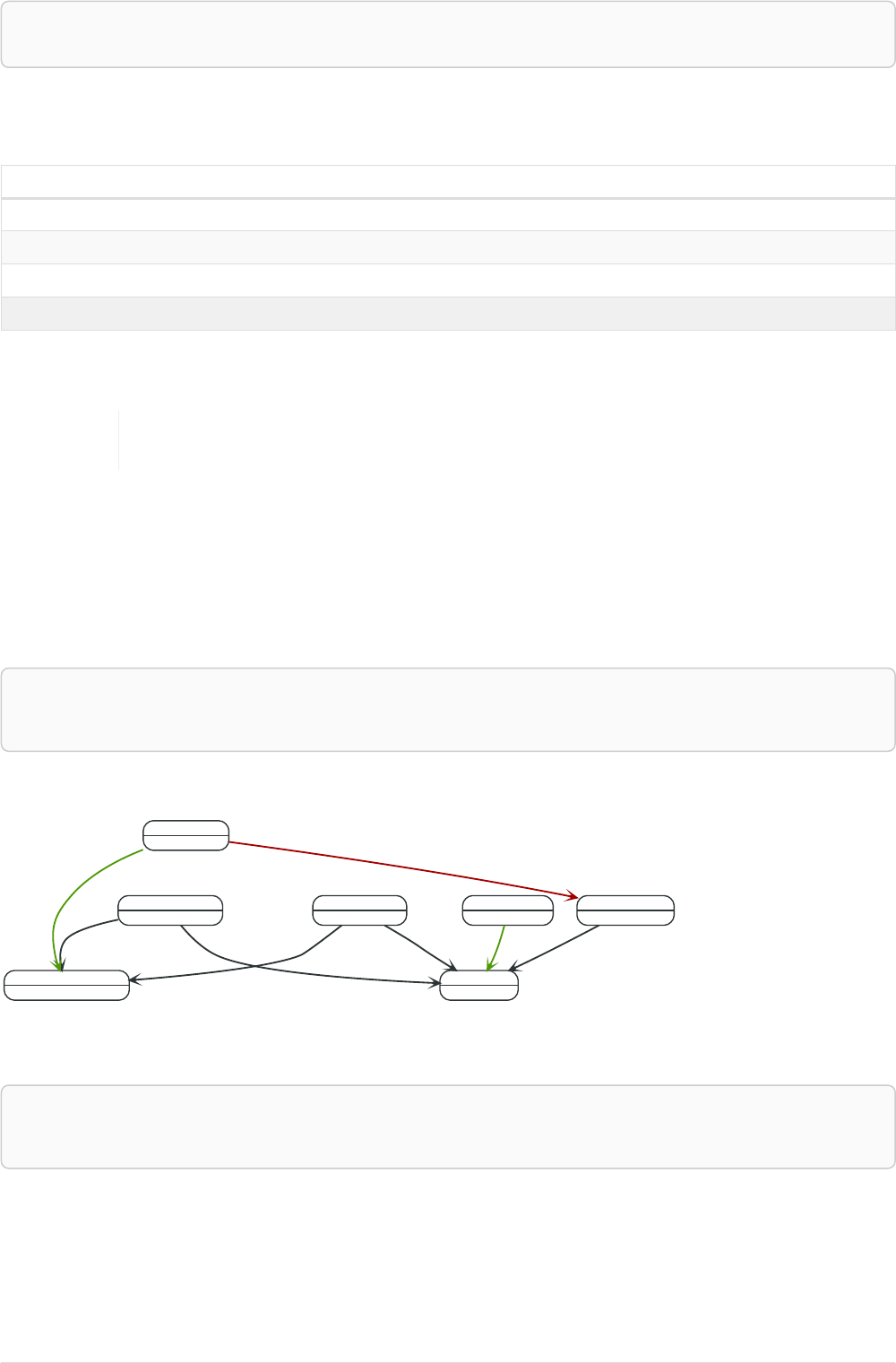
Query
MATCH (wallstreet { title: 'Wall Street' })<-[r:ACTED_IN]-(actor)
RETURN r.role
Returns ACTED_IN roles for 'Wall Street'.
Table 48. Result
r.role
"Gordon Gekko"
"Carl Fox"
"Bud Fox"
3 rows
7.1.4. Relationships in depth
Inside a single pattern, relationships will only be matched once. You can read more
about this in Uniqueness.
Relationship types with uncommon characters
Sometimes your database will have types with non-letter characters, or with spaces in them. Use `
(backtick) to quote these. To demonstrate this we can add an additional relationship between 'Charlie
Sheen' and 'Rob Reiner':
Query
MATCH (charlie:Person { name: 'Charlie Sheen' }),(rob:Person { name: 'Rob Reiner' })
CREATE (rob)-[:`TYPE
WITH SPACE`]->(charlie)
Which leads to the following graph:
Person
name = 'Charlie Sheen'
Movie
title = 'Wall Street'
ACTED_IN
role = 'Bud Fox'
Person
name = 'Martin Sheen'
ACTED_IN
role = 'Carl Fox'
Movie
title = 'The American President'
ACTED_IN
role = 'A.J. MacInerney'
Person
name = 'Michael Douglas'
ACTED_IN
role = 'Gordon Gekko'
ACTED_IN
role = 'President Andrew Shepherd'
Person
name = 'Oliver Stone'
DIRECTED
Person
name = 'Rob Reiner'
TYPE
WITH SPACE
DIRECTED
Figure 7. Graph
Query
MATCH (n { name: 'Rob Reiner' })-[r:`TYPE
WITH SPACE`]->()
RETURN type(r)
Returns a relationship type with a space in it
Table 49. Result
75

type(r)
"TYPE WITH SPACE"
1 row
Multiple relationships
Relationships can be expressed by using multiple statements in the form of ()--(), or they can be
strung together, like this:
Query
MATCH (charlie { name: 'Charlie Sheen' })-[:ACTED_IN]->(movie)<-[:DIRECTED]-(director)
RETURN movie.title, director.name
Returns the movie 'Charlie Sheen' acted in and its director.
Table 50. Result
movie.title director.name
"Wall Street" "Oliver Stone"
1 row
Variable length relationships
Nodes that are a variable number of relationship→node hops away can be found using the following
syntax: -[:TYPE*minHops..maxHops]→. minHops and maxHops are optional and default to 1 and infinity
respectively. When no bounds are given the dots may be omitted. The dots may also be omitted
when setting only one bound and this implies a fixed length pattern.
Query
MATCH (martin { name: 'Charlie Sheen' })-[:ACTED_IN*1..3]-(movie:Movie)
RETURN movie.title
Returns all movies related to 'Charlie Sheen' by 1 to 3 hops.
Table 51. Result
movie.title
"Wall Street"
"The American President"
"The American President"
3 rows
Relationship variable in variable length relationships
When the connection between two nodes is of variable length, the list of relationships comprising the
connection can be returned using the following syntax:
Query
MATCH p =(actor { name: 'Charlie Sheen' })-[:ACTED_IN*2]-(co_actor)
RETURN relationships(p)
76

Returns a list of relationships.
Table 52. Result
relationships(p)
[:ACTED_IN[0]{role:"Bud Fox"},:ACTED_IN[1]{role:"Carl Fox"}]
[:ACTED_IN[0]{role:"Bud Fox"},:ACTED_IN[2]{role:"Gordon Gekko"}]
2 rows
Match with properties on a variable length path
A variable length relationship with properties defined on in it means that all relationships in the path
must have the property set to the given value. In this query, there are two paths between 'Charlie
Sheen' and his father 'Martin Sheen'. One of them includes a 'blocked' relationship and the other
doesn’t. In this case we first alter the original graph by using the following query to add BLOCKED and
UNBLOCKED relationships:
Query
MATCH (charlie:Person { name: 'Charlie Sheen' }),(martin:Person { name: 'Martin Sheen' })
CREATE (charlie)-[:X { blocked: FALSE }]->(:UNBLOCKED)<-[:X { blocked: FALSE }]-(martin)
CREATE (charlie)-[:X { blocked: TRUE }]->(:BLOCKED)<-[:X { blocked: FALSE }]-(martin)
This means that we are starting out with the following graph:
Person
name = 'Charlie Sheen'
BLOCKED
X
blocked = true
UNBLOCKED
X
blocked = false
Movie
title = 'Wall Street'
ACTED_IN
role = 'Bud Fox'
Person
name = 'Martin Sheen'
X
blocked = false X
blocked = false ACTED_IN
role = 'Carl Fox'
Movie
title = 'The American President'
ACTED_IN
role = 'A.J. MacInerney'
Person
name = 'Michael Douglas'
ACTED_IN
role = 'Gordon Gekko' ACTED_IN
role = 'President Andrew Shepherd'
Person
name = 'Oliver Stone'
DIRECTED
Person
name = 'Rob Reiner'
DIRECTED
Figure 8. Graph
Query
MATCH p =(charlie:Person)-[* { blocked:false }]-(martin:Person)
WHERE charlie.name = 'Charlie Sheen' AND martin.name = 'Martin Sheen'
RETURN p
Returns the paths between 'Charlie Sheen' and 'Martin Sheen' where all relationships have the
blocked property set to false.
Table 53. Result
p
[Node[0]{name:"Charlie Sheen"},:X[20]{blocked:false},Node[20]{},:X[21]{blocked:false},Node[1]{name:"Martin
Sheen"}]
1 row
Zero length paths
Using variable length paths that have the lower bound zero means that two variables can point to the
same node. If the path length between two nodes is zero, they are by definition the same node. Note
that when matching zero length paths the result may contain a match even when matching on a
relationship type not in use.
Query
MATCH (wallstreet:Movie { title: 'Wall Street' })-[*0..1]-(x)
RETURN x
77

Returns the movie itself as well as actors and directors one relationship away
Table 54. Result
x
Node[5]{title:"Wall Street"}
Node[0]{name:"Charlie Sheen"}
Node[1]{name:"Martin Sheen"}
Node[2]{name:"Michael Douglas"}
Node[3]{name:"Oliver Stone"}
5 rows
Named paths
If you want to return or filter on a path in your pattern graph, you can a introduce a named path.
Query
MATCH p =(michael { name: 'Michael Douglas' })-->()
RETURN p
Returns the two paths starting from 'Michael Douglas'
Table 55. Result
p
[Node[2]{name:"Michael Douglas"},:ACTED_IN[5]{role:"President Andrew Shepherd"},Node[6]{title:"The American
President"}]
[Node[2]{name:"Michael Douglas"},:ACTED_IN[2]{role:"Gordon Gekko"},Node[5]{title:"Wall Street"}]
2 rows
Matching on a bound relationship
When your pattern contains a bound relationship, and that relationship pattern doesn’t specify
direction, Cypher will try to match the relationship in both directions.
Query
MATCH (a)-[r]-(b)
WHERE id(r)= 0
RETURN a,b
This returns the two connected nodes, once as the start node, and once as the end node
Table 56. Result
a b
Node[0]{name:"Charlie Sheen"} Node[5]{title:"Wall Street"}
Node[5]{title:"Wall Street"} Node[0]{name:"Charlie Sheen"}
2 rows
78

7.1.5. Shortest path
Single shortest path
Finding a single shortest path between two nodes is as easy as using the shortestPath function. It’s
done like this:
Query
MATCH (martin:Person { name: 'Martin Sheen' }),(oliver:Person { name: 'Oliver Stone' }), p =
shortestPath((martin)-[*..15]-(oliver))
RETURN p
This means: find a single shortest path between two nodes, as long as the path is max 15
relationships long. Within the parentheses you define a single link of a path — the starting node, the
connecting relationship and the end node. Characteristics describing the relationship like relationship
type, max hops and direction are all used when finding the shortest path. If there is a WHERE clause
following the match of a shortestPath, relevant predicates will be included in the shortestPath. If the
predicate is a none() or all() on the relationship elements of the path, it will be used during the
search to improve performance (see Shortest path planning).
Table 57. Result
p
[Node[1]{name:"Martin Sheen"},:ACTED_IN[1]{role:"Carl Fox"},Node[5]{title:"Wall
Street"},:DIRECTED[3]{},Node[3]{name:"Oliver Stone"}]
1 row
Single shortest path with predicates
Predicates used in the WHERE clause that apply to the shortest path pattern are evaluated before
deciding what the shortest matching path is.
Query
MATCH (charlie:Person { name: 'Charlie Sheen' }),(martin:Person { name: 'Martin Sheen' }), p =
shortestPath((charlie)-[*]-(martin))
WHERE NONE (r IN relationships(p) WHERE type(r)= 'FATHER')
RETURN p
This query will find the shortest path between 'Charlie Sheen' and 'Martin Sheen', and the WHERE
predicate will ensure that we don’t consider the father/son relationship between the two.
Table 58. Result
p
[Node[0]{name:"Charlie Sheen"},:ACTED_IN[0]{role:"Bud Fox"},Node[5]{title:"Wall
Street"},:ACTED_IN[1]{role:"Carl Fox"},Node[1]{name:"Martin Sheen"}]
1 row
All shortest paths
Finds all the shortest paths between two nodes.
79

Query
MATCH (martin:Person { name: 'Martin Sheen' }),(michael:Person { name: 'Michael Douglas' }), p =
allShortestPaths((martin)-[*]-(michael))
RETURN p
Finds the two shortest paths between 'Martin Sheen' and 'Michael Douglas'.
Table 59. Result
p
[Node[1]{name:"Martin Sheen"},:ACTED_IN[1]{role:"Carl Fox"},Node[5]{title:"Wall
Street"},:ACTED_IN[2]{role:"Gordon Gekko"},Node[2]{name:"Michael Douglas"}]
[Node[1]{name:"Martin Sheen"},:ACTED_IN[4]{role:"A.J. MacInerney"},Node[6]{title:"The American
President"},:ACTED_IN[5]{role:"President Andrew Shepherd"},Node[2]{name:"Michael Douglas"}]
2 rows
7.1.6. Get node or relationship by id
Node by id
Searching for nodes by id can be done with the id() function in a predicate.
Neo4j reuses its internal ids when nodes and relationships are deleted. This means
that applications using, and relying on internal Neo4j ids, are brittle or at risk of
making mistakes. It is therefore recommended to rather use application-generated
ids.
Query
MATCH (n)
WHERE id(n)= 0
RETURN n
The corresponding node is returned.
Table 60. Result
n
Node[0]{name:"Charlie Sheen"}
1 row
Relationship by id
Search for relationships by id can be done with the id() function in a predicate.
This is not recommended practice. See Node by id for more information on the use of Neo4j ids.
Query
MATCH ()-[r]->()
WHERE id(r)= 0
RETURN r
The relationship with id 0 is returned.
80

Table 61. Result
r
:ACTED_IN[0]{role:"Bud Fox"}
1 row
Multiple nodes by id
Multiple nodes are selected by specifying them in an IN clause.
Query
MATCH (n)
WHERE id(n) IN [0, 3, 5]
RETURN n
This returns the nodes listed in the IN expression.
Table 62. Result
n
Node[0]{name:"Charlie Sheen"}
Node[3]{name:"Oliver Stone"}
Node[5]{title:"Wall Street"}
3 rows
7.2. OPTIONAL MATCH
The OPTIONAL MATCH clause is used to search for the pattern described in it, while using nulls
for missing parts of the pattern.
•Introduction
•Optional relationships
•Properties on optional elements
•Optional typed and named relationship
7.2.1. Introduction
OPTIONAL MATCH matches patterns against your graph database, just like MATCH does. The difference is
that if no matches are found, OPTIONAL MATCH will use a null for missing parts of the pattern. OPTIONAL
MATCH could be considered the Cypher equivalent of the outer join in SQL.
Either the whole pattern is matched, or nothing is matched. Remember that WHERE is part of the
pattern description, and the predicates will be considered while looking for matches, not after. This
matters especially in the case of multiple (OPTIONAL) MATCH clauses, where it is crucial to put WHERE
together with the MATCH it belongs to.
To understand the patterns used in the OPTIONAL MATCH clause, read Patterns.
The following graph is used for the examples below:
81
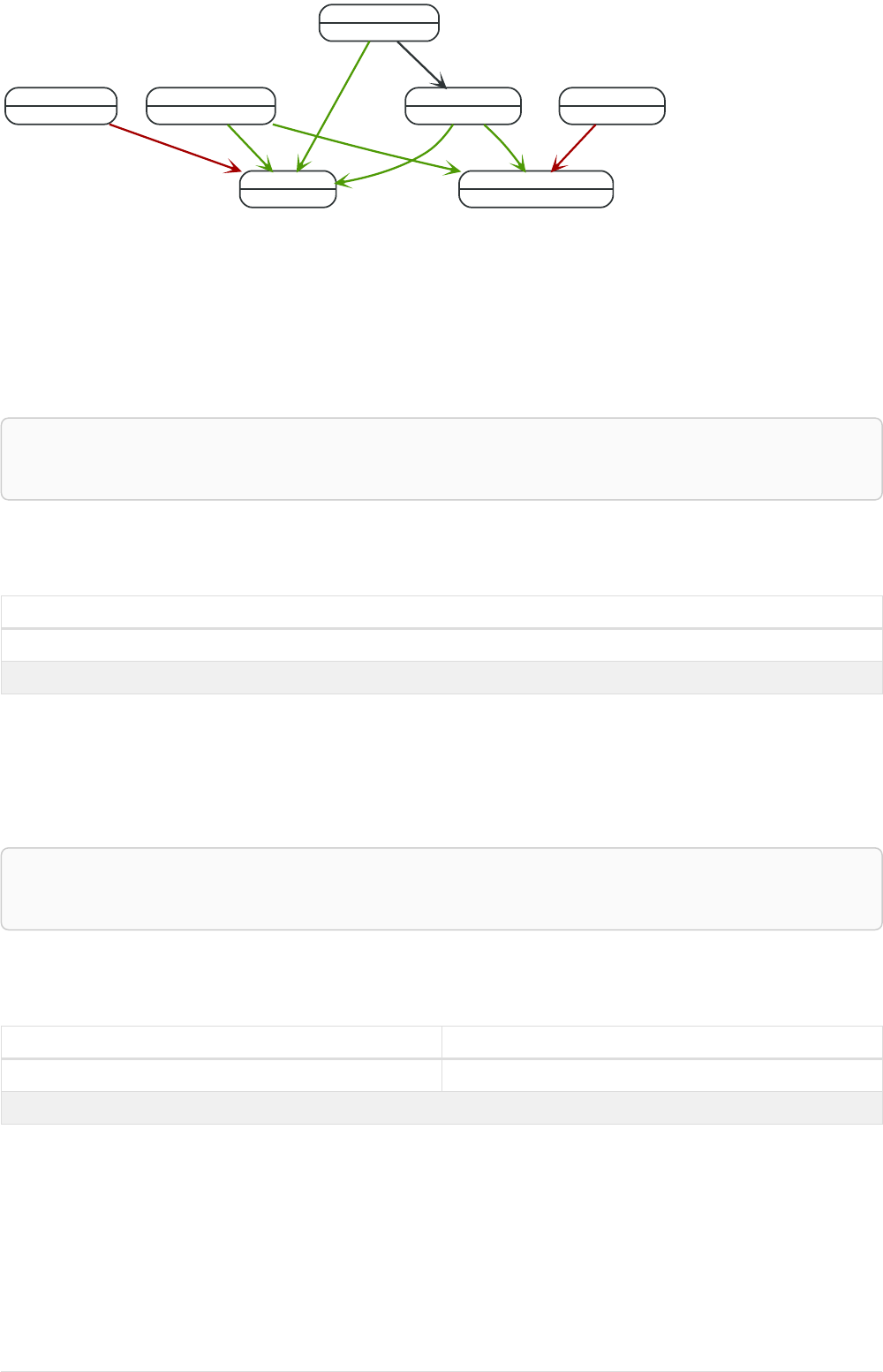
Person
name = 'Charlie Sheen'
Person
name = 'Martin Sheen'
FATHER
Movie
title = 'Wall Street'
ACTED_IN
ACTED_IN
Movie
title = 'The American President'
ACTED_IN
Person
name = 'Michael Douglas'
ACTED_IN ACTED_IN
Person
name = 'Oliver Stone'
DIRECTED
Person
name = 'Rob Reiner'
DIRECTED
Figure 9. Graph
7.2.2. Optional relationships
If a relationship is optional, use the OPTIONAL MATCH clause. This is similar to how a SQL outer join
works. If the relationship is there, it is returned. If it’s not, null is returned in its place.
Query
MATCH (a:Movie { title: 'Wall Street' })
OPTIONAL MATCH (a)-->(x)
RETURN x
Returns null, since the node has no outgoing relationships.
Table 63. Result
x
<null>
1 row
7.2.3. Properties on optional elements
Returning a property from an optional element that is null will also return null.
Query
MATCH (a:Movie { title: 'Wall Street' })
OPTIONAL MATCH (a)-->(x)
RETURN x, x.name
Returns the element x (null in this query), and null as its name.
Table 64. Result
x x.name
<null> <null>
1 row
7.2.4. Optional typed and named relationship
Just as with a normal relationship, you can decide which variable it goes into, and what relationship
type you need.
82

Query
MATCH (a:Movie { title: 'Wall Street' })
OPTIONAL MATCH (a)-[r:ACTS_IN]->()
RETURN a.title, r
This returns the title of the node, 'Wall Street', and, since the node has no outgoing ACTS_IN
relationships, null is returned for the relationship denoted by r.
Table 65. Result
a.title r
"Wall Street" <null>
1 row
7.3. START
Find starting points through explicit indexes.
The START clause was removed in Cypher 3.2, and the recommendation is to use MATCH instead (see
MATCH). However, if the use of explicit indexes is required, a series of built-in procedures allows these
to be managed and used. These procedures offer the same functionality as the START clause. In
addition, queries using these procedures may exhibit superior execution performance over queries
using START owing to the use of the cost planner and newer Cypher 3.2 compiler.
Using the START clause explicitly in a query will cause the query to fall back to using
Cypher 3.1.
7.4. RETURN
The RETURN clause defines what to include in the query result set.
•Introduction
•Return nodes
•Return relationships
•Return property
•Return all elements
•Variable with uncommon characters
•Column alias
•Optional properties
•Other expressions
•Unique results
7.4.1. Introduction
In the RETURN part of your query, you define which parts of the pattern you are interested in. It can be
nodes, relationships, or properties on these.
83

If what you actually want is the value of a property, make sure to not return the full
node/relationship. This will improve performance.
name = 'A'
happy = 'Yes!'
age = 55
name = 'B'
BLOCKS KNOWS
Figure 10. Graph
7.4.2. Return nodes
To return a node, list it in the RETURN statement.
Query
MATCH (n { name: 'B' })
RETURN n
The example will return the node.
Table 66. Result
n
Node[1]{name:"B"}
1 row
7.4.3. Return relationships
To return a relationship, just include it in the RETURN list.
Query
MATCH (n { name: 'A' })-[r:KNOWS]->(c)
RETURN r
The relationship is returned by the example.
Table 67. Result
r
:KNOWS[0]{}
1 row
7.4.4. Return property
To return a property, use the dot separator, like this:
Query
MATCH (n { name: 'A' })
RETURN n.name
84

The value of the property name gets returned.
Table 68. Result
n.name
"A"
1 row
7.4.5. Return all elements
When you want to return all nodes, relationships and paths found in a query, you can use the *
symbol.
Query
MATCH p =(a { name: 'A' })-[r]->(b)
RETURN *
This returns the two nodes, the relationship and the path used in the query.
Table 69. Result
a b p r
Node[0]{name:"A",happy:"Ye
s!",age:55}
Node[1]{name:"B"} [Node[0]{name:"A",happy:"Y
es!",age:55},:BLOCKS[1]{},
Node[1]{name:"B"}]
:BLOCKS[1]{}
Node[0]{name:"A",happy:"Ye
s!",age:55}
Node[1]{name:"B"} [Node[0]{name:"A",happy:"Y
es!",age:55},:KNOWS[0]{},N
ode[1]{name:"B"}]
:KNOWS[0]{}
2 rows
7.4.6. Variable with uncommon characters
To introduce a placeholder that is made up of characters that are not contained in the English
alphabet, you can use the ` to enclose the variable, like this:
Query
MATCH (`This isn\'t a common variable`)
WHERE `This isn\'t a common variable`.name = 'A'
RETURN `This isn\'t a common variable`.happy
The node with name "A" is returned.
Table 70. Result
`This isn\'t a common variable`.happy
"Yes!"
1 row
7.4.7. Column alias
If the name of the column should be different from the expression used, you can rename it by using
AS <new name>.
85

Query
MATCH (a { name: 'A' })
RETURN a.age AS SomethingTotallyDifferent
Returns the age property of a node, but renames the column.
Table 71. Result
SomethingTotallyDifferent
55
1 row
7.4.8. Optional properties
If a property might or might not be there, you can still select it as usual. It will be treated as null if it is
missing.
Query
MATCH (n)
RETURN n.age
This example returns the age when the node has that property, or null if the property is not there.
Table 72. Result
n.age
55
<null>
2 rows
7.4.9. Other expressions
Any expression can be used as a return item — literals, predicates, properties, functions, and
everything else.
Query
MATCH (a { name: 'A' })
RETURN a.age > 30, "I'm a literal",(a)-->()
Returns a predicate, a literal and function call with a pattern expression parameter.
Table 73. Result
a.age > 30 "I'm a literal" (a)-->()
true "I'm a literal" [[Node[0]{name:"A",happy:"Yes!",age:
55},:BLOCKS[1]{},Node[1]{name:"B"}],
[Node[0]{name:"A",happy:"Yes!",age:5
5},:KNOWS[0]{},Node[1]{name:"B"}]]
1 row
86

7.4.10. Unique results
DISTINCT retrieves only unique rows depending on the columns that have been selected to output.
Query
MATCH (a { name: 'A' })-->(b)
RETURN DISTINCT b
The node named "B" is returned by the query, but only once.
Table 74. Result
b
Node[1]{name:"B"}
1 row
7.5. WITH
The WITH clause allows query parts to be chained together, piping the results from one to be
used as starting points or criteria in the next.
•Introduction
•Filter on aggregate function results
•Sort results before using collect on them
•Limit branching of a path search
7.5.1. Introduction
Using WITH, you can manipulate the output before it is passed on to the following query parts. The
manipulations can be of the shape and/or number of entries in the result set.
One common usage of WITH is to limit the number of entries that are then passed on to other MATCH
clauses. By combining ORDER BY and LIMIT, it’s possible to get the top X entries by some criteria, and
then bring in additional data from the graph.
Another use is to filter on aggregated values. WITH is used to introduce aggregates which can then be
used in predicates in WHERE. These aggregate expressions create new bindings in the results. WITH can
also, like RETURN, alias expressions that are introduced into the results using the aliases as the binding
name.
WITH is also used to separate reading from updating of the graph. Every part of a query must be either
read-only or write-only. When going from a writing part to a reading part, the switch must be done
with a WITH clause.
87

name = 'Anders'
name = 'Ceasar'
BLOCKS
name = 'Bossman'
KNOWS
name = 'Emil'
KNOWS
name = 'David'
BLOCKSKNOWS
KNOWS
Figure 11. Graph
7.5.2. Filter on aggregate function results
Aggregated results have to pass through a WITH clause to be able to filter on.
Query
MATCH (david { name: 'David' })--(otherPerson)-->()
WITH otherPerson, count(*) AS foaf
WHERE foaf > 1
RETURN otherPerson.name
The name of the person connected to 'David' with the at least more than one outgoing relationship
will be returned by the query.
Table 75. Result
otherPerson.name
"Anders"
1 row
7.5.3. Sort results before using collect on them
You can sort your results before passing them to collect, thus sorting the resulting list.
Query
MATCH (n)
WITH n
ORDER BY n.name DESC LIMIT 3
RETURN collect(n.name)
A list of the names of people in reverse order, limited to 3, is returned in a list.
Table 76. Result
collect(n.name)
["Emil","David","Ceasar"]
1 row
7.5.4. Limit branching of a path search
You can match paths, limit to a certain number, and then match again using those paths as a base, as
88

well as any number of similar limited searches.
Query
MATCH (n { name: 'Anders' })--(m)
WITH m
ORDER BY m.name DESC LIMIT 1
MATCH (m)--(o)
RETURN o.name
Starting at 'Anders', find all matching nodes, order by name descending and get the top result, then
find all the nodes connected to that top result, and return their names.
Table 77. Result
o.name
"Bossman"
"Anders"
2 rows
7.6. UNWIND
UNWIND expands a list into a sequence of rows.
•Introduction
•Unwinding a list
•Creating a distinct list
•Using UNWIND with any expression returning a list
•Using UNWIND with a list of lists
•Using UNWIND with an empty list
•Using UNWIND with an expression that is not a list
•Creating nodes from a list parameter
7.6.1. Introduction
With UNWIND, you can transform any list back into individual rows. These lists can be parameters that
were passed in, previously collect -ed result or other list expressions.
One common usage of unwind is to create distinct lists. Another is to create data from parameter lists
that are provided to the query.
UNWIND requires you to specify a new name for the inner values.
7.6.2. Unwinding a list
We want to transform the literal list into rows named x and return them.
Query
UNWIND [1, 2, 3, NULL ] AS x
RETURN x, 'val' AS y
89

Each value of the original list — including null — is returned as an individual row.
Table 78. Result
x y
1 "val"
2 "val"
3 "val"
<null> "val"
4 rows
7.6.3. Creating a distinct list
We want to transform a list of duplicates into a set using DISTINCT.
Query
WITH [1, 1, 2, 2] AS coll
UNWIND coll AS x
WITH DISTINCT x
RETURN collect(x) AS setOfVals
Each value of the original list is unwound and passed through DISTINCT to create a unique set.
Table 79. Result
setOfVals
[1,2]
1 row
7.6.4. Using UNWIND with any expression returning a list
Any expression that returns a list may be used with UNWIND.
Query
WITH [1, 2] AS a,[3, 4] AS b
UNWIND (a + b) AS x
RETURN x
The two lists — a and b — are concatenated to form a new list, which is then operated upon by UNWIND.
Table 80. Result
x
1
2
3
4
4 rows
90

7.6.5. Using UNWIND with a list of lists
Multiple UNWIND clauses can be chained to unwind nested list elements.
Query
WITH [[1, 2],[3, 4], 5] AS nested
UNWIND nested AS x
UNWIND x AS y
RETURN y
The first UNWIND results in three rows for x, each of which contains an element of the original list (two
of which are also lists); namely, [1, 2], [3, 4] and 5. The second UNWIND then operates on each of
these rows in turn, resulting in five rows for y.
Table 81. Result
y
1
2
3
4
5
5 rows
7.6.6. Using UNWIND with an empty list
Using an empty list with UNWIND will produce no rows, irrespective of whether or not any rows existed
beforehand, or whether or not other values are being projected.
Essentially, UNWIND [] reduces the number of rows to zero, and thus causes the query to cease its
execution, returning no results. This has value in cases such as UNWIND v, where v is a variable from an
earlier clause that may or may not be an empty list — when it is an empty list, this will behave just as a
MATCH that has no results.
Query
UNWIND [] AS empty
RETURN empty, 'literal_that_is_not_returned'
Table 82. Result
(empty result)
0 rows
To avoid inadvertently using UNWIND on an empty list, CASE may be used to replace an empty list with a
null:
WITH [] AS list
UNWIND
Ê CASE
Ê WHEN list = []
Ê THEN [null]
Ê ELSE list
Ê END AS emptylist
RETURN emptylist
91

7.6.7. Using UNWIND with an expression that is not a list
Attempting to use UNWIND on an expression that does not return a list — such as UNWIND 5 — will cause
an error. The exception to this is when the expression returns null — this will reduce the number of
rows to zero, causing it to cease its execution and return no results.
Query
UNWIND NULL AS x
RETURN x, 'some_literal'
Table 83. Result
(empty result)
0 rows
7.6.8. Creating nodes from a list parameter
Create a number of nodes and relationships from a parameter-list without using FOREACH.
Parameters
{
Ê "events" : [ {
Ê "year" : 2014,
Ê "id" : 1
Ê }, {
Ê "year" : 2014,
Ê "id" : 2
Ê } ]
}
Query
UNWIND $events AS event
MERGE (y:Year { year: event.year })
MERGE (y)<-[:IN]-(e:Event { id: event.id })
RETURN e.id AS x
ORDER BY x
Each value of the original list is unwound and passed through MERGE to find or create the nodes and
relationships.
Table 84. Result
x
1
2
2 rows
Nodes created: 3
Relationships created: 2
Properties set: 3
Labels added: 3
7.7. WHERE
WHERE adds constraints to the patterns in a MATCH or OPTIONAL MATCH clause or filters the
results of a WITH clause.
92

•Introduction
•Basic usage
•Boolean operations
•Filter on node label
•Filter on node property
•Filter on relationship property
•Filter on dynamically-computed property
•Property existence checking
•String matching
•Match the beginning of a string
•Match the ending of a string
•Match anywhere within a string
•String matching negation
•Regular expressions
•Matching using regular expressions
•Escaping in regular expressions
•Case-insensitive regular expressions
•Using path patterns in WHERE
•Filter on patterns
•Filter on patterns using NOT
•Filter on patterns with properties
•Filter on relationship type
•Lists
•IN operator
•Missing properties and values
•Default to false if property is missing
•Default to true if property is missing
•Filter on null
•Using ranges
•Simple range
•Composite range
7.7.1. Introduction
WHERE is not a clause in its own right — rather, it’s part of MATCH, OPTIONAL MATCH, START and WITH.
In the case of WITH and START, WHERE simply filters the results.
For MATCH and OPTIONAL MATCH on the other hand, WHERE adds constraints to the patterns described. It
should not be seen as a filter after the matching is finished.
93

In the case of multiple MATCH / OPTIONAL MATCH clauses, the predicate in WHERE is
always a part of the patterns in the directly preceding MATCH / OPTIONAL MATCH. Both
results and performance may be impacted if the WHERE is put inside the wrong MATCH
clause.
The following graph is used for the examples below:
Swedish
name = 'Andres'
age = 36
belt = 'white'
email = 'peter_n@example.com'
name = 'Peter'
age = 35
KNOWS
since = 1999
address = 'Sweden/Malmo'
name = 'Tobias'
age = 25
KNOWS
since = 2012
Figure 12. Graph
7.7.2. Basic usage
Boolean operations
You can use the boolean operators AND, OR, XOR and NOT. See Working with null for more information
on how this works with null.
Query
MATCH (n)
WHERE n.name = 'Peter' XOR (n.age < 30 AND n.name = 'Tobias') OR NOT (n.name = 'Tobias' OR n.name =
'Peter')
RETURN n.name, n.age
Table 85. Result
n.name n.age
"Andres" 36
"Tobias" 25
"Peter" 35
3 rows
Filter on node label
To filter nodes by label, write a label predicate after the WHERE keyword using WHERE n:foo.
Query
MATCH (n)
WHERE n:Swedish
RETURN n.name, n.age
The name and age for the 'Andres' node will be returned.
Table 86. Result
n.name n.age
"Andres" 36
94

n.name n.age
1 row
Filter on node property
To filter on a node property, write your clause after the WHERE keyword.
Query
MATCH (n)
WHERE n.age < 30
RETURN n.name, n.age
The name and age values for the 'Tobias' node are returned because he is less than 30 years of age.
Table 87. Result
n.name n.age
"Tobias" 25
1 row
Filter on relationship property
To filter on a relationship property, write your clause after the WHERE keyword.
Query
MATCH (n)-[k:KNOWS]->(f)
WHERE k.since < 2000
RETURN f.name, f.age, f.email
The name, age and email values for the 'Peter' node are returned because Andrés has known him
since before 2000.
Table 88. Result
f.name f.age f.email
"Peter" 35 "peter_n@example.com"
1 row
Filter on dynamically-computed node property
To filter on a property using a dynamically computed name, use square bracket syntax.
Query
WITH 'AGE' AS propname
MATCH (n)
WHERE n[toLower(propname)]< 30
RETURN n.name, n.age
The name and age values for the 'Tobias' node are returned because he is less than 30 years of age.
Table 89. Result
95

n.name n.age
"Tobias" 25
1 row
Property existence checking
Use the exists() function to only include nodes or relationships in which a property exists.
Query
MATCH (n)
WHERE exists(n.belt)
RETURN n.name, n.belt
The name and belt for the 'Andres' node are returned because he is the only one with a belt property.
The has() function has been superseded by exists() and has been removed.
Table 90. Result
n.name n.belt
"Andres" "white"
1 row
7.7.3. String matching
The start and end of strings can be matched using STARTS WITH and ENDS WITH. To match regardless of
location in a string, use CONTAINS. The matching is case-sensitive.
Match the beginning of a string
The STARTS WITH operator is used to perform case-sensitive matching on the start of strings.
Query
MATCH (n)
WHERE n.name STARTS WITH 'Pet'
RETURN n.name, n.age
The name and age for the 'Peter' node are returned because his name starts with 'Pet'.
Table 91. Result
n.name n.age
"Peter" 35
1 row
Match the ending of a string
The ENDS WITH operator is used to perform case-sensitive matching on the end of strings.
96

Query
MATCH (n)
WHERE n.name ENDS WITH 'ter'
RETURN n.name, n.age
The name and age for the 'Peter' node are returned because his name ends with 'ter'.
Table 92. Result
n.name n.age
"Peter" 35
1 row
Match anywhere within a string
The CONTAINS operator is used to perform case-sensitive matching regardless of location in strings.
Query
MATCH (n)
WHERE n.name CONTAINS 'ete'
RETURN n.name, n.age
The name and age for the 'Peter' node are returned because his name contains with 'ete'.
Table 93. Result
n.name n.age
"Peter" 35
1 row
String matching negation
Use the NOT keyword to exclude all matches on given string from your result:
Query
MATCH (n)
WHERE NOT n.name ENDS WITH 's'
RETURN n.name, n.age
The name and age for the 'Peter' node are returned because his name does not end with 's'.
Table 94. Result
n.name n.age
"Peter" 35
1 row
7.7.4. Regular expressions
Cypher supports filtering using regular expressions. The regular expression syntax is inherited from
the Java regular expressions (https://docs.oracle.com/javase/7/docs/api/java/util/regex/Pattern.html). This
includes support for flags that change how strings are matched, including case-insensitive (?i),
multiline (?m) and dotall (?s). Flags are given at the beginning of the regular expression, for example
97

MATCH (n) WHERE n.name =~ '(?i)Lon.*' RETURN n will return nodes with name 'London' or with name
'LonDoN'.
Matching using regular expressions
You can match on regular expressions by using =~ 'regexp', like this:
Query
MATCH (n)
WHERE n.name =~ 'Tob.*'
RETURN n.name, n.age
The name and age for the 'Tobias' node are returned because his name starts with 'Tob'.
Table 95. Result
n.name n.age
"Tobias" 25
1 row
Escaping in regular expressions
Characters like . or * have special meaning in a regular expression. To use these as ordinary
characters, without special meaning, escape them.
Query
MATCH (n)
WHERE n.email =~ '.*\\.com'
RETURN n.name, n.age, n.email
The name, age and email for the 'Peter' node are returned because his email ends with '.com'.
Table 96. Result
n.name n.age n.email
"Peter" 35 "peter_n@example.com"
1 row
Case-insensitive regular expressions
By pre-pending a regular expression with (?i), the whole expression becomes case-insensitive.
Query
MATCH (n)
WHERE n.name =~ '(?i)ANDR.*'
RETURN n.name, n.age
The name and age for the 'Andres' node are returned because his name starts with 'ANDR'
irrespective of casing.
Table 97. Result
n.name n.age
"Andres" 36
98

n.name n.age
1 row
7.7.5. Using path patterns in WHERE
Filter on patterns
Patterns are expressions in Cypher, expressions that return a list of paths. List expressions are also
predicates — an empty list represents false, and a non-empty represents true.
So, patterns are not only expressions, they are also predicates. The only limitation to your pattern is
that you must be able to express it in a single path. You cannot use commas between multiple paths
like you do in MATCH. You can achieve the same effect by combining multiple patterns with AND.
Note that you cannot introduce new variables here. Although it might look very similar to the MATCH
patterns, the WHERE clause is all about eliminating matched subgraphs. MATCH (a)-[]→(b) is very
different from WHERE (a)-[]→(b). The first will produce a subgraph for every path it can find between
a and b, whereas the latter will eliminate any matched subgraphs where a and b do not have a directed
relationship chain between them.
Query
MATCH (tobias { name: 'Tobias' }),(others)
WHERE others.name IN ['Andres', 'Peter'] AND (tobias)<--(others)
RETURN others.name, others.age
The name and age for nodes that have an outgoing relationship to the 'Tobias' node are returned.
Table 98. Result
others.name others.age
"Andres" 36
1 row
Filter on patterns using NOT
The NOT operator can be used to exclude a pattern.
Query
MATCH (persons),(peter { name: 'Peter' })
WHERE NOT (persons)-->(peter)
RETURN persons.name, persons.age
Name and age values for nodes that do not have an outgoing relationship to the 'Peter' node are
returned.
Table 99. Result
persons.name persons.age
"Tobias" 25
"Peter" 35
2 rows
99

Filter on patterns with properties
You can also add properties to your patterns:
Query
MATCH (n)
WHERE (n)-[:KNOWS]-({ name: 'Tobias' })
RETURN n.name, n.age
Finds all name and age values for nodes that have a KNOWS relationship to a node with the name
'Tobias'.
Table 100. Result
n.name n.age
"Andres" 36
1 row
Filter on relationship type
You can put the exact relationship type in the MATCH pattern, but sometimes you want to be able to do
more advanced filtering on the type. You can use the special property type to compare the type with
something else. In this example, the query does a regular expression comparison with the name of
the relationship type.
Query
MATCH (n)-[r]->()
WHERE n.name='Andres' AND type(r)=~ 'K.*'
RETURN type(r), r.since
This returns all relationships having a type whose name starts with 'K'.
Table 101. Result
type(r) r.since
"KNOWS" 1999
"KNOWS" 2012
2 rows
7.7.6. Lists
IN operator
To check if an element exists in a list, you can use the IN operator.
Query
MATCH (a)
WHERE a.name IN ['Peter', 'Tobias']
RETURN a.name, a.age
This query shows how to check if a property exists in a literal list.
Table 102. Result
100

a.name a.age
"Tobias" 25
"Peter" 35
2 rows
7.7.7. Missing properties and values
Default to false if property is missing
As missing properties evaluate to null, the comparision in the example will evaluate to false for
nodes without the belt property.
Query
MATCH (n)
WHERE n.belt = 'white'
RETURN n.name, n.age, n.belt
Only the name, age and belt values of nodes with white belts are returned.
Table 103. Result
n.name n.age n.belt
"Andres" 36 "white"
1 row
Default to true if property is missing
If you want to compare a property on a graph element, but only if it exists, you can compare the
property against both the value you are looking for and null, like:
Query
MATCH (n)
WHERE n.belt = 'white' OR n.belt IS NULL RETURN n.name, n.age, n.belt
ORDER BY n.name
This returns all values for all nodes, even those without the belt property.
Table 104. Result
n.name n.age n.belt
"Andres" 36 "white"
"Peter" 35 <null>
"Tobias" 25 <null>
3 rows
Filter on null
Sometimes you might want to test if a value or a variable is null. This is done just like SQL does it,
using IS NULL. Also like SQL, the negative is IS NOT NULL, although NOT(IS NULL x) also works.
101

Query
MATCH (person)
WHERE person.name = 'Peter' AND person.belt IS NULL RETURN person.name, person.age, person.belt
The name and age values for nodes that have name 'Peter' but no belt property are returned.
Table 105. Result
person.name person.age person.belt
"Peter" 35 <null>
1 row
7.7.8. Using ranges
Simple range
To check for an element being inside a specific range, use the inequality operators <, <=, >=, >.
Query
MATCH (a)
WHERE a.name >= 'Peter'
RETURN a.name, a.age
The name and age values of nodes having a name property lexicographically greater than or equal to
'Peter' are returned.
Table 106. Result
a.name a.age
"Tobias" 25
"Peter" 35
2 rows
Composite range
Several inequalities can be used to construct a range.
Query
MATCH (a)
WHERE a.name > 'Andres' AND a.name < 'Tobias'
RETURN a.name, a.age
The name and age values of nodes having a name property lexicographically between 'Andres' and
'Tobias' are returned.
Table 107. Result
a.name a.age
"Peter" 35
1 row
102
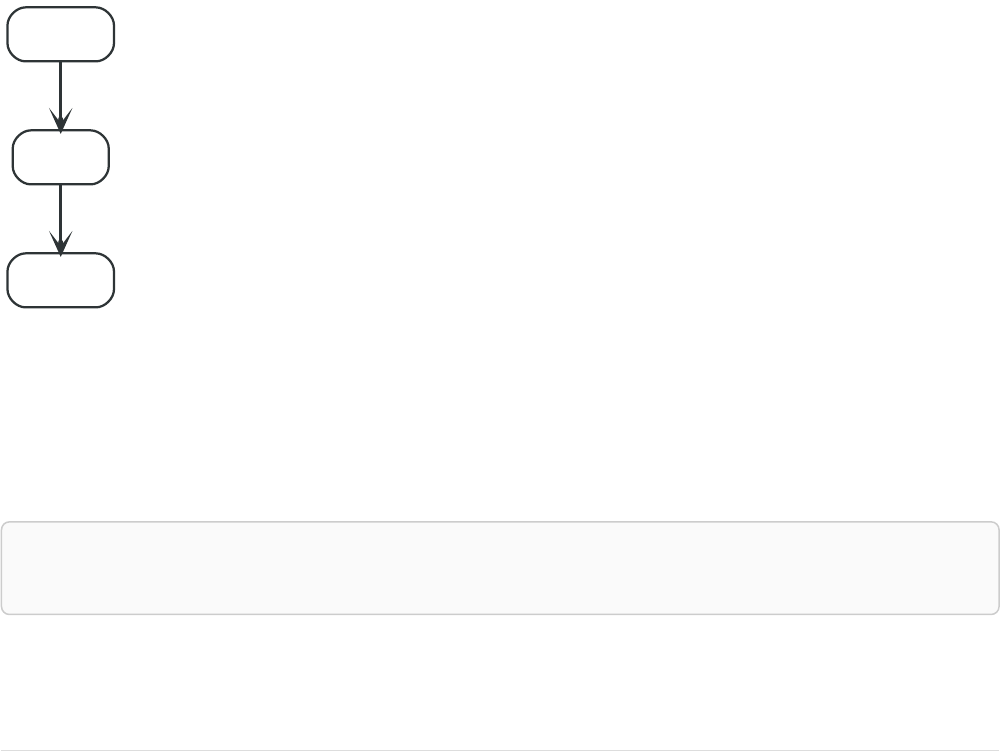
7.8. ORDER BY
ORDER BY is a sub-clause following RETURN or WITH, and it specifies that the output should be
sorted and how.
•Introduction
•Order nodes by property
•Order nodes by multiple properties
•Order nodes in descending order
•Ordering null
7.8.1. Introduction
Note that you cannot sort on nodes or relationships, just on properties on these. ORDER BY relies on
comparisons to sort the output, see Ordering and comparison of values.
In terms of scope of variables, ORDER BY follows special rules, depending on if the projecting RETURN or
WITH clause is either aggregating or DISTINCT. If it is an aggregating or DISTINCT projection, only
the variables available in the projection are available. If the projection does not alter the output
cardinality (which aggregation and DISTINCT do), variables available from before the projecting clause
are also available. When the projection clause shadows already existing variables, only the new
variables are available.
Lastly, it is not allowed to use aggregating expressions in the ORDER BY sub-clause if they are not also
listed in the projecting clause. This last rule is to make sure that ORDER BY does not change the
results, only the order of them.
name = 'A'
age = 34
length = 170
name = 'B'
age = 34
KNOWS
name = 'C'
age = 32
length = 185
KNOWS
Figure 13. Graph
7.8.2. Order nodes by property
ORDER BY is used to sort the output.
Query
MATCH (n)
RETURN n.name, n.age
ORDER BY n.name
The nodes are returned, sorted by their name.
Table 108. Result
103

n.name n.age
"A" 34
"B" 34
"C" 32
3 rows
7.8.3. Order nodes by multiple properties
You can order by multiple properties by stating each variable in the ORDER BY clause. Cypher will sort
the result by the first variable listed, and for equals values, go to the next property in the ORDER BY
clause, and so on.
Query
MATCH (n)
RETURN n.name, n.age
ORDER BY n.age, n.name
This returns the nodes, sorted first by their age, and then by their name.
Table 109. Result
n.name n.age
"C" 32
"A" 34
"B" 34
3 rows
7.8.4. Order nodes in descending order
By adding DESC[ENDING] after the variable to sort on, the sort will be done in reverse order.
Query
MATCH (n)
RETURN n.name, n.age
ORDER BY n.name DESC
The example returns the nodes, sorted by their name in reverse order.
Table 110. Result
n.name n.age
"C" 32
"B" 34
"A" 34
3 rows
7.8.5. Ordering null
When sorting the result set, null will always come at the end of the result set for ascending sorting,
and first when doing descending sort.
104
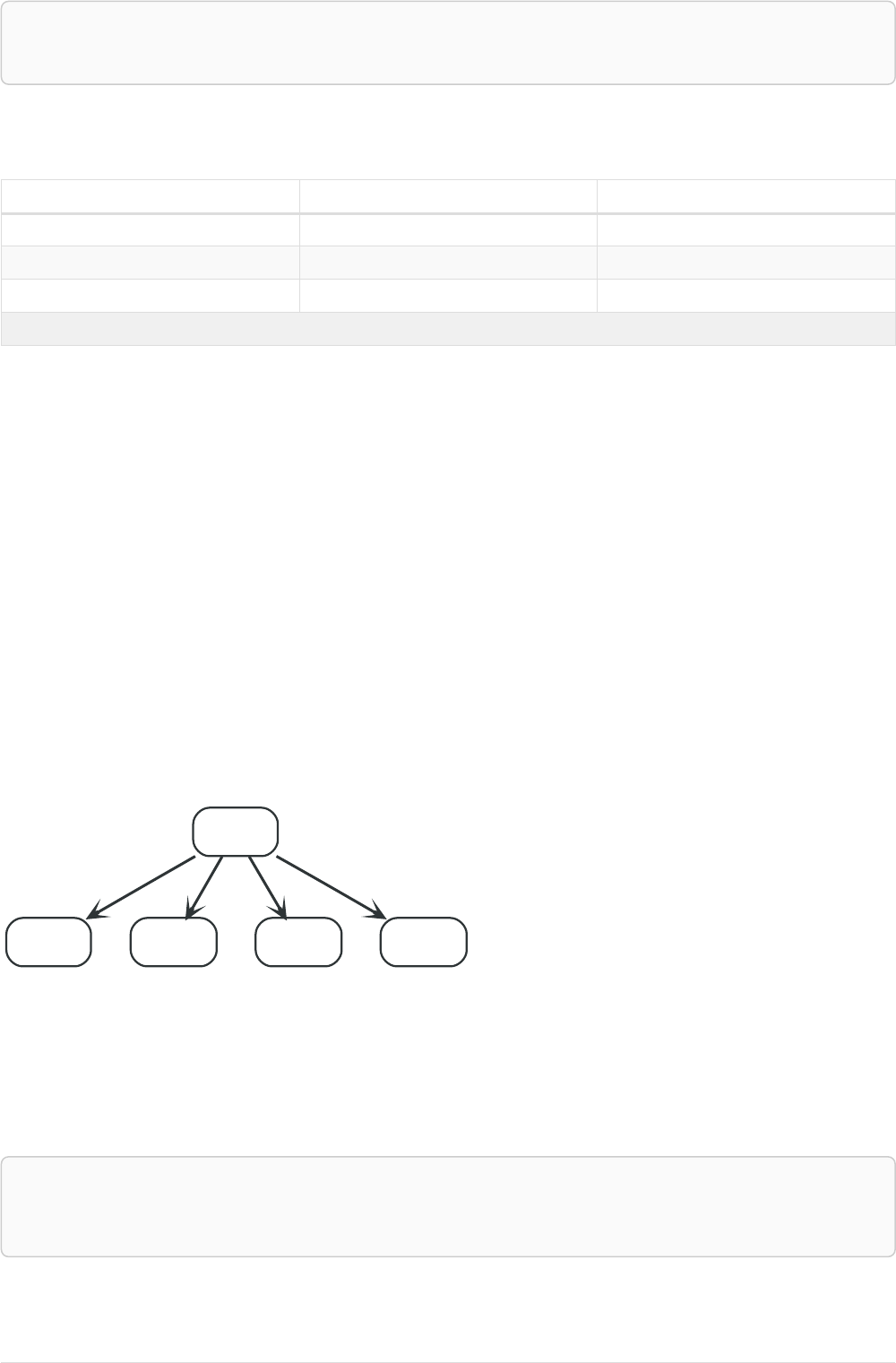
Query
MATCH (n)
RETURN n.length, n.name, n.age
ORDER BY n.length
The nodes are returned sorted by the length property, with a node without that property last.
Table 111. Result
n.length n.name n.age
170 "A" 34
185 "C" 32
<null> "B" 34
3 rows
7.9. SKIP
SKIP defines from which row to start including the rows in the output.
•Introduction
•Skip first three rows
•Return middle two rows
•Using an expression with SKIP to return a subset of the rows
7.9.1. Introduction
By using SKIP, the result set will get trimmed from the top. Please note that no guarantees are made
on the order of the result unless the query specifies the ORDER BY clause. SKIP accepts any expression
that evaluates to a positive integer — however the expression cannot refer to nodes or relationships.
name = 'A'
name = 'E'
KNOWS
name = 'D'
KNOWS
name = 'C'
KNOWS
name = 'B'
KNOWS
Figure 14. Graph
7.9.2. Skip first three rows
To return a subset of the result, starting from the fourth result, use the following syntax:
Query
MATCH (n)
RETURN n.name
ORDER BY n.name
SKIP 3
The first three nodes are skipped, and only the last two are returned in the result.
105

Table 112. Result
n.name
"D"
"E"
2 rows
7.9.3. Return middle two rows
To return a subset of the result, starting from somewhere in the middle, use this syntax:
Query
MATCH (n)
RETURN n.name
ORDER BY n.name
SKIP 1
LIMIT 2
Two nodes from the middle are returned.
Table 113. Result
n.name
"B"
"C"
2 rows
7.9.4. Using an expression with SKIP to return a subset of the rows
Skip accepts any expression that evaluates to a positive integer as long as it is not referring to any
external variables:
Query
MATCH (n)
RETURN n.name
ORDER BY n.name
SKIP toInteger(3*rand())+ 1
The first three nodes are skipped, and only the last two are returned in the result.
Table 114. Result
n.name
"C"
"D"
"E"
3 rows
7.10. LIMIT
LIMIT constrains the number of rows in the output.
106

•Introduction
•Return a subset of the rows
•Using an expression with LIMIT to return a subset of the rows
7.10.1. Introduction
LIMIT accepts any expression that evaluates to a positive integer — however the expression cannot
refer to nodes or relationships.
name = 'A'
name = 'E'
KNOWS
name = 'D'
KNOWS
name = 'C'
KNOWS
name = 'B'
KNOWS
Figure 15. Graph
7.10.2. Return a subset of the rows
To return a subset of the result, starting from the top, use this syntax:
Query
MATCH (n)
RETURN n.name
ORDER BY n.name
LIMIT 3
The top three items are returned by the example query.
Table 115. Result
n.name
"A"
"B"
"C"
3 rows
7.10.3. Using an expression with LIMIT to return a subset of the rows
Limit accepts any expression that evaluates to a positive integer as long as it is not referring to any
external variables:
Query
MATCH (n)
RETURN n.name
ORDER BY n.name
LIMIT toInteger(3 * rand())+ 1
Returns one to three top items.
Table 116. Result
107

n.name
"A"
1 row
7.11. CREATE
The CREATE clause is used to create graph elements — nodes and relationships.
•Create nodes
•Create single node
•Create multiple nodes
•Create a node with a label
•Create a node with multiple labels
•Create node and add labels and properties
•Return created node
•Create relationships
•Create a relationship between two nodes
•Create a relationship and set properties
•Create a full path
•Use parameters with CREATE
•Create node with a parameter for the properties
•Create multiple nodes with a parameter for their properties
In the CREATE clause, patterns are used extensively. Read Patterns for an
introduction.
7.11.1. Create nodes
Create single node
Creating a single node is done by issuing the following query:
Query
CREATE (n)
Nothing is returned from this query, except the count of affected nodes.
Table 117. Result
(empty result)
0 rows
Nodes created: 1
108

Create multiple nodes
Creating multiple nodes is done by separating them with a comma.
Query
CREATE (n),(m)
Table 118. Result
(empty result)
0 rows
Nodes created: 2
Create a node with a label
To add a label when creating a node, use the syntax below:
Query
CREATE (n:Person)
Nothing is returned from this query.
Table 119. Result
(empty result)
0 rows
Nodes created: 1
Labels added: 1
Create a node with multiple labels
To add labels when creating a node, use the syntax below. In this case, we add two labels.
Query
CREATE (n:Person:Swedish)
Nothing is returned from this query.
Table 120. Result
(empty result)
0 rows
Nodes created: 1
Labels added: 2
Create node and add labels and properties
When creating a new node with labels, you can add properties at the same time.
Query
CREATE (n:Person { name: 'Andres', title: 'Developer' })
Nothing is returned from this query.
109

Table 121. Result
(empty result)
0 rows
Nodes created: 1
Properties set: 2
Labels added: 1
Return created node
Creating a single node is done by issuing the following query:
Query
CREATE (a { name: 'Andres' })
RETURN a.name
The newly-created node is returned.
Table 122. Result
a.name
"Andres"
1 row
Nodes created: 1
Properties set: 1
7.11.2. Create relationships
Create a relationship between two nodes
To create a relationship between two nodes, we first get the two nodes. Once the nodes are loaded,
we simply create a relationship between them.
Query
MATCH (a:Person),(b:Person)
WHERE a.name = 'A' AND b.name = 'B'
CREATE (a)-[r:RELTYPE]->(b)
RETURN type(r)
The created relationship is returned by the query.
Table 123. Result
type(r)
"RELTYPE"
1 row
Relationships created: 1
Create a relationship and set properties
Setting properties on relationships is done in a similar manner to how it’s done when creating nodes.
Note that the values can be any expression.
110

Query
MATCH (a:Person),(b:Person)
WHERE a.name = 'A' AND b.name = 'B'
CREATE (a)-[r:RELTYPE { name: a.name + '<->' + b.name }]->(b)
RETURN type(r), r.name
The newly-created relationship is returned by the example query.
Table 124. Result
type(r) r.name
"RELTYPE" "A<->B"
1 row
Relationships created: 1
Properties set: 1
7.11.3. Create a full path
When you use CREATE and a pattern, all parts of the pattern that are not already in scope at this time
will be created.
Query
CREATE p =(andres { name:'Andres' })-[:WORKS_AT]->(neo)<-[:WORKS_AT]-(michael { name: 'Michael' })
RETURN p
This query creates three nodes and two relationships in one go, assigns it to a path variable, and
returns it.
Table 125. Result
p
[Node[20]{name:"Andres"},:WORKS_AT[0]{},Node[21]{},:WORKS_AT[1]{},Node[22]{name:"Michael"}]
1 row
Nodes created: 3
Relationships created: 2
Properties set: 2
7.11.4. Use parameters with CREATE
Create node with a parameter for the properties
You can also create a graph entity from a map. All the key/value pairs in the map will be set as
properties on the created relationship or node. In this case we add a Person label to the node as well.
Parameters
{
Ê "props" : {
Ê "name" : "Andres",
Ê "position" : "Developer"
Ê }
}
111

Query
CREATE (n:Person $props)
RETURN n
Table 126. Result
n
Node[20]{name:"Andres",position:"Developer"}
1 row
Nodes created: 1
Properties set: 2
Labels added: 1
Create multiple nodes with a parameter for their properties
By providing Cypher an array of maps, it will create a node for each map.
Parameters
{
Ê "props" : [ {
Ê "name" : "Andres",
Ê "position" : "Developer"
Ê }, {
Ê "name" : "Michael",
Ê "position" : "Developer"
Ê } ]
}
Query
UNWIND $props AS map
CREATE (n)
SET n = map
Table 127. Result
(empty result)
0 rows
Nodes created: 2
Properties set: 4
7.12. DELETE
The DELETE clause is used to delete graph elements — nodes, relationships or paths.
•Introduction
•Delete a single node
•Delete all nodes and relationships
•Delete a node with all its relationships
•Delete relationships only
7.12.1. Introduction
For removing properties and labels, see REMOVE. Remember that you cannot delete a node without
112

also deleting relationships that start or end on said node. Either explicitly delete the relationships, or
use DETACH DELETE.
The examples start out with the following database:
Person
name = 'Andres'
age = 36
Person
name = 'Tobias'
age = 25
KNOWS
Person
name = 'Peter'
age = 34
KNOWS
Person
name = 'UNKNOWN'
Figure 16. Graph
7.12.2. Delete single node
To delete a node, use the DELETE clause.
Query
MATCH (n:Person { name: 'UNKNOWN' })
DELETE n
Table 128. Result
(empty result)
0 rows
Nodes deleted: 1
7.12.3. Delete all nodes and relationships
This query isn’t for deleting large amounts of data, but is useful when experimenting with small
example data sets.
Query
MATCH (n)
DETACH DELETE n
Table 129. Result
(empty result)
0 rows
Nodes deleted: 4
Relationships deleted: 2
7.12.4. Delete a node with all its relationships
When you want to delete a node and any relationship going to or from it, use DETACH DELETE.
Query
MATCH (n { name: 'Andres' })
DETACH DELETE n
Table 130. Result
113

(empty result)
0 rows
Nodes deleted: 1
Relationships deleted: 2
7.12.5. Delete relationships only
It is also possible to delete relationships only, leaving the node(s) otherwise unaffected.
Query
MATCH (n { name: 'Andres' })-[r:KNOWS]->()
DELETE r
This deletes all outgoing KNOWS relationships from the node with the name 'Andres'.
Table 131. Result
(empty result)
0 rows
Relationships deleted: 2
7.13. SET
The SET clause is used to update labels on nodes and properties on nodes and relationships.
•Introduction
•Set a property
•Remove a property
•Copying properties between nodes and relationships
•Adding properties from maps
•Set a property using a parameter
•Set all properties using a parameter
•Set multiple properties using one SET clause
•Set a label on a node
•Set multiple labels on a node
7.13.1. Introduction
SET can also be used with maps from parameters to set properties.
Setting labels on a node is an idempotent operations — if you try to set a label on a
node that already has that label on it, nothing happens. The query statistics will tell
you if something needed to be done or not.
The examples use this graph as a starting point:
114
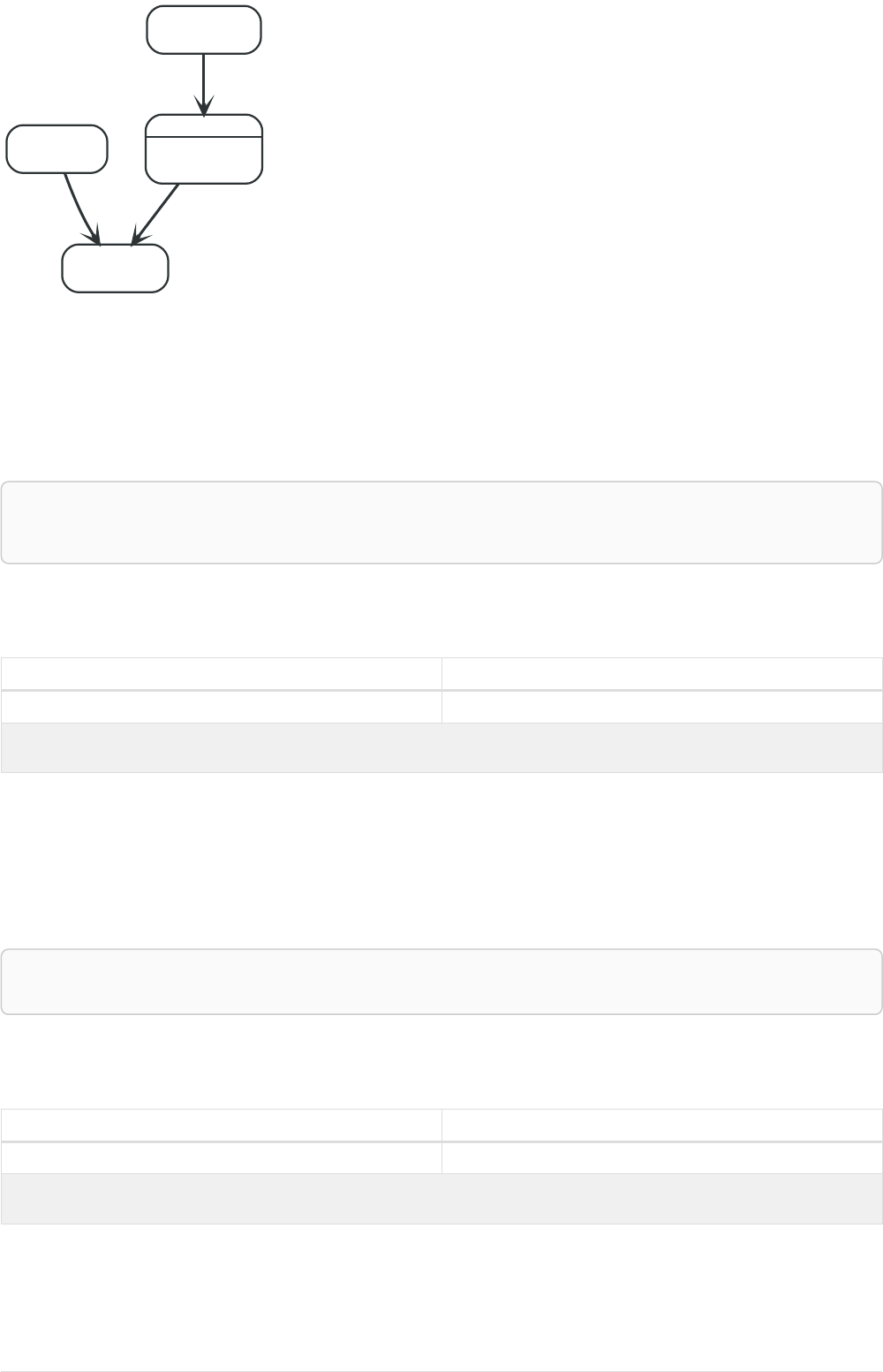
Swedish
name = 'Andres'
age = 36
hungry = true
name = 'Peter'
age = 34
KNOWS
name = 'Stefan'
KNOWS
name = 'Emil'
KNOWS
Figure 17. Graph
7.13.2. Set a property
To set a property on a node or relationship, use SET.
Query
MATCH (n { name: 'Andres' })
SET n.surname = 'Taylor'
RETURN n.name, n.surname
The newly changed node is returned by the query.
Table 132. Result
n.name n.surname
"Andres" "Taylor"
1 row
Properties set: 1
7.13.3. Remove a property
Normally you remove a property by using REMOVE, but it’s sometimes convenient to do it using the SET
command. One example is if the property comes from a parameter.
Query
MATCH (n { name: 'Andres' })
SET n.name = NULL RETURN n.name, n.age
The node is returned by the query, and the name property is now missing.
Table 133. Result
n.name n.age
<null> 36
1 row
Properties set: 1
7.13.4. Copying properties between nodes and relationships
You can also use SET to copy all properties from one graph element to another. Doing this will remove
115

all other properties on the receiving graph element.
Query
MATCH (at { name: 'Andres' }),(pn { name: 'Peter' })
SET at = pn
RETURN at.name, at.age, at.hungry, pn.name, pn.age
The 'Andres' node has had all its properties replaced by the properties in the 'Peter' node.
Table 134. Result
at.name at.age at.hungry pn.name pn.age
"Peter" 34 <null> "Peter" 34
1 row
Properties set: 3
7.13.5. Adding properties from maps
When setting properties from a map (literal, parameter, or graph element), you can use the += form of
SET to only add properties, and not remove any of the existing properties on the graph element.
Query
MATCH (p { name: 'Peter' })
SET p += { hungry: TRUE , position: 'Entrepreneur' }
Table 135. Result
(empty result)
0 rows
Properties set: 2
7.13.6. Set a property using a parameter
Use a parameter to give the value of a property.
Parameters
{
Ê "surname" : "Taylor"
}
Query
MATCH (n { name: 'Andres' })
SET n.surname = $surname
RETURN n.name, n.surname
The 'Andres' node has got a surname added.
Table 136. Result
n.name n.surname
"Andres" "Taylor"
1 row
Properties set: 1
116

7.13.7. Set all properties using a parameter
This will replace all existing properties on the node with the new set provided by the parameter.
Parameters
{
Ê "props" : {
Ê "name" : "Andres",
Ê "position" : "Developer"
Ê }
}
Query
MATCH (n { name: 'Andres' })
SET n = $props
RETURN n.name, n.position, n.age, n.hungry
The 'Andres' node has had all its properties replaced by the properties in the props parameter.
Table 137. Result
n.name n.position n.age n.hungry
"Andres" "Developer" <null> <null>
1 row
Properties set: 4
7.13.8. Set multiple properties using one SET clause
If you want to set multiple properties in one go, simply separate them with a comma.
Query
MATCH (n { name: 'Andres' })
SET n.position = 'Developer', n.surname = 'Taylor'
Table 138. Result
(empty result)
0 rows
Properties set: 2
7.13.9. Set a label on a node
To set a label on a node, use SET.
Query
MATCH (n { name: 'Stefan' })
SET n:German
RETURN n.name, labels(n) AS labels
The newly labeled node is returned by the query.
Table 139. Result
117

n.name labels
"Stefan" ["German"]
1 row
Labels added: 1
7.13.10. Set multiple labels on a node
To set multiple labels on a node, use SET and separate the different labels using :.
Query
MATCH (n { name: 'Emil' })
SET n:Swedish:Bossman
RETURN n.name, labels(n) AS labels
The newly labeled node is returned by the query.
Table 140. Result
n.name labels
"Emil" ["Swedish","Bossman"]
1 row
Labels added: 2
7.14. REMOVE
The REMOVE clause is used to remove properties and labels from graph elements.
•Introduction
•Remove a property
•Remove a label from a node
•Removing multiple labels
7.14.1. Introduction
For deleting nodes and relationships, see DELETE.
Removing labels from a node is an idempotent operation: if you try to remove a
label from a node that does not have that label on it, nothing happens. The query
statistics will tell you if something needed to be done or not.
The examples use the following database:
Swedish
name = 'Andres'
age = 36
Swedish, German
name = 'Peter'
age = 34
KNOWS
Swedish
name = 'Tobias'
age = 25
KNOWS
Figure 18. Graph
118

7.14.2. Remove a property
Neo4j doesn’t allow storing null in properties. Instead, if no value exists, the property is just not there.
So, REMOVE is used to remove a property value from a node or a relationship.
Query
MATCH (a { name: 'Andres' })
REMOVE a.age
RETURN a.name, a.age
The node is returned, and no property age exists on it.
Table 141. Result
a.name a.age
"Andres" <null>
1 row
Properties set: 1
7.14.3. Remove a label from a node
To remove labels, you use REMOVE.
Query
MATCH (n { name: 'Peter' })
REMOVE n:German
RETURN n.name, labels(n)
Table 142. Result
n.name labels(n)
"Peter" ["Swedish"]
1 row
Labels removed: 1
7.14.4. Removing multiple labels
To remove multiple labels, you use REMOVE.
Query
MATCH (n { name: 'Peter' })
REMOVE n:German:Swedish
RETURN n.name, labels(n)
Table 143. Result
n.name labels(n)
"Peter" []
1 row
Labels removed: 2
119
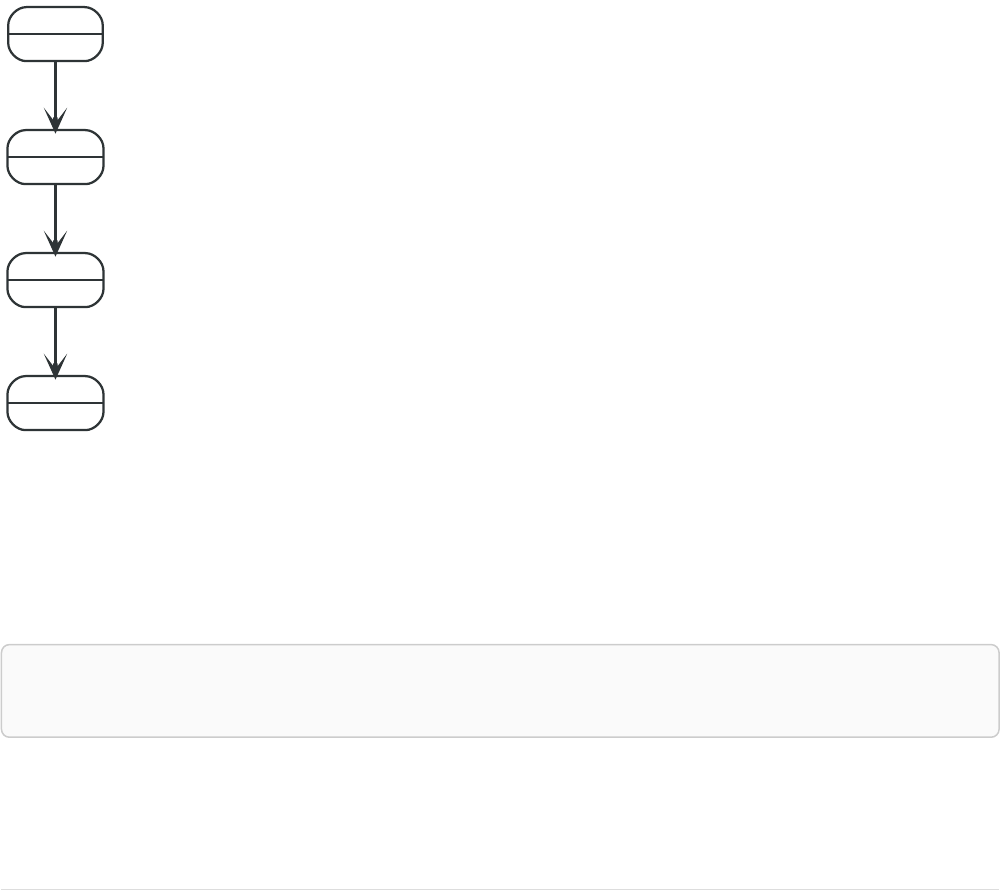
7.15. FOREACH
The FOREACH clause is used to update data within a list, whether components of a path, or
result of aggregation.
•Introduction
•Mark all nodes along a path
7.15.1. Introduction
Lists and paths are key concepts in Cypher. FOREACH can be used to update data, such as executing
update commands on elements in a path, or on a list created by aggregation.
The variable context within the FOREACH parenthesis is separate from the one outside it. This means
that if you CREATE a node variable within a FOREACH, you will not be able to use it outside of the foreach
statement, unless you match to find it.
Within the FOREACH parentheses, you can do any of the updating commands — CREATE, CREATE UNIQUE,
MERGE, DELETE, and FOREACH.
If you want to execute an additional MATCH for each element in a list then UNWIND (see UNWIND) would
be a more appropriate command.
Person
name = 'A'
Person
name = 'B'
KNOWS
Person
name = 'C'
KNOWS
Person
name = 'D'
KNOWS
Figure 19. Graph
7.15.2. Mark all nodes along a path
This query will set the property marked to true on all nodes along a path.
Query
MATCH p =(begin)-[*]->(END )
WHERE begin.name = 'A' AND END .name = 'D'
FOREACH (n IN nodes(p)| SET n.marked = TRUE )
Nothing is returned from this query, but four properties are set.
Table 144. Result
120

(empty result)
0 rows
Properties set: 4
7.16. MERGE
The MERGE clause ensures that a pattern exists in the graph. Either the pattern already exists,
or it needs to be created.
•Introduction
•Merge nodes
•Merge single node with a label
•Merge single node with properties
•Merge single node specifying both label and property
•Merge single node derived from an existing node property
•Use ON CREATE and ON MATCH
•Merge with ON CREATE
•Merge with ON MATCH
•Merge with ON CREATE and ON MATCH
•Merge with ON MATCH setting multiple properties
•Merge relationships
•Merge on a relationship
•Merge on multiple relationships
•Merge on an undirected relationship
•Merge on a relationship between two existing nodes
•Merge on a relationship between an existing node and a merged node derived from a node
property
•Using unique constraints with MERGE
•Merge using unique constraints creates a new node if no node is found
•Merge using unique constraints matches an existing node
•Merge with unique constraints and partial matches
•Merge with unique constraints and conflicting matches
•Using map parameters with MERGE
7.16.1. Introduction
MERGE either matches existing nodes and binds them, or it creates new data and binds that. It’s like a
combination of MATCH and CREATE that additionally allows you to specify what happens if the data was
matched or created.
For example, you can specify that the graph must contain a node for a user with a certain name. If
there isn’t a node with the correct name, a new node will be created and its name property set.
121
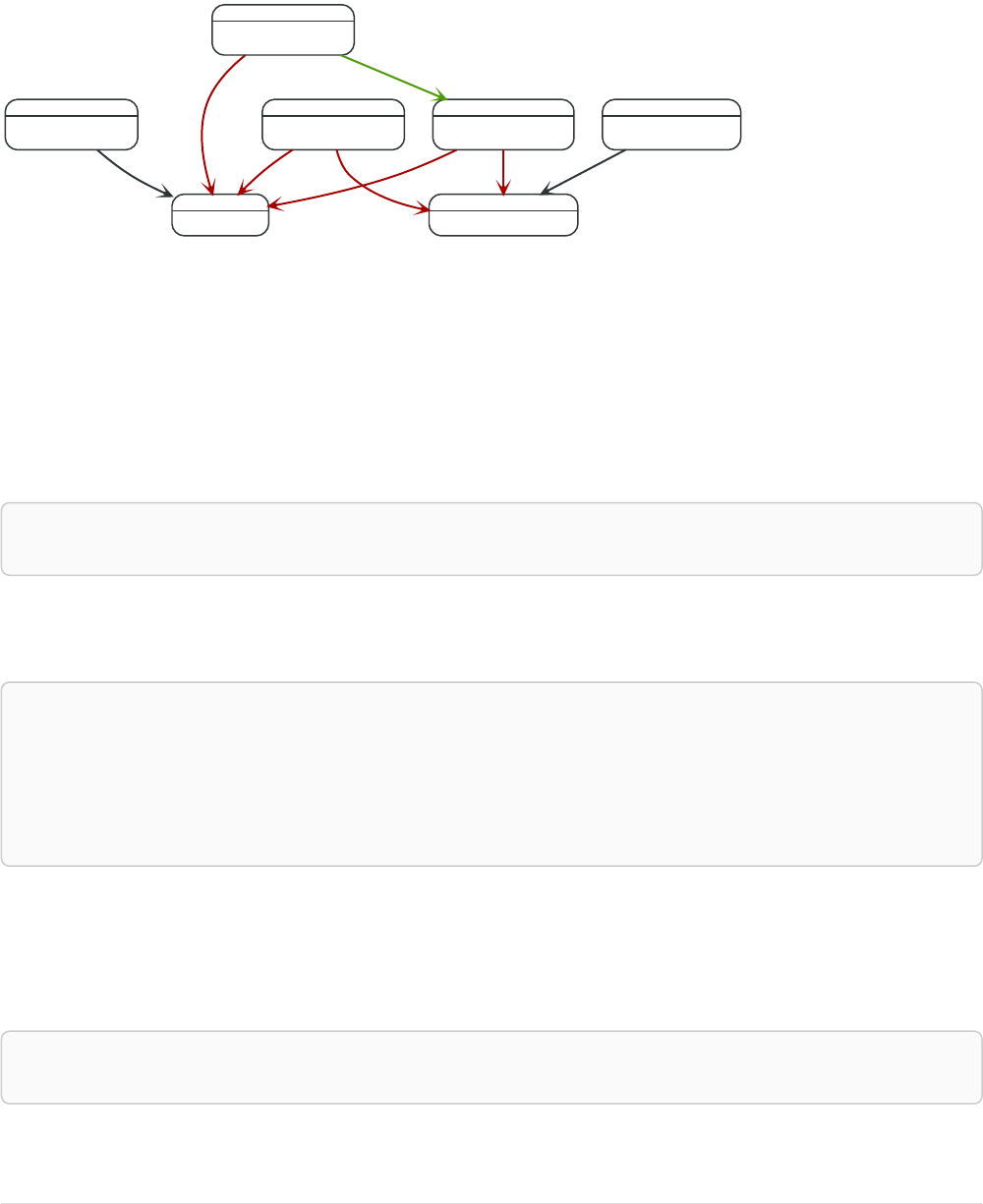
When using MERGE on full patterns, the behavior is that either the whole pattern matches, or the whole
pattern is created. MERGE will not partially use existing patterns — it’s all or nothing. If partial matches
are needed, this can be accomplished by splitting a pattern up into multiple MERGE clauses.
As with MATCH, MERGE can match multiple occurrences of a pattern. If there are multiple matches, they
will all be passed on to later stages of the query.
The last part of MERGE is the ON CREATE and ON MATCH. These allow a query to express additional changes
to the properties of a node or relationship, depending on if the element was MATCH -ed in the database
or if it was CREATE -ed.
The following graph is used for the examples below:
Movie
name = 'WallStreet'
title = 'Wall Street'
Person
chauffeurName = 'Ted Green'
name = 'Rob Reiner'
bornIn = 'New York'
Movie
title = 'The American President'
name = 'TheAmericanPresident'
DIRECTED
Person
chauffeurName = 'Bill White'
name = 'Oliver Stone'
bornIn = 'New York'
DIRECTED
Person
chauffeurName = 'John Brown'
name = 'Charlie Sheen'
bornIn = 'New York'
ACTED_IN
Person
chauffeurName = 'Bob Brown'
name = 'Martin Sheen'
bornIn = 'Ohio'
FATHER
ACTED_IN ACTED_IN
Person
bornIn = 'New Jersey'
chauffeurName = 'John Brown'
name = 'Michael Douglas'
ACTED_IN ACTED_IN
Figure 20. Graph
7.16.2. Merge nodes
Merge single node with a label
Merging a single node with the given label.
Query
MERGE (robert:Critic)
RETURN robert, labels(robert)
A new node is created because there are no nodes labeled Critic in the database.
Result
+----------------------------+
| robert | labels(robert) |
+----------------------------+
| Node[7]{} | ["Critic"] |
+----------------------------+
1 row
Nodes created: 1
Labels added: 1
Merge single node with properties
Merging a single node with properties where not all properties match any existing node.
Query
MERGE (charlie { name: 'Charlie Sheen', age: 10 })
RETURN charlie
A new node with the name 'Charlie Sheen' will be created since not all properties matched the
122

existing 'Charlie Sheen' node.
Result
+--------------------------------------+
| charlie |
+--------------------------------------+
| Node[7]{name:"Charlie Sheen",age:10} |
+--------------------------------------+
1 row
Nodes created: 1
Properties set: 2
Merge single node specifying both label and property
Merging a single node with both label and property matching an existing node.
Query
MERGE (michael:Person { name: 'Michael Douglas' })
RETURN michael.name, michael.bornIn
'Michael Douglas' will be matched and the name and bornIn properties returned.
Result
+------------------------------------+
| michael.name | michael.bornIn |
+------------------------------------+
| "Michael Douglas" | "New Jersey" |
+------------------------------------+
1 row
Merge single node derived from an existing node property
For some property 'p' in each bound node in a set of nodes, a single new node is created for each
unique value for 'p'.
Query
MATCH (person:Person)
MERGE (city:City { name: person.bornIn })
RETURN person.name, person.bornIn, city
Three nodes labeled City are created, each of which contains a name property with the value of 'New
York', 'Ohio', and 'New Jersey', respectively. Note that even though the MATCH clause results in three
bound nodes having the value 'New York' for the bornIn property, only a single 'New York' node (i.e. a
City node with a name of 'New York') is created. As the 'New York' node is not matched for the first
bound node, it is created. However, the newly-created 'New York' node is matched and bound for the
second and third bound nodes.
123

Result
+----------------------------------------------------------------+
| person.name | person.bornIn | city |
+----------------------------------------------------------------+
| "Rob Reiner" | "New York" | Node[7]{name:"New York"} |
| "Oliver Stone" | "New York" | Node[7]{name:"New York"} |
| "Charlie Sheen" | "New York" | Node[7]{name:"New York"} |
| "Michael Douglas" | "New Jersey" | Node[8]{name:"New Jersey"} |
| "Martin Sheen" | "Ohio" | Node[9]{name:"Ohio"} |
+----------------------------------------------------------------+
5 rows
Nodes created: 3
Properties set: 3
Labels added: 3
7.16.3. Use ON CREATE and ON MATCH
Merge with ON CREATE
Merge a node and set properties if the node needs to be created.
Query
MERGE (keanu:Person { name: 'Keanu Reeves' })
ON CREATE SET keanu.created = timestamp()
RETURN keanu.name, keanu.created
The query creates the 'keanu' node and sets a timestamp on creation time.
Result
+--------------------------------+
| keanu.name | keanu.created |
+--------------------------------+
| "Keanu Reeves" | 1524754318955 |
+--------------------------------+
1 row
Nodes created: 1
Properties set: 2
Labels added: 1
Merge with ON MATCH
Merging nodes and setting properties on found nodes.
Query
MERGE (person:Person)
ON MATCH SET person.found = TRUE RETURN person.name, person.found
The query finds all the Person nodes, sets a property on them, and returns them.
124

Result
+----------------------------------+
| person.name | person.found |
+----------------------------------+
| "Rob Reiner" | true |
| "Oliver Stone" | true |
| "Charlie Sheen" | true |
| "Michael Douglas" | true |
| "Martin Sheen" | true |
+----------------------------------+
5 rows
Properties set: 5
Merge with ON CREATE and ON MATCH
Merge a node and set properties if the node needs to be created.
Query
MERGE (keanu:Person { name: 'Keanu Reeves' })
ON CREATE SET keanu.created = timestamp()
ON MATCH SET keanu.lastSeen = timestamp()
RETURN keanu.name, keanu.created, keanu.lastSeen
The query creates the 'keanu' node, and sets a timestamp on creation time. If 'keanu' had already
existed, a different property would have been set.
Result
+-------------------------------------------------+
| keanu.name | keanu.created | keanu.lastSeen |
+-------------------------------------------------+
| "Keanu Reeves" | 1524754323263 | <null> |
+-------------------------------------------------+
1 row
Nodes created: 1
Properties set: 2
Labels added: 1
Merge with ON MATCH setting multiple properties
If multiple properties should be set, simply separate them with commas.
Query
MERGE (person:Person)
ON MATCH SET person.found = TRUE , person.lastAccessed = timestamp()
RETURN person.name, person.found, person.lastAccessed
Result
+--------------------------------------------------------+
| person.name | person.found | person.lastAccessed |
+--------------------------------------------------------+
| "Rob Reiner" | true | 1524754321405 |
| "Oliver Stone" | true | 1524754321405 |
| "Charlie Sheen" | true | 1524754321405 |
| "Michael Douglas" | true | 1524754321405 |
| "Martin Sheen" | true | 1524754321405 |
+--------------------------------------------------------+
5 rows
Properties set: 10
125

7.16.4. Merge relationships
Merge on a relationship
MERGE can be used to match or create a relationship.
Query
MATCH (charlie:Person { name: 'Charlie Sheen' }),(wallStreet:Movie { title: 'Wall Street' })
MERGE (charlie)-[r:ACTED_IN]->(wallStreet)
RETURN charlie.name, type(r), wallStreet.title
'Charlie Sheen' had already been marked as acting in 'Wall Street', so the existing relationship is
found and returned. Note that in order to match or create a relationship when using MERGE, at least
one bound node must be specified, which is done via the MATCH clause in the above example.
Result
+-------------------------------------------------+
| charlie.name | type(r) | wallStreet.title |
+-------------------------------------------------+
| "Charlie Sheen" | "ACTED_IN" | "Wall Street" |
+-------------------------------------------------+
1 row
Merge on multiple relationships
When MERGE is used on a whole pattern, either everything matches, or everything is created.
Query
MATCH (oliver:Person { name: 'Oliver Stone' }),(reiner:Person { name: 'Rob Reiner' })
MERGE (oliver)-[:DIRECTED]->(movie:Movie)<-[:ACTED_IN]-(reiner)
RETURN movie
In our example graph, 'Oliver Stone' and 'Rob Reiner' have never worked together. When we try to
MERGE a movie between them, Neo4j will not use any of the existing movies already connected to
either person. Instead, a new 'movie' node is created.
Result
+-----------+
| movie |
+-----------+
| Node[7]{} |
+-----------+
1 row
Nodes created: 1
Relationships created: 2
Labels added: 1
Merge on an undirected relationship
MERGE can also be used with an undirected relationship. When it needs to create a new one, it will pick
a direction.
126

Query
MATCH (charlie:Person { name: 'Charlie Sheen' }),(oliver:Person { name: 'Oliver Stone' })
MERGE (charlie)-[r:KNOWS]-(oliver)
RETURN r
As 'Charlie Sheen' and 'Oliver Stone' do not know each other, this MERGE query will create a KNOWS
relationship between them. The direction of the created relationship is arbitrary.
Result
+-------------+
| r |
+-------------+
| :KNOWS[8]{} |
+-------------+
1 row
Relationships created: 1
Merge on a relationship between two existing nodes
MERGE can be used in conjunction with preceding MATCH and MERGE clauses to create a relationship
between two bound nodes 'm' and 'n', where 'm' is returned by MATCH and 'n' is created or matched by
the earlier MERGE.
Query
MATCH (person:Person)
MERGE (city:City { name: person.bornIn })
MERGE (person)-[r:BORN_IN]->(city)
RETURN person.name, person.bornIn, city
This builds on the example from Merge single node derived from an existing node property. The
second MERGE creates a BORN_IN relationship between each person and a city corresponding to the
value of the person’s bornIn property. 'Charlie Sheen', 'Rob Reiner' and 'Oliver Stone' all have a
BORN_IN relationship to the 'same' City node ('New York').
Result
+----------------------------------------------------------------+
| person.name | person.bornIn | city |
+----------------------------------------------------------------+
| "Rob Reiner" | "New York" | Node[7]{name:"New York"} |
| "Oliver Stone" | "New York" | Node[7]{name:"New York"} |
| "Charlie Sheen" | "New York" | Node[7]{name:"New York"} |
| "Michael Douglas" | "New Jersey" | Node[8]{name:"New Jersey"} |
| "Martin Sheen" | "Ohio" | Node[9]{name:"Ohio"} |
+----------------------------------------------------------------+
5 rows
Nodes created: 3
Relationships created: 5
Properties set: 3
Labels added: 3
Merge on a relationship between an existing node and a merged node derived
from a node property
MERGE can be used to simultaneously create both a new node 'n' and a relationship between a bound
node 'm' and 'n'.
127

Query
MATCH (person:Person)
MERGE (person)-[r:HAS_CHAUFFEUR]->(chauffeur:Chauffeur { name: person.chauffeurName })
RETURN person.name, person.chauffeurName, chauffeur
As MERGE found no matches — in our example graph, there are no nodes labeled with Chauffeur and
no HAS_CHAUFFEUR relationships — MERGE creates five nodes labeled with Chauffeur, each of which
contains a name property whose value corresponds to each matched Person node’s chauffeurName
property value. MERGE also creates a HAS_CHAUFFEUR relationship between each Person node and the
newly-created corresponding Chauffeur node. As 'Charlie Sheen' and 'Michael Douglas' both have a
chauffeur with the same name — 'John Brown' — a new node is created in each case, resulting in 'two'
Chauffeur nodes having a name of 'John Brown', correctly denoting the fact that even though the name
property may be identical, these are two separate people. This is in contrast to the example shown
above in Merge on a relationship between two existing nodes, where we used the first MERGE to bind
the City nodes to prevent them from being recreated (and thus duplicated) in the second MERGE.
Result
+------------------------------------------------------------------------+
| person.name | person.chauffeurName | chauffeur |
+------------------------------------------------------------------------+
| "Rob Reiner" | "Ted Green" | Node[7]{name:"Ted Green"} |
| "Oliver Stone" | "Bill White" | Node[8]{name:"Bill White"} |
| "Charlie Sheen" | "John Brown" | Node[9]{name:"John Brown"} |
| "Michael Douglas" | "John Brown" | Node[10]{name:"John Brown"} |
| "Martin Sheen" | "Bob Brown" | Node[11]{name:"Bob Brown"} |
+------------------------------------------------------------------------+
5 rows
Nodes created: 5
Relationships created: 5
Properties set: 5
Labels added: 5
7.16.5. Using unique constraints with MERGE
Cypher prevents getting conflicting results from MERGE when using patterns that involve unique
constraints. In this case, there must be at most one node that matches that pattern.
For example, given two unique constraints on :Person(id) and :Person(ssn), a query such as MERGE
(n:Person {id: 12, ssn: 437}) will fail, if there are two different nodes (one with id 12 and one with
ssn 437) or if there is only one node with only one of the properties. In other words, there must be
exactly one node that matches the pattern, or no matching nodes.
Note that the following examples assume the existence of unique constraints that have been created
using:
CREATE CONSTRAINT ON (n:Person) ASSERT n.name IS UNIQUE;
CREATE CONSTRAINT ON (n:Person) ASSERT n.role IS UNIQUE;
Merge using unique constraints creates a new node if no node is found
Merge using unique constraints creates a new node if no node is found.
Query
MERGE (laurence:Person { name: 'Laurence Fishburne' })
RETURN laurence.name
The query creates the 'laurence' node. If 'laurence' had already existed, MERGE would just match the
128

existing node.
Result
+----------------------+
| laurence.name |
+----------------------+
| "Laurence Fishburne" |
+----------------------+
1 row
Nodes created: 1
Properties set: 1
Labels added: 1
Merge using unique constraints matches an existing node
Merge using unique constraints matches an existing node.
Query
MERGE (oliver:Person { name: 'Oliver Stone' })
RETURN oliver.name, oliver.bornIn
The 'oliver' node already exists, so MERGE just matches it.
Result
+--------------------------------+
| oliver.name | oliver.bornIn |
+--------------------------------+
| "Oliver Stone" | "New York" |
+--------------------------------+
1 row
Merge with unique constraints and partial matches
Merge using unique constraints fails when finding partial matches.
Query
MERGE (michael:Person { name: 'Michael Douglas', role: 'Gordon Gekko' })
RETURN michael
While there is a matching unique 'michael' node with the name 'Michael Douglas', there is no unique
node with the role of 'Gordon Gekko' and MERGE fails to match.
Error message
Merge did not find a matching node michael and can not create a new node due to
conflicts with existing unique nodes
Merge with unique constraints and conflicting matches
Merge using unique constraints fails when finding conflicting matches.
Query
MERGE (oliver:Person { name: 'Oliver Stone', role: 'Gordon Gekko' })
RETURN oliver
129

While there is a matching unique 'oliver' node with the name 'Oliver Stone', there is also another
unique node with the role of 'Gordon Gekko' and MERGE fails to match.
Error message
Merge did not find a matching node oliver and can not create a new node due to
conflicts with existing unique nodes
7.16.6. Using map parameters with MERGE
MERGE does not support map parameters the same way CREATE does. To use map parameters with
MERGE, it is necessary to explicitly use the expected properties, such as in the following example. For
more information on parameters, see Parameters.
Parameters
{
Ê "param" : {
Ê "name" : "Keanu Reeves",
Ê "role" : "Neo"
Ê }
}
Query
MERGE (person:Person { name: $param.name, role: $param.role })
RETURN person.name, person.role
Result
+------------------------------+
| person.name | person.role |
+------------------------------+
| "Keanu Reeves" | "Neo" |
+------------------------------+
1 row
Nodes created: 1
Properties set: 2
Labels added: 1
7.17. CALL[…YIELD]
The CALL clause is used to call a procedure deployed in the database.
•Introduction
•Call a procedure using CALL
•View the signature for a procedure
•Call a procedure using a quoted namespace and name
•Call a procedure with literal arguments
•Call a procedure with parameter arguments
•Call a procedure with mixed literal and parameter arguments
•Call a procedure with literal and default arguments
•Call a procedure within a complex query using CALL…YIELD
•Call a procedure and filter its results
130

•Call a procedure within a complex query and rename its outputs
7.17.1. Introduction
Procedures are called using the CALL clause.
Each procedure call needs to specify all required procedure arguments. This may be done either
explicitly, by using a comma-separated list wrapped in parentheses after the procedure name, or
implicitly by using available query parameters as procedure call arguments. The latter form is
available only in a so-called standalone procedure call, when the whole query consists of a single CALL
clause.
Most procedures return a stream of records with a fixed set of result fields, similar to how running a
Cypher query returns a stream of records. The YIELD sub-clause is used to explicitly select which of the
available result fields are returned as newly-bound variables from the procedure call to the user or for
further processing by the remaining query. Thus, in order to be able to use YIELD, the names (and
types) of the output parameters need be known in advance. Each yielded result field may optionally
be renamed using aliasing (i.e. resultFieldName AS newName). All new variables bound by a procedure
call are added to the set of variables already bound in the current scope. It is an error if a procedure
call tries to rebind a previously bound variable (i.e. a procedure call cannot shadow a variable that was
previously bound in the current scope).
This section explains how to determine a procedure’s input parameters (needed for CALL) and output
parameters (needed for YIELD).
Inside a larger query, the records returned from a procedure call with an explicit YIELD may be further
filtered using a WHERE sub-clause followed by a predicate (similar to WITH … WHERE …).
If the called procedure declares at least one result field, YIELD may generally not be omitted. However
YIELD may always be omitted in a standalone procedure call. In this case, all result fields are yielded as
newly-bound variables from the procedure call to the user.
Neo4j supports the notion of VOID procedures. A VOID procedure is a procedure that does not declare
any result fields and returns no result records and that has explicitly been declared as VOID. Calling a
VOID procedure may only have a side effect and thus does neither allow nor require the use of YIELD.
Calling a VOID procedure in the middle of a larger query will simply pass on each input record (i.e. it
acts like WITH * in terms of the record stream).
Neo4j comes with a number of built-in procedures. For a list of these, see
Operations Manual → Built-in procedures.
Users can also develop custom procedures and deploy to the database. See
Procedures for details.
The following examples show how to pass arguments to and yield result fields from a procedure call.
All examples use the following procedure:
131

public class IndexingProcedure
{
Ê @Context
Ê public GraphDatabaseService db;
Ê /**
Ê * Adds a node to a named explicit index. Useful to, for instance, update
Ê * a full-text index through cypher.
Ê * @param indexName the name of the index in question
Ê * @param nodeId id of the node to add to the index
Ê * @param propKey property to index (value is read from the node)
Ê */
Ê @Procedure(mode = Mode.WRITE)
Ê public void addNodeToIndex( @Name("indexName") String indexName,
Ê @Name("node") long nodeId,
Ê @Name( value = "propKey", defaultValue = "name" ) String propKey )
Ê {
Ê Node node = db.getNodeById( nodeId );
Ê db.index()
Ê .forNodes( indexName )
Ê .add( node, propKey, node.getProperty( propKey ) );
Ê }
}
7.17.2. Call a procedure using CALL
This calls the built-in procedure db.labels, which lists all labels used in the database.
Query
CALL db.labels
Result
+-----------------+
| label |
+-----------------+
| "User" |
| "Administrator" |
+-----------------+
2 rows
7.17.3. View the signature for a procedure
To CALL a procedure, its input parameters need to be known, and to use YIELD, its output parameters
need to be known. The built-in procedure dbms.procedures returns the name, signature and
description for all procedures. The following query can be used to return the signature for a particular
procedure:
Query
CALL dbms.procedures() YIELD name, signature
WHERE name='dbms.listConfig'
RETURN signature
We can see that the dbms.listConfig has one input parameter, searchString, and three output
parameters, name, description and value.
132

Result
+---------------------------------------------------------------------------------------------------------
-----+
| signature
|
+---------------------------------------------------------------------------------------------------------
-----+
| "dbms.listConfig(searchString = :: STRING?) :: (name :: STRING?, description :: STRING?, value ::
STRING?)" |
+---------------------------------------------------------------------------------------------------------
-----+
1 row
7.17.4. Call a procedure using a quoted namespace and name
This calls the built-in procedure db.labels, which lists all labels used in the database.
Query
CALL `db`.`labels`
Result
+-----------------+
| label |
+-----------------+
| "User" |
| "Administrator" |
+-----------------+
2 rows
7.17.5. Call a procedure with literal arguments
This calls the example procedure org.neo4j.procedure.example.addNodeToIndex using literal
arguments, i.e. arguments that are written out directly in the statement text.
Query
CALL org.neo4j.procedure.example.addNodeToIndex('users', 0, 'name')
Since our example procedure does not return any result, the result is empty.
Result
+--------------------------------------------+
| No data returned, and nothing was changed. |
+--------------------------------------------+
7.17.6. Call a procedure with parameter arguments
This calls the example procedure org.neo4j.procedure.example.addNodeToIndex using parameters as
arguments. Each procedure argument is taken to be the value of a corresponding statement
parameters with the same name (or null if no such parameter has been given).
133

Parameters
{
Ê "indexName" : "users",
Ê "node" : 0,
Ê "propKey" : "name"
}
Query
CALL org.neo4j.procedure.example.addNodeToIndex
Since our example procedure does not return any result, the result is empty.
Result
+--------------------------------------------+
| No data returned, and nothing was changed. |
+--------------------------------------------+
7.17.7. Call a procedure with mixed literal and parameter arguments
This calls the example procedure org.neo4j.procedure.example.addNodeToIndex using both literal and
parameter arguments.
Parameters
{
Ê "node" : 0
}
Query
CALL org.neo4j.procedure.example.addNodeToIndex('users', $node, 'name')
Since our example procedure does not return any result, the result is empty.
Result
+--------------------------------------------+
| No data returned, and nothing was changed. |
+--------------------------------------------+
7.17.8. Call a procedure with literal and default arguments
This calls the example procedure org.neo4j.procedure.example.addNodeToIndex using literal
arguments, i.e. arguments that are written out directly in the statement text, and a trailing default
argument that is provided by the procedure itself.
Query
CALL org.neo4j.procedure.example.addNodeToIndex('users', 0)
Since our example procedure does not return any result, the result is empty.
134

Result
+--------------------------------------------+
| No data returned, and nothing was changed. |
+--------------------------------------------+
7.17.9. Call a procedure within a complex query using CALL YIELD
This calls the built-in procedure db.labels to count all labels used in the database.
Query
CALL db.labels() YIELD label
RETURN count(label) AS numLabels
Since the procedure call is part of a larger query, all outputs must be named explicitly.
Result
+-----------+
| numLabels |
+-----------+
| 2 |
+-----------+
1 row
7.17.10. Call a procedure and filter its results
This calls the built-in procedure db.labels to count all in-use labels in the database that contain the
word 'User'
Query
CALL db.labels() YIELD label
WHERE label CONTAINS 'User'
RETURN count(label) AS numLabels
Since the procedure call is part of a larger query, all outputs must be named explicitly.
Result
+-----------+
| numLabels |
+-----------+
| 1 |
+-----------+
1 row
7.17.11. Call a procedure within a complex query and rename its
outputs
This calls the built-in procedure db.propertyKeys as part of counting the number of nodes per
property key that is currently used in the database.
Query
CALL db.propertyKeys() YIELD propertyKey AS prop
MATCH (n)
WHERE n[prop] IS NOT NULL RETURN prop, count(n) AS numNodes
135

Since the procedure call is part of a larger query, all outputs must be named explicitly.
Result
+-------------------+
| prop | numNodes |
+-------------------+
| "name" | 1 |
+-------------------+
1 row
7.18. CREATE UNIQUE
The CREATE UNIQUE clause is a mix of MATCH and CREATE — it will match what it can, and
create what is missing.
The CREATE UNIQUE clause was removed in Cypher 3.2. Using the CREATE UNIQUE
clause will cause the query to fall back to using Cypher 3.1. Use MERGE instead of
CREATE UNIQUE; refer to the Introduction for an example of how to achieve the same
level of node and relationship uniqueness.
•Introduction
•Create unique nodes
•Create node if missing
•Create nodes with values
•Create labeled node if missing
•Create unique relationships
•Create relationship if it is missing
•Create relationship with values
•Describe complex pattern
7.18.1. Introduction
CREATE UNIQUE is in the middle of MATCH and CREATE — it will match what it can, and create what is
missing.
We show in the following example how to express using MERGE the same level of uniqueness
guaranteed by CREATE UNIQUE for nodes and relationships.
Assume the original set of queries is given by:
MERGE (p:Person {name: 'Joe'})
RETURN p
MATCH (a:Person {name: 'Joe'})
CREATE UNIQUE (a)-[r:LIKES]->(b:Person {name: 'Jill'})-[r1:EATS]->(f:Food {name: 'Margarita Pizza'})
RETURN a
MATCH (a:Person {name: 'Joe'})
CREATE UNIQUE (a)-[r:LIKES]->(b:Person {name: 'Jill'})-[r1:EATS]->(f:Food {name: 'Banana'})
RETURN a
This will create two :Person nodes, a :LIKES relationship between them, and two :EATS relationships
136
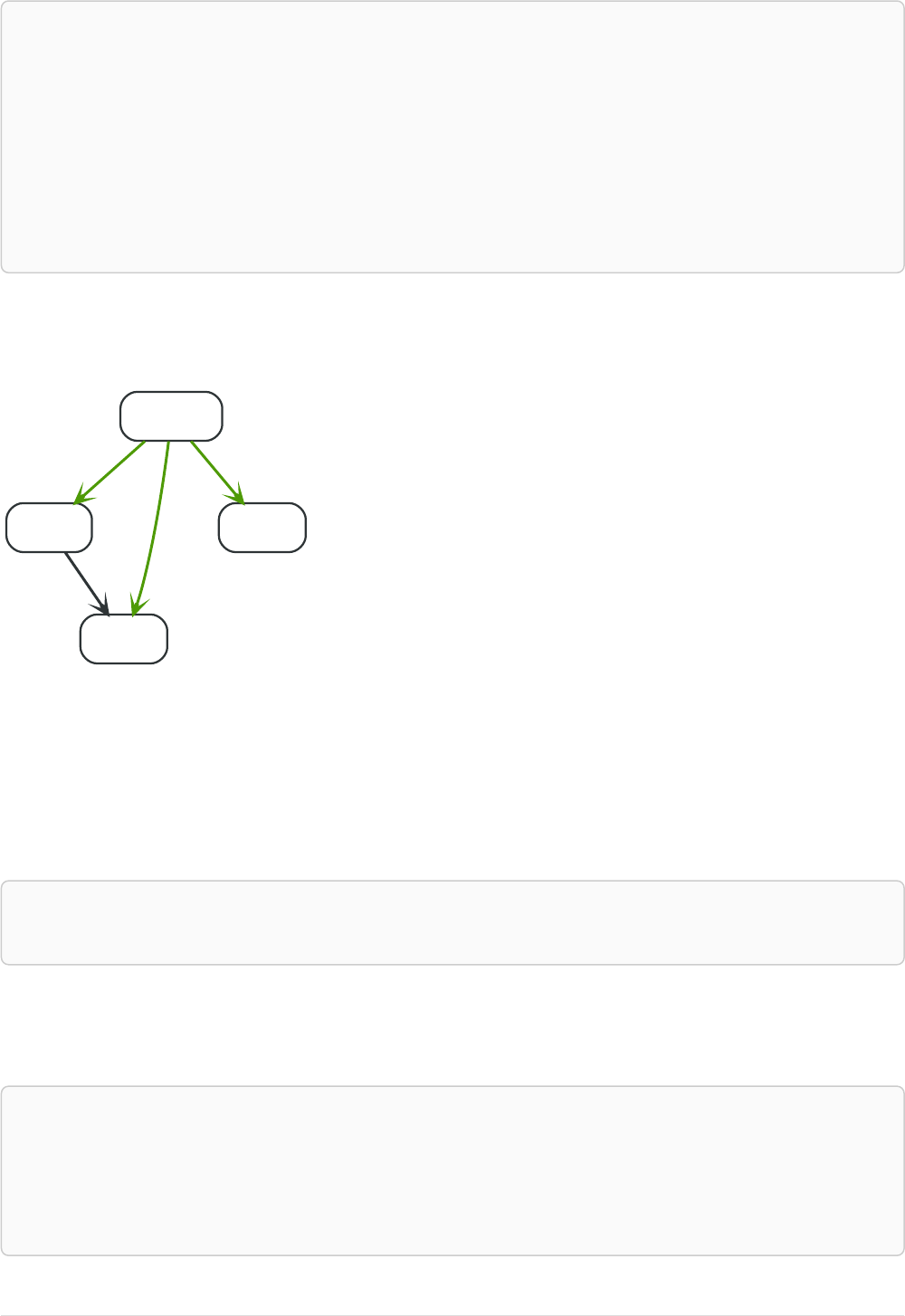
from one of the :Person nodes to two :Food nodes. No node or relationship is duplicated.
The following set of queries — using MERGE — will achieve the same result:
MERGE (p:Person {name: 'Joe'})
RETURN p
MATCH (a:Person {name: 'Joe'})
MERGE (b:Person {name: 'Jill'})
MERGE (a)-[r:LIKES]->(b)
MERGE (b)-[r1:EATS]->(f:Food {name: 'Margarita Pizza'})
RETURN a
MATCH (a:Person {name: 'Joe'})
MERGE (b:Person {name: 'Jill'})
MERGE (a)-[r:LIKES]->(b)
MERGE (b)-[r1:EATS]->(f:Food {name: 'Banana'})
RETURN a
We note that all these queries can also be combined into a single, larger query.
The CREATE UNIQUE examples below use the following graph:
name = 'A'
name = 'C'
KNOWS
name = 'B'
name = 'root'
X
X
X
7.18.2. Create unique nodes
Create node if missing
If the pattern described needs a node, and it can’t be matched, a new node will be created.
Query
MATCH (root { name: 'root' })
CREATE UNIQUE (root)-[:LOVES]-(someone)
RETURN someone
The root node doesn’t have any LOVES relationships, and so a node is created, and also a relationship
to that node.
Result
+------------+
| someone |
+------------+
| Node[20]{} |
+------------+
1 row
Nodes created: 1
Relationships created: 1
137

Create nodes with values
The pattern described can also contain values on the node. These are given using the following
syntax: prop: <expression>.
Query
MATCH (root { name: 'root' })
CREATE UNIQUE (root)-[:X]-(leaf { name: 'D' })
RETURN leaf
No node connected with the root node has the name D, and so a new node is created to match the
pattern.
Result
+--------------------+
| leaf |
+--------------------+
| Node[20]{name:"D"} |
+--------------------+
1 row
Nodes created: 1
Relationships created: 1
Properties set: 1
Create labeled node if missing
If the pattern described needs a labeled node and there is none with the given labels, Cypher will
create a new one.
Query
MATCH (a { name: 'A' })
CREATE UNIQUE (a)-[:KNOWS]-(c:blue)
RETURN c
The 'A' node is connected in a KNOWS relationship to the 'c' node, but since 'C' doesn’t have the blue
label, a new node labeled as blue is created along with a KNOWS relationship from 'A' to it.
Result
+------------+
| c |
+------------+
| Node[20]{} |
+------------+
1 row
Nodes created: 1
Relationships created: 1
Labels added: 1
7.18.3. Create unique relationships
Create relationship if it is missing
CREATE UNIQUE is used to describe the pattern that should be found or created.
138

Query
MATCH (lft { name: 'A' }),(rgt)
WHERE rgt.name IN ['B', 'C']
CREATE UNIQUE (lft)-[r:KNOWS]->(rgt)
RETURN r
The left node is matched agains the two right nodes. One relationship already exists and can be
matched, and the other relationship is created before it is returned.
Result
+--------------+
| r |
+--------------+
| :KNOWS[20]{} |
| :KNOWS[3]{} |
+--------------+
2 rows
Relationships created: 1
Create relationship with values
Relationships to be created can also be matched on values.
Query
MATCH (root { name: 'root' })
CREATE UNIQUE (root)-[r:X { since: 'forever' }]-()
RETURN r
In this example, we want the relationship to have a value, and since no such relationship can be
found, a new node and relationship are created. Note that since we are not interested in the created
node, we don’t name it.
Result
+-------------------------+
| r |
+-------------------------+
| :X[20]{since:"forever"} |
+-------------------------+
1 row
Nodes created: 1
Relationships created: 1
Properties set: 1
7.18.4. Describe complex pattern
The pattern described by CREATE UNIQUE can be separated by commas, just like in MATCH and CREATE.
Query
MATCH (root { name: 'root' })
CREATE UNIQUE (root)-[:FOO]->(x),(root)-[:BAR]->(x)
RETURN x
This example pattern uses two paths, separated by a comma.
139
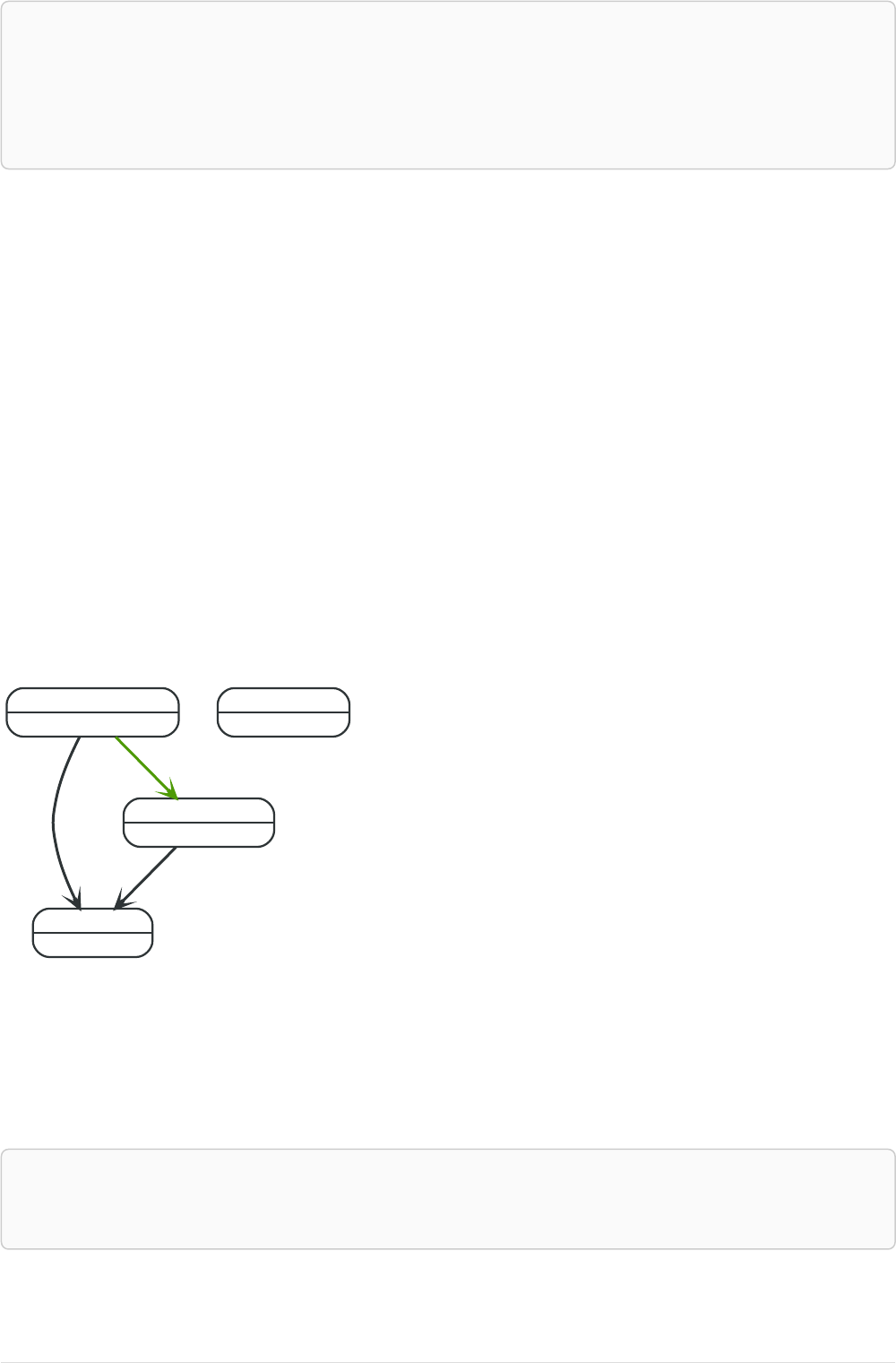
Result
+------------+
| x |
+------------+
| Node[20]{} |
+------------+
1 row
Nodes created: 1
Relationships created: 2
7.19. UNION
The UNION clause is used to combine the result of multiple queries.
•Introduction
•Combine two queries and retain duplicates
•Combine two queries and remove duplicates
7.19.1. Introduction
UNION combines the results of two or more queries into a single result set that includes all the rows
that belong to all queries in the union.
The number and the names of the columns must be identical in all queries combined by using UNION.
To keep all the result rows, use UNION ALL. Using just UNION will combine and remove duplicates from
the result set.
Actor
name = 'Anthony Hopkins'
Movie
title = 'Hitchcock'
ACTS_IN Actor
name = 'Helen Mirren'
KNOWS
ACTS_IN
Actor
name = 'Hitchcock'
Figure 21. Graph
7.19.2. Combine two queries and retain duplicates
Combining the results from two queries is done using UNION ALL.
Query
MATCH (n:Actor)
RETURN n.name AS name
UNION ALL MATCH (n:Movie)
RETURN n.title AS name
The combined result is returned, including duplicates.
140

Table 145. Result
name
"Anthony Hopkins"
"Helen Mirren"
"Hitchcock"
"Hitchcock"
4 rows
7.19.3. Combine two queries and remove duplicates
By not including ALL in the UNION, duplicates are removed from the combined result set
Query
MATCH (n:Actor)
RETURN n.name AS name
UNION
MATCH (n:Movie)
RETURN n.title AS name
The combined result is returned, without duplicates.
Table 146. Result
name
"Anthony Hopkins"
"Helen Mirren"
"Hitchcock"
3 rows
7.20. LOAD CSV
LOAD CSV is used to import data from CSV files.
•Introduction
•CSV file format
•Import data from a CSV file
•Import data from a CSV file containing headers
•Import data from a CSV file with a custom field delimiter
•Importing large amounts of data
•Setting the rate of periodic commits
•Import data containing escaped characters
7.20.1. Introduction
•The URL of the CSV file is specified by using FROM followed by an arbitrary expression evaluating to
the URL in question.
•It is required to specify a variable for the CSV data using AS.
141

•LOAD CSV supports resources compressed with gzip, Deflate, as well as ZIP archives.
•CSV files can be stored on the database server and are then accessible using a file:/// URL.
Alternatively, LOAD CSV also supports accessing CSV files via HTTPS, HTTP, and FTP.
•LOAD CSV will follow HTTP redirects but for security reasons it will not follow redirects that changes
the protocol, for example if the redirect is going from HTTPS to HTTP.
•LOAD CSV is often used in conjunction with the query hint PERIODIC COMMIT; more information on
this may be found in PERIODIC COMMIT query hint.
Configuration settings for file URLs
dbms.security.allow_csv_import_from_file_urls
This setting determines if Cypher will allow the use of file:/// URLs when loading data using LOAD
CSV. Such URLs identify files on the filesystem of the database server. Default is true. Setting
dbms.security.allow_csv_import_from_file_urls=false will completely disable access to the file
system for LOAD CSV.
dbms.directories.import
Sets the root directory for file:/// URLs used with the Cypher LOAD CSV clause. This must be set to
a single directory on the filesystem of the database server, and will make all requests to load from
file:/// URLs relative to the specified directory (similar to how a Unix chroot operates). The
default value is import. This is a security measure which prevents the database from accessing files
outside the standard import directory. Setting dbms.directories.import to be empty removes this
security measure and instead allows access to any file on the system. This is not recommended.
File URLs will be resolved relative to the dbms.directories.import directory. For example, a file URL will
typically look like file:///myfile.csv or file:///myproject/myfile.csv.
•If dbms.directories.import is set to the default value import, using the above URLs in LOAD CSV
would read from <NEO4J_HOME>/import/myfile.csv and <NEO4J_HOME>import/myproject/myfile.csv
respectively.
•If it is set to /data/csv, using the above URLs in LOAD CSV would read from /data/csv/myfile.csv and
/data/csv/myproject/myfile.csv respectively.
See the examples below for further details.
There is also a worked example, see Importing CSV files with Cypher.
7.20.2. CSV file format
The CSV file to use with LOAD CSV must have the following characteristics:
•the character encoding is UTF-8;
•the end line termination is system dependent, e.g., it is \n on unix or \r\n on windows;
•the default field terminator is ,;
•the field terminator character can be change by using the option FIELDTERMINATOR available in the
LOAD CSV command;
•quoted strings are allowed in the CSV file and the quotes are dropped when reading the data;
•the character for string quotation is double quote ";
•the escape character is \.
142

7.20.3. Import data from a CSV file
To import data from a CSV file into Neo4j, you can use LOAD CSV to get the data into your query. Then
you write it to your database using the normal updating clauses of Cypher.
artists.csv
"1","ABBA","1992"
"2","Roxette","1986"
"3","Europe","1979"
"4","The Cardigans","1992"
Query
LOAD CSV FROM '{csv-dir}/artists.csv' AS line
CREATE (:Artist { name: line[1], year: toInteger(line[2])})
A new node with the Artist label is created for each row in the CSV file. In addition, two columns from
the CSV file are set as properties on the nodes.
Result
+-------------------+
| No data returned. |
+-------------------+
Nodes created: 4
Properties set: 8
Labels added: 4
7.20.4. Import data from a CSV file containing headers
When your CSV file has headers, you can view each row in the file as a map instead of as an array of
strings.
artists-with-headers.csv
"Id","Name","Year"
"1","ABBA","1992"
"2","Roxette","1986"
"3","Europe","1979"
"4","The Cardigans","1992"
Query
LOAD CSV WITH HEADERS FROM '{csv-dir}/artists-with-headers.csv' AS line
CREATE (:Artist { name: line.Name, year: toInteger(line.Year)})
This time, the file starts with a single row containing column names. Indicate this using WITH HEADERS
and you can access specific fields by their corresponding column name.
Result
+-------------------+
| No data returned. |
+-------------------+
Nodes created: 4
Properties set: 8
Labels added: 4
143

7.20.5. Import data from a CSV file with a custom field delimiter
Sometimes, your CSV file has other field delimiters than commas. You can specify which delimiter
your file uses, using FIELDTERMINATOR. Hexadecimal representation of the unicode character encoding
can be used if prepended by \u. The encoding must be written with four digits. For example, \u002C is
equivalent to ;.
artists-fieldterminator.csv
"1";"ABBA";"1992"
"2";"Roxette";"1986"
"3";"Europe";"1979"
"4";"The Cardigans";"1992"
Query
LOAD CSV FROM '{csv-dir}/artists-fieldterminator.csv' AS line FIELDTERMINATOR ';'
CREATE (:Artist { name: line[1], year: toInteger(line[2])})
As values in this file are separated by a semicolon, a custom FIELDTERMINATOR is specified in the LOAD
CSV clause.
Result
+-------------------+
| No data returned. |
+-------------------+
Nodes created: 4
Properties set: 8
Labels added: 4
7.20.6. Importing large amounts of data
If the CSV file contains a significant number of rows (approaching hundreds of thousands or millions),
USING PERIODIC COMMIT can be used to instruct Neo4j to perform a commit after a number of rows.
This reduces the memory overhead of the transaction state. By default, the commit will happen every
1000 rows. For more information, see PERIODIC COMMIT query hint.
Query
USING PERIODIC COMMIT
LOAD CSV FROM '{csv-dir}/artists.csv' AS line
CREATE (:Artist { name: line[1], year: toInteger(line[2])})
Result
+-------------------+
| No data returned. |
+-------------------+
Nodes created: 4
Properties set: 8
Labels added: 4
7.20.7. Setting the rate of periodic commits
You can set the number of rows as in the example, where it is set to 500 rows.
144

Query
USING PERIODIC COMMIT 500
LOAD CSV FROM '{csv-dir}/artists.csv' AS line
CREATE (:Artist { name: line[1], year: toInteger(line[2])})
Result
+-------------------+
| No data returned. |
+-------------------+
Nodes created: 4
Properties set: 8
Labels added: 4
7.20.8. Import data containing escaped characters
In this example, we both have additional quotes around the values, as well as escaped quotes inside
one value.
artists-with-escaped-char.csv
"1","The ""Symbol""","1992"
Query
LOAD CSV FROM '{csv-dir}/artists-with-escaped-char.csv' AS line
CREATE (a:Artist { name: line[1], year: toInteger(line[2])})
RETURN a.name AS name, a.year AS year, size(a.name) AS size
Note that strings are wrapped in quotes in the output here. You can see that when comparing to the
length of the string in this case!
Result
+------------------------------+
| name | year | size |
+------------------------------+
| "The "Symbol"" | 1992 | 12 |
+------------------------------+
1 row
Nodes created: 1
Properties set: 2
Labels added: 1
145

Chapter 8. Functions
This section contains information on all functions in the Cypher query language.
•Predicate functions [Summary|Detail]
•Scalar functions [Summary|Detail]
•Aggregating functions [Summary|Detail]
•List functions [Summary|Detail]
•Mathematical functions - numeric [Summary|Detail]
•Mathematical functions - logarithmic [Summary|Detail]
•Mathematical functions - trigonometric [Summary|Detail]
•String functions [Summary|Detail]
•Spatial functions [Summary|Detail]
•User-defined functions
Note that related information exists in Operators.
Most functions in Cypher will return null if an input parameter is null.
Predicate functions
These functions return either true or false for the given arguments.
Function Description
all() Tests whether the predicate holds for all elements in a list.
any() Tests whether the predicate holds for at least one element
in a list.
exists() Returns true if a match for the pattern exists in the graph,
or if the specified property exists in the node, relationship
or map.
none() Returns true if the predicate holds for no element in a list.
single() Returns true if the predicate holds for exactly one of the
elements in a list.
Scalar functions
These functions return a single value.
Function Description
coalesce() Returns the first non-null value in a list of expressions.
endNode() Returns the end node of a relationship.
head() Returns the first element in a list.
id() Returns the id of a relationship or node.
last() Returns the last element in a list.
length() Returns the length of a path.
properties() Returns a map containing all the properties of a node or
relationship.
146

Function Description
size() Returns the number of items in a list.
size() applied to pattern expression Returns the number of sub-graphs matching the pattern
expression.
size() applied to string Returns the size of a string.
startNode() Returns the start node of a relationship.
timestamp() Returns the difference, measured in milliseconds, between
the current time and midnight, January 1, 1970 UTC.
toBoolean() Converts a string value to a boolean value.
toFloat() Converts an integer or string value to a floating point
number.
toInteger() Converts a floating point or string value to an integer
value.
type() Returns the string representation of the relationship type.
Aggregating functions
These functions take multiple values as arguments, and calculate and return an aggregated value
from them.
Function Description
avg() Returns the average of a set of numeric values.
collect() Returns a list containing the values returned by an
expression.
count() Returns the number of values or rows.
max() Returns the maximum value in a set of values.
min() Returns the minimum value in a set of values.
percentileCont() Returns the percentile of a value over a group using linear
interpolation.
percentileDisc() Returns the nearest value to the given percentile over a
group using a rounding method.
stDev() Returns the standard deviation for the given value over a
group for a sample of a population.
stDevP() Returns the standard deviation for the given value over a
group for an entire population.
sum() Returns the sum of a set of numeric values.
List functions
These functions return lists of other values. Further details and examples of lists may be found in
Lists.
Function Description
extract() Returns a list lresult containing the values resulting from an
expression which has been applied to each element in a
list list.
filter() Returns a list lresult containing all the elements from a list
list that comply with a predicate.
keys() Returns a list containing the string representations for all
the property names of a node, relationship, or map.
147

Function Description
labels() Returns a list containing the string representations for all
the labels of a node.
nodes() Returns a list containing all the nodes in a path.
range() Returns a list comprising all integer values within a
specified range.
reduce() Runs an expression against individual elements of a list,
storing the result of the expression in an accumulator.
relationships() Returns a list containing all the relationships in a path.
reverse() Returns a list in which the order of all elements in the
original list have been reversed.
tail() Returns all but the first element in a list.
Mathematical functions - numeric
These functions all operate on numerical expressions only, and will return an error if used on any
other values.
Function Description
abs() Returns the absolute value of a number.
ceil() Returns the smallest floating point number that is greater
than or equal to a number and equal to a mathematical
integer.
floor() Returns the largest floating point number that is less than
or equal to a number and equal to a mathematical integer.
rand() Returns a random floating point number in the range from
0 (inclusive) to 1 (exclusive); i.e. [0,1).
round() Returns the value of a number rounded to the nearest
integer.
sign() Returns the signum of a number: 0 if the number is 0, -1
for any negative number, and 1 for any positive number.
Mathematical functions - logarithmic
These functions all operate on numerical expressions only, and will return an error if used on any
other values.
Function Description
e() Returns the base of the natural logarithm, e.
exp() Returns e^n, where e is the base of the natural logarithm,
and n is the value of the argument expression.
log() Returns the natural logarithm of a number.
log10() Returns the common logarithm (base 10) of a number.
sqrt() Returns the square root of a number.
Mathematical functions - trigonometric
These functions all operate on numerical expressions only, and will return an error if used on any
other values.
All trigonometric functions operate on radians, unless otherwise specified.
148

Function Description
acos() Returns the arccosine of a number in radians.
asin() Returns the arcsine of a number in radians.
atan() Returns the arctangent of a number in radians.
atan2() Returns the arctangent2 of a set of coordinates in radians.
cos() Returns the cosine of a number.
cot() Returns the cotangent of a number.
degrees() Converts radians to degrees.
haversin() Returns half the versine of a number.
pi() Returns the mathematical constant pi.
radians() Converts degrees to radians.
sin() Returns the sine of a number.
tan() Returns the tangent of a number.
String functions
These functions are used to manipulate strings or to create a string representation of another value.
Function Description
left() Returns a string containing the specified number of
leftmost characters of the original string.
lTrim() Returns the original string with leading whitespace
removed.
replace() Returns a string in which all occurrences of a specified
string in the original string have been replaced by another
(specified) string.
reverse() Returns a string in which the order of all characters in the
original string have been reversed.
right() Returns a string containing the specified number of
rightmost characters of the original string.
rTrim() Returns the original string with trailing whitespace
removed.
split() Returns a list of strings resulting from the splitting of the
original string around matches of the given delimiter.
substring() Returns a substring of the original string, beginning with a
0-based index start and length.
toLower() Returns the original string in lowercase.
toString() Converts an integer, float or boolean value to a string.
toUpper() Returns the original string in uppercase.
trim() Returns the original string with leading and trailing
whitespace removed.
Spatial functions
These functions are used to specify points in a 2D coordinate system and to calculate the geodesic
distance between two points.
149
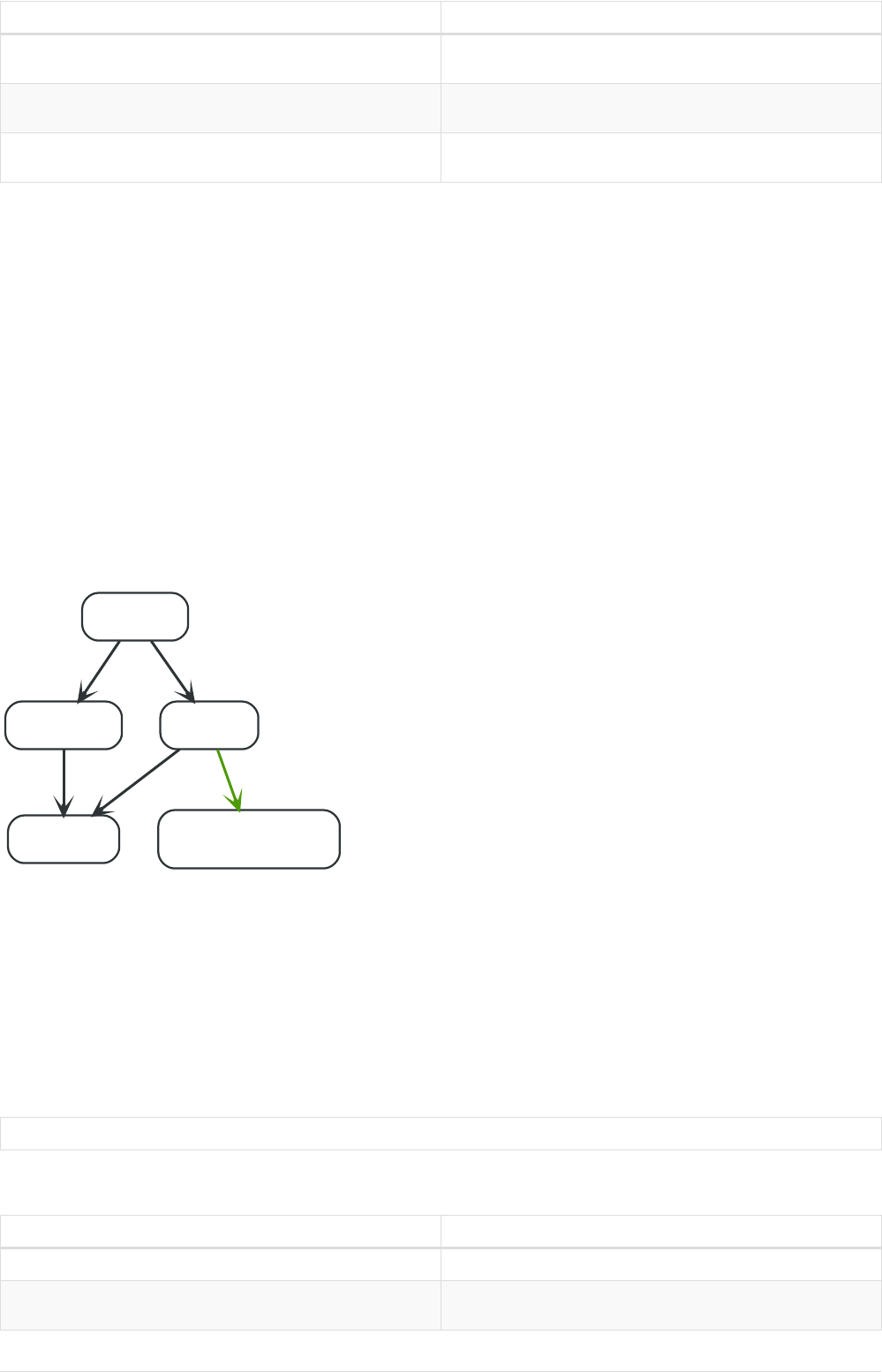
Function Description
distance() Returns a floating point number representing the geodesic
distance between any two points in the same CRS.
point() - cartesian 2D Returns a point object, given two coordinate values in the
cartesian coordinate system.
point() - WGS 84 Returns a point object, given two coordinate values in the
WGS 84 coordinate system.
8.1. Predicate functions
Predicates are boolean functions that return true or false for a given set of input. They are
most commonly used to filter out subgraphs in the WHERE part of a query.
Functions:
•all()
•any()
•exists()
•none()
•single()
name = 'Alice'
age = 38
eyes = 'brown'
name = 'Charlie'
age = 53
eyes = 'green'
KNOWS
name = 'Bob'
age = 25
eyes = 'blue'
KNOWS
name = 'Daniel'
age = 54
eyes = 'brown'
KNOWS
array = ['one', 'two', 'three']
name = 'Eskil'
age = 41
eyes = 'blue'
MARRIEDKNOWS
Figure 22. Graph
8.1.1. all()
all() returns true if the predicate holds for all elements in the given list.
Syntax: all(variable IN list WHERE predicate)
Returns:
A Boolean.
Arguments:
Name Description
list An expression that returns a list.
variable This is the variable that can be used from within the
predicate.
150

Name Description
predicate A predicate that is tested against all items in the list.
Query
MATCH p =(a)-[*1..3]->(b)
WHERE a.name = 'Alice' AND b.name = 'Daniel' AND ALL (x IN nodes(p) WHERE x.age > 30)
RETURN p
All nodes in the returned paths will have an age property of at least '30'.
Table 147. Result
p
[Node[0]{name:"Alice",age:38,eyes:"brown"},:KNOWS[1]{},Node[2]{name:"Charlie",age:53,eyes:"green"},:KNOWS[3]{}
,Node[3]{name:"Daniel",age:54,eyes:"brown"}]
1 row
8.1.2. any()
any() returns true if the predicate holds for at least one element in the given list.
Syntax: any(variable IN list WHERE predicate)
Returns:
A Boolean.
Arguments:
Name Description
list An expression that returns a list.
variable This is the variable that can be used from within the
predicate.
predicate A predicate that is tested against all items in the list.
Query
MATCH (a)
WHERE a.name = 'Eskil' AND ANY (x IN a.array WHERE x = 'one')
RETURN a.name, a.array
All nodes in the returned paths have at least one 'one' value set in the array property named array.
Table 148. Result
a.name a.array
"Eskil" ["one","two","three"]
1 row
8.1.3. exists()
exists() returns true if a match for the given pattern exists in the graph, or if the specified property
exists in the node, relationship or map.
151

Syntax: exists(pattern-or-property)
Returns:
A Boolean.
Arguments:
Name Description
pattern-or-property A pattern or a property (in the form 'variable.prop').
Query
MATCH (n)
WHERE exists(n.name)
RETURN n.name AS name, exists((n)-[:MARRIED]->()) AS is_married
The names of all nodes with the name property are returned, along with a boolean true / false
indicating if they are married.
Table 149. Result
name is_married
"Alice" false
"Bob" true
"Charlie" false
"Daniel" false
"Eskil" false
5 rows
8.1.4. none()
none() returns true if the predicate holds for no element in the given list.
Syntax: none(variable IN list WHERE predicate)
Returns:
A Boolean.
Arguments:
Name Description
list An expression that returns a list.
variable This is the variable that can be used from within the
predicate.
predicate A predicate that is tested against all items in the list.
Query
MATCH p =(n)-[*1..3]->(b)
WHERE n.name = 'Alice' AND NONE (x IN nodes(p) WHERE x.age = 25)
RETURN p
152

No node in the returned paths has an age property set to '25'.
Table 150. Result
p
[Node[0]{name:"Alice",age:38,eyes:"brown"},:KNOWS[1]{},Node[2]{name:"Charlie",age:53,eyes:"green"}]
[Node[0]{name:"Alice",age:38,eyes:"brown"},:KNOWS[1]{},Node[2]{name:"Charlie",age:53,eyes:"green"},:KNOWS[3]{}
,Node[3]{name:"Daniel",age:54,eyes:"brown"}]
2 rows
8.1.5. single()
single() returns true if the predicate holds for exactly one of the elements in the given list.
Syntax: single(variable IN list WHERE predicate)
Returns:
A Boolean.
Arguments:
Name Description
list An expression that returns a list.
variable This is the variable that can be used from within the
predicate.
predicate A predicate that is tested against all items in the list.
Query
MATCH p =(n)-->(b)
WHERE n.name = 'Alice' AND SINGLE (var IN nodes(p) WHERE var.eyes = 'blue')
RETURN p
Exactly one node in every returned path has the eyes property set to 'blue'.
Table 151. Result
p
[Node[0]{name:"Alice",age:38,eyes:"brown"},:KNOWS[0]{},Node[1]{name:"Bob",age:25,eyes:"blue"}]
1 row
8.2. Scalar functions
Scalar functions return a single value.
The length() and size() functions are quite similar, and so it is important to take
note of the difference. Owing to backwards compatibility, length() currently
works on four types: strings, paths, lists and pattern expressions. However, it is
recommended to use length() only for paths, and the size() function for strings,
lists and pattern expressions. length() on those types may be deprecated in
future.
153
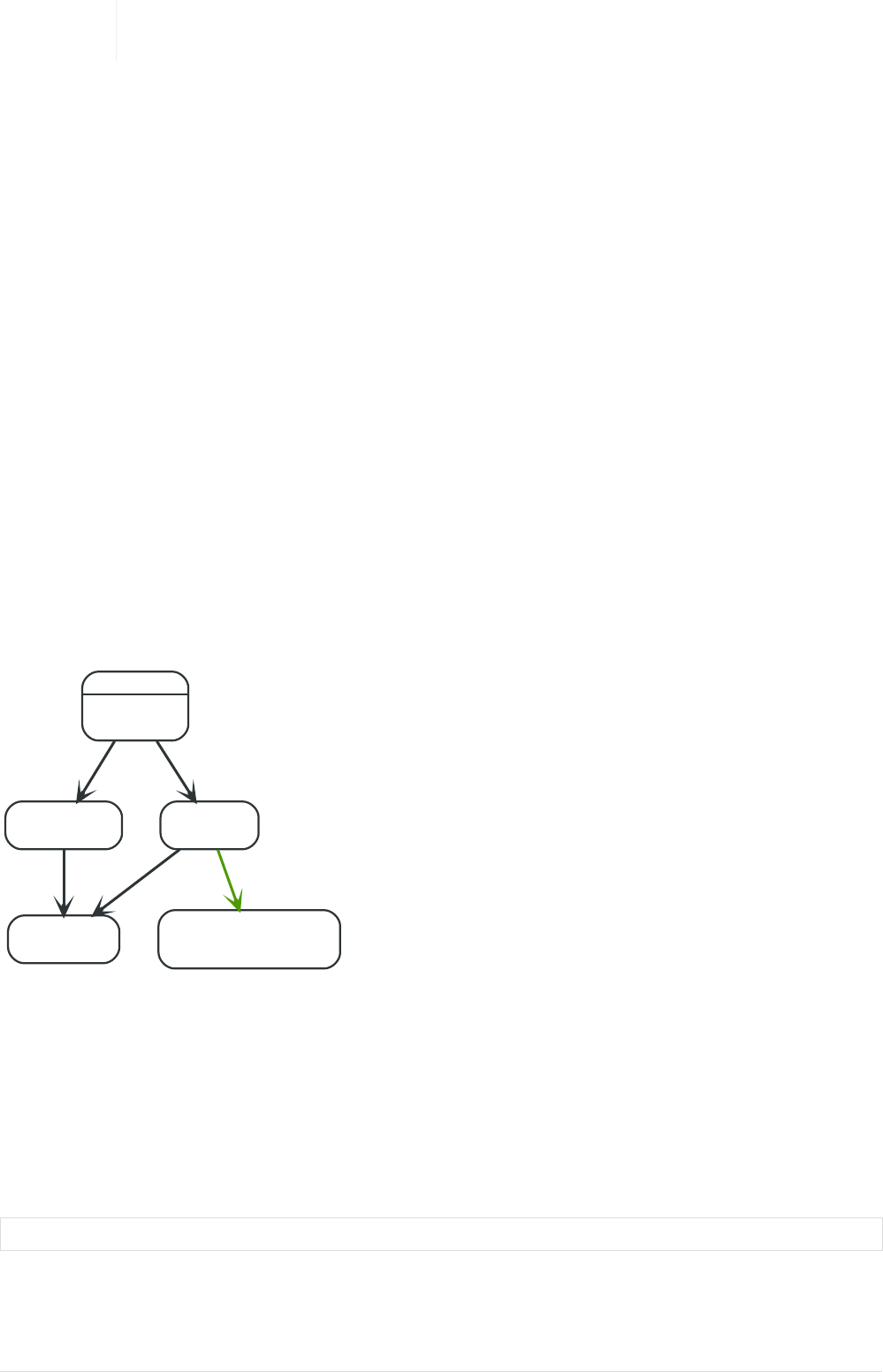
The function toInt() has been superseded by toInteger(), and will be removed in a
future release.
Functions:
•coalesce()
•endNode()
•head()
•id()
•last()
•length()
•properties()
•size()
•Size of pattern expression
•Size of string
•startNode()
•timestamp()
•toBoolean()
•toFloat()
•toInteger()
•type()
Developer
name = 'Alice'
age = 38
eyes = 'brown'
name = 'Charlie'
age = 53
eyes = 'green'
KNOWS
name = 'Bob'
age = 25
eyes = 'blue'
KNOWS
name = 'Daniel'
age = 54
eyes = 'brown'
KNOWS
array = ['one', 'two', 'three']
name = 'Eskil'
age = 41
eyes = 'blue'
MARRIEDKNOWS
Figure 23. Graph
8.2.1. coalesce()
coalesce() returns the first non-null value in the given list of expressions.
Syntax: coalesce(expression [, expression]*)
Returns:
The type of the value returned will be that of the first non-null expression.
Arguments:
154

Name Description
expression An expression which may return null.
Considerations:
null will be returned if all the arguments are null.
Query
MATCH (a)
WHERE a.name = 'Alice'
RETURN coalesce(a.hairColor, a.eyes)
Table 152. Result
coalesce(a.hairColor, a.eyes)
"brown"
1 row
8.2.2. endNode()
endNode() returns the end node of a relationship.
Syntax: endNode(relationship)
Returns:
A Node.
Arguments:
Name Description
relationship An expression that returns a relationship.
Considerations:
endNode(null) returns null.
Query
MATCH (x:Developer)-[r]-()
RETURN endNode(r)
Table 153. Result
endNode(r)
Node[2]{name:"Charlie",age:53,eyes:"green"}
Node[1]{name:"Bob",age:25,eyes:"blue"}
2 rows
8.2.3. head()
head() returns the first element in a list.
155

Syntax: head(list)
Returns:
The type of the value returned will be that of the first element of list.
Arguments:
Name Description
list An expression that returns a list.
Considerations:
head(null) returns null.
If the first element in list is null, head(list) will return null.
Query
MATCH (a)
WHERE a.name = 'Eskil'
RETURN a.array, head(a.array)
The first element in the list is returned.
Table 154. Result
a.array head(a.array)
["one","two","three"] "one"
1 row
8.2.4. id()
id() returns the id of a relationship or node.
Syntax: id(expression)
Returns:
An Integer.
Arguments:
Name Description
expression An expression that returns a node or a relationship.
Considerations:
id(null) returns null.
Query
MATCH (a)
RETURN id(a)
156

The node id for each of the nodes is returned.
Table 155. Result
id(a)
0
1
2
3
4
5 rows
8.2.5. last()
last() returns the last element in a list.
Syntax: last(expression)
Returns:
The type of the value returned will be that of the last element of list.
Arguments:
Name Description
list An expression that returns a list.
Considerations:
last(null) returns null.
If the last element in list is null, last(list) will return null.
Query
MATCH (a)
WHERE a.name = 'Eskil'
RETURN a.array, last(a.array)
The last element in the list is returned.
Table 156. Result
a.array last(a.array)
["one","two","three"] "three"
1 row
8.2.6. length()
length() returns the length of a path.
Syntax: length(path)
Returns:
157

An Integer.
Arguments:
Name Description
path An expression that returns a path.
Considerations:
length(null) returns null.
Query
MATCH p =(a)-->(b)-->(c)
WHERE a.name = 'Alice'
RETURN length(p)
The length of the path p is returned.
Table 157. Result
length(p)
2
2
2
3 rows
8.2.7. properties()
properties() returns a map containing all the properties of a node or relationship. If the argument is
already a map, it is returned unchanged.
Syntax: properties(expression)
Returns:
A Map.
Arguments:
Name Description
expression An expression that returns a node, a relationship, or a
map.
Considerations:
properties(null) returns null.
Query
CREATE (p:Person { name: 'Stefan', city: 'Berlin' })
RETURN properties(p)
Table 158. Result
158

properties(p)
{name -> "Stefan", city -> "Berlin"}
1 row
Nodes created: 1
Properties set: 2
Labels added: 1
8.2.8. size()
size() returns the number of elements in a list.
Syntax: size(list)
Returns:
An Integer.
Arguments:
Name Description
list An expression that returns a list.
Considerations:
size(null) returns null.
Query
RETURN size(['Alice', 'Bob'])
Table 159. Result
size(['Alice', 'Bob'])
2
1 row
The number of elements in the list is returned.
8.2.9. size() applied to pattern expression
This is the same size() method as described above, but instead of passing in a list directly, a pattern
expression can be provided that can be used in a match query to provide a new set of results. These
results are a list of paths. The size of the result is calculated, not the length of the expression itself.
Syntax: size(pattern expression)
Arguments:
Name Description
pattern expression A pattern expression that returns a list.
159

Query
MATCH (a)
WHERE a.name = 'Alice'
RETURN size((a)-->()-->()) AS fof
Table 160. Result
fof
3
1 row
The number of sub-graphs matching the pattern expression is returned.
8.2.10. size() applied to string
size() returns the size of a string value.
Syntax: size(string)
Returns:
An Integer.
Arguments:
Name Description
string An expression that returns a string value.
Considerations:
size(null) returns null.
Query
MATCH (a)
WHERE size(a.name)> 6
RETURN size(a.name)
Table 161. Result
size(a.name)
7
1 row
The size of the string 'Charlie' is returned.
8.2.11. startNode()
startNode() returns the start node of a relationship.
Syntax: startNode(relationship)
Returns:
160

A Node.
Arguments:
Name Description
relationship An expression that returns a relationship.
Considerations:
startNode(null) returns null.
Query
MATCH (x:Developer)-[r]-()
RETURN startNode(r)
Table 162. Result
startNode(r)
Node[0]{name:"Alice",age:38,eyes:"brown"}
Node[0]{name:"Alice",age:38,eyes:"brown"}
2 rows
8.2.12. timestamp()
timestamp() returns the difference, measured in milliseconds, between the current time and midnight,
January 1, 1970 UTC.
Syntax: timestamp()
Returns:
An Integer.
Considerations:
timestamp() will return the same value during one entire query, even for long-running queries.
Query
RETURN timestamp()
The time in milliseconds is returned.
Table 163. Result
timestamp()
1524754335109
1 row
8.2.13. toBoolean()
toBoolean() converts a string value to a boolean value.
161

Syntax: toBoolean(expression)
Returns:
A Boolean.
Arguments:
Name Description
expression An expression that returns a boolean or string value.
Considerations:
toBoolean(null) returns null.
If expression is a boolean value, it will be returned unchanged.
If the parsing fails, null will be returned.
Query
RETURN toBoolean('TRUE'), toBoolean('not a boolean')
Table 164. Result
toBoolean('TRUE') toBoolean('not a boolean')
true <null>
1 row
8.2.14. toFloat()
toFloat() converts an integer or string value to a floating point number.
Syntax: toFloat(expression)
Returns:
A Float.
Arguments:
Name Description
expression An expression that returns a numeric or string value.
Considerations:
toFloat(null) returns null.
If expression is a floating point number, it will be returned unchanged.
If the parsing fails, null will be returned.
Query
RETURN toFloat('11.5'), toFloat('not a number')
162

Table 165. Result
toFloat('11.5') toFloat('not a number')
11.5 <null>
1 row
8.2.15. toInteger()
toInteger() converts a floating point or string value to an integer value.
Syntax: toInteger(expression)
Returns:
An Integer.
Arguments:
Name Description
expression An expression that returns a numeric or string value.
Considerations:
toInteger(null) returns null.
If expression is an integer value, it will be returned unchanged.
If the parsing fails, null will be returned.
Query
RETURN toInteger('42'), toInteger('not a number')
Table 166. Result
toInteger('42') toInteger('not a number')
42 <null>
1 row
8.2.16. type()
type() returns the string representation of the relationship type.
Syntax: type(relationship)
Returns:
A String.
Arguments:
Name Description
relationship An expression that returns a relationship.
Considerations:
163

type(null) returns null.
Query
MATCH (n)-[r]->()
WHERE n.name = 'Alice'
RETURN type(r)
The relationship type of r is returned.
Table 167. Result
type(r)
"KNOWS"
"KNOWS"
2 rows
8.3. Aggregating functions
To calculate aggregated data, Cypher offers aggregation, analogous to SQL’s GROUP BY.
Aggregating functions take a set of values and calculate an aggregated value over them. Examples are
avg() that calculates the average of multiple numeric values, or min() that finds the smallest numeric
or string value in a set of values. When we say below that an aggregating function operates on a set of
values, we mean these to be the result of the application of the inner expression (such as n.age) to all
the records within the same aggregation group.
Aggregation can be computed over all the matching subgraphs, or it can be further divided by
introducing grouping keys. These are non-aggregate expressions, that are used to group the values
going into the aggregate functions.
Assume we have the following return statement:
RETURN n, count(*)
We have two return expressions: n, and count(). The first, n, is not an aggregate function, and
so it will be the grouping key. The latter, count() is an aggregate expression. The matching
subgraphs will be divided into different buckets, depending on the grouping key. The aggregate
function will then be run on these buckets, calculating an aggregate value per bucket.
To use aggregations to sort the result set, the aggregation must be included in the RETURN to be used in
the ORDER BY.
The DISTINCT operator works in conjunction with aggregation. It is used to make all values unique
before running them through an aggregate function. More information about DISTINCT may be found
here.
Functions:
•avg()
•collect()
•count()
•max()
•min()
164

•percentileCont()
•percentileDisc()
•stDev()
•stDevP()
•sum()
The following graph is used for the examples below:
Person
name = 'A'
age = 13
Person
name = 'B'
age = 33
eyes = 'blue'
KNOWS
Person
name = 'C'
age = 44
eyes = 'blue'
KNOWS
Person
name = 'D'
eyes = 'brown'
KNOWS
Person
name = 'D'
KNOWS KNOWS
Figure 24. Graph
8.3.1. avg()
avg() returns the average of a set of numeric values.
Syntax: avg(expression)
Returns:
Either an Integer or a Float, depending on the values returned by expression and whether or not the calculation
overflows.
Arguments:
Name Description
expression An expression returning a set of numeric values.
Considerations:
Any null values are excluded from the calculation.
avg(null) returns null.
Query
MATCH (n:Person)
RETURN avg(n.age)
The average of all the values in the property age is returned.
Table 168. Result
165

avg(n.age)
30.0
1 row
8.3.2. collect()
collect() returns a list containing the values returned by an expression. Using this function
aggregates data by amalgamating multiple records or values into a single list.
Syntax: collect(expression)
Returns:
A list containing heterogeneous elements; the types of the elements are determined by the values returned by
expression.
Arguments:
Name Description
expression An expression returning a set of values.
Considerations:
Any null values are ignored and will not be added to the list.
collect(null) returns an empty list.
Query
MATCH (n:Person)
RETURN collect(n.age)
All the values are collected and returned in a single list.
Table 169. Result
collect(n.age)
[13,33,44]
1 row
8.3.3. count()
count() returns the number of values or rows, and appears in two variants:
•count(*) returns the number of matching rows, and
•count(expr) returns the number of non-null values returned by an expression.
Syntax: count(expression)
Returns:
An Integer.
Arguments:
166

Name Description
expression An expression.
Considerations:
count(*) includes rows returning null.
count(expr) ignores null values.
count(null) returns 0.
Using count(*) to return the number of nodes
count(*) can be used to return the number of nodes; for example, the number of nodes connected to
some node n.
Query
MATCH (n { name: 'A' })-->(x)
RETURN labels(n), n.age, count(*)
The labels and age property of the start node n and the number of nodes related to n are returned.
Table 170. Result
labels(n) n.age count(*)
["Person"] 13 3
1 row
Using count(*) to group and count relationship types
count(*) can be used to group relationship types and return the number.
Query
MATCH (n { name: 'A' })-[r]->()
RETURN type(r), count(*)
The relationship types and their group count are returned.
Table 171. Result
type(r) count(*)
"KNOWS" 3
1 row
Using count(expression) to return the number of values
Instead of simply returning the number of rows with count(*), it may be more useful to return the
actual number of values returned by an expression.
Query
MATCH (n { name: 'A' })-->(x)
RETURN count(x)
167

The number of nodes connected to the start node is returned.
Table 172. Result
count(x)
3
1 row
Counting non-null values
count(expression) can be used to return the number of non-null values returned by the expression.
Query
MATCH (n:Person)
RETURN count(n.age)
The number of :Person nodes having an age property is returned.
Table 173. Result
count(n.age)
3
1 row
Counting with and without duplicates
In this example we are trying to find all our friends of friends, and count them:
•The first aggregate function, count(DISTINCT friend_of_friend), will only count a friend_of_friend
once, as DISTINCT removes the duplicates.
•The second aggregate function, count(friend_of_friend), will consider the same friend_of_friend
multiple times.
Query
MATCH (me:Person)-->(friend:Person)-->(friend_of_friend:Person)
WHERE me.name = 'A'
RETURN count(DISTINCT friend_of_friend), count(friend_of_friend)
Both B and C know D and thus D will get counted twice when not using DISTINCT.
Table 174. Result
count(DISTINCT friend_of_friend) count(friend_of_friend)
1 2
1 row
8.3.4. max()
max() returns the maximum value in a set of values.
Syntax: max(expression)
Returns:
168

A property type, or a list, depending on the values returned by expression.
Arguments:
Name Description
expression An expression returning a set containing any combination
of property types and lists thereof.
Considerations:
Any null values are excluded from the calculation.
In a mixed set, any numeric value is always considered to be higher than any string value, and any string value is
always considered to be higher than any list.
Lists are compared in dictionary order, i.e. list elements are compared pairwise in ascending order from the start of the
list to the end.
max(null) returns null.
Query
UNWIND [1, 'a', NULL , 0.2, 'b', '1', '99'] AS val
RETURN max(val)
The highest of all the values in the mixed set — in this case, the numeric value 1 — is returned. Note
that the (string) value "99", which may appear at first glance to be the highest value in the list, is
considered to be a lower value than 1 as the latter is a string.
Table 175. Result
max(val)
1
1 row
Query
UNWIND [[1, 'a', 89],[1, 2]] AS val
RETURN max(val)
The highest of all the lists in the set — in this case, the list [1, 2] — is returned, as the number 2 is
considered to be a higher value than the string "a", even though the list [1, 'a', 89] contains more
elements.
Table 176. Result
max(val)
[1,2]
1 row
Query
MATCH (n:Person)
RETURN max(n.age)
The highest of all the values in the property age is returned.
Table 177. Result
169

max(n.age)
44
1 row
8.3.5. min()
min() returns the minimum value in a set of values.
Syntax: min(expression)
Returns:
A property type, or a list, depending on the values returned by expression.
Arguments:
Name Description
expression An expression returning a set containing any combination
of property types and lists thereof.
Considerations:
Any null values are excluded from the calculation.
In a mixed set, any string value is always considered to be lower than any numeric value, and any list is always
considered to be lower than any string.
Lists are compared in dictionary order, i.e. list elements are compared pairwise in ascending order from the start of the
list to the end.
min(null) returns null.
Query
UNWIND [1, 'a', NULL , 0.2, 'b', '1', '99'] AS val
RETURN min(val)
The lowest of all the values in the mixed set — in this case, the string value "1" — is returned. Note
that the (numeric) value 0.2, which may appear at first glance to be the lowest value in the list, is
considered to be a higher value than "1" as the latter is a string.
Table 178. Result
min(val)
"1"
1 row
Query
UNWIND ['d',[1, 2],['a', 'c', 23]] AS val
RETURN min(val)
The lowest of all the values in the set — in this case, the list ['a', 'c', 23] — is returned, as (i) the two
lists are considered to be lower values than the string "d", and (ii) the string "a" is considered to be a
lower value than the numerical value 1.
Table 179. Result
170

min(val)
["a","c",23]
1 row
Query
MATCH (n:Person)
RETURN min(n.age)
The lowest of all the values in the property age is returned.
Table 180. Result
min(n.age)
13
1 row
8.3.6. percentileCont()
percentileCont() returns the percentile of the given value over a group, with a percentile from 0.0 to
1.0. It uses a linear interpolation method, calculating a weighted average between two values if the
desired percentile lies between them. For nearest values using a rounding method, see
percentileDisc.
Syntax: percentileCont(expression, percentile)
Returns:
A Float.
Arguments:
Name Description
expression A numeric expression.
percentile A numeric value between 0.0 and 1.0
Considerations:
Any null values are excluded from the calculation.
percentileCont(null, percentile) returns null.
Query
MATCH (n:Person)
RETURN percentileCont(n.age, 0.4)
The 40th percentile of the values in the property age is returned, calculated with a weighted average.
In this case, 0.4 is the median, or 40th percentile.
Table 181. Result
percentileCont(n.age, 0.4)
29.0
171

percentileCont(n.age, 0.4)
1 row
8.3.7. percentileDisc()
percentileDisc() returns the percentile of the given value over a group, with a percentile from 0.0 to
1.0. It uses a rounding method and calculates the nearest value to the percentile. For interpolated
values, see percentileCont.
Syntax: percentileDisc(expression, percentile)
Returns:
Either an Integer or a Float, depending on the values returned by expression and whether or not the calculation
overflows.
Arguments:
Name Description
expression A numeric expression.
percentile A numeric value between 0.0 and 1.0
Considerations:
Any null values are excluded from the calculation.
percentileDisc(null, percentile) returns null.
Query
MATCH (n:Person)
RETURN percentileDisc(n.age, 0.5)
The 50th percentile of the values in the property age is returned.
Table 182. Result
percentileDisc(n.age, 0.5)
33
1 row
8.3.8. stDev()
stDev() returns the standard deviation for the given value over a group. It uses a standard two-pass
method, with N - 1 as the denominator, and should be used when taking a sample of the population
for an unbiased estimate. When the standard variation of the entire population is being calculated,
stdDevP should be used.
Syntax: stDev(expression)
Returns:
A Float.
Arguments:
172

Name Description
expression A numeric expression.
Considerations:
Any null values are excluded from the calculation.
stDev(null) returns 0.
Query
MATCH (n)
WHERE n.name IN ['A', 'B', 'C']
RETURN stDev(n.age)
The standard deviation of the values in the property age is returned.
Table 183. Result
stDev(n.age)
15.716233645501712
1 row
8.3.9. stDevP()
stDevP() returns the standard deviation for the given value over a group. It uses a standard two-pass
method, with N as the denominator, and should be used when calculating the standard deviation for
an entire population. When the standard variation of only a sample of the population is being
calculated, stDev should be used.
Syntax: stDevP(expression)
Returns:
A Float.
Arguments:
Name Description
expression A numeric expression.
Considerations:
Any null values are excluded from the calculation.
stDevP(null) returns 0.
Query
MATCH (n)
WHERE n.name IN ['A', 'B', 'C']
RETURN stDevP(n.age)
The population standard deviation of the values in the property age is returned.
Table 184. Result
173

stDevP(n.age)
12.832251036613439
1 row
8.3.10. sum()
sum() returns the sum of a set of numeric values.
Syntax: sum(expression)
Returns:
Either an Integer or a Float, depending on the values returned by expression.
Arguments:
Name Description
expression An expression returning a set of numeric values.
Considerations:
Any null values are excluded from the calculation.
sum(null) returns 0.
Query
MATCH (n:Person)
RETURN sum(n.age)
The sum of all the values in the property age is returned.
Table 185. Result
sum(n.age)
90
1 row
8.4. List functions
List functions return lists of things — nodes in a path, and so on.
Further details and examples of lists may be found in Lists and List operators.
The function rels() has been superseded by relationships(), and will be removed
in a future release.
Functions:
•extract()
•filter()
•keys()
174
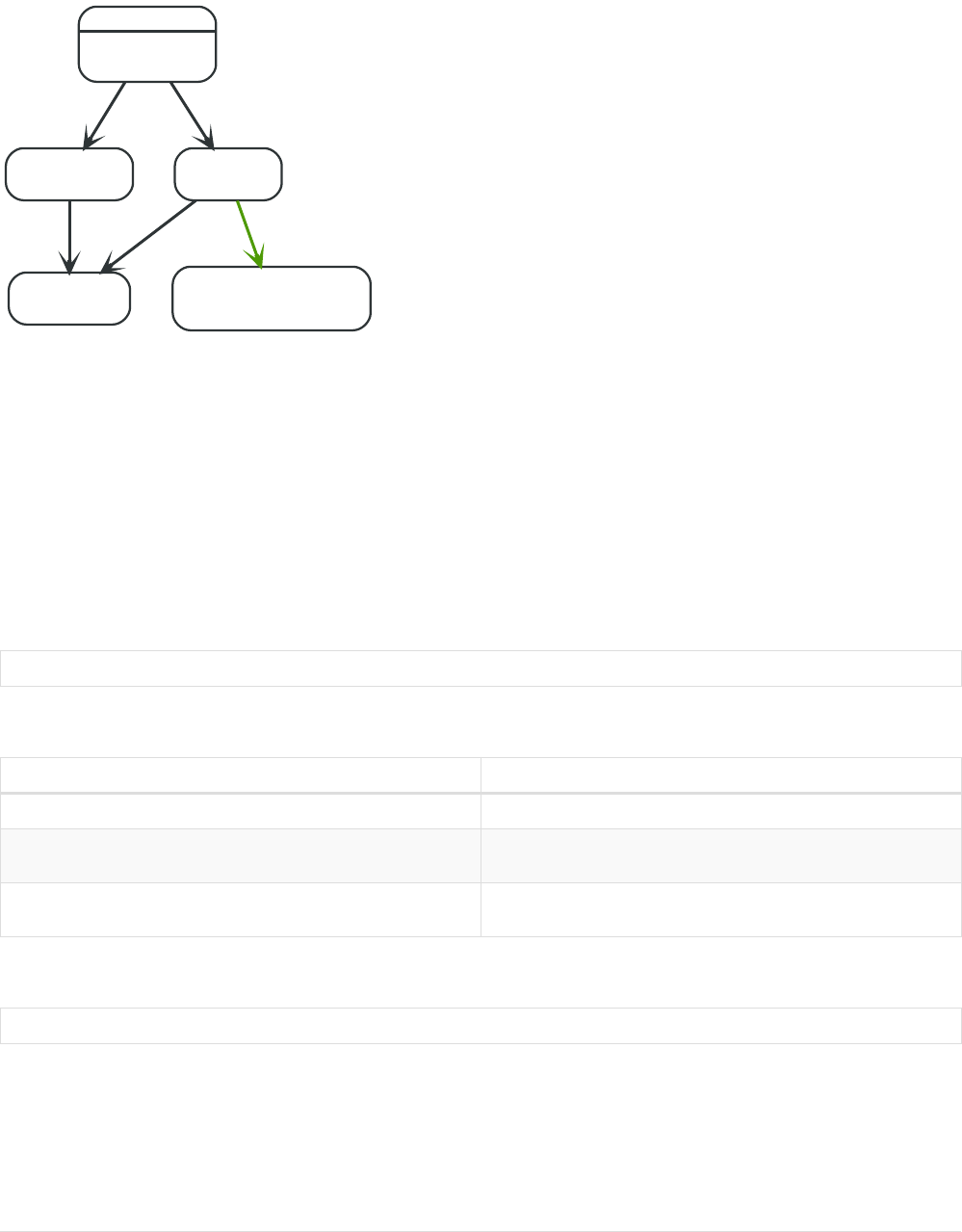
•labels()
•nodes()
•range()
•reduce()
•relationships()
•reverse()
•tail()
Person, Developer
name = 'Alice'
age = 38
eyes = 'brown'
name = 'Charlie'
age = 53
eyes = 'green'
KNOWS
name = 'Bob'
age = 25
eyes = 'blue'
KNOWS
name = 'Daniel'
age = 54
eyes = 'brown'
KNOWS
array = ['one', 'two', 'three']
name = 'Eskil'
age = 41
eyes = 'blue'
MARRIEDKNOWS
Figure 25. Graph
8.4.1. extract()
extract() returns a list lresult containing the values resulting from an expression which has been
applied to each element in a list list. This function is analogous to the map method in functional
languages such as Lisp and Scala.
Syntax: extract(variable IN list | expression)
Returns:
A list containing heterogeneous elements; the types of the elements are determined by expression.
Arguments:
Name Description
list An expression that returns a list.
variable The closure will have a variable introduced in its context.
We decide here which variable to use.
expression This expression will run once per value in list, and add it
to the list which is returned by extract().
Considerations:
Any null values in list are preserved.
Common usages of extract() include:
•Returning a property from a list of nodes or relationships; for example, expression = n.prop and
list = nodes(<some-path>).
175

•Returning the result of the application of a function on each element in a list; for example,
expression = toUpper(x) and variable = x.
Query
MATCH p =(a)-->(b)-->(c)
WHERE a.name = 'Alice' AND b.name = 'Bob' AND c.name = 'Daniel'
RETURN extract(n IN nodes(p)| n.age) AS extracted
The age property of all nodes in path p are returned.
Table 186. Result
extracted
[38,25,54]
1 row
8.4.2. filter()
filter() returns a list lresult containing all the elements from a list list that comply with the given
predicate.
Syntax: filter(variable IN list WHERE predicate)
Returns:
A list containing heterogeneous elements; the types of the elements are determined by the elements in list.
Arguments:
Name Description
list An expression that returns a list.
variable This is the variable that can be used from the predicate.
predicate A predicate that is tested against all elements in list.
Query
MATCH (a)
WHERE a.name = 'Eskil'
RETURN a.array, filter(x IN a.array WHERE size(x)= 3)
The property named array and a list of all values having size '3' are returned.
Table 187. Result
a.array filter(x IN a.array WHERE size(x)= 3)
["one","two","three"] ["one","two"]
1 row
8.4.3. keys()
keys returns a list containing the string representations for all the property names of a node,
relationship, or map.
Syntax: keys(expression)
176

Returns:
A list containing String elements.
Arguments:
Name Description
expression An expression that returns a node, a relationship, or a
map.
Considerations:
keys(null) returns null.
Query
MATCH (a)
WHERE a.name = 'Alice'
RETURN keys(a)
A list containing the names of all the properties on the node bound to a is returned.
Table 188. Result
keys(a)
["name","age","eyes"]
1 row
8.4.4. labels()
labels returns a list containing the string representations for all the labels of a node.
Syntax: labels(node)
Returns:
A list containing String elements.
Arguments:
Name Description
node An expression that returns a single node.
Considerations:
labels(null) returns null.
Query
MATCH (a)
WHERE a.name = 'Alice'
RETURN labels(a)
A list containing all the labels of the node bound to a is returned.
177

Table 189. Result
labels(a)
["Person","Developer"]
1 row
8.4.5. nodes()
nodes() returns a list containing all the nodes in a path.
Syntax: nodes(path)
Returns:
A list containing Node elements.
Arguments:
Name Description
path An expression that returns a path.
Considerations:
nodes(null) returns null.
Query
MATCH p =(a)-->(b)-->(c)
WHERE a.name = 'Alice' AND c.name = 'Eskil'
RETURN nodes(p)
A list containing all the nodes in the path p is returned.
Table 190. Result
nodes(p)
[Node[0]{name:"Alice",age:38,eyes:"brown"},Node[1]{name:"Bob",age:25,eyes:"blue"},Node[4]{array:["one","two","
three"],name:"Eskil",age:41,eyes:"blue"}]
1 row
8.4.6. range()
range() returns a list comprising all integer values within a range bounded by a start value start and
end value end, where the difference step between any two consecutive values is constant; i.e. an
arithmetic progression. The range is inclusive, and the arithmetic progression will therefore always
contain start and — depending on the values of start, step and end — end.
Syntax: range(start, end [, step])
Returns:
A list of Integer elements.
Arguments:
178

Name Description
start An expression that returns an integer value.
end An expression that returns an integer value.
step A numeric expression defining the difference between any
two consecutive values, with a default of 1.
Query
RETURN range(0, 10), range(2, 18, 3)
Two lists of numbers in the given ranges are returned.
Table 191. Result
range(0, 10) range(2, 18, 3)
[0,1,2,3,4,5,6,7,8,9,10] [2,5,8,11,14,17]
1 row
8.4.7. reduce()
reduce() returns the value resulting from the application of an expression on each successive element
in a list in conjunction with the result of the computation thus far. This function will iterate
through each element e in the given list, run the expression on e — taking into account the current
partial result — and store the new partial result in the accumulator. This function is analogous
to the fold or reduce method in functional languages such as Lisp and Scala.
Syntax: reduce(accumulator = initial, variable IN list | expression)
Returns:
The type of the value returned depends on the arguments provided, along with the semantics of expression.
Arguments:
Name Description
accumulator A variable that will hold the result and the partial results as
the list is iterated.
initial An expression that runs once to give a starting value to the
accumulator.
list An expression that returns a list.
variable The closure will have a variable introduced in its context.
We decide here which variable to use.
expression This expression will run once per value in the list, and
produce the result value.
Query
MATCH p =(a)-->(b)-->(c)
WHERE a.name = 'Alice' AND b.name = 'Bob' AND c.name = 'Daniel'
RETURN reduce(totalAge = 0, n IN nodes(p)| totalAge + n.age) AS reduction
The age property of all nodes in the path are summed and returned as a single value.
Table 192. Result
179

reduction
117
1 row
8.4.8. relationships()
relationships() returns a list containing all the relationships in a path.
Syntax: relationships(path)
Returns:
A list containing Relationship elements.
Arguments:
Name Description
path An expression that returns a path.
Considerations:
relationships(null) returns null.
Query
MATCH p =(a)-->(b)-->(c)
WHERE a.name = 'Alice' AND c.name = 'Eskil'
RETURN relationships(p)
A list containing all the relationships in the path p is returned.
Table 193. Result
relationships(p)
[:KNOWS[0]{},:MARRIED[4]{}]
1 row
8.4.9. reverse()
reverse() returns a list in which the order of all elements in the original list have been reversed.
Syntax: reverse(original)
Returns:
A list containing homogeneous or heterogeneous elements; the types of the elements are determined by the elements
within original.
Arguments:
Name Description
original An expression that returns a list.
Considerations:
180

Any null element in original is preserved.
Query
WITH [4923,'abc',521, NULL , 487] AS ids
RETURN reverse(ids)
Table 194. Result
reverse(ids)
[487,<null>,521,"abc",4923]
1 row
8.4.10. tail()
tail() returns a list lresult containing all the elements, excluding the first one, from a list list.
Syntax: tail(list)
Returns:
A list containing heterogeneous elements; the types of the elements are determined by the elements in list.
Arguments:
Name Description
list An expression that returns a list.
Query
MATCH (a)
WHERE a.name = 'Eskil'
RETURN a.array, tail(a.array)
The property named array and a list comprising all but the first element of the array property are
returned.
Table 195. Result
a.array tail(a.array)
["one","two","three"] ["two","three"]
1 row
8.5. Mathematical functions - numeric
These functions all operate on numeric expressions only, and will return an error if used on
any other values. See also Mathematical operators.
Functions:
•abs()
•ceil()
181

•floor()
•rand()
•round()
•sign()
The following graph is used for the examples below:
A
name = 'Alice'
age = 38
eyes = 'brown'
C
name = 'Charlie'
age = 53
eyes = 'green'
KNOWS
B
name = 'Bob'
age = 25
eyes = 'blue'
KNOWS
D
name = 'Daniel'
age = 54
eyes = 'brown'
KNOWS
E
array = ['one', 'two', 'three']
name = 'Eskil'
age = 41
eyes = 'blue'
MARRIEDKNOWS
Figure 26. Graph
8.5.1. abs()
abs() returns the absolute value of the given number.
Syntax: abs(expression)
Returns:
The type of the value returned will be that of expression.
Arguments:
Name Description
expression A numeric expression.
Considerations:
abs(null) returns null.
If expression is negative, -(expression) (i.e. the negation of expression) is returned.
Query
MATCH (a),(e)
WHERE a.name = 'Alice' AND e.name = 'Eskil'
RETURN a.age, e.age, abs(a.age - e.age)
The absolute value of the age difference is returned.
Table 196. Result
182

a.age e.age abs(a.age - e.age)
38 41 3
1 row
8.5.2. ceil()
ceil() returns the smallest floating point number that is greater than or equal to the given number
and equal to a mathematical integer.
Syntax: ceil(expression)
Returns:
A Float.
Arguments:
Name Description
expression A numeric expression.
Considerations:
ceil(null) returns null.
Query
RETURN ceil(0.1)
The ceil of 0.1 is returned.
Table 197. Result
ceil(0.1)
1.0
1 row
8.5.3. floor()
floor() returns the largest floating point number that is less than or equal to the given number and
equal to a mathematical integer.
Syntax: floor(expression)
Returns:
A Float.
Arguments:
Name Description
expression A numeric expression.
Considerations:
183

floor(null) returns null.
Query
RETURN floor(0.9)
The floor of 0.9 is returned.
Table 198. Result
floor(0.9)
0.0
1 row
8.5.4. rand()
rand() returns a random floating point number in the range from 0 (inclusive) to 1 (exclusive); i.e.
[0,1). The numbers returned follow an approximate uniform distribution.
Syntax: rand()
Returns:
A Float.
Query
RETURN rand()
A random number is returned.
Table 199. Result
rand()
0.6482250813137823
1 row
8.5.5. round()
round() returns the value of the given number rounded to the nearest integer.
Syntax: round(expression)
Returns:
A Float.
Arguments:
Name Description
expression A numeric expression.
Considerations:
184

round(null) returns null.
Query
RETURN round(3.141592)
3.0 is returned.
Table 200. Result
round(3.141592)
3.0
1 row
8.5.6. sign()
sign() returns the signum of the given number: 0 if the number is 0, -1 for any negative number, and
1 for any positive number.
Syntax: sign(expression)
Returns:
An Integer.
Arguments:
Name Description
expression A numeric expression.
Considerations:
sign(null) returns null.
Query
RETURN sign(-17), sign(0.1)
The signs of -17 and 0.1 are returned.
Table 201. Result
sign(-17) sign(0.1)
-1 1
1 row
8.6. Mathematical functions - logarithmic
These functions all operate on numeric expressions only, and will return an error if used on
any other values. See also Mathematical operators.
Functions:
185

•e()
•exp()
•log()
•log10()
•sqrt()
8.6.1. e()
e() returns the base of the natural logarithm, e.
Syntax: e()
Returns:
A Float.
Query
RETURN e()
The base of the natural logarithm, e, is returned.
Table 202. Result
e()
2.718281828459045
1 row
8.6.2. exp()
exp() returns e^n, where e is the base of the natural logarithm, and n is the value of the argument
expression.
Syntax: e(expression)
Returns:
A Float.
Arguments:
Name Description
expression A numeric expression.
Considerations:
exp(null) returns null.
Query
RETURN exp(2)
e to the power of 2 is returned.
186

Table 203. Result
exp(2)
7.38905609893065
1 row
8.6.3. log()
log() returns the natural logarithm of a number.
Syntax: log(expression)
Returns:
A Float.
Arguments:
Name Description
expression A numeric expression.
Considerations:
log(null) returns null.
log(0) returns null.
Query
RETURN log(27)
The natural logarithm of 27 is returned.
Table 204. Result
log(27)
3.295836866004329
1 row
8.6.4. log10()
log10() returns the common logarithm (base 10) of a number.
Syntax: log10(expression)
Returns:
A Float.
Arguments:
Name Description
expression A numeric expression.
187

Considerations:
log10(null) returns null.
log10(0) returns null.
Query
RETURN log10(27)
The common logarithm of 27 is returned.
Table 205. Result
log10(27)
1.4313637641589874
1 row
8.6.5. sqrt()
sqrt() returns the square root of a number.
Syntax: sqrt(expression)
Returns:
A Float.
Arguments:
Name Description
expression A numeric expression.
Considerations:
sqrt(null) returns null.
sqrt(<any negative number>) returns null
Query
RETURN sqrt(256)
The square root of 256 is returned.
Table 206. Result
sqrt(256)
16.0
1 row
8.7. Mathematical functions - trigonometric
These functions all operate on numeric expressions only, and will return an error if used on
188

any other values. See also Mathematical operators.
Functions:
•acos()
•asin()
•atan()
•atan2()
•cos()
•cot()
•degrees()
•haversin()
•Spherical distance using the haversin() function
•pi()
•radians()
•sin()
•tan()
8.7.1. acos()
acos() returns the arccosine of a number in radians.
Syntax: acos(expression)
Returns:
A Float.
Arguments:
Name Description
expression A numeric expression that represents the angle in radians.
Considerations:
acos(null) returns null.
If (expression < -1) or (expression > 1), then (acos(expression)) returns null.
Query
RETURN acos(0.5)
The arccosine of 0.5 is returned.
Table 207. Result
acos(0.5)
1.0471975511965979
1 row
189

8.7.2. asin()
asin() returns the arcsine of a number in radians.
Syntax: asin(expression)
Returns:
A Float.
Arguments:
Name Description
expression A numeric expression that represents the angle in radians.
Considerations:
asin(null) returns null.
If (expression < -1) or (expression > 1), then (asin(expression)) returns null.
Query
RETURN asin(0.5)
The arcsine of 0.5 is returned.
Table 208. Result
asin(0.5)
0.5235987755982989
1 row
8.7.3. atan()
atan() returns the arctangent of a number in radians.
Syntax: atan(expression)
Returns:
A Float.
Arguments:
Name Description
expression A numeric expression that represents the angle in radians.
Considerations:
atan(null) returns null.
190

Query
RETURN atan(0.5)
The arctangent of 0.5 is returned.
Table 209. Result
atan(0.5)
0.4636476090008061
1 row
8.7.4. atan2()
atan2() returns the arctangent2 of a set of coordinates in radians.
Syntax: atan2(expression1, expression2)
Returns:
A Float.
Arguments:
Name Description
expression1 A numeric expression for y that represents the angle in
radians.
expression2 A numeric expression for x that represents the angle in
radians.
Considerations:
atan2(null, null), atan2(null, expression2) and atan(expression1, null) all return null.
Query
RETURN atan2(0.5, 0.6)
The arctangent2 of 0.5 and 0.6 is returned.
Table 210. Result
atan2(0.5, 0.6)
0.6947382761967033
1 row
8.7.5. cos()
cos() returns the cosine of a number.
Syntax: cos(expression)
Returns:
191

A Float.
Arguments:
Name Description
expression A numeric expression that represents the angle in radians.
Considerations:
cos(null) returns null.
Query
RETURN cos(0.5)
The cosine of 0.5 is returned.
Table 211. Result
cos(0.5)
0.8775825618903728
1 row
8.7.6. cot()
cot() returns the cotangent of a number.
Syntax: cot(expression)
Returns:
A Float.
Arguments:
Name Description
expression A numeric expression that represents the angle in radians.
Considerations:
cot(null) returns null.
cot(0) returns null.
Query
RETURN cot(0.5)
The cotangent of 0.5 is returned.
Table 212. Result
cot(0.5)
1.830487721712452
192

cot(0.5)
1 row
8.7.7. degrees()
degrees() converts radians to degrees.
Syntax: degrees(expression)
Returns:
A Float.
Arguments:
Name Description
expression A numeric expression that represents the angle in radians.
Considerations:
degrees(null) returns null.
Query
RETURN degrees(3.14159)
The number of degrees in something close to pi is returned.
Table 213. Result
degrees(3.14159)
179.99984796050427
1 row
8.7.8. haversin()
haversin() returns half the versine of a number.
Syntax: haversin(expression)
Returns:
A Float.
Arguments:
Name Description
expression A numeric expression that represents the angle in radians.
Considerations:
haversin(null) returns null.
193

Query
RETURN haversin(0.5)
The haversine of 0.5 is returned.
Table 214. Result
haversin(0.5)
0.06120871905481362
1 row
8.7.9. Spherical distance using the haversin() function
The haversin() function may be used to compute the distance on the surface of a sphere between
two points (each given by their latitude and longitude). In this example the spherical distance (in km)
between Berlin in Germany (at lat 52.5, lon 13.4) and San Mateo in California (at lat 37.5, lon -122.3) is
calculated using an average earth radius of 6371 km.
Query
CREATE (ber:City { lat: 52.5, lon: 13.4 }),(sm:City { lat: 37.5, lon: -122.3 })
RETURN 2 * 6371 * asin(sqrt(haversin(radians(sm.lat - ber.lat))+ cos(radians(sm.lat))*
cos(radians(ber.lat))* haversin(radians(sm.lon - ber.lon)))) AS dist
The estimated distance between 'Berlin' and 'San Mateo' is returned.
Table 215. Result
dist
9129.969740051658
1 row
Nodes created: 2
Properties set: 4
Labels added: 2
8.7.10. pi()
pi() returns the mathematical constant pi.
Syntax: pi()
Returns:
A Float.
Query
RETURN pi()
The constant pi is returned.
Table 216. Result
pi()
3.141592653589793
194

pi()
1 row
8.7.11. radians()
radians() converts degrees to radians.
Syntax: radians(expression)
Returns:
A Float.
Arguments:
Name Description
expression A numeric expression that represents the angle in degrees.
Considerations:
radians(null) returns null.
Query
RETURN radians(180)
The number of radians in 180 degrees is returned (pi).
Table 217. Result
radians(180)
3.141592653589793
1 row
8.7.12. sin()
sin() returns the sine of a number.
Syntax: sin(expression)
Returns:
A Float.
Arguments:
Name Description
expression A numeric expression that represents the angle in radians.
Considerations:
sin(null) returns null.
195

Query
RETURN sin(0.5)
The sine of 0.5 is returned.
Table 218. Result
sin(0.5)
0.479425538604203
1 row
8.7.13. tan()
tan() returns the tangent of a number.
Syntax: tan(expression)
Returns:
A Float.
Arguments:
Name Description
expression A numeric expression that represents the angle in radians.
Considerations:
tan(null) returns null.
Query
RETURN tan(0.5)
The tangent of 0.5 is returned.
Table 219. Result
tan(0.5)
0.5463024898437905
1 row
8.8. String functions
These functions all operate on string expressions only, and will return an error if used on any
other values. The exception to this rule is toString(), which also accepts numbers and
booleans.
The functions lower() and upper() have been superseded by toLower() and
toUpper(), respectively, and will be removed in a future release.
196

See also String operators.
Functions:
•left()
•lTrim()
•replace()
•reverse()
•right()
•rTrim()
•split()
•substring()
•toLower()
•toString()
•toUpper()
•trim()
8.8.1. left()
left() returns a string containing the specified number of leftmost characters of the original string.
Syntax: left(original, length)
Returns:
A String.
Arguments:
Name Description
original An expression that returns a string.
nAn expression that returns a positive integer.
Considerations:
left(null, length) and left(null, null) both return null
left(original, null) will raise an error.
If length is not a positive integer, an error is raised.
If length exceeds the size of original, original is returned.
Query
RETURN left('hello', 3)
Table 220. Result
left('hello', 3)
"hel"
1 row
197

8.8.2. ltrim()
lTrim() returns the original string with leading whitespace removed.
Syntax: lTrim(original)
Returns:
A String.
Arguments:
Name Description
original An expression that returns a string.
Considerations:
lTrim(null) returns null
Query
RETURN lTrim(' hello')
Table 221. Result
lTrim(' hello')
"hello"
1 row
8.8.3. replace()
replace() returns a string in which all occurrences of a specified string in the original string have been
replaced by another (specified) string.
Syntax: replace(original, search, replace)
Returns:
A String.
Arguments:
Name Description
original An expression that returns a string.
search An expression that specifies the string to be replaced in
original.
replace An expression that specifies the replacement string.
Considerations:
If any argument is null, null will be returned.
If search is not found in original, original will be returned.
198

Query
RETURN replace("hello", "l", "w")
Table 222. Result
replace("hello", "l", "w")
"hewwo"
1 row
8.8.4. reverse()
reverse() returns a string in which the order of all characters in the original string have been reversed.
Syntax: reverse(original)
Returns:
A String.
Arguments:
Name Description
original An expression that returns a string.
Considerations:
reverse(null) returns null.
Query
RETURN reverse('anagram')
Table 223. Result
reverse('anagram')
"margana"
1 row
8.8.5. right()
right() returns a string containing the specified number of rightmost characters of the original string.
Syntax: right(original, length)
Returns:
A String.
Arguments:
Name Description
original An expression that returns a string.
199

Name Description
nAn expression that returns a positive integer.
Considerations:
right(null, length) and right(null, null) both return null
right(original, null) will raise an error.
If length is not a positive integer, an error is raised.
If length exceeds the size of original, original is returned.
Query
RETURN right('hello', 3)
Table 224. Result
right('hello', 3)
"llo"
1 row
8.8.6. rtrim()
rTrim() returns the original string with trailing whitespace removed.
Syntax: rTrim(original)
Returns:
A String.
Arguments:
Name Description
original An expression that returns a string.
Considerations:
rTrim(null) returns null
Query
RETURN rTrim('hello ')
Table 225. Result
rTrim('hello ')
"hello"
1 row
200

8.8.7. split()
split() returns a list of strings resulting from the splitting of the original string around matches of the
given delimiter.
Syntax: split(original, splitDelimiter)
Returns:
A list of Strings.
Arguments:
Name Description
original An expression that returns a string.
splitDelimiter The string with which to split original.
Considerations:
split(null, splitDelimiter) and split(original, null) both return null
Query
RETURN split('one,two', ',')
Table 226. Result
split('one,two', ',')
["one","two"]
1 row
8.8.8. substring()
substring() returns a substring of the original string, beginning with a 0-based index start and length.
Syntax: substring(original, start [, length])
Returns:
A String.
Arguments:
Name Description
original An expression that returns a string.
start An expression that returns a positive integer, denoting the
position at which the substring will begin.
length An expression that returns a positive integer, denoting
how many characters of original will be returned.
Considerations:
start uses a zero-based index.
201

If length is omitted, the function returns the substring starting at the position given by start and extending to the end
of original.
If original is null, null is returned.
If either start or length is null or a negative integer, an error is raised.
If start is 0, the substring will start at the beginning of original.
If length is 0, the empty string will be returned.
Query
RETURN substring('hello', 1, 3), substring('hello', 2)
Table 227. Result
substring('hello', 1, 3) substring('hello', 2)
"ell" "llo"
1 row
8.8.9. toLower()
toLower() returns the original string in lowercase.
Syntax: toLower(original)
Returns:
A String.
Arguments:
Name Description
original An expression that returns a string.
Considerations:
toLower(null) returns null
Query
RETURN toLower('HELLO')
Table 228. Result
toLower('HELLO')
"hello"
1 row
8.8.10. toString()
toString() converts an integer, float or boolean value to a string.
Syntax: toString(expression)
202

Returns:
A String.
Arguments:
Name Description
expression An expression that returns a number, a boolean, or a
string.
Considerations:
toString(null) returns null
If expression is a string, it will be returned unchanged.
Query
RETURN toString(11.5), toString('already a string'), toString(TRUE )
Table 229. Result
toString(11.5) toString('already a string') toString(TRUE )
"11.5" "already a string" "true"
1 row
8.8.11. toUpper()
toUpper() returns the original string in uppercase.
Syntax: toUpper(original)
Returns:
A String.
Arguments:
Name Description
original An expression that returns a string.
Considerations:
toUpper(null) returns null
Query
RETURN toUpper('hello')
Table 230. Result
toUpper('hello')
"HELLO"
1 row
203

8.8.12. trim()
trim() returns the original string with leading and trailing whitespace removed.
Syntax: trim(original)
Returns:
A String.
Arguments:
Name Description
original An expression that returns a string.
Considerations:
trim(null) returns null
Query
RETURN trim(' hello ')
Table 231. Result
trim(' hello ')
"hello"
1 row
8.9. Spatial functions
These functions are used to specify points in a 2D coordinate system and to calculate the
geodesic distance between two points.
Two coordinate reference systems (CRS) are supported: (i) WGS 84
(http://spatialreference.org/ref/epsg/4326/) and (ii) cartesian 2D (http://spatialreference.org/ref/sr-org/7203/).
WGS 84 is specified with a map containing coordinate values for either longitude and latitude (this is
the default), or x and y. Cartesian is specified with a map containing only x and y coordinate values.
Functions:
•distance()
•point() - WGS 84
•point() - cartesian 2D
The following graph is used for some of the examples below.
204

TrainStation
city = 'Copenhagen'
longitude = 12.56459
latitude = 55.672874
Office
city = 'Malmo'
longitude = 12.994341
latitude = 55.611784
TRAVEL_ROUTE
Figure 27. Graph
8.9.1. distance()
distance() returns a floating point number representing the geodesic distance between two points in
the same CRS. If the points are in the cartesian CRS, then the units of the returned distance will be the
same as the units of the points, calculated using Pythagoras' theorem. If the points are in the WGS-84
CRS, then the units of the returned distance will be meters, based on the haversine formula over a
spherical earth approximation.
Syntax: distance(point1, point2)
Returns:
A Float.
Arguments:
Name Description
point1 A point in either the WGS 84 or cartesian CRS.
point2 A point in the same CRS as 'point1'.
Considerations:
distance(null, null), distance(null, point2) and distance(point1, null) all return null.
Query
WITH point({ x: 2.3, y: 4.5, crs: 'cartesian' }) AS p1, point({ x: 1.1, y: 5.4, crs: 'cartesian' }) AS p2
RETURN distance(p1,p2) AS dist
The distance between two points in the cartesian CRS is returned.
Table 232. Result
dist
1.5
1 row
Query
MATCH (t:TrainStation)-[:TRAVEL_ROUTE]->(o:Office)
WITH point({ longitude: t.longitude, latitude: t.latitude }) AS trainPoint, point({ longitude:
o.longitude, latitude: o.latitude }) AS officePoint
RETURN round(distance(trainPoint, officePoint)) AS travelDistance
The distance between the train station in Copenhagen and the Neo4j office in Malmo is returned.
205

Table 233. Result
travelDistance
27842.0
1 row
Query
RETURN distance(NULL , point({ longitude: 56.7, latitude: 12.78 })) AS d
If null is provided as one or both of the arguments, null is returned.
Table 234. Result
d
<null>
1 row
8.9.2. point() - WGS 84
point() returns a point in the WGS 84 coordinate system corresponding to the given coordinate
values.
Syntax: point({longitude | x, latitude | y [, crs]})
Returns:
A Point.
Arguments:
Name Description
A single map consisting of the following:
longitude/x A numeric expression
latitude/y A numeric expression
crs The string 'WGS-84'
Considerations:
If any argument provided to point() is null, null will be returned.
Query
RETURN point({ longitude: 56.7, latitude: 12.78 }) AS point
A point with a longitude of 56.7 and a latitude of 12.78 in the WGS 84 CRS is returned.
Table 235. Result
point
GeographicPoint(56.7,12.78,CRS(WGS-84,4326,http://spatialreference.org/ref/epsg/4326/))
1 row
206

Query
RETURN point({ x: 2.3, y: 4.5, crs: 'WGS-84' }) AS point
x and y coordinates may be used in the WGS 84 CRS instead of longitude and latitude, respectively,
providing crs is set to 'WGS-84'.
Table 236. Result
point
GeographicPoint(2.3,4.5,CRS(WGS-84,4326,http://spatialreference.org/ref/epsg/4326/))
1 row
Query
MATCH (p:Office)
RETURN point({ longitude: p.longitude, latitude: p.latitude }) AS officePoint
A point representing the coordinates of the city of Malmo in the WGS 84 CRS is returned.
Table 237. Result
officePoint
GeographicPoint(12.994341,55.611784,CRS(WGS-84,4326,http://spatialreference.org/ref/epsg/4326/))
1 row
Query
RETURN point(NULL ) AS p
If null is provided as the argument, null is returned.
Table 238. Result
p
<null>
1 row
8.9.3. point() - cartesian 2D
point() returns a point in the cartesian coordinate system corresponding to the given coordinate
values.
Syntax: point({x, y [, crs]})
Returns:
A Point.
Arguments:
Name Description
A single map consisting of the following:
xA numeric expression
207

Name Description
yA numeric expression
crs The string 'cartesian'
Considerations:
If any argument provided to point() is null, null will be returned.
Query
RETURN point({ x: 2.3, y: 4.5 }) AS point
A point with an x coordinate of 2.3 and a y coordinate of 4.5 in the cartesian CRS is returned
Table 239. Result
point
CartesianPoint(2.3,4.5,CRS(cartesian,7203,http://spatialreference.org/ref/sr-org/7203/))
1 row
8.10. User-defined functions
User-defined functions are written in Java, deployed into the database and are called in the same way
as any other Cypher function.
This example shows how you invoke a user-defined function called join from Cypher.
8.10.1. Call a user-defined function
This calls the user-defined function org.neo4j.procedure.example.join().
Query
MATCH (n:Member)
RETURN org.neo4j.function.example.join(collect(n.name)) AS members
Table 240. Result
members
"John,Paul,George,Ringo"
1 row
For developing and deploying user-defined functions in Neo4j, see Extending Neo4j → User-defined
functions.
8.10.2. User-defined aggregation functions
User-defined aggregation functions are written in Java, deployed into the database and are called in
the same way as any other Cypher function.
This example shows how you invoke a user-defined aggregation function called longestString from
Cypher.
208

8.10.3. Call a user-defined aggregation function
This calls the user-defined function org.neo4j.procedure.example.longestString().
Query
MATCH (n:Member)
RETURN org.neo4j.function.example.longestString(n.name) AS member
Result
+----------+
| member |
+----------+
| "George" |
+----------+
1 row
For developing and deploying user-defined aggregation functions in Neo4j, see Extending Neo4j →
User-defined aggregation functions.
209

Chapter 9. Schema
This section explains how to work with an optional schema in Neo4j in the Cypher query
language.
Neo4j 2.0 introduced an optional schema for the graph, based around the concept of labels. Labels
are used in the specification of indexes, and for defining constraints on the graph. Together, indexes
and constraints are the schema of the graph. Cypher includes data definition language (DDL)
statements for manipulating the schema.
•Indexes
•Create a single-property index
•Get a list of all indexes in the database
•Create a composite index
•Drop a single-property index
•Drop a composite index
•Use index
•Use a single-property index with WHERE using equality
•Use a composite index with WHERE using equality
•Use index with WHERE using range comparisons
•Use index with IN
•Use index with STARTS WITH
•Use index when checking for the existence of a property
•Use built-in procedures to manage and use explicit indexes
•Constraints
•Unique node property constraints
•Get a list of all constraints in the database
•Node property existence constraints
•Relationship property existence constraints
•Node Keys
9.1. Indexes
This section explains how to work with indexes in Neo4j and Cypher.
•Introduction
•Create a single-property index
•Get a list of all indexes in the database
•Create a composite index
•Drop a single-property index
•Drop a composite index
210

•Use index
•Use a single-property index with WHERE using equality
•Use a composite index with WHERE using equality
•Use index with WHERE using range comparisons
•Use index with IN
•Use index with STARTS WITH
•Use index when checking for the existence of a property
•Use built-in procedures to manage and use explicit indexes
9.1.1. Introduction
A database index is a redundant copy of information in the database for the purpose of making
retrieving said data more efficient. This comes at the cost of additional storage space and slower
writes, so deciding what to index and what not to index is an important and often non-trivial task.
Cypher enables the creation of indexes on one or more properties for all nodes that have a given
label:
•An index that is created on a single property for any given label is called a single-property index.
•An index that is created on more than one property for any given label is called a composite index.
Differences in the usage patterns between composite and single-property indexes are detailed in
the examples below.
Once an index has been created, it will automatically be managed and kept up to date by the database
when the graph is changed. Neo4j will automatically pick up and start using the index once it has been
created and brought online.
9.1.2. Create a single-property index
An index on a single property for all nodes that have a particular label can be created with CREATE
INDEX ON :Label(property). Note that the index is not immediately available, but will be created in the
background.
Query
CREATE INDEX ON :Person(firstname)
Result
+--------------------------------------------+
| No data returned, and nothing was changed. |
+--------------------------------------------+
9.1.3. Get a list of all indexes in the database
Calling the built-in procedure db.indexes will list all the indexes in the database.
Query
CALL db.indexes
211

Result
+---------------------------------------------------------------------------------------------------------
---------------------------------+
| description | label | properties | state | type | provider
|
+---------------------------------------------------------------------------------------------------------
---------------------------------+
| "INDEX ON :Person(firstname)" | "Person" | ["firstname"] | "ONLINE" | "node_label_property" | {version
-> "1.0", key -> "lucene+native"} |
+---------------------------------------------------------------------------------------------------------
---------------------------------+
1 row
9.1.4. Create a composite index
An index on multiple properties for all nodes that have a particular label — i.e. a composite
index — can be created with CREATE INDEX ON :Label(prop1, …, propN). Only nodes labeled with the
specified label and which contain all the properties in the index definition will be added to the index.
The following statement will create a composite index on all nodes labeled with Person and which
have both a firstname and surname property:
CREATE INDEX ON :Person(firstname, surname)
Now, assume the following query is run:
CREATE (a:Person {firstname: 'Bill', surname: 'Johnson', age: 34}),
(b:Person {firstname: 'Sue', age: 39}
Node a has both a firstname and a surname property, and so it will be added to the composite index.
However, as node b has no surname property, it will not be added to the composite index.
Note that the composite index is not immediately available, but will be created in the background.
9.1.5. Drop a single-property index
An index on all nodes that have a label and single property combination can be dropped with DROP
INDEX ON :Label(property).
Query
DROP INDEX ON :Person(firstname)
Result
+-------------------+
| No data returned. |
+-------------------+
Indexes removed: 1
9.1.6. Drop a composite index
A composite index on all nodes that have a label and multiple property combination can be dropped
with DROP INDEX ON :Label(prop1, …, propN).
The following statement will drop a composite index on all nodes labeled with Person and which have
both a firstname and surname property:
212

DROP INDEX ON :Person(firstname, surname)
9.1.7. Use index
There is usually no need to specify which indexes to use in a query, Cypher will figure that out by itself.
For example the query below will use the Person(firstname) index, if it exists. If you want Cypher to
use specific indexes, you can enforce it using hints. See Planner hints and the USING keyword.
Query
MATCH (person:Person { firstname: 'Andres' })
RETURN person
Query Plan
Compiler CYPHER 3.3
Planner COST
Runtime INTERPRETED
+-----------------+----------------+------+---------+-----------------+-------------------
+----------------------+-----------+--------------------+
| Operator | Estimated Rows | Rows | DB Hits | Page Cache Hits | Page Cache Misses | Page Cache Hit
Ratio | Variables | Other |
+-----------------+----------------+------+---------+-----------------+-------------------
+----------------------+-----------+--------------------+
| +ProduceResults | 1 | 1 | 0 | 0 | 0 |
0.0000 | person | |
| | +----------------+------+---------+-----------------+-------------------
+----------------------+-----------+--------------------+
| +NodeIndexSeek | 1 | 1 | 2 | 0 | 0 |
0.0000 | person | :Person(firstname) |
+-----------------+----------------+------+---------+-----------------+-------------------
+----------------------+-----------+--------------------+
Total database accesses: 2
9.1.8. Use a single-property index with WHERE using equality
A query containing equality comparisons of a single indexed property in the WHERE clause is backed
automatically by the index. If you want Cypher to use specific indexes, you can enforce it using hints.
See Planner hints and the USING keyword.
Query
MATCH (person:Person)
WHERE person.firstname = 'Andres'
RETURN person
213

Query Plan
Compiler CYPHER 3.3
Planner COST
Runtime INTERPRETED
+-----------------+----------------+------+---------+-----------------+-------------------
+----------------------+-----------+--------------------+
| Operator | Estimated Rows | Rows | DB Hits | Page Cache Hits | Page Cache Misses | Page Cache Hit
Ratio | Variables | Other |
+-----------------+----------------+------+---------+-----------------+-------------------
+----------------------+-----------+--------------------+
| +ProduceResults | 1 | 1 | 0 | 0 | 0 |
0.0000 | person | |
| | +----------------+------+---------+-----------------+-------------------
+----------------------+-----------+--------------------+
| +NodeIndexSeek | 1 | 1 | 2 | 0 | 0 |
0.0000 | person | :Person(firstname) |
+-----------------+----------------+------+---------+-----------------+-------------------
+----------------------+-----------+--------------------+
Total database accesses: 2
9.1.9. Use a composite index with WHERE using equality
A query containing equality comparisons for all the properties of a composite index will automatically
be backed by the same index.
For instance, assume the following composite index has been created:
CREATE INDEX ON :Person(firstname, surname)
The following query will use the composite index:
MATCH (n:Person)
WHERE n.firstname = 'Bill' AND n.surname = 'Johnson'
RETURN n
However, this query will not be backed by the composite index, as the query does not contain an
equality predicate on the surname property:
MATCH (n:Person)
WHERE n.firstname = 'Bill'
RETURN n
The query above will only be backed by an index on the Person label and firstname property defined
thus: :Person(firstname); i.e. a single-property index.
Moreover, unlike single-property indexes, composite indexes currently do not support queries
containing the following types of predicates on properties in the index:
•Existence: exists(n.prop)
•Range: n.prop > value
•STARTS WITH
•ENDS WITH
•CONTAINS
214

Therefore, the following queries will not be able to be backed by the composite index defined earlier:
MATCH (n:Person)
WHERE n.firstname = 'Bill' AND exists(n.surname)
RETURN n
MATCH (n:Person)
WHERE n.firstname = 'Bill' AND n.surname STARTS WITH 'Jo'
RETURN n
If you want Cypher to use specific indexes, you can enforce it using hints. See Planner hints and the
USING keyword.
9.1.10. Use index with WHERE using range comparisons
Single-property indexes are also automatically used for inequality (range) comparisons of an indexed
property in the WHERE clause. Composite indexes are currently not able to support range comparisons.
If you want Cypher to use specific indexes, you can enforce it using hints. See Planner hints and the
USING keyword.
Query
MATCH (person:Person)
WHERE person.firstname > 'B'
RETURN person
Query Plan
Compiler CYPHER 3.3
Planner COST
Runtime INTERPRETED
+-----------------------+----------------+------+---------+-----------------+-------------------
+----------------------+-----------+------------------------------------------------------+
| Operator | Estimated Rows | Rows | DB Hits | Page Cache Hits | Page Cache Misses | Page
Cache Hit Ratio | Variables | Other |
+-----------------------+----------------+------+---------+-----------------+-------------------
+----------------------+-----------+------------------------------------------------------+
| +ProduceResults | 10 | 1 | 0 | 0 | 0 |
0.0000 | person | |
| | +----------------+------+---------+-----------------+-------------------
+----------------------+-----------+------------------------------------------------------+
| +NodeIndexSeekByRange | 10 | 1 | 2 | 0 | 0 |
0.0000 | person | :Person(firstname) > Parameter( AUTOSTRING0,String) |
+-----------------------+----------------+------+---------+-----------------+-------------------
+----------------------+-----------+------------------------------------------------------+
Total database accesses: 2
9.1.11. Use index with IN
The IN predicate on person.firstname in the following query will use the Person(firstname) index, if it
exists. If you want Cypher to use specific indexes, you can enforce it using hints. See Planner hints and
the USING keyword.
Query
MATCH (person:Person)
WHERE person.firstname IN ['Andres', 'Mark']
RETURN person
215

Query Plan
Compiler CYPHER 3.3
Planner COST
Runtime INTERPRETED
+-----------------+----------------+------+---------+-----------------+-------------------
+----------------------+-----------+--------------------+
| Operator | Estimated Rows | Rows | DB Hits | Page Cache Hits | Page Cache Misses | Page Cache Hit
Ratio | Variables | Other |
+-----------------+----------------+------+---------+-----------------+-------------------
+----------------------+-----------+--------------------+
| +ProduceResults | 24 | 2 | 0 | 0 | 0 |
0.0000 | person | |
| | +----------------+------+---------+-----------------+-------------------
+----------------------+-----------+--------------------+
| +NodeIndexSeek | 24 | 2 | 4 | 0 | 0 |
0.0000 | person | :Person(firstname) |
+-----------------+----------------+------+---------+-----------------+-------------------
+----------------------+-----------+--------------------+
Total database accesses: 4
9.1.12. Use index with STARTS WITH
The STARTS WITH predicate on person.firstname in the following query will use the Person(firstname)
index, if it exists. Composite indexes are currently not able to support STARTS WITH, ENDS WITH and
CONTAINS.
Query
MATCH (person:Person)
WHERE person.firstname STARTS WITH 'And'
RETURN person
Query Plan
Compiler CYPHER 3.3
Planner COST
Runtime INTERPRETED
+-----------------------+----------------+------+---------+-----------------+-------------------
+----------------------+-----------+------------------------------------------------+
| Operator | Estimated Rows | Rows | DB Hits | Page Cache Hits | Page Cache Misses | Page
Cache Hit Ratio | Variables | Other |
+-----------------------+----------------+------+---------+-----------------+-------------------
+----------------------+-----------+------------------------------------------------+
| +ProduceResults | 26 | 1 | 0 | 0 | 0 |
0.0000 | person | |
| | +----------------+------+---------+-----------------+-------------------
+----------------------+-----------+------------------------------------------------+
| +NodeIndexSeekByRange | 26 | 1 | 2 | 0 | 0 |
0.0000 | person | :Person(firstname STARTS WITH { AUTOSTRING0}) |
+-----------------------+----------------+------+---------+-----------------+-------------------
+----------------------+-----------+------------------------------------------------+
Total database accesses: 2
9.1.13. Use index when checking for the existence of a property
The exists(p.firstname) predicate in the following query will use the Person(firstname) index, if it
exists. Composite indexes are currently not able to support the exists predicate.
216

Query
MATCH (p:Person)
WHERE exists(p.firstname)
RETURN p
Query Plan
Compiler CYPHER 3.3
Planner COST
Runtime INTERPRETED
+-----------------+----------------+------+---------+-----------------+-------------------
+----------------------+-----------+--------------------+
| Operator | Estimated Rows | Rows | DB Hits | Page Cache Hits | Page Cache Misses | Page Cache Hit
Ratio | Variables | Other |
+-----------------+----------------+------+---------+-----------------+-------------------
+----------------------+-----------+--------------------+
| +ProduceResults | 2 | 2 | 0 | 0 | 0 |
0.0000 | p | |
| | +----------------+------+---------+-----------------+-------------------
+----------------------+-----------+--------------------+
| +NodeIndexScan | 2 | 2 | 3 | 0 | 1 |
0.0000 | p | :Person(firstname) |
+-----------------+----------------+------+---------+-----------------+-------------------
+----------------------+-----------+--------------------+
Total database accesses: 3
9.1.14. Use built-in procedures to manage and use explicit indexes
Explicit indexes are alternative data structures, in which a user can explicitly maintain search and seek
data for nodes and relationships. These data structures are special-purpose and the procedures are
primarily provided for users who have legacy deployments depending on such structures.
Signature Description
db.index.explicit.addNode Add a node to an explicit index based on a specified key
and value
db.index.explicit.addRelationship Add a relationship to an explicit index based on a specified
key and value
db.index.explicit.auto.searchNodes Search nodes from explicit automatic index. Replaces
START n=node:node_auto_index('key:foo*')
db.index.explicit.auto.searchRelationships Search relationship from explicit automatic index. Replaces
START
r=relationship:relationship_auto_index('key:foo*')
db.index.explicit.auto.seekNodes Get node from explicit automatic index. Replaces START
n=node:node_auto_index(key = 'A')
db.index.explicit.auto.seekRelationships Get relationship from explicit automatic index. Replaces
START r=relationship:relationship_auto_index(key =
'A')
db.index.explicit.drop Remove an explicit index - YIELD type, name, config
db.index.explicit.existsForNodes Check if a node explicit index exists
db.index.explicit.existsForRelationships Check if a relationship explicit index exists
db.index.explicit.forNodes Get or create a node explicit index - YIELD type, name,
config
db.index.explicit.forRelationships Get or create a relationship explicit index - YIELD type,
name, config
db.index.explicit.list List all explicit indexes - YIELD type, name, config
217

Signature Description
db.index.explicit.removeNode(indexName Remove a node from an explicit index with an optional key
db.index.explicit.removeRelationship Remove a relationship from an explicit index with an
optional key
db.index.explicit.searchNodes Search nodes from explicit index. Replaces START
n=node:nodes('key:foo*')
db.index.explicit.searchRelationships Search relationship from explicit index. Replaces START
r=relationship:relIndex('key:foo*')
db.index.explicit.searchRelationshipsBetween Search relationship in explicit index, starting at the node
'in' and ending at 'out'
db.index.explicit.searchRelationshipsIn Search relationship in explicit index, starting at the node
'in'
db.index.explicit.searchRelationshipsOut Search relationship in explicit index, ending at the node
'out'
db.index.explicit.seekNodes Get node from explicit index. Replaces START
n=node:nodes(key = 'A')
db.index.explicit.seekRelationships Get relationship from explicit index. Replaces START
r=relationship:relIndex(key = 'A')
Table 241. db.index.explicit.addNode
Signature Description
db.index.explicit.addNode(indexName :: STRING?, node
:: NODE?, key :: STRING?, value :: ANY?) :: (success
:: BOOLEAN?)
Add a node to an explicit index based on a specified key
and value
Table 242. db.index.explicit.addRelationship
Signature Description
db.index.explicit.addRelationship(indexName ::
STRING?, relationship :: RELATIONSHIP?, key ::
STRING?, value :: ANY?) :: (success :: BOOLEAN?)
Add a relationship to an explicit index based on a specified
key and value
Table 243. db.index.explicit.auto.searchNodes
Signature Description
db.index.explicit.auto.searchNodes(query :: ANY?) ::
(node :: NODE?, weight :: FLOAT?)
Search nodes from explicit automatic index. Replaces
START n=node:node_auto_index('key:foo*')
Table 244. db.index.explicit.auto.searchRelationships
Signature Description
db.index.explicit.auto.searchRelationships(query ::
ANY?) :: (relationship :: RELATIONSHIP?, weight ::
FLOAT?)
Search relationship from explicit automatic index. Replaces
START
r=relationship:relationship_auto_index('key:foo*')
Table 245. db.index.explicit.auto.seekNodes
Signature Description
db.index.explicit.auto.seekNodes(key :: STRING?, value
:: ANY?) :: (node :: NODE?)
Get node from explicit automatic index. Replaces START
n=node:node_auto_index(key = 'A')
Table 246. db.index.explicit.auto.seekRelationships
Signature Description
db.index.explicit.auto.seekRelationships(key ::
STRING?, value :: ANY?) :: (relationship ::
RELATIONSHIP?)
Get relationship from explicit automatic index. Replaces
START r=relationship:relationship_auto_index(key =
'A')
218

Table 247. db.index.explicit.drop
Signature Description
db.index.explicit.drop(indexName :: STRING?) :: (type
:: STRING?, name :: STRING?, config :: MAP?)
Remove an explicit index - YIELD type, name, config
Table 248. db.index.explicit.existsForNodes
Signature Description
db.index.explicit.existsForNodes(indexName :: STRING?)
:: (success :: BOOLEAN?)
Check if a node explicit index exists
Table 249. db.index.explicit.existsForRelationships
Signature Description
db.index.explicit.existsForRelationships(indexName ::
STRING?) :: (success :: BOOLEAN?)
Check if a relationship explicit index exists
Table 250. db.index.explicit.forNodes
Signature Description
db.index.explicit.forNodes(indexName :: STRING?) ::
(type :: STRING?, name :: STRING?, config :: MAP?)
Get or create a node explicit index - YIELD type, name,
config
Table 251. db.index.explicit.forRelationships
Signature Description
db.index.explicit.forRelationships(indexName ::
STRING?) :: (type :: STRING?, name :: STRING?, config
:: MAP?)
Get or create a relationship explicit index - YIELD type,
name, config
Table 252. db.index.explicit.list
Signature Description
db.index.explicit.list() :: (type :: STRING?, name ::
STRING?, config :: MAP?)
List all explicit indexes - YIELD type, name, config
Table 253. db.index.explicit.removeNode
Signature Description
db.index.explicit.removeNode(indexName :: STRING?,
node :: NODE?, key :: STRING?) :: (success ::
BOOLEAN?)
Remove a node from an explicit index with an optional key
Table 254. db.index.explicit.removeRelationship
Signature Description
db.index.explicit.removeRelationship(indexName ::
STRING?, relationship :: RELATIONSHIP?, key ::
STRING?) :: (success :: BOOLEAN?)
Remove a relationship from an explicit index with an
optional key
Table 255. db.index.explicit.searchNodes
Signature Description
db.index.explicit.searchNodes(indexName :: STRING?,
query :: ANY?) :: (node :: NODE?, weight :: FLOAT?)
Search nodes from explicit index. Replaces START
n=node:nodes('key:foo*')
Table 256. db.index.explicit.searchRelationships
219

Signature Description
db.index.explicit.searchRelationships(indexName ::
STRING?, query :: ANY?) :: (relationship ::
RELATIONSHIP?, weight :: FLOAT?)
Search relationship from explicit index. Replaces START
r=relationship:relIndex('key:foo*')
Table 257. db.index.explicit.searchRelationshipsBetween
Signature Description
db.index.explicit.searchRelationshipsBetween(indexName
:: STRING?, in :: NODE?, out :: NODE?, query :: ANY?)
:: (relationship :: RELATIONSHIP?, weight :: FLOAT?)
Search relationship in explicit index, starting at the node
'in' and ending at 'out'
Table 258. db.index.explicit.searchRelationshipsIn
Signature Description
db.index.explicit.searchRelationshipsIn(indexName ::
STRING?, in :: NODE?, query :: ANY?) :: (relationship
:: RELATIONSHIP?, weight :: FLOAT?)
Search relationship in explicit index, starting at the node
'in'
Table 259. db.index.explicit.searchRelationshipsOut
Signature Description
db.index.explicit.searchRelationshipsOut(indexName ::
STRING?, out :: NODE?, query :: ANY?) :: (relationship
:: RELATIONSHIP?, weight :: FLOAT?)
Search relationship in explicit index, ending at the node
'out'
Table 260. db.index.explicit.seekNodes
Signature Description
db.index.explicit.seekNodes(indexName :: STRING?, key
:: STRING?, value :: ANY?) :: (node :: NODE?)
Get node from explicit index. Replaces START
n=node:nodes(key = 'A')
Table 261. db.index.explicit.seekRelationships
Signature Description
db.index.explicit.seekRelationships(indexName ::
STRING?, key :: STRING?, value :: ANY?) ::
(relationship :: RELATIONSHIP?)
Get relationship from explicit index. Replaces START
r=relationship:relIndex(key = 'A')
9.2. Constraints
Neo4j helps enforce data integrity with the use of constraints. Constraints can be applied to
either nodes or relationships. Unique node property constraints can be created, along with
node and relationship property existence constraints, and Node Keys, which guarantee both
existence and uniqueness.
•Introduction
•Unique node property constraints
•Create unique constraint
•Drop unique constraint
•Create a node that complies with unique property constraints
•Create a node that violates a unique property constraint
•Failure to create a unique property constraint due to conflicting nodes
220

•Get a list of all constraints in the database
•Node property existence constraints
•Create node property existence constraint
•Drop node property existence constraint
•Create a node that complies with property existence constraints
•Create a node that violates a property existence constraint
•Removing an existence constrained node property
•Failure to create a node property existence constraint due to existing node
•Relationship property existence constraints
•Create relationship property existence constraint
•Drop relationship property existence constraint
•Create a relationship that complies with property existence constraints
•Create a relationship that violates a property existence constraint
•Removing an existence constrained relationship property
•Failure to create a relationship property existence constraint due to existing relationship
•Node Keys
•Create a Node Key
•Drop a Node Key
•Create a node that complies with a Node Key
•Create a node that violates a Node Key
•Failure to create a Node Key due to existing node
9.2.1. Introduction
Unique property constraints ensure that property values are unique for all nodes with a specific label.
Unique constraints do not mean that all nodes have to have a unique value for the
properties — nodes without the property are not subject to this rule.
Property existence constraints ensure that a property exists for all nodes with a specific label or for all
relationships with a specific type. All queries that try to create new nodes or relationships without the
property, or queries that try to remove the mandatory property will now fail.
Node Keys ensure that, for a given label and set of properties:
i. All the properties exist on all the nodes with that label.
ii. The combination of the property values is unique.
Queries attempting to do any of the following will fail:
•Create new nodes without all the properties or where the combination of property values is not
unique.
•Remove one of the mandatory properties.
•Update the properties so that the combination of property values is no longer unique.
221

Property existence constraints and Node Keys are only available in Neo4j Enterprise
Edition. Note that databases with property existence constraints and/or Node Keys
cannot be opened using Neo4j Community Edition.
A given label can have multiple constraints, and unique and property existence constraints can be
combined on the same property.
Adding constraints is an atomic operation that can take a while — all existing data has to be scanned
before Neo4j can turn the constraint 'on'.
Creating a constraint has the following implications on indexes:
•Adding a unique property constraint on a property will also add a single-property index on that
property, so such an index cannot be added separately.
•Adding a Node Key for a set of properties will also add a composite index on those properties, so
such an index cannot be added separately.
•Cypher will use these indexes for lookups just like other indexes; see the Indexes section for more
details on the rules governing their behavior.
•If a unique property constraint is dropped and the single-property index on the property is still
required, the index will need to be created explicitly.
•If a Node Key is dropped and the composite-property index on the properties is still required, the
index will need to be created explicitly.
9.2.2. Unique node property constraints
Create unique constraint
To create a constraint that makes sure that your database will never contain more than one node with
a specific label and one property value, use the IS UNIQUE syntax.
Query
CREATE CONSTRAINT ON (book:Book) ASSERT book.isbn IS UNIQUE
Result
+-------------------+
| No data returned. |
+-------------------+
Unique constraints added: 1
Drop unique constraint
By using DROP CONSTRAINT, you remove a constraint from the database.
Query
DROP CONSTRAINT ON (book:Book) ASSERT book.isbn IS UNIQUE
Result
+-------------------+
| No data returned. |
+-------------------+
Unique constraints removed: 1
222

Create a node that complies with unique property constraints
Create a Book node with an isbn that isn’t already in the database.
Query
CREATE (book:Book { isbn: '1449356265', title: 'Graph Databases' })
Result
+-------------------+
| No data returned. |
+-------------------+
Nodes created: 1
Properties set: 2
Labels added: 1
Create a node that violates a unique property constraint
Create a Book node with an isbn that is already used in the database.
Query
CREATE (book:Book { isbn: '1449356265', title: 'Graph Databases' })
In this case the node isn’t created in the graph.
Error message
Node(0) already exists with label `Book` and property `isbn` = '1449356265'
Failure to create a unique property constraint due to conflicting nodes
Create a unique property constraint on the property isbn on nodes with the Book label when there are
two nodes with the same isbn.
Query
CREATE CONSTRAINT ON (book:Book) ASSERT book.isbn IS UNIQUE
In this case the constraint can’t be created because it is violated by existing data. We may choose to
use Indexes instead or remove the offending nodes and then re-apply the constraint.
Error message
Unable to create CONSTRAINT ON ( book:Book ) ASSERT book.isbn IS UNIQUE:
Both Node(0) and Node(20) have the label `Book` and property `isbn` =
'1449356265'
9.2.3. Get a list of all constraints in the database
Calling the built-in procedure db.constraints will list all the constraints in the database.
Query
CALL db.constraints
223

Result
+----------------------------------------------------------+
| description |
+----------------------------------------------------------+
| "CONSTRAINT ON ( book:Book ) ASSERT book.isbn IS UNIQUE" |
+----------------------------------------------------------+
1 row
9.2.4. Node property existence constraints
Create node property existence constraint
To create a constraint that ensures that all nodes with a certain label have a certain property, use the
ASSERT exists(variable.propertyName) syntax.
Query
CREATE CONSTRAINT ON (book:Book) ASSERT exists(book.isbn)
Result
+-------------------+
| No data returned. |
+-------------------+
Property existence constraints added: 1
Drop node property existence constraint
By using DROP CONSTRAINT, you remove a constraint from the database.
Query
DROP CONSTRAINT ON (book:Book) ASSERT exists(book.isbn)
Result
+-------------------+
| No data returned. |
+-------------------+
Property existence constraints removed: 1
Create a node that complies with property existence constraints
Create a Book node with an isbn property.
Query
CREATE (book:Book { isbn: '1449356265', title: 'Graph Databases' })
Result
+-------------------+
| No data returned. |
+-------------------+
Nodes created: 1
Properties set: 2
Labels added: 1
224

Create a node that violates a property existence constraint
Trying to create a Book node without an isbn property, given a property existence constraint on
:Book(isbn).
Query
CREATE (book:Book { title: 'Graph Databases' })
In this case the node isn’t created in the graph.
Error message
Node(0) with label `Book` must have the property `isbn`
Removing an existence constrained node property
Trying to remove the isbn property from an existing node book, given a property existence constraint
on :Book(isbn).
Query
MATCH (book:Book { title: 'Graph Databases' })
REMOVE book.isbn
In this case the property is not removed.
Error message
Node(0) with label `Book` must have the property `isbn`
Failure to create a node property existence constraint due to existing node
Create a constraint on the property isbn on nodes with the Book label when there already exists a
node without an isbn.
Query
CREATE CONSTRAINT ON (book:Book) ASSERT exists(book.isbn)
In this case the constraint can’t be created because it is violated by existing data. We may choose to
remove the offending nodes and then re-apply the constraint.
Error message
Unable to create CONSTRAINT ON ( book:Book ) ASSERT exists(book.isbn):
Node(0) with label `Book` must have the property `isbn`
9.2.5. Relationship property existence constraints
Create relationship property existence constraint
To create a constraint that makes sure that all relationships with a certain type have a certain
property, use the ASSERT exists(variable.propertyName) syntax.
225

Query
CREATE CONSTRAINT ON ()-[like:LIKED]-() ASSERT exists(like.day)
Result
+-------------------+
| No data returned. |
+-------------------+
Property existence constraints added: 1
Drop relationship property existence constraint
To remove a constraint from the database, use DROP CONSTRAINT.
Query
DROP CONSTRAINT ON ()-[like:LIKED]-() ASSERT exists(like.day)
Result
+-------------------+
| No data returned. |
+-------------------+
Property existence constraints removed: 1
Create a relationship that complies with property existence constraints
Create a LIKED relationship with a day property.
Query
CREATE (user:User)-[like:LIKED { day: 'yesterday' }]->(book:Book)
Result
+-------------------+
| No data returned. |
+-------------------+
Nodes created: 2
Relationships created: 1
Properties set: 1
Labels added: 2
Create a relationship that violates a property existence constraint
Trying to create a LIKED relationship without a day property, given a property existence constraint
:LIKED(day).
Query
CREATE (user:User)-[like:LIKED]->(book:Book)
In this case the relationship isn’t created in the graph.
Error message
Relationship(0) with type `LIKED` must have the property `day`
226

Removing an existence constrained relationship property
Trying to remove the day property from an existing relationship like of type LIKED, given a property
existence constraint :LIKED(day).
Query
MATCH (user:User)-[like:LIKED]->(book:Book)
REMOVE like.day
In this case the property is not removed.
Error message
Relationship(0) with type `LIKED` must have the property `day`
Failure to create a relationship property existence constraint due to existing
relationship
Create a constraint on the property day on relationships with the LIKED type when there already exists
a relationship without a property named day.
Query
CREATE CONSTRAINT ON ()-[like:LIKED]-() ASSERT exists(like.day)
In this case the constraint can’t be created because it is violated by existing data. We may choose to
remove the offending relationships and then re-apply the constraint.
Error message
Unable to create CONSTRAINT ON ()-[ liked:LIKED ]-() ASSERT exists(liked.day):
Relationship(0) with type `LIKED` must have the property `day`
9.2.6. Node Keys
Create a Node Key
To create a Node Key ensuring that all nodes with a particular label have a set of defined properties
whose combined value is unique, and where all properties in the set are present, use the ASSERT
(variable.propertyName_1, …, variable.propertyName_n) IS NODE KEY syntax.
Query
CREATE CONSTRAINT ON (n:Person) ASSERT (n.firstname, n.surname) IS NODE KEY
Result
+-------------------+
| No data returned. |
+-------------------+
Node key constraints added: 1
Drop a Node Key
Use DROP CONSTRAINT to remove a Node Key from the database.
227

Query
DROP CONSTRAINT ON (n:Person) ASSERT (n.firstname, n.surname) IS NODE KEY
Result
+-------------------+
| No data returned. |
+-------------------+
Node key constraints removed: 1
Create a node that complies with a Node Key
Create a Person node with both a firstname and surname property.
Query
CREATE (p:Person { firstname: 'John', surname: 'Wood', age: 55 })
Result
+-------------------+
| No data returned. |
+-------------------+
Nodes created: 1
Properties set: 3
Labels added: 1
Create a node that violates a Node Key
Trying to create a Person node without a surname property, given a Node Key on :Person(firstname,
surname), will fail.
Query
CREATE (p:Person { firstname: 'Jane', age: 34 })
In this case the node isn’t created in the graph.
Error message
Node(0) with label `Person` must have the properties `firstname, surname`
Failure to create a Node Key due to existing node
Trying to create a Node Key on the property surname on nodes with the Person label will fail when a
node without a surname already exists in the database.
Query
CREATE CONSTRAINT ON (n:Person) ASSERT (n.firstname, n.surname) IS NODE KEY
In this case the Node Key can’t be created because it is violated by existing data. We may choose to
remove the offending nodes and then re-apply the constraint.
228

Error message
Unable to create CONSTRAINT ON ( person:Person ) ASSERT exists(person.firstname,
person.surname):
Node(0) with label `Person` must have the properties `firstname, surname`
229

Chapter 10. Query tuning
This section describes query tuning for the Cypher query language.
Neo4j works very hard to execute queries as fast as possible.
However, when optimizing for maximum query execution performance, it may be helpful to rephrase
queries using knowledge about the domain and the application.
The overall goal of manual query performance optimization is to ensure that only necessary data is
retrieved from the graph. At least data should get filtered out as early as possible in order to reduce
the amount of work that has to be done at later stages of query execution. This also goes for what
gets returned: avoid returning whole nodes and relationships — instead, pick the data you need and
return only that. You should also make sure to set an upper limit on variable length patterns, so they
don’t cover larger portions of the dataset than needed.
Each Cypher query gets optimized and transformed into an execution plan by the Cypher execution
engine. To minimize the resources used for this, make sure to use parameters instead of literals when
possible. This allows Cypher to re-use your queries instead of having to parse and build new execution
plans.
To read more about the execution plan operators mentioned in this chapter, see Execution plans.
•Cypher query options
•Profiling a query
•Basic query tuning example
•Planner hints and the USING keyword
•Introduction
•Index hints
•Scan hints
•Join hints
•PERIODIC COMMIT query hint
10.1. Cypher query options
This section describes the query options available in Cypher.
Query execution can be fine-tuned through the use of query options. In order to use one or more of
these options, the query must be prepended with CYPHER, followed by the query option(s), as
exemplified thus: CYPHER query-option [further-query-options] query.
10.1.1. Cypher version
Occasionally, there is a requirement to use a previous version of the Cypher compiler when running a
query. Here we detail the available versions:
Query option Description Default?
2.3 This will force the query to use Neo4j
Cypher 2.3.
230

Query option Description Default?
3.1 This will force the query to use Neo4j
Cypher 3.1.
3.2 This will force the query to use Neo4j
Cypher 3.2.
3.3 This will force the query to use Neo4j
Cypher 3.3. As this is the default
version, it is not necessary to use this
option explicitly.
X
10.1.2. Cypher planner
Each query is turned into an execution plan by something called the execution planner. The execution
plan tells Neo4j which operations to perform when executing the query.
Neo4j uses a cost-based execution planning strategy (known as the 'cost' planner): the statistics
service in Neo4j is used to assign a cost to alternative plans and picks the cheapest one.
All versions of Neo4j prior to Neo4j 3.2 also included a rule-based planner, which used rules to
produce execution plans. This planner considered available indexes, but did not use statistical
information to guide the query compilation. The rule planner was removed in Neo4j 3.2 owing to
inferior query execution performance when compared with the cost planner.
Option Description Default?
planner=rule This will force the query to use the rule
planner, and will therefore cause the
query to fall back to using Cypher 3.1.
planner=cost Neo4j 3.3 uses the cost planner for all
queries, and therefore it is not
necessary to use this option explicitly.
X
It is also possible to change the default planner by using the cypher.planner configuration setting (see
Operations Manual → Configuration Settings).
You can see which planner was used by looking at the execution plan.
When Cypher is building execution plans, it looks at the schema to see if it can find
indexes it can use. These index decisions are only valid until the schema changes,
so adding or removing indexes leads to the execution plan cache being flushed.
10.1.3. Cypher runtime
Using the execution plan, the query is executed — and records returned — by the query engine, or
runtime. Depending on whether Neo4j Enterprise Edition or Neo4j Community Edition is used, there
are three different runtimes available:
Interpreted
In this runtime, the operators in the execution plan are chained together in a tree, where each non-
leaf operator feeds from one or two child operators. The tree thus comprises nested iterators, and
the records are streamed in a pipelined manner from the top iterator, which pulls from the next
iterator and so on.
Slotted
This is very similar to the interpreted runtime, except that there are additional optimizations
regarding the way in which the records are streamed through the iterators. This results in
improvements to both the performance and memory usage of the query. In effect, this can be
231

thought of as a the 'faster interpreted' runtime. This is still under development and does not
support all possible operators or queries.
The slotted runtime is only available in Neo4j Enterprise Edition.
Compiled
Algorithms are employed to intelligently group the operators in the execution plan in order to
generate new combinations and orders of execution which are optimised for performance and
memory usage. While this should lead to superior performance in most cases (over both the
interpreted and slotted runtimes), it is still under development and does not support all possible
operators or queries (the slotted runtime has a higher coverage of operators and queries).
The compiled runtime is only available in Neo4j Enterprise Edition.
In Enterprise Edition, the query execution engine’s fallback mechanism is to try the
compiled runtime first, and if it does not support the query, to then try the slotted
runtime, and if that also does not support the query, to finally fall back to the
interpreted runtime, which supports all queries.
Option Description Default?
runtime=interpreted This will force the query execution
engine to use the interpreted runtime.
This is the default option for some
queries in Enterprise Edition, and the
only option for all queries in
Community Edition (so it is not
necessary to use this option in
Community Edition).
runtime=slotted This will cause the query execution
engine to use the slotted runtime if it
supports the query, and fall back to
using the interpreted runtime if it does
not.
This is the default option for some
queries in Enterprise Edition only.
runtime=compiled This will cause the query execution
engine to use the compiled runtime if
it supports the query. If the compiled
runtime does not support the query,
the engine will fall back to the slotted
runtime, and, failing that, to the
interpreted runtime.
This is the default option for some
queries in Enterprise Edition only.
10.2. Profiling a query
There are two options to choose from when you want to analyze a query by looking at its execution
plan:
EXPLAIN
If you want to see the execution plan but not run the statement, prepend your Cypher statement
with EXPLAIN. The statement will always return an empty result and make no changes to the
database.
PROFILE
If you want to run the statement and see which operators are doing most of the work, use PROFILE.
This will run your statement and keep track of how many rows pass through each operator, and
how much each operator needs to interact with the storage layer to retrieve the necessary data.
Please note that profiling your query uses more resources, so you should not profile unless you are
actively working on a query.
See Execution plans for a detailed explanation of each of the operators contained in an execution
plan.
232

Being explicit about what types and labels you expect relationships and nodes to
have in your query helps Neo4j use the best possible statistical information, which
leads to better execution plans. This means that when you know that a relationship
can only be of a certain type, you should add that to the query. The same goes for
labels, where declaring labels on both the start and end nodes of a relationship
helps Neo4j find the best way to execute the statement.
10.3. Basic query tuning example
We’ll start with a basic example to help you get the hang of profiling queries. The following examples
will use a movies data set.
Let’s start by importing the data:
LOAD CSV WITH HEADERS FROM '{csv-dir}/query-tuning/movies.csv' AS line
MERGE (m:Movie { title: line.title })
ON CREATE SET m.released = toInteger(line.released), m.tagline = line.tagline
LOAD CSV WITH HEADERS FROM '{csv-dir}/query-tuning/actors.csv' AS line
MATCH (m:Movie { title: line.title })
MERGE (p:Person { name: line.name })
ON CREATE SET p.born = toInteger(line.born)
MERGE (p)-[:ACTED_IN { roles:split(line.roles, ';')}]->(m)
LOAD CSV WITH HEADERS FROM '{csv-dir}/query-tuning/directors.csv' AS line
MATCH (m:Movie { title: line.title })
MERGE (p:Person { name: line.name })
ON CREATE SET p.born = toInteger(line.born)
MERGE (p)-[:DIRECTED]->(m)
Let’s say we want to write a query to find 'Tom Hanks'. The naive way of doing this would be to write
the following:
MATCH (p { name: 'Tom Hanks' })
RETURN p
This query will find the 'Tom Hanks' node but as the number of nodes in the database increase it will
become slower and slower. We can profile the query to find out why that is.
You can learn more about the options for profiling queries in Profiling a query but in this case we’re
going to prefix our query with PROFILE:
PROFILE
MATCH (p { name: 'Tom Hanks' })
RETURN p
233

Compiler CYPHER 3.3
Planner COST
Runtime INTERPRETED
+-----------------+----------------+------+---------+-----------------+-------------------
+----------------------+-----------+--------------------------+
| Operator | Estimated Rows | Rows | DB Hits | Page Cache Hits | Page Cache Misses | Page Cache Hit
Ratio | Variables | Other |
+-----------------+----------------+------+---------+-----------------+-------------------
+----------------------+-----------+--------------------------+
| +ProduceResults | 16 | 1 | 0 | 0 | 0 |
0.0000 | p | |
| | +----------------+------+---------+-----------------+-------------------
+----------------------+-----------+--------------------------+
| +Filter | 16 | 1 | 163 | 0 | 0 |
0.0000 | p | p.name = { AUTOSTRING0} |
| | +----------------+------+---------+-----------------+-------------------
+----------------------+-----------+--------------------------+
| +AllNodesScan | 163 | 163 | 164 | 0 | 0 |
0.0000 | p | |
+-----------------+----------------+------+---------+-----------------+-------------------
+----------------------+-----------+--------------------------+
Total database accesses: 327
The first thing to keep in mind when reading execution plans is that you need to read from the bottom
up.
In that vein, starting from the last row, the first thing we notice is that the value in the Rows column
seems high given there is only one node with the name property 'Tom Hanks' in the database. If we
look across to the Operator column we’ll see that AllNodesScan has been used which means that the
query planner scanned through all the nodes in the database.
This seems like an inefficient way of finding 'Tom Hanks' given that we are looking at many nodes that
aren’t even people and therefore aren’t what we’re looking for.
The solution to this problem is that whenever we’re looking for a node we should specify a label to
help the query planner narrow down the search space. For this query we’d need to add a Person label.
MATCH (p:Person { name: 'Tom Hanks' })
RETURN p
This query will be faster than the first one but as the number of people in our database increase we
again notice that the query slows down.
Again we can profile the query to work out why:
PROFILE
MATCH (p:Person { name: 'Tom Hanks' })
RETURN p
234

Compiler CYPHER 3.3
Planner COST
Runtime INTERPRETED
+------------------+----------------+------+---------+-----------------+-------------------
+----------------------+-----------+--------------------------+
| Operator | Estimated Rows | Rows | DB Hits | Page Cache Hits | Page Cache Misses | Page Cache
Hit Ratio | Variables | Other |
+------------------+----------------+------+---------+-----------------+-------------------
+----------------------+-----------+--------------------------+
| +ProduceResults | 13 | 1 | 0 | 0 | 0 |
0.0000 | p | |
| | +----------------+------+---------+-----------------+-------------------
+----------------------+-----------+--------------------------+
| +Filter | 13 | 1 | 125 | 0 | 0 |
0.0000 | p | p.name = { AUTOSTRING0} |
| | +----------------+------+---------+-----------------+-------------------
+----------------------+-----------+--------------------------+
| +NodeByLabelScan | 125 | 125 | 126 | 0 | 0 |
0.0000 | p | :Person |
+------------------+----------------+------+---------+-----------------+-------------------
+----------------------+-----------+--------------------------+
Total database accesses: 251
This time the Rows value on the last row has reduced so we’re not scanning some nodes that we were
before which is a good start. The NodeByLabelScan operator indicates that we achieved this by first
doing a linear scan of all the Person nodes in the database.
Once we’ve done that we again scan through all those nodes using the Filter operator, comparing
the name property of each one.
This might be acceptable in some cases but if we’re going to be looking up people by name frequently
then we’ll see better performance if we create an index on the name property for the Person label:
CREATE INDEX ON :Person(name)
Now if we run the query again it will run more quickly:
MATCH (p:Person { name: 'Tom Hanks' })
RETURN p
Let’s profile the query to see why that is:
PROFILE
MATCH (p:Person { name: 'Tom Hanks' })
RETURN p
235

Compiler CYPHER 3.3
Planner COST
Runtime INTERPRETED
+-----------------+----------------+------+---------+-----------------+-------------------
+----------------------+-----------+---------------+
| Operator | Estimated Rows | Rows | DB Hits | Page Cache Hits | Page Cache Misses | Page Cache Hit
Ratio | Variables | Other |
+-----------------+----------------+------+---------+-----------------+-------------------
+----------------------+-----------+---------------+
| +ProduceResults | 1 | 1 | 0 | 0 | 0 |
0.0000 | p | |
| | +----------------+------+---------+-----------------+-------------------
+----------------------+-----------+---------------+
| +NodeIndexSeek | 1 | 1 | 2 | 0 | 0 |
0.0000 | p | :Person(name) |
+-----------------+----------------+------+---------+-----------------+-------------------
+----------------------+-----------+---------------+
Total database accesses: 2
Our execution plan is down to a single row and uses the Node Index Seek operator which does a
schema index seek (see Indexes) to find the appropriate node.
10.4. Planner hints and the USING keyword
A planner hint is used to influence the decisions of the planner when building an execution
plan for a query. Planner hints are specified in a query with the USING keyword.
Forcing planner behavior is an advanced feature, and should be used with caution
by experienced developers and/or database administrators only, as it may cause
queries to perform poorly.
•Introduction
•Index hints
•Scan hints
•Join hints
•PERIODIC COMMIT query hint
10.4.1. Introduction
When executing a query, Neo4j needs to decide where in the query graph to start matching. This is
done by looking at the MATCH clause and the WHERE conditions and using that information to find useful
indexes, or other starting points.
However, the selected index might not always be the best choice. Sometimes multiple indexes are
possible candidates, and the query planner picks the wrong one from a performance point of view.
Moreover, in some circumstances (albeit rarely) it is better not to use an index at all.
Neo4j can be forced to use a specific starting point through the USING keyword. This is called giving a
planner hint. There are four types of planner hints: index hints, scan hints, join hints, and the PERIODIC
COMMIT query hint.
You cannot use planner hints if your query has a START clause.
The following graph is used for the examples below:
236

Scientist
name = 'Liskov'
born = 1939
Science
name = 'Computer Science'
RESEARCHED
Scientist
name = 'Wing'
born = 1956
KNOWS
RESEARCHED
Science
name = 'Engineering'
RESEARCHED
Scientist
name = 'Conway'
born = 1938
RESEARCHED
Science
name = 'Chemistry'
Scientist
name = 'Curie'
born = 1867
RESEARCHED
Scientist
name = 'Arden'
RESEARCHED
Scientist
name = 'Franklin'
RESEARCHED
Scientist
name = 'Harrison'
RESEARCHED
Figure 28. Graph
Query
MATCH (liskov:Scientist { name:'Liskov' })-[:KNOWS]->(wing:Scientist)-[:RESEARCHED]->(cs:Science {
name:'Computer Science' })<-[:RESEARCHED]-(conway:Scientist { name: 'Conway' })
RETURN 1 AS column
The following query will be used in some of the examples on this page. It has intentionally been
constructed in such a way that the statistical information will be inaccurate for the particular subgraph
that this query matches. For this reason, it can be improved by supplying planner hints.
237

Query plan
Compiler CYPHER 3.3
Planner COST
Runtime COMPILED
+-----------------+----------------+------+---------+-----------------+-------------------
+----------------------+-----------+-------------------------------------------------------------------
+----------------------------------------------------------------------------+
| Operator | Estimated Rows | Rows | DB Hits | Page Cache Hits | Page Cache Misses | Page Cache Hit
Ratio | Time (ms) | Variables | Other
|
+-----------------+----------------+------+---------+-----------------+-------------------
+----------------------+-----------+-------------------------------------------------------------------
+----------------------------------------------------------------------------+
| +ProduceResults | 0 | 1 | 0 | 3 | 0 |
1.0000 | 0.199 | anon[126], anon[43], anon[70], column, conway, cs, liskov, wing |
|
| | +----------------+------+---------+-----------------+-------------------
+----------------------+-----------+-------------------------------------------------------------------
+----------------------------------------------------------------------------+
| +Projection | 0 | 1 | 0 | 3 | 0 |
1.0000 | 0.208 | column -- anon[126], anon[43], anon[70], conway, cs, liskov, wing | {column : {
AUTOINT3}} |
| | +----------------+------+---------+-----------------+-------------------
+----------------------+-----------+-------------------------------------------------------------------
+----------------------------------------------------------------------------+
| +Filter | 0 | 3 | 4 | 9 | 0 |
1.0000 | 0.359 | anon[126], anon[43], anon[70], conway, cs, liskov, wing | conway.name = {
AUTOSTRING2}; conway:Scientist; NOT(anon[126] = anon[70]) |
| | +----------------+------+---------+-----------------+-------------------
+----------------------+-----------+-------------------------------------------------------------------
+----------------------------------------------------------------------------+
| +Expand(All) | 0 | 3 | 4 | 3 | 0 |
1.0000 | 0.676 | anon[126], conway -- anon[43], anon[70], cs, liskov, wing | (cs)<-
[:RESEARCHED]-(conway) |
| | +----------------+------+---------+-----------------+-------------------
+----------------------+-----------+-------------------------------------------------------------------
+----------------------------------------------------------------------------+
| +Filter | 0 | 3 | 4 | 6 | 0 |
1.0000 | 1.013 | anon[43], anon[70], cs, liskov, wing | cs:Science;
cs.name = { AUTOSTRING1} |
| | +----------------+------+---------+-----------------+-------------------
+----------------------+-----------+-------------------------------------------------------------------
+----------------------------------------------------------------------------+
| +Expand(All) | 0 | 2 | 3 | 3 | 0 |
1.0000 | 2.375 | anon[70], cs -- anon[43], liskov, wing | (wing)-
[:RESEARCHED]->(cs) |
| | +----------------+------+---------+-----------------+-------------------
+----------------------+-----------+-------------------------------------------------------------------
+----------------------------------------------------------------------------+
| +Filter | 0 | 1 | 1 | 3 | 0 |
1.0000 | 2.414 | anon[43], liskov, wing | wing:Scientist
|
| | +----------------+------+---------+-----------------+-------------------
+----------------------+-----------+-------------------------------------------------------------------
+----------------------------------------------------------------------------+
| +Expand(All) | 0 | 1 | 2 | 3 | 0 |
1.0000 | 2.644 | anon[43], wing -- liskov | (liskov)-
[:KNOWS]->(wing) |
| | +----------------+------+---------+-----------------+-------------------
+----------------------+-----------+-------------------------------------------------------------------
+----------------------------------------------------------------------------+
| +NodeIndexSeek | 1 | 1 | 2 | 3 | 0 |
1.0000 | 102.450 | liskov | :Scientist(name)
|
+-----------------+----------------+------+---------+-----------------+-------------------
+----------------------+-----------+-------------------------------------------------------------------
+----------------------------------------------------------------------------+
Total database accesses: 20
238

10.4.2. Index hints
Index hints are used to specify which index, if any, the planner should use as a starting point. This can
be beneficial in cases where the index statistics are not accurate for the specific values that the query
at hand is known to use, which would result in the planner picking a non-optimal index. To supply an
index hint, use USING INDEX variable:Label(property) after the applicable MATCH clause.
It is possible to supply several index hints, but keep in mind that several starting points will require the
use of a potentially expensive join later in the query plan.
Query using an index hint
The query above will not naturally pick an index to solve the plan. This is because the graph is very
small, and label scans are faster for small databases. In general, however, query performance is
ranked by the dbhit metric, and we see that using an index is slightly better for this query.
Query
MATCH (liskov:Scientist { name:'Liskov' })-[:KNOWS]->(wing:Scientist)-[:RESEARCHED]->(cs:Science {
name:'Computer Science' })<-[:RESEARCHED]-(conway:Scientist { name: 'Conway' })
USING INDEX liskov:Scientist(name)
RETURN liskov.born AS column
Returns the year 'Barbara Liskov' was born.
239

Query plan
Compiler CYPHER 3.3
Planner COST
Runtime COMPILED
+-----------------+----------------+------+---------+-----------------+-------------------
+----------------------+-----------+-------------------------------------------------------------------
+----------------------------------------------------------------------------+
| Operator | Estimated Rows | Rows | DB Hits | Page Cache Hits | Page Cache Misses | Page Cache Hit
Ratio | Time (ms) | Variables | Other
|
+-----------------+----------------+------+---------+-----------------+-------------------
+----------------------+-----------+-------------------------------------------------------------------
+----------------------------------------------------------------------------+
| +ProduceResults | 0 | 1 | 0 | 0 | 0 |
0.0000 | 0.228 | anon[126], anon[43], anon[70], column, conway, cs, liskov, wing |
|
| | +----------------+------+---------+-----------------+-------------------
+----------------------+-----------+-------------------------------------------------------------------
+----------------------------------------------------------------------------+
| +Projection | 0 | 1 | 1 | 0 | 0 |
0.0000 | 0.299 | column -- anon[126], anon[43], anon[70], conway, cs, liskov, wing | {column :
liskov.born} |
| | +----------------+------+---------+-----------------+-------------------
+----------------------+-----------+-------------------------------------------------------------------
+----------------------------------------------------------------------------+
| +Filter | 0 | 3 | 4 | 0 | 0 |
0.0000 | 0.490 | anon[126], anon[43], anon[70], conway, cs, liskov, wing | conway.name = {
AUTOSTRING2}; conway:Scientist; NOT(anon[126] = anon[70]) |
| | +----------------+------+---------+-----------------+-------------------
+----------------------+-----------+-------------------------------------------------------------------
+----------------------------------------------------------------------------+
| +Expand(All) | 0 | 3 | 4 | 0 | 0 |
0.0000 | 0.608 | anon[126], conway -- anon[43], anon[70], cs, liskov, wing | (cs)<-
[:RESEARCHED]-(conway) |
| | +----------------+------+---------+-----------------+-------------------
+----------------------+-----------+-------------------------------------------------------------------
+----------------------------------------------------------------------------+
| +Filter | 0 | 3 | 4 | 0 | 0 |
0.0000 | 0.873 | anon[43], anon[70], cs, liskov, wing | cs:Science;
cs.name = { AUTOSTRING1} |
| | +----------------+------+---------+-----------------+-------------------
+----------------------+-----------+-------------------------------------------------------------------
+----------------------------------------------------------------------------+
| +Expand(All) | 0 | 2 | 3 | 0 | 0 |
0.0000 | 0.993 | anon[70], cs -- anon[43], liskov, wing | (wing)-
[:RESEARCHED]->(cs) |
| | +----------------+------+---------+-----------------+-------------------
+----------------------+-----------+-------------------------------------------------------------------
+----------------------------------------------------------------------------+
| +Filter | 0 | 1 | 1 | 0 | 0 |
0.0000 | 1.031 | anon[43], liskov, wing | wing:Scientist
|
| | +----------------+------+---------+-----------------+-------------------
+----------------------+-----------+-------------------------------------------------------------------
+----------------------------------------------------------------------------+
| +Expand(All) | 0 | 1 | 2 | 0 | 0 |
0.0000 | 1.256 | anon[43], wing -- liskov | (liskov)-
[:KNOWS]->(wing) |
| | +----------------+------+---------+-----------------+-------------------
+----------------------+-----------+-------------------------------------------------------------------
+----------------------------------------------------------------------------+
| +NodeIndexSeek | 1 | 1 | 2 | 0 | 0 |
0.0000 | 2.062 | liskov | :Scientist(name)
|
+-----------------+----------------+------+---------+-----------------+-------------------
+----------------------+-----------+-------------------------------------------------------------------
+----------------------------------------------------------------------------+
Total database accesses: 21
240

Query using multiple index hints
Supplying one index hint changed the starting point of the query, but the plan is still linear, meaning it
only has one starting point. If we give the planner yet another index hint, we force it to use two
starting points, one at each end of the match. It will then join these two branches using a join
operator.
Query
MATCH (liskov:Scientist { name:'Liskov' })-[:KNOWS]->(wing:Scientist)-[:RESEARCHED]->(cs:Science {
name:'Computer Science' })<-[:RESEARCHED]-(conway:Scientist { name: 'Conway' })
USING INDEX liskov:Scientist(name)
USING INDEX conway:Scientist(name)
RETURN liskov.born AS column
Returns the year 'Barbara Liskov' was born, using a slightly better plan.
Query plan
Compiler CYPHER 3.3
Planner COST
Runtime COMPILED
+---------------------+----------------+------+---------+-----------------+-------------------
+----------------------+-----------+-------------------------------------------------------------------
+---------------------------------------+
| Operator | Estimated Rows | Rows | DB Hits | Page Cache Hits | Page Cache Misses | Page Cache
Hit Ratio | Time (ms) | Variables | Other
|
+---------------------+----------------+------+---------+-----------------+-------------------
+----------------------+-----------+-------------------------------------------------------------------
+---------------------------------------+
| +ProduceResults | 0 | 1 | 0 | 0 | 0 |
0.0000 | 0.202 | anon[126], anon[43], anon[70], column, conway, cs, liskov, wing |
|
| | +----------------+------+---------+-----------------+-------------------
+----------------------+-----------+-------------------------------------------------------------------
+---------------------------------------+
| +Projection | 0 | 1 | 1 | 0 | 0 |
0.0000 | 0.377 | column -- anon[126], anon[43], anon[70], conway, cs, liskov, wing | {column :
liskov.born} |
| | +----------------+------+---------+-----------------+-------------------
+----------------------+-----------+-------------------------------------------------------------------
+---------------------------------------+
| +Filter | 0 | 1 | 0 | 0 | 0 |
0.0000 | 0.386 | anon[126], anon[43], anon[70], conway, cs, liskov, wing | NOT(anon[126] =
anon[70]) |
| | +----------------+------+---------+-----------------+-------------------
+----------------------+-----------+-------------------------------------------------------------------
+---------------------------------------+
| +NodeHashJoin | 0 | 1 | 0 | 0 | 0 |
0.0000 | 0.962 | anon[43], anon[70], liskov, wing -- anon[126], conway, cs | cs
|
| |\ +----------------+------+---------+-----------------+-------------------
+----------------------+-----------+-------------------------------------------------------------------
+---------------------------------------+
| | +Expand(Into) | 0 | 1 | 2 | 0 | 0 |
0.0000 | 2.687 | anon[126] -- conway, cs | (cs)<-
[:RESEARCHED]-(conway) |
| | | +----------------+------+---------+-----------------+-------------------
+----------------------+-----------+-------------------------------------------------------------------
+---------------------------------------+
| | +CartesianProduct | 1 | 1 | 0 | 0 | 0 |
0.0000 | 2.695 | cs -- conway |
|
| | |\ +----------------+------+---------+-----------------+-------------------
+----------------------+-----------+-------------------------------------------------------------------
+---------------------------------------+
| | | +NodeIndexSeek | 1 | 1 | 2 | 0 | 0 |
0.0000 | 3.015 | conway | :Scientist(name)
|
| | | +----------------+------+---------+-----------------+-------------------
241

+----------------------+-----------+-------------------------------------------------------------------
+---------------------------------------+
| | +NodeIndexSeek | 1 | 1 | 2 | 0 | 0 |
0.0000 | 3.620 | cs | :Science(name)
|
| | +----------------+------+---------+-----------------+-------------------
+----------------------+-----------+-------------------------------------------------------------------
+---------------------------------------+
| +Filter | 0 | 3 | 4 | 0 | 0 |
0.0000 | 0.835 | anon[43], anon[70], cs, liskov, wing | cs:Science;
cs.name = { AUTOSTRING1} |
| | +----------------+------+---------+-----------------+-------------------
+----------------------+-----------+-------------------------------------------------------------------
+---------------------------------------+
| +Expand(All) | 0 | 2 | 3 | 0 | 0 |
0.0000 | 0.930 | anon[70], cs -- anon[43], liskov, wing | (wing)-
[:RESEARCHED]->(cs) |
| | +----------------+------+---------+-----------------+-------------------
+----------------------+-----------+-------------------------------------------------------------------
+---------------------------------------+
| +Filter | 0 | 1 | 1 | 0 | 0 |
0.0000 | 0.965 | anon[43], liskov, wing | wing:Scientist
|
| | +----------------+------+---------+-----------------+-------------------
+----------------------+-----------+-------------------------------------------------------------------
+---------------------------------------+
| +Expand(All) | 0 | 1 | 2 | 0 | 0 |
0.0000 | 1.171 | anon[43], wing -- liskov | (liskov)-
[:KNOWS]->(wing) |
| | +----------------+------+---------+-----------------+-------------------
+----------------------+-----------+-------------------------------------------------------------------
+---------------------------------------+
| +NodeIndexSeek | 1 | 1 | 2 | 0 | 0 |
0.0000 | 1.854 | liskov | :Scientist(name)
|
+---------------------+----------------+------+---------+-----------------+-------------------
+----------------------+-----------+-------------------------------------------------------------------
+---------------------------------------+
Total database accesses: 19
10.4.3. Scan hints
If your query matches large parts of an index, it might be faster to scan the label and filter out nodes
that do not match. To do this, you can use USING SCAN variable:Label after the applicable MATCH
clause. This will force Cypher to not use an index that could have been used, and instead do a label
scan.
Hinting a label scan
If the best performance is to be had by scanning all nodes in a label and then filtering on that set, use
USING SCAN.
Query
MATCH (s:Scientist)
USING SCAN s:Scientist
WHERE s.born < 1939
RETURN s.born AS column
Returns all scientists born before '1939'.
242

Query plan
Compiler CYPHER 3.3
Planner COST
Runtime SLOTTED
+------------------+----------------+------+---------+-----------------+-------------------
+----------------------+-------------+-----------------------+
| Operator | Estimated Rows | Rows | DB Hits | Page Cache Hits | Page Cache Misses | Page Cache
Hit Ratio | Variables | Other |
+------------------+----------------+------+---------+-----------------+-------------------
+----------------------+-------------+-----------------------+
| +ProduceResults | 0 | 2 | 0 | 0 | 0 |
0.0000 | column, s | |
| | +----------------+------+---------+-----------------+-------------------
+----------------------+-------------+-----------------------+
| +Projection | 0 | 2 | 2 | 0 | 0 |
0.0000 | column -- s | {column : s.born} |
| | +----------------+------+---------+-----------------+-------------------
+----------------------+-------------+-----------------------+
| +Filter | 0 | 2 | 7 | 0 | 0 |
0.0000 | s | s.born < { AUTOINT0} |
| | +----------------+------+---------+-----------------+-------------------
+----------------------+-------------+-----------------------+
| +NodeByLabelScan | 7 | 7 | 8 | 1 | 0 |
1.0000 | s | :Scientist |
+------------------+----------------+------+---------+-----------------+-------------------
+----------------------+-------------+-----------------------+
Total database accesses: 17
10.4.4. Join hints
Join hints are the most advanced type of hints, and are not used to find starting points for the query
execution plan, but to enforce that joins are made at specified points. This implies that there has to be
more than one starting point (leaf) in the plan, in order for the query to be able to join the two
branches ascending from these leaves. Due to this nature, joins, and subsequently join hints, will force
the planner to look for additional starting points, and in the case where there are no more good ones,
potentially pick a very bad starting point. This will negatively affect query performance. In other cases,
the hint might force the planner to pick a seemingly bad starting point, which in reality proves to be a
very good one.
Hinting a join on a single node
In the example above using multiple index hints, we saw that the planner chose to do a join on the cs
node. This means that the relationship between wing and cs was traversed in the outgoing direction,
which is better statistically because the pattern ()-[:RESEARCHED]→(:Science) is more common than
the pattern (:Scientist)-[:RESEARCHED]→(). However, in the actual graph, the cs node only has two
such relationships, so expanding from it will be beneficial to expanding from the wing node. We can
force the join to happen on wing instead with a join hint.
Query
MATCH (liskov:Scientist { name:'Liskov' })-[:KNOWS]->(wing:Scientist)-[:RESEARCHED]->(cs:Science {
name:'Computer Science' })<-[:RESEARCHED]-(conway:Scientist { name: 'Conway' })
USING INDEX liskov:Scientist(name)
USING INDEX conway:Scientist(name)
USING JOIN ON wing
RETURN wing.born AS column
Returns the birth date of 'Jeanette Wing', using a slightly better plan.
Query plan
243

Compiler CYPHER 3.3
Planner COST
Runtime COMPILED
+---------------------+----------------+------+---------+-----------------+-------------------
+----------------------+-----------+-------------------------------------------------------------------
+------------------------------+
| Operator | Estimated Rows | Rows | DB Hits | Page Cache Hits | Page Cache Misses | Page Cache
Hit Ratio | Time (ms) | Variables | Other
|
+---------------------+----------------+------+---------+-----------------+-------------------
+----------------------+-----------+-------------------------------------------------------------------
+------------------------------+
| +ProduceResults | 0 | 1 | 0 | 0 | 0 |
0.0000 | 0.815 | anon[126], anon[43], anon[70], column, conway, cs, liskov, wing |
|
| | +----------------+------+---------+-----------------+-------------------
+----------------------+-----------+-------------------------------------------------------------------
+------------------------------+
| +Projection | 0 | 1 | 1 | 0 | 0 |
0.0000 | 0.942 | column -- anon[126], anon[43], anon[70], conway, cs, liskov, wing | {column :
wing.born} |
| | +----------------+------+---------+-----------------+-------------------
+----------------------+-----------+-------------------------------------------------------------------
+------------------------------+
| +NodeHashJoin | 0 | 1 | 0 | 0 | 0 |
0.0000 | 1.702 | anon[43], liskov -- anon[126], anon[70], conway, cs, wing | wing
|
| |\ +----------------+------+---------+-----------------+-------------------
+----------------------+-----------+-------------------------------------------------------------------
+------------------------------+
| | +Filter | 1 | 2 | 0 | 0 | 0 |
0.0000 | 1.031 | anon[126], anon[70], conway, cs, wing | NOT(anon[126] =
anon[70]) |
| | | +----------------+------+---------+-----------------+-------------------
+----------------------+-----------+-------------------------------------------------------------------
+------------------------------+
| | +Expand(All) | 1 | 3 | 4 | 0 | 0 |
0.0000 | 1.131 | anon[70], wing -- anon[126], conway, cs | (cs)<-
[:RESEARCHED]-(wing) |
| | | +----------------+------+---------+-----------------+-------------------
+----------------------+-----------+-------------------------------------------------------------------
+------------------------------+
| | +Expand(Into) | 0 | 1 | 2 | 0 | 0 |
0.0000 | 1.308 | anon[126] -- conway, cs | (cs)<-
[:RESEARCHED]-(conway) |
| | | +----------------+------+---------+-----------------+-------------------
+----------------------+-----------+-------------------------------------------------------------------
+------------------------------+
| | +CartesianProduct | 1 | 1 | 0 | 0 | 0 |
0.0000 | 1.315 | cs -- conway |
|
| | |\ +----------------+------+---------+-----------------+-------------------
+----------------------+-----------+-------------------------------------------------------------------
+------------------------------+
| | | +NodeIndexSeek | 1 | 1 | 2 | 0 | 0 |
0.0000 | 1.560 | conway | :Scientist(name)
|
| | | +----------------+------+---------+-----------------+-------------------
+----------------------+-----------+-------------------------------------------------------------------
+------------------------------+
| | +NodeIndexSeek | 1 | 1 | 2 | 0 | 0 |
0.0000 | 5.711 | cs | :Science(name)
|
| | +----------------+------+---------+-----------------+-------------------
+----------------------+-----------+-------------------------------------------------------------------
+------------------------------+
| +Filter | 0 | 1 | 1 | 0 | 0 |
0.0000 | 0.716 | anon[43], liskov, wing | wing:Scientist
|
| | +----------------+------+---------+-----------------+-------------------
+----------------------+-----------+-------------------------------------------------------------------
+------------------------------+
| +Expand(All) | 0 | 1 | 2 | 0 | 0 |
0.0000 | 0.947 | anon[43], wing -- liskov | (liskov)-
[:KNOWS]->(wing) |
| | +----------------+------+---------+-----------------+-------------------
+----------------------+-----------+-------------------------------------------------------------------
244

+------------------------------+
| +NodeIndexSeek | 1 | 1 | 2 | 0 | 0 |
0.0000 | 1.607 | liskov | :Scientist(name)
|
+---------------------+----------------+------+---------+-----------------+-------------------
+----------------------+-----------+-------------------------------------------------------------------
+------------------------------+
Total database accesses: 16
Hinting a join on multiple nodes
The query planner can be made to produce a join between several specific points. This requires the
query to expand from the same node from several directions.
Query
MATCH (liskov:Scientist { name:'Liskov' })-[:KNOWS]->(wing:Scientist { name:'Wing' })-[:RESEARCHED]-
>(cs:Science { name:'Computer Science' })<-[:RESEARCHED]-(liskov)
USING INDEX liskov:Scientist(name)
USING JOIN ON liskov, cs
RETURN wing.born AS column
Returns the birth date of 'Jeanette Wing'.
Query plan
Compiler CYPHER 3.3
Planner COST
Runtime COMPILED
+---------------------+----------------+------+---------+-----------------+-------------------
+----------------------+-----------+-----------------------------------------------------------
+---------------------------------------------+
| Operator | Estimated Rows | Rows | DB Hits | Page Cache Hits | Page Cache Misses | Page Cache
Hit Ratio | Time (ms) | Variables | Other
|
+---------------------+----------------+------+---------+-----------------+-------------------
+----------------------+-----------+-----------------------------------------------------------
+---------------------------------------------+
| +ProduceResults | 0 | 1 | 0 | 0 | 0 |
0.0000 | 0.244 | anon[142], anon[43], anon[86], column, cs, liskov, wing |
|
| | +----------------+------+---------+-----------------+-------------------
+----------------------+-----------+-----------------------------------------------------------
+---------------------------------------------+
| +Projection | 0 | 1 | 1 | 0 | 0 |
0.0000 | 0.308 | column -- anon[142], anon[43], anon[86], cs, liskov, wing | {column : wing.born}
|
| | +----------------+------+---------+-----------------+-------------------
+----------------------+-----------+-----------------------------------------------------------
+---------------------------------------------+
| +Filter | 0 | 1 | 0 | 0 | 0 |
0.0000 | 0.316 | anon[142], anon[43], anon[86], cs, liskov, wing | NOT(anon[142] = anon[86])
|
| | +----------------+------+---------+-----------------+-------------------
+----------------------+-----------+-----------------------------------------------------------
+---------------------------------------------+
| +NodeHashJoin | 0 | 1 | 0 | 0 | 0 |
0.0000 | 1.031 | anon[43], anon[86], wing -- anon[142], cs, liskov | liskov, cs
|
| |\ +----------------+------+---------+-----------------+-------------------
+----------------------+-----------+-----------------------------------------------------------
+---------------------------------------------+
| | +Expand(Into) | 0 | 1 | 2 | 0 | 0 |
0.0000 | 0.615 | anon[142] -- cs, liskov | (cs)<-[:RESEARCHED]-
(liskov) |
| | | +----------------+------+---------+-----------------+-------------------
+----------------------+-----------+-----------------------------------------------------------
+---------------------------------------------+
| | +CartesianProduct | 1 | 1 | 0 | 0 | 0 |
245

0.0000 | 0.626 | cs -- liskov |
|
| | |\ +----------------+------+---------+-----------------+-------------------
+----------------------+-----------+-----------------------------------------------------------
+---------------------------------------------+
| | | +NodeIndexSeek | 1 | 1 | 2 | 0 | 0 |
0.0000 | 3.490 | liskov | :Scientist(name)
|
| | | +----------------+------+---------+-----------------+-------------------
+----------------------+-----------+-----------------------------------------------------------
+---------------------------------------------+
| | +NodeIndexSeek | 1 | 1 | 2 | 0 | 0 |
0.0000 | 3.772 | cs | :Science(name)
|
| | +----------------+------+---------+-----------------+-------------------
+----------------------+-----------+-----------------------------------------------------------
+---------------------------------------------+
| +Filter | 0 | 3 | 4 | 0 | 0 |
0.0000 | 0.724 | anon[43], anon[86], cs, liskov, wing | cs:Science; cs.name = {
AUTOSTRING2} |
| | +----------------+------+---------+-----------------+-------------------
+----------------------+-----------+-----------------------------------------------------------
+---------------------------------------------+
| +Expand(All) | 0 | 2 | 3 | 0 | 0 |
0.0000 | 0.813 | anon[86], cs -- anon[43], liskov, wing | (wing)-[:RESEARCHED]-
>(cs) |
| | +----------------+------+---------+-----------------+-------------------
+----------------------+-----------+-----------------------------------------------------------
+---------------------------------------------+
| +Filter | 0 | 2 | 2 | 0 | 0 |
0.0000 | 5.167 | anon[43], liskov, wing | wing.name = {
AUTOSTRING1}; wing:Scientist |
| | +----------------+------+---------+-----------------+-------------------
+----------------------+-----------+-----------------------------------------------------------
+---------------------------------------------+
| +Expand(All) | 0 | 1 | 2 | 0 | 0 |
0.0000 | 5.372 | anon[43], wing -- liskov | (liskov)-[:KNOWS]->(wing)
|
| | +----------------+------+---------+-----------------+-------------------
+----------------------+-----------+-----------------------------------------------------------
+---------------------------------------------+
| +NodeIndexSeek | 1 | 1 | 2 | 0 | 0 |
0.0000 | 6.060 | liskov | :Scientist(name)
|
+---------------------+----------------+------+---------+-----------------+-------------------
+----------------------+-----------+-----------------------------------------------------------
+---------------------------------------------+
Total database accesses: 20
10.4.5. PERIODIC COMMIT query hint
See Importing CSV files with Cypher on how to import data from CSV files.
Importing large amounts of data using LOAD CSV with a single Cypher query may fail due to memory
constraints. This will manifest itself as an OutOfMemoryError.
For this situation only, Cypher provides the global USING PERIODIC COMMIT query hint for updating
queries using LOAD CSV. If required, the limit for the number of rows per commit may be set as follows:
USING PERIODIC COMMIT 500.
PERIODIC COMMIT will process the rows until the number of rows reaches a limit. Then the current
transaction will be committed and replaced with a newly opened transaction. If no limit is set, a
default value will be used.
See Importing large amounts of data in LOAD CSV for examples of USING PERIODIC COMMIT with and
without setting the number of rows per commit.
246

Using PERIODIC COMMIT will prevent running out of memory when importing large
amounts of data. However, it will also break transactional isolation and thus it
should only be used where needed.
247

Chapter 11. Execution plans
This section describes the operators used as part of a Cypher query’s execution plan.
The task of executing a query is decomposed into operators, each of which implements a single unit of
work. The operators are combined into a structure called an execution plan.
Each operator is annotated with statistics.
Rows
The number of rows that the operator produced. Only available if the query was profiled.
EstimatedRows
If Neo4j used the cost-based compiler you will see the estimated number of rows that will be
produced by the operator. The compiler uses this estimate to choose a suitable execution plan.
DbHits
Each operator will ask the Neo4j storage engine to do work such as retrieving or updating data. A
database hit is an abstract unit of this storage engine work. The actions triggering a database hit
are listed here.
To produce an efficient plan for a query, Neo4j requires information about the database, such as
which indexes and constraints are present (see Schema). Statistical information maintained by the
database is also used to generate an efficient execution plan; i.e. the query engine uses this
information to determine which access patterns will produce the best execution plan.
The statistical information maintained by Neo4j is:
1. The number of nodes having a certain label.
2. Selectivity per index.
3. The number of relationships by type.
4. The number of relationships by type, ending with or starting from a node with a specific label.
More information about how the statistics are kept up to date, as well as configuration options about
managing query replanning can be found in the Operations Manual → Statistics and execution plans
See Profiling a query for how to view the execution plan for a query.
For a deeper understanding of how each operator works, refer the relevant section. Please remember
that the statistics of the actual database where the queries run on will decide the plan used. There is
no guarantee that a specific query will always be solved with the same plan.
•Execution plan operators
•Shortest path planning
11.1. Execution plan operators at a glance
This table comprises all the execution plan operators ordered lexicographically.
•Leaf operators, in most cases, locate the starting nodes and relationships required in order to
execute the query.
•Updating operators are used in queries that update the graph.
248

Name Description Leaf? Updating?
AllNodesScan Reads all nodes from the
node store.
Y
AntiConditionalApply Performs a nested loop. If a
variable is null, the right-
hand side will be executed.
AntiSemiApply Performs a nested loop.
Tests for the absence of a
pattern predicate.
Apply Performs a nested loop.
Yields rows from both the
left-hand and right-hand
side operators.
Argument Indicates the variable to be
used as an argument to the
right-hand side of an Apply
operator.
Y
AssertSameNode Used to ensure that no
unique constraints are
violated.
CartesianProduct Produces a cartesian
product of the inputs from
the left-hand and right-hand
operators.
ConditionalApply Performs a nested loop. If a
variable is not null, the
right-hand side will be
executed.
CreateIndex Creates an index on a
property for all nodes
having a certain label.
Y Y
CreateNode Creates a node. Y Y
CreateNodeKeyConstraint Creates a Node Key on a set
of properties for all nodes
having a certain label.
Y Y
CreateNodePropertyExisten
ceConstraint
Creates an existence
constraint on a property for
all nodes having a certain
label.
Y Y
CreateRelationship Creates a relationship. Y
CreateRelationshipProperty
ExistenceConstraint
Creates an existence
constraint on a property for
all relationships of a certain
type.
Y Y
CreateUniqueConstraint Creates a unique constraint
on a property for all nodes
having a certain label.
Y Y
Delete Deletes a node or
relationship.
Y
DetachDelete Deletes a node and its
relationships.
Y
DirectedRelationshipByIdSe
ek
Reads one or more
relationships by id from the
relationship store.
Y
Distinct Drops duplicate rows from
the incoming stream of
rows.
249

Name Description Leaf? Updating?
DropIndex Drops an index from a
property for all nodes
having a certain label.
Y Y
DropNodeKeyConstraint Drops a Node Key from a set
of properties for all nodes
having a certain label.
Y Y
DropNodePropertyExistence
Constraint
Drops an existence
constraint from a property
for all nodes having a
certain label.
Y Y
DropRelationshipPropertyEx
istenceConstraint
Drops an existence
constraint from a property
for all relationships of a
certain type.
Y Y
DropUniqueConstraint Drops a unique constraint
from a property for all
nodes having a certain label.
Y Y
Eager For isolation purposes, Eager
ensures that operations
affecting subsequent
operations are executed
fully for the whole dataset
before continuing execution.
EagerAggregation Evaluates a grouping
expression.
EmptyResult Eagerly loads all incoming
data and discards it.
EmptyRow Returns a single row with no
columns.
Y
Expand(All) Traverses incoming or
outgoing relationships from
a given node.
Expand(Into) Finds all relationships
between two nodes.
Filter Filters each row coming
from the child operator, only
passing through rows that
evaluate the predicates to
true.
Foreach Performs a nested loop.
Yields rows from the left-
hand operator and discards
rows from the right-hand
operator.
LetAntiSemiApply Performs a nested loop.
Tests for the absence of a
pattern predicate in queries
containing multiple pattern
predicates.
LetSelectOrSemiApply Performs a nested loop.
Tests for the presence of a
pattern predicate that is
combined with other
predicates.
LetSelectOrAntiSemiApply Performs a nested loop.
Tests for the absence of a
pattern predicate that is
combined with other
predicates.
250

Name Description Leaf? Updating?
LetSemiApply Performs a nested loop.
Tests for the presence of a
pattern predicate in queries
containing multiple pattern
predicates.
Limit Returns the first 'n' rows
from the incoming input.
LoadCSV Loads data from a CSV
source into the query.
Y
LockNodes Locks the start and end
node when creating a
relationship.
MergeCreateNode Creates the node when
failing to find the node.
Y Y
MergeCreateRelationship Creates the relationship
when failing to find the
relationship.
Y
NodeByIdSeek Reads one or more nodes by
id from the node store.
Y
NodeByLabelScan Fetches all nodes with a
specific label from the node
label index.
Y
NodeCountFromCountStore Uses the count store to
answer questions about
node counts.
Y
NodeHashJoin Executes a hash join on
node ids.
NodeIndexContainsScan Examines all values stored in
an index, searching for
entries containing a specific
string.
Y
NodeIndexEndsWithScan Examines all values stored in
an index, searching for
entries ending in a specific
string.
Y
NodeIndexScan Examines all values stored in
an index, returning all nodes
with a particular label having
a specified property.
Y
NodeIndexSeek Finds nodes using an index
seek.
Y
NodeIndexSeekByRange Finds nodes using an index
seek where the value of the
property matches the given
prefix string.
Y
NodeUniqueIndexSeek Finds nodes using an index
seek within a unique index.
Y
NodeUniqueIndexSeekByRa
nge
Finds nodes using an index
seek within a unique index
where the value of the
property matches the given
prefix string.
Y
Optional Yields a single row with all
columns set to null if no
data is returned by its
source.
251

Name Description Leaf? Updating?
OptionalExpand(All) Traverses relationships from
a given node, producing a
single row with the
relationship and end node
set to null if the predicates
are not fulfilled.
OptionalExpand(Into) Traverses all relationships
between two nodes,
producing a single row with
the relationship and end
node set to null if no
matching relationships are
found (the start node will be
the node with the smallest
degree).
ProcedureCall Calls a procedure.
ProduceResults Prepares the result so that it
is consumable by the user.
ProjectEndpoints Projects the start and end
node of a relationship.
Projection Evaluates a set of
expressions, producing a
row with the results thereof.
Y
RelationshipCountFromCou
ntStore
Uses the count store to
answer questions about
relationship counts.
Y
RemoveLabels Deletes labels from a node. Y
RollUpApply Performs a nested loop.
Executes a pattern
expression or pattern
comprehension.
SelectOrAntiSemiApply Performs a nested loop.
Tests for the absence of a
pattern predicate if an
expression predicate
evaluates to false.
SelectOrSemiApply Performs a nested loop.
Tests for the presence of a
pattern predicate if an
expression predicate
evaluates to false.
SemiApply Performs a nested loop.
Tests for the presence of a
pattern predicate.
SetLabels Sets labels on a node. Y
SetNodePropertyFromMap Sets properties from a map
on a node.
Y
SetProperty Sets a property on a node or
relationship.
Y
SetRelationshipPropertyFro
mMap
Sets properties from a map
on a relationship.
Y
Skip Skips 'n' rows from the
incoming rows.
Sort Sorts rows by a provided
key.
Top Returns the first 'n' rows
sorted by a provided key.
252

Name Description Leaf? Updating?
TriadicSelection Solves triangular queries,
such as the very common
'find my friend-of-friends
that are not already my
friend'.
UndirectedRelationshipById
Seek
Reads one or more
relationships by id from the
relationship store.
Y
Union Concatenates the results
from the right-hand
operator with the results
from the left-hand operator.
Unwind Returns one row per item in
a list.
ValueHashJoin Executes a hash join on
arbitrary values.
VarLengthExpand(All) Traverses variable-length
relationships from a given
node.
VarLengthExpand(Into) Finds all variable-length
relationships between two
nodes.
VarLengthExpand(Pruning) Traverses variable-length
relationships from a given
node and only returns
unique end nodes.
11.2. DbHits (Database hits)
Each operator will send a request to the storage engine to do work such as retrieving or updating
data. A database hit is an abstract unit of this storage engine work.
We list below all the actions that trigger a database hit:
•Create actions
•Create a node
•Create a relationship
•Create a new node label
•Create a new relationship type
•Create a new ID for property keys with the same name
•Delete actions
•Delete a node
•Delete a relationship
•Update actions
•Set one or more labels on a node
•Remove one or more labels from a node
•Node-specific actions
•Get a node by its ID
•Get the degree of a node
253

•Determine whether a node is dense
•Determine whether a label is set on a node
•Get the labels of a node
•Get a property of a node
•Get an existing node label
•Get the name of a label by its ID, or its ID by its name
•Relationship-specific actions
•Get a relationship by its ID
•Get a property of a relationship
•Get an existing relationship type
•Get a relationship type name by its ID, or its ID by its name
•General actions
•Get the name of a property key by its ID, or its ID by the key name
•Find a node or relationship through an index seek or index scan
•Find a path in a variable-length expand
•Find a shortest path
•Ask the count store for a value
•Schema actions
•Add an index
•Drop an index
•Get the reference of an index
•Create a constraint
•Drop a constraint
•Call a procedure
•Call a user-defined function
11.3. Operators
All operators are listed here, grouped by the similarity of their characteristics.
11.3.1. All Nodes Scan
The AllNodesScan operator reads all nodes from the node store. The variable that will contain the
nodes is seen in the arguments. Any query using this operator is likely to encounter performance
problems on a non-trivial database.
Query
MATCH (n)
RETURN n
254

Query Plan
Compiler CYPHER 3.3
Planner COST
Runtime INTERPRETED
+-----------------+----------------+------+---------+-----------------+-------------------
+----------------------+-----------+
| Operator | Estimated Rows | Rows | DB Hits | Page Cache Hits | Page Cache Misses | Page Cache Hit
Ratio | Variables |
+-----------------+----------------+------+---------+-----------------+-------------------
+----------------------+-----------+
| +ProduceResults | 35 | 35 | 0 | 39 | 0 |
1.0000 | n |
| | +----------------+------+---------+-----------------+-------------------
+----------------------+-----------+
| +AllNodesScan | 35 | 35 | 36 | 40 | 0 |
1.0000 | n |
+-----------------+----------------+------+---------+-----------------+-------------------
+----------------------+-----------+
Total database accesses: 36
11.3.2. Directed Relationship By Id Seek
The DirectedRelationshipByIdSeek operator reads one or more relationships by id from the
relationship store, and produces both the relationship and the nodes on either side.
Query
MATCH (n1)-[r]->()
WHERE id(r)= 0
RETURN r, n1
Query Plan
Compiler CYPHER 3.3
Planner COST
Runtime INTERPRETED
+-------------------------------+----------------+------+---------+-----------------+-------------------
+----------------------+-----------------
+-----------------------------------------------------------------------------------+
| Operator | Estimated Rows | Rows | DB Hits | Page Cache Hits | Page Cache Misses |
Page Cache Hit Ratio | Variables | Other
|
+-------------------------------+----------------+------+---------+-----------------+-------------------
+----------------------+-----------------
+-----------------------------------------------------------------------------------+
| +ProduceResults | 1 | 1 | 0 | 0 | 0 |
0.0000 | anon[17], n1, r |
|
| | +----------------+------+---------+-----------------+-------------------
+----------------------+-----------------
+-----------------------------------------------------------------------------------+
| +DirectedRelationshipByIdSeek | 1 | 1 | 1 | 1 | 0 |
1.0000 | anon[17], n1, r | EntityByIdRhs(ManySeekableArgs(ListLiteral(List(Parameter(
AUTOINT0,Integer))))) |
+-------------------------------+----------------+------+---------+-----------------+-------------------
+----------------------+-----------------
+-----------------------------------------------------------------------------------+
Total database accesses: 1
255

11.3.3. Node By Id Seek
The NodeByIdSeek operator reads one or more nodes by id from the node store.
Query
MATCH (n)
WHERE id(n)= 0
RETURN n
Query Plan
Compiler CYPHER 3.3
Planner COST
Runtime INTERPRETED
+-----------------+----------------+------+---------+-----------------+-------------------
+----------------------+-----------+
| Operator | Estimated Rows | Rows | DB Hits | Page Cache Hits | Page Cache Misses | Page Cache Hit
Ratio | Variables |
+-----------------+----------------+------+---------+-----------------+-------------------
+----------------------+-----------+
| +ProduceResults | 1 | 1 | 0 | 0 | 0 |
0.0000 | n |
| | +----------------+------+---------+-----------------+-------------------
+----------------------+-----------+
| +NodeByIdSeek | 1 | 1 | 1 | 1 | 0 |
1.0000 | n |
+-----------------+----------------+------+---------+-----------------+-------------------
+----------------------+-----------+
Total database accesses: 1
11.3.4. Node By Label Scan
The NodeByLabelScan operator fetches all nodes with a specific label from the node label index.
Query
MATCH (person:Person)
RETURN person
Query Plan
Compiler CYPHER 3.3
Planner COST
Runtime INTERPRETED
+------------------+----------------+------+---------+-----------------+-------------------
+----------------------+-----------+---------+
| Operator | Estimated Rows | Rows | DB Hits | Page Cache Hits | Page Cache Misses | Page Cache
Hit Ratio | Variables | Other |
+------------------+----------------+------+---------+-----------------+-------------------
+----------------------+-----------+---------+
| +ProduceResults | 14 | 14 | 0 | 0 | 0 |
0.0000 | person | |
| | +----------------+------+---------+-----------------+-------------------
+----------------------+-----------+---------+
| +NodeByLabelScan | 14 | 14 | 15 | 1 | 0 |
1.0000 | person | :Person |
+------------------+----------------+------+---------+-----------------+-------------------
+----------------------+-----------+---------+
Total database accesses: 15
256

11.3.5. Node Index Seek
The NodeIndexSeek operator finds nodes using an index seek. The node variable and the index used is
shown in the arguments of the operator. If the index is a unique index, the operator is instead called
NodeUniqueIndexSeek.
Query
MATCH (location:Location { name: 'Malmo' })
RETURN location
Query Plan
Compiler CYPHER 3.3
Planner COST
Runtime INTERPRETED
+-----------------+----------------+------+---------+-----------------+-------------------
+----------------------+-----------+-----------------+
| Operator | Estimated Rows | Rows | DB Hits | Page Cache Hits | Page Cache Misses | Page Cache Hit
Ratio | Variables | Other |
+-----------------+----------------+------+---------+-----------------+-------------------
+----------------------+-----------+-----------------+
| +ProduceResults | 1 | 1 | 0 | 0 | 0 |
0.0000 | location | |
| | +----------------+------+---------+-----------------+-------------------
+----------------------+-----------+-----------------+
| +NodeIndexSeek | 1 | 1 | 2 | 0 | 0 |
0.0000 | location | :Location(name) |
+-----------------+----------------+------+---------+-----------------+-------------------
+----------------------+-----------+-----------------+
Total database accesses: 2
11.3.6. Node Unique Index Seek
The NodeUniqueIndexSeek operator finds nodes using an index seek within a unique index. The node
variable and the index used is shown in the arguments of the operator. If the index is not unique, the
operator is instead called NodeIndexSeek. If the index seek is used to solve a MERGE clause, it will also
be marked with (Locking). This makes it clear that any nodes returned from the index will be locked in
order to prevent concurrent conflicting updates.
Query
MATCH (t:Team { name: 'Malmo' })
RETURN t
257

Query Plan
Compiler CYPHER 3.3
Planner COST
Runtime INTERPRETED
+----------------------+----------------+------+---------+-----------------+-------------------
+----------------------+-----------+-------------+
| Operator | Estimated Rows | Rows | DB Hits | Page Cache Hits | Page Cache Misses | Page
Cache Hit Ratio | Variables | Other |
+----------------------+----------------+------+---------+-----------------+-------------------
+----------------------+-----------+-------------+
| +ProduceResults | 1 | 0 | 0 | 0 | 0 |
0.0000 | t | |
| | +----------------+------+---------+-----------------+-------------------
+----------------------+-----------+-------------+
| +NodeUniqueIndexSeek | 1 | 0 | 1 | 0 | 0 |
0.0000 | t | :Team(name) |
+----------------------+----------------+------+---------+-----------------+-------------------
+----------------------+-----------+-------------+
Total database accesses: 1
11.3.7. Node Index Seek By Range
The NodeIndexSeekByRange operator finds nodes using an index seek where the value of the property
matches a given prefix string. NodeIndexSeekByRange can be used for STARTS WITH and comparison
operators such as <, >, <= and >=. If the index is a unique index, the operator is instead called
NodeUniqueIndexSeekByRange.
Query
MATCH (l:Location)
WHERE l.name STARTS WITH 'Lon'
RETURN l
Query Plan
Compiler CYPHER 3.3
Planner COST
Runtime INTERPRETED
+-----------------------+----------------+------+---------+-----------------+-------------------
+----------------------+-----------+---------------------------------------------+
| Operator | Estimated Rows | Rows | DB Hits | Page Cache Hits | Page Cache Misses | Page
Cache Hit Ratio | Variables | Other |
+-----------------------+----------------+------+---------+-----------------+-------------------
+----------------------+-----------+---------------------------------------------+
| +ProduceResults | 25 | 1 | 0 | 0 | 0 |
0.0000 | l | |
| | +----------------+------+---------+-----------------+-------------------
+----------------------+-----------+---------------------------------------------+
| +NodeIndexSeekByRange | 25 | 1 | 2 | 0 | 0 |
0.0000 | l | :Location(name STARTS WITH { AUTOSTRING0}) |
+-----------------------+----------------+------+---------+-----------------+-------------------
+----------------------+-----------+---------------------------------------------+
Total database accesses: 2
11.3.8. Node Unique Index Seek By Range
The NodeUniqueIndexSeekByRange operator finds nodes using an index seek within a unique index,
where the value of the property matches a given prefix string. NodeUniqueIndexSeekByRange is used by
STARTS WITH and comparison operators such as <, >, <= and >=. If the index is not unique, the operator
258

is instead called NodeIndexSeekByRange.
Query
MATCH (t:Team)
WHERE t.name STARTS WITH 'Ma'
RETURN t
Query Plan
Compiler CYPHER 3.3
Planner COST
Runtime INTERPRETED
+-----------------------------+----------------+------+---------+-----------------+-------------------
+----------------------+-----------+-----------------------------------------+
| Operator | Estimated Rows | Rows | DB Hits | Page Cache Hits | Page Cache Misses |
Page Cache Hit Ratio | Variables | Other |
+-----------------------------+----------------+------+---------+-----------------+-------------------
+----------------------+-----------+-----------------------------------------+
| +ProduceResults | 25 | 0 | 0 | 0 | 0 |
0.0000 | t | |
| | +----------------+------+---------+-----------------+-------------------
+----------------------+-----------+-----------------------------------------+
| +NodeUniqueIndexSeekByRange | 25 | 0 | 1 | 0 | 0 |
0.0000 | t | :Team(name STARTS WITH { AUTOSTRING0}) |
+-----------------------------+----------------+------+---------+-----------------+-------------------
+----------------------+-----------+-----------------------------------------+
Total database accesses: 1
11.3.9. Node Index Contains Scan
The NodeIndexContainsScan operator examines all values stored in an index, searching for entries
containing a specific string; for example, in queries including CONTAINS. Although this is slower than an
index seek (since all entries need to be examined), it is still faster than the indirection resulting from a
label scan using NodeByLabelScan, and a property store filter.
Query
MATCH (l:Location)
WHERE l.name CONTAINS 'al'
RETURN l
259

Query Plan
Compiler CYPHER 3.3
Planner COST
Runtime INTERPRETED
+------------------------+----------------+------+---------+-----------------+-------------------
+----------------------+-----------+----------------------------------+
| Operator | Estimated Rows | Rows | DB Hits | Page Cache Hits | Page Cache Misses | Page
Cache Hit Ratio | Variables | Other |
+------------------------+----------------+------+---------+-----------------+-------------------
+----------------------+-----------+----------------------------------+
| +ProduceResults | 10 | 2 | 0 | 0 | 0 |
0.0000 | l | |
| | +----------------+------+---------+-----------------+-------------------
+----------------------+-----------+----------------------------------+
| +NodeIndexContainsScan | 10 | 2 | 3 | 0 | 0 |
0.0000 | l | :Location(name); { AUTOSTRING0} |
+------------------------+----------------+------+---------+-----------------+-------------------
+----------------------+-----------+----------------------------------+
Total database accesses: 3
11.3.10. Node Index Ends With Scan
The NodeIndexEndsWithScan operator examines all values stored in an index, searching for entries
ending in a specific string; for example, in queries containing ENDS WITH. Although this is slower than
an index seek (since all entries need to be examined), it is still faster than the indirection resulting
from a label scan using NodeByLabelScan, and a property store filter.
Query
MATCH (l:Location)
WHERE l.name ENDS WITH 'al'
RETURN l
Query Plan
Compiler CYPHER 3.3
Planner COST
Runtime INTERPRETED
+------------------------+----------------+------+---------+-----------------+-------------------
+----------------------+-----------+----------------------------------+
| Operator | Estimated Rows | Rows | DB Hits | Page Cache Hits | Page Cache Misses | Page
Cache Hit Ratio | Variables | Other |
+------------------------+----------------+------+---------+-----------------+-------------------
+----------------------+-----------+----------------------------------+
| +ProduceResults | 10 | 0 | 0 | 0 | 0 |
0.0000 | l | |
| | +----------------+------+---------+-----------------+-------------------
+----------------------+-----------+----------------------------------+
| +NodeIndexEndsWithScan | 10 | 0 | 1 | 0 | 0 |
0.0000 | l | :Location(name); { AUTOSTRING0} |
+------------------------+----------------+------+---------+-----------------+-------------------
+----------------------+-----------+----------------------------------+
Total database accesses: 1
11.3.11. Node Index Scan
The NodeIndexScan operator examines all values stored in an index, returning all nodes with a
particular label having a specified property.
260

Query
MATCH (l:Location)
WHERE exists(l.name)
RETURN l
Query Plan
Compiler CYPHER 3.3
Planner COST
Runtime INTERPRETED
+-----------------+----------------+------+---------+-----------------+-------------------
+----------------------+-----------+-----------------+
| Operator | Estimated Rows | Rows | DB Hits | Page Cache Hits | Page Cache Misses | Page Cache Hit
Ratio | Variables | Other |
+-----------------+----------------+------+---------+-----------------+-------------------
+----------------------+-----------+-----------------+
| +ProduceResults | 10 | 10 | 0 | 0 | 0 |
0.0000 | l | |
| | +----------------+------+---------+-----------------+-------------------
+----------------------+-----------+-----------------+
| +NodeIndexScan | 10 | 10 | 11 | 0 | 1 |
0.0000 | l | :Location(name) |
+-----------------+----------------+------+---------+-----------------+-------------------
+----------------------+-----------+-----------------+
Total database accesses: 11
11.3.12. Undirected Relationship By Id Seek
The UndirectedRelationshipByIdSeek operator reads one or more relationships by id from the
relationship store. As the direction is unspecified, two rows are produced for each relationship as a
result of alternating the combination of the start and end node.
Query
MATCH (n1)-[r]-()
WHERE id(r)= 1
RETURN r, n1
Query Plan
Compiler CYPHER 3.3
Planner COST
Runtime INTERPRETED
+---------------------------------+----------------+------+---------+-----------------+-------------------
+----------------------+-----------------+
| Operator | Estimated Rows | Rows | DB Hits | Page Cache Hits | Page Cache Misses
| Page Cache Hit Ratio | Variables |
+---------------------------------+----------------+------+---------+-----------------+-------------------
+----------------------+-----------------+
| +ProduceResults | 1 | 2 | 0 | 0 | 0
| 0.0000 | anon[16], n1, r |
| | +----------------+------+---------+-----------------+-------------------
+----------------------+-----------------+
| +UndirectedRelationshipByIdSeek | 1 | 2 | 1 | 1 | 0
| 1.0000 | anon[16], n1, r |
+---------------------------------+----------------+------+---------+-----------------+-------------------
+----------------------+-----------------+
Total database accesses: 1
261

11.3.13. Apply
All the different Apply operators (listed below) share the same basic functionality: they perform a
nested loop by taking a single row from the left-hand side, and using the Argument operator on the
right-hand side, execute the operator tree on the right-hand side. The versions of the Apply operators
differ in how the results are managed. The Apply operator (i.e. the standard version) takes the row
produced by the right-hand side — which at this point contains data from both the left-hand and right-
hand sides — and yields it..
Query
MATCH (p:Person { name:'me' })
MATCH (q:Person { name: p.secondName })
RETURN p, q
Query Plan
Compiler CYPHER 3.3
Planner COST
Runtime INTERPRETED
+------------------+----------------+------+---------+-----------------+-------------------
+----------------------+-----------+---------------+
| Operator | Estimated Rows | Rows | DB Hits | Page Cache Hits | Page Cache Misses | Page Cache
Hit Ratio | Variables | Other |
+------------------+----------------+------+---------+-----------------+-------------------
+----------------------+-----------+---------------+
| +ProduceResults | 1 | 0 | 0 | 0 | 0 |
0.0000 | p, q | |
| | +----------------+------+---------+-----------------+-------------------
+----------------------+-----------+---------------+
| +Apply | 1 | 0 | 0 | 0 | 0 |
0.0000 | p, q | |
| |\ +----------------+------+---------+-----------------+-------------------
+----------------------+-----------+---------------+
| | +NodeIndexSeek | 1 | 0 | 1 | 0 | 0 |
0.0000 | q -- p | :Person(name) |
| | +----------------+------+---------+-----------------+-------------------
+----------------------+-----------+---------------+
| +NodeIndexSeek | 1 | 1 | 2 | 0 | 0 |
0.0000 | p | :Person(name) |
+------------------+----------------+------+---------+-----------------+-------------------
+----------------------+-----------+---------------+
Total database accesses: 3
11.3.14. Semi Apply
The SemiApply operator tests for the presence of a pattern predicate, and is a variation of the Apply
operator. If the right-hand side operator yields at least one row, the row from the left-hand side
operator is yielded by the SemiApply operator. This makes SemiApply a filtering operator, used mostly
for pattern predicates in queries.
Query
MATCH (p:Person)
WHERE (p)-[:FRIENDS_WITH]->(:Person)
RETURN p.name
262

Query Plan
Compiler CYPHER 3.3
Planner COST
Runtime INTERPRETED
+------------------+----------------+------+---------+-----------------+-------------------
+----------------------+-------------------------+-------------------------+
| Operator | Estimated Rows | Rows | DB Hits | Page Cache Hits | Page Cache Misses | Page Cache
Hit Ratio | Variables | Other |
+------------------+----------------+------+---------+-----------------+-------------------
+----------------------+-------------------------+-------------------------+
| +ProduceResults | 11 | 2 | 0 | 3 | 0 |
1.0000 | p, p.name | |
| | +----------------+------+---------+-----------------+-------------------
+----------------------+-------------------------+-------------------------+
| +Projection | 11 | 2 | 2 | 3 | 0 |
1.0000 | p.name -- p | {p.name : p.name} |
| | +----------------+------+---------+-----------------+-------------------
+----------------------+-------------------------+-------------------------+
| +SemiApply | 11 | 2 | 0 | 3 | 0 |
1.0000 | p | |
| |\ +----------------+------+---------+-----------------+-------------------
+----------------------+-------------------------+-------------------------+
| | +Filter | 2 | 0 | 2 | 0 | 0 |
0.0000 | anon[27], anon[45], p | anon[45]:Person |
| | | +----------------+------+---------+-----------------+-------------------
+----------------------+-------------------------+-------------------------+
| | +Expand(All) | 2 | 2 | 16 | 0 | 0 |
0.0000 | anon[27], anon[45] -- p | (p)-[:FRIENDS_WITH]->() |
| | | +----------------+------+---------+-----------------+-------------------
+----------------------+-------------------------+-------------------------+
| | +Argument | 14 | 14 | 0 | 0 | 0 |
0.0000 | p | |
| | +----------------+------+---------+-----------------+-------------------
+----------------------+-------------------------+-------------------------+
| +NodeByLabelScan | 14 | 14 | 15 | 4 | 0 |
1.0000 | p | :Person |
+------------------+----------------+------+---------+-----------------+-------------------
+----------------------+-------------------------+-------------------------+
Total database accesses: 35
11.3.15. Anti Semi Apply
The AntiSemiApply operator tests for the absence of a pattern, and is a variation of the Apply operator.
If the right-hand side operator yields no rows, the row from the left-hand side operator is yielded by
the AntiSemiApply operator. This makes AntiSemiApply a filtering operator, used for pattern predicates
in queries.
Query
MATCH (me:Person { name: "me" }),(other:Person)
WHERE NOT (me)-[:FRIENDS_WITH]->(other)
RETURN other.name
263

Query Plan
Compiler CYPHER 3.3
Planner COST
Runtime INTERPRETED
+--------------------+----------------+------+---------+-----------------+-------------------
+----------------------+-------------------------+-------------------------------+
| Operator | Estimated Rows | Rows | DB Hits | Page Cache Hits | Page Cache Misses | Page Cache
Hit Ratio | Variables | Other |
+--------------------+----------------+------+---------+-----------------+-------------------
+----------------------+-------------------------+-------------------------------+
| +ProduceResults | 4 | 13 | 0 | 4 | 0 |
1.0000 | me, other, other.name | |
| | +----------------+------+---------+-----------------+-------------------
+----------------------+-------------------------+-------------------------------+
| +Projection | 4 | 13 | 13 | 4 | 0 |
1.0000 | other.name -- me, other | {other.name : other.name} |
| | +----------------+------+---------+-----------------+-------------------
+----------------------+-------------------------+-------------------------------+
| +AntiSemiApply | 4 | 13 | 0 | 4 | 0 |
1.0000 | me, other | |
| |\ +----------------+------+---------+-----------------+-------------------
+----------------------+-------------------------+-------------------------------+
| | +Expand(Into) | 0 | 0 | 50 | 0 | 0 |
0.0000 | anon[62] -- me, other | (me)-[:FRIENDS_WITH]->(other) |
| | | +----------------+------+---------+-----------------+-------------------
+----------------------+-------------------------+-------------------------------+
| | +Argument | 14 | 14 | 0 | 0 | 0 |
0.0000 | me, other | |
| | +----------------+------+---------+-----------------+-------------------
+----------------------+-------------------------+-------------------------------+
| +CartesianProduct | 14 | 14 | 0 | 4 | 0 |
1.0000 | me -- other | |
| |\ +----------------+------+---------+-----------------+-------------------
+----------------------+-------------------------+-------------------------------+
| | +NodeByLabelScan | 14 | 14 | 15 | 4 | 0 |
1.0000 | other | :Person |
| | +----------------+------+---------+-----------------+-------------------
+----------------------+-------------------------+-------------------------------+
| +NodeIndexSeek | 1 | 1 | 2 | 4 | 0 |
1.0000 | me | :Person(name) |
+--------------------+----------------+------+---------+-----------------+-------------------
+----------------------+-------------------------+-------------------------------+
Total database accesses: 80
11.3.16. Let Semi Apply
The LetSemiApply operator tests for the presence of a pattern predicate, and is a variation of the Apply
operator. When a query contains multiple pattern predicates separated with OR, LetSemiApply will be
used to evaluate the first of these. It will record the result of evaluating the predicate but will leave any
filtering to another operator. In the example, LetSemiApply will be used to check for the presence of
the FRIENDS_WITH relationship from each person.
Query
MATCH (other:Person)
WHERE (other)-[:FRIENDS_WITH]->(:Person) OR (other)-[:WORKS_IN]->(:Location)
RETURN other.name
264

Query Plan
Compiler CYPHER 3.3
Planner COST
Runtime INTERPRETED
+--------------------+----------------+------+---------+-----------------+-------------------
+----------------------+-------------------------------+-----------------------------+
| Operator | Estimated Rows | Rows | DB Hits | Page Cache Hits | Page Cache Misses | Page Cache
Hit Ratio | Variables | Other |
+--------------------+----------------+------+---------+-----------------+-------------------
+----------------------+-------------------------------+-----------------------------+
| +ProduceResults | 13 | 14 | 0 | 3 | 0 |
1.0000 | anon[27], other, other.name | |
| | +----------------+------+---------+-----------------+-------------------
+----------------------+-------------------------------+-----------------------------+
| +Projection | 13 | 14 | 14 | 3 | 0 |
1.0000 | other.name -- anon[27], other | {other.name : other.name} |
| | +----------------+------+---------+-----------------+-------------------
+----------------------+-------------------------------+-----------------------------+
| +SelectOrSemiApply | 13 | 14 | 0 | 3 | 0 |
1.0000 | anon[27] -- other | anon[27] |
| |\ +----------------+------+---------+-----------------+-------------------
+----------------------+-------------------------------+-----------------------------+
| | +Filter | 15 | 0 | 12 | 4 | 0 |
1.0000 | anon[73], anon[87], other | anon[87]:Location |
| | | +----------------+------+---------+-----------------+-------------------
+----------------------+-------------------------------+-----------------------------+
| | +Expand(All) | 15 | 12 | 24 | 4 | 0 |
1.0000 | anon[73], anon[87] -- other | (other)-[:WORKS_IN]->() |
| | | +----------------+------+---------+-----------------+-------------------
+----------------------+-------------------------------+-----------------------------+
| | +Argument | 14 | 12 | 0 | 4 | 0 |
1.0000 | other | |
| | +----------------+------+---------+-----------------+-------------------
+----------------------+-------------------------------+-----------------------------+
| +LetSemiApply | 14 | 14 | 0 | 3 | 0 |
1.0000 | anon[27] -- other | |
| |\ +----------------+------+---------+-----------------+-------------------
+----------------------+-------------------------------+-----------------------------+
| | +Filter | 2 | 0 | 2 | 0 | 0 |
0.0000 | anon[35], anon[53], other | anon[53]:Person |
| | | +----------------+------+---------+-----------------+-------------------
+----------------------+-------------------------------+-----------------------------+
| | +Expand(All) | 2 | 2 | 16 | 0 | 0 |
0.0000 | anon[35], anon[53] -- other | (other)-[:FRIENDS_WITH]->() |
| | | +----------------+------+---------+-----------------+-------------------
+----------------------+-------------------------------+-----------------------------+
| | +Argument | 14 | 14 | 0 | 0 | 0 |
0.0000 | other | |
| | +----------------+------+---------+-----------------+-------------------
+----------------------+-------------------------------+-----------------------------+
| +NodeByLabelScan | 14 | 14 | 15 | 4 | 0 |
1.0000 | other | :Person |
+--------------------+----------------+------+---------+-----------------+-------------------
+----------------------+-------------------------------+-----------------------------+
Total database accesses: 83
11.3.17. Let Anti Semi Apply
The LetAntiSemiApply operator tests for the absence of a pattern, and is a variation of the Apply
operator. When a query contains multiple negated pattern predicates — i.e. predicates separated with
OR, where at least one predicate contains NOT — LetAntiSemiApply will be used to evaluate the first of
these. It will record the result of evaluating the predicate but will leave any filtering to another
operator. In the example, LetAntiSemiApply will be used to check for the absence of the FRIENDS_WITH
relationship from each person.
265

Query
MATCH (other:Person)
WHERE NOT ((other)-[:FRIENDS_WITH]->(:Person)) OR (other)-[:WORKS_IN]->(:Location)
RETURN other.name
Query Plan
Compiler CYPHER 3.3
Planner COST
Runtime INTERPRETED
+--------------------+----------------+------+---------+-----------------+-------------------
+----------------------+-------------------------------+-----------------------------+
| Operator | Estimated Rows | Rows | DB Hits | Page Cache Hits | Page Cache Misses | Page Cache
Hit Ratio | Variables | Other |
+--------------------+----------------+------+---------+-----------------+-------------------
+----------------------+-------------------------------+-----------------------------+
| +ProduceResults | 11 | 14 | 0 | 3 | 0 |
1.0000 | anon[32], other, other.name | |
| | +----------------+------+---------+-----------------+-------------------
+----------------------+-------------------------------+-----------------------------+
| +Projection | 11 | 14 | 14 | 3 | 0 |
1.0000 | other.name -- anon[32], other | {other.name : other.name} |
| | +----------------+------+---------+-----------------+-------------------
+----------------------+-------------------------------+-----------------------------+
| +SelectOrSemiApply | 11 | 14 | 0 | 3 | 0 |
1.0000 | anon[32] -- other | anon[32] |
| |\ +----------------+------+---------+-----------------+-------------------
+----------------------+-------------------------------+-----------------------------+
| | +Filter | 15 | 0 | 2 | 4 | 0 |
1.0000 | anon[79], anon[93], other | anon[93]:Location |
| | | +----------------+------+---------+-----------------+-------------------
+----------------------+-------------------------------+-----------------------------+
| | +Expand(All) | 15 | 2 | 4 | 4 | 0 |
1.0000 | anon[79], anon[93] -- other | (other)-[:WORKS_IN]->() |
| | | +----------------+------+---------+-----------------+-------------------
+----------------------+-------------------------------+-----------------------------+
| | +Argument | 14 | 2 | 0 | 4 | 0 |
1.0000 | other | |
| | +----------------+------+---------+-----------------+-------------------
+----------------------+-------------------------------+-----------------------------+
| +LetAntiSemiApply | 14 | 14 | 0 | 3 | 0 |
1.0000 | anon[32] -- other | |
| |\ +----------------+------+---------+-----------------+-------------------
+----------------------+-------------------------------+-----------------------------+
| | +Filter | 2 | 0 | 2 | 0 | 0 |
0.0000 | anon[40], anon[58], other | anon[58]:Person |
| | | +----------------+------+---------+-----------------+-------------------
+----------------------+-------------------------------+-----------------------------+
| | +Expand(All) | 2 | 2 | 16 | 0 | 0 |
0.0000 | anon[40], anon[58] -- other | (other)-[:FRIENDS_WITH]->() |
| | | +----------------+------+---------+-----------------+-------------------
+----------------------+-------------------------------+-----------------------------+
| | +Argument | 14 | 14 | 0 | 0 | 0 |
0.0000 | other | |
| | +----------------+------+---------+-----------------+-------------------
+----------------------+-------------------------------+-----------------------------+
| +NodeByLabelScan | 14 | 14 | 15 | 4 | 0 |
1.0000 | other | :Person |
+--------------------+----------------+------+---------+-----------------+-------------------
+----------------------+-------------------------------+-----------------------------+
Total database accesses: 53
11.3.18. Select Or Semi Apply
The SelectOrSemiApply operator tests for the presence of a pattern predicate and evaluates a
predicate, and is a variation of the Apply operator. This operator allows for the mixing of normal
predicates and pattern predicates that check for the presence of a pattern. First, the normal
expression predicate is evaluated, and, only if it returns false, is the costly pattern predicate
266

evaluated.
Query
MATCH (other:Person)
WHERE other.age > 25 OR (other)-[:FRIENDS_WITH]->(:Person)
RETURN other.name
Query Plan
Compiler CYPHER 3.3
Planner COST
Runtime INTERPRETED
+--------------------+----------------+------+---------+-----------------+-------------------
+----------------------+-----------------------------+-----------------------------+
| Operator | Estimated Rows | Rows | DB Hits | Page Cache Hits | Page Cache Misses | Page Cache
Hit Ratio | Variables | Other |
+--------------------+----------------+------+---------+-----------------+-------------------
+----------------------+-----------------------------+-----------------------------+
| +ProduceResults | 11 | 2 | 0 | 3 | 0 |
1.0000 | other, other.name | |
| | +----------------+------+---------+-----------------+-------------------
+----------------------+-----------------------------+-----------------------------+
| +Projection | 11 | 2 | 2 | 3 | 0 |
1.0000 | other.name -- other | {other.name : other.name} |
| | +----------------+------+---------+-----------------+-------------------
+----------------------+-----------------------------+-----------------------------+
| +SelectOrSemiApply | 11 | 2 | 14 | 3 | 0 |
1.0000 | other | other.age > { AUTOINT0} |
| |\ +----------------+------+---------+-----------------+-------------------
+----------------------+-----------------------------+-----------------------------+
| | +Filter | 2 | 0 | 2 | 0 | 0 |
0.0000 | anon[53], anon[71], other | anon[71]:Person |
| | | +----------------+------+---------+-----------------+-------------------
+----------------------+-----------------------------+-----------------------------+
| | +Expand(All) | 2 | 2 | 16 | 0 | 0 |
0.0000 | anon[53], anon[71] -- other | (other)-[:FRIENDS_WITH]->() |
| | | +----------------+------+---------+-----------------+-------------------
+----------------------+-----------------------------+-----------------------------+
| | +Argument | 14 | 14 | 0 | 0 | 0 |
0.0000 | other | |
| | +----------------+------+---------+-----------------+-------------------
+----------------------+-----------------------------+-----------------------------+
| +NodeByLabelScan | 14 | 14 | 15 | 4 | 0 |
1.0000 | other | :Person |
+--------------------+----------------+------+---------+-----------------+-------------------
+----------------------+-----------------------------+-----------------------------+
Total database accesses: 49
11.3.19. Select Or Anti Semi Apply
The SelectOrAntiSemiApply operator is used to evaluate OR between a predicate and a negative
pattern predicate (i.e. a pattern predicate preceded with NOT), and is a variation of the Apply operator.
If the predicate returns true, the pattern predicate is not tested. If the predicate returns false or null,
SelectOrAntiSemiApply will instead test the pattern predicate.
Query
MATCH (other:Person)
WHERE other.age > 25 OR NOT (other)-[:FRIENDS_WITH]->(:Person)
RETURN other.name
267

Query Plan
Compiler CYPHER 3.3
Planner COST
Runtime INTERPRETED
+------------------------+----------------+------+---------+-----------------+-------------------
+----------------------+-----------------------------+-----------------------------+
| Operator | Estimated Rows | Rows | DB Hits | Page Cache Hits | Page Cache Misses | Page
Cache Hit Ratio | Variables | Other |
+------------------------+----------------+------+---------+-----------------+-------------------
+----------------------+-----------------------------+-----------------------------+
| +ProduceResults | 4 | 12 | 0 | 3 | 0 |
1.0000 | other, other.name | |
| | +----------------+------+---------+-----------------+-------------------
+----------------------+-----------------------------+-----------------------------+
| +Projection | 4 | 12 | 12 | 3 | 0 |
1.0000 | other.name -- other | {other.name : other.name} |
| | +----------------+------+---------+-----------------+-------------------
+----------------------+-----------------------------+-----------------------------+
| +SelectOrAntiSemiApply | 4 | 12 | 14 | 3 | 0 |
1.0000 | other | other.age > { AUTOINT0} |
| |\ +----------------+------+---------+-----------------+-------------------
+----------------------+-----------------------------+-----------------------------+
| | +Filter | 2 | 0 | 2 | 0 | 0 |
0.0000 | anon[57], anon[75], other | anon[75]:Person |
| | | +----------------+------+---------+-----------------+-------------------
+----------------------+-----------------------------+-----------------------------+
| | +Expand(All) | 2 | 2 | 16 | 0 | 0 |
0.0000 | anon[57], anon[75] -- other | (other)-[:FRIENDS_WITH]->() |
| | | +----------------+------+---------+-----------------+-------------------
+----------------------+-----------------------------+-----------------------------+
| | +Argument | 14 | 14 | 0 | 0 | 0 |
0.0000 | other | |
| | +----------------+------+---------+-----------------+-------------------
+----------------------+-----------------------------+-----------------------------+
| +NodeByLabelScan | 14 | 14 | 15 | 4 | 0 |
1.0000 | other | :Person |
+------------------------+----------------+------+---------+-----------------+-------------------
+----------------------+-----------------------------+-----------------------------+
Total database accesses: 59
11.3.20. Let Select Or Semi Apply
The LetSelectOrSemiApply operator is planned for pattern predicates that are combined with other
predicates using OR. This is a variation of the Apply operator.
Query
MATCH (other:Person)
WHERE (other)-[:FRIENDS_WITH]->(:Person) OR (other)-[:WORKS_IN]->(:Location) OR other.age = 5
RETURN other.name
268

Query Plan
Compiler CYPHER 3.3
Planner COST
Runtime INTERPRETED
+-----------------------+----------------+------+---------+-----------------+-------------------
+----------------------+-------------------------------+-----------------------------+
| Operator | Estimated Rows | Rows | DB Hits | Page Cache Hits | Page Cache Misses | Page
Cache Hit Ratio | Variables | Other |
+-----------------------+----------------+------+---------+-----------------+-------------------
+----------------------+-------------------------------+-----------------------------+
| +ProduceResults | 13 | 14 | 0 | 3 | 0 |
1.0000 | anon[27], other, other.name | |
| | +----------------+------+---------+-----------------+-------------------
+----------------------+-------------------------------+-----------------------------+
| +Projection | 13 | 14 | 14 | 3 | 0 |
1.0000 | other.name -- anon[27], other | {other.name : other.name} |
| | +----------------+------+---------+-----------------+-------------------
+----------------------+-------------------------------+-----------------------------+
| +SelectOrSemiApply | 13 | 14 | 0 | 3 | 0 |
1.0000 | anon[27] -- other | anon[27] |
| |\ +----------------+------+---------+-----------------+-------------------
+----------------------+-------------------------------+-----------------------------+
| | +Filter | 15 | 0 | 12 | 4 | 0 |
1.0000 | anon[73], anon[87], other | anon[87]:Location |
| | | +----------------+------+---------+-----------------+-------------------
+----------------------+-------------------------------+-----------------------------+
| | +Expand(All) | 15 | 12 | 24 | 4 | 0 |
1.0000 | anon[73], anon[87] -- other | (other)-[:WORKS_IN]->() |
| | | +----------------+------+---------+-----------------+-------------------
+----------------------+-------------------------------+-----------------------------+
| | +Argument | 14 | 12 | 0 | 4 | 0 |
1.0000 | other | |
| | +----------------+------+---------+-----------------+-------------------
+----------------------+-------------------------------+-----------------------------+
| +LetSelectOrSemiApply | 14 | 14 | 14 | 3 | 0 |
1.0000 | anon[27] -- other | other.age = { AUTOINT0} |
| |\ +----------------+------+---------+-----------------+-------------------
+----------------------+-------------------------------+-----------------------------+
| | +Filter | 2 | 0 | 2 | 0 | 0 |
0.0000 | anon[35], anon[53], other | anon[53]:Person |
| | | +----------------+------+---------+-----------------+-------------------
+----------------------+-------------------------------+-----------------------------+
| | +Expand(All) | 2 | 2 | 16 | 0 | 0 |
0.0000 | anon[35], anon[53] -- other | (other)-[:FRIENDS_WITH]->() |
| | | +----------------+------+---------+-----------------+-------------------
+----------------------+-------------------------------+-----------------------------+
| | +Argument | 14 | 14 | 0 | 0 | 0 |
0.0000 | other | |
| | +----------------+------+---------+-----------------+-------------------
+----------------------+-------------------------------+-----------------------------+
| +NodeByLabelScan | 14 | 14 | 15 | 4 | 0 |
1.0000 | other | :Person |
+-----------------------+----------------+------+---------+-----------------+-------------------
+----------------------+-------------------------------+-----------------------------+
Total database accesses: 97
11.3.21. Let Select Or Anti Semi Apply
The LetSelectOrAntiSemiApply operator is planned for negated pattern predicates — i.e. pattern
predicates preceded with NOT — that are combined with other predicates using OR. This operator is a
variation of the Apply operator.
Query
MATCH (other:Person)
WHERE NOT (other)-[:FRIENDS_WITH]->(:Person) OR (other)-[:WORKS_IN]->(:Location) OR other.age = 5
RETURN other.name
269

Query Plan
Compiler CYPHER 3.3
Planner COST
Runtime INTERPRETED
+---------------------------+----------------+------+---------+-----------------+-------------------
+----------------------+-------------------------------+-----------------------------+
| Operator | Estimated Rows | Rows | DB Hits | Page Cache Hits | Page Cache Misses | Page
Cache Hit Ratio | Variables | Other |
+---------------------------+----------------+------+---------+-----------------+-------------------
+----------------------+-------------------------------+-----------------------------+
| +ProduceResults | 11 | 14 | 0 | 3 | 0 |
1.0000 | anon[31], other, other.name | |
| | +----------------+------+---------+-----------------+-------------------
+----------------------+-------------------------------+-----------------------------+
| +Projection | 11 | 14 | 14 | 3 | 0 |
1.0000 | other.name -- anon[31], other | {other.name : other.name} |
| | +----------------+------+---------+-----------------+-------------------
+----------------------+-------------------------------+-----------------------------+
| +SelectOrSemiApply | 11 | 14 | 0 | 3 | 0 |
1.0000 | anon[31] -- other | anon[31] |
| |\ +----------------+------+---------+-----------------+-------------------
+----------------------+-------------------------------+-----------------------------+
| | +Filter | 15 | 0 | 2 | 4 | 0 |
1.0000 | anon[77], anon[91], other | anon[91]:Location |
| | | +----------------+------+---------+-----------------+-------------------
+----------------------+-------------------------------+-----------------------------+
| | +Expand(All) | 15 | 2 | 4 | 4 | 0 |
1.0000 | anon[77], anon[91] -- other | (other)-[:WORKS_IN]->() |
| | | +----------------+------+---------+-----------------+-------------------
+----------------------+-------------------------------+-----------------------------+
| | +Argument | 14 | 2 | 0 | 4 | 0 |
1.0000 | other | |
| | +----------------+------+---------+-----------------+-------------------
+----------------------+-------------------------------+-----------------------------+
| +LetSelectOrAntiSemiApply | 14 | 14 | 14 | 3 | 0 |
1.0000 | anon[31] -- other | other.age = { AUTOINT0} |
| |\ +----------------+------+---------+-----------------+-------------------
+----------------------+-------------------------------+-----------------------------+
| | +Filter | 2 | 0 | 2 | 0 | 0 |
0.0000 | anon[39], anon[57], other | anon[57]:Person |
| | | +----------------+------+---------+-----------------+-------------------
+----------------------+-------------------------------+-----------------------------+
| | +Expand(All) | 2 | 2 | 16 | 0 | 0 |
0.0000 | anon[39], anon[57] -- other | (other)-[:FRIENDS_WITH]->() |
| | | +----------------+------+---------+-----------------+-------------------
+----------------------+-------------------------------+-----------------------------+
| | +Argument | 14 | 14 | 0 | 0 | 0 |
0.0000 | other | |
| | +----------------+------+---------+-----------------+-------------------
+----------------------+-------------------------------+-----------------------------+
| +NodeByLabelScan | 14 | 14 | 15 | 4 | 0 |
1.0000 | other | :Person |
+---------------------------+----------------+------+---------+-----------------+-------------------
+----------------------+-------------------------------+-----------------------------+
Total database accesses: 67
11.3.22. Conditional Apply
The ConditionalApply operator checks whether a variable is not null, and if so, the right child operator
will be executed. This operator is a variation of the Apply operator.
Query
MERGE (p:Person { name: 'Andres' })
ON MATCH SET p.exists = TRUE
270

Query Plan
Compiler CYPHER 3.3
Planner COST
Runtime INTERPRETED
+-----------------------+----------------+------+---------+-----------------+-------------------
+----------------------+-----------+---------------+
| Operator | Estimated Rows | Rows | DB Hits | Page Cache Hits | Page Cache Misses | Page
Cache Hit Ratio | Variables | Other |
+-----------------------+----------------+------+---------+-----------------+-------------------
+----------------------+-----------+---------------+
| +ProduceResults | 1 | 0 | 0 | 0 | 0 |
0.0000 | p | |
| | +----------------+------+---------+-----------------+-------------------
+----------------------+-----------+---------------+
| +EmptyResult | 1 | 0 | 0 | 2 | 0 |
1.0000 | p | |
| | +----------------+------+---------+-----------------+-------------------
+----------------------+-----------+---------------+
| +AntiConditionalApply | 1 | 1 | 0 | 2 | 0 |
1.0000 | p | |
| |\ +----------------+------+---------+-----------------+-------------------
+----------------------+-----------+---------------+
| | +MergeCreateNode | 1 | 0 | 0 | 0 | 0 |
0.0000 | p | |
| | +----------------+------+---------+-----------------+-------------------
+----------------------+-----------+---------------+
| +ConditionalApply | 1 | 1 | 0 | 2 | 0 |
1.0000 | p | |
| |\ +----------------+------+---------+-----------------+-------------------
+----------------------+-----------+---------------+
| | +SetProperty | 1 | 1 | 3 | 2 | 0 |
1.0000 | p | |
| | | +----------------+------+---------+-----------------+-------------------
+----------------------+-----------+---------------+
| | +Argument | 1 | 1 | 0 | 2 | 0 |
1.0000 | p | |
| | +----------------+------+---------+-----------------+-------------------
+----------------------+-----------+---------------+
| +Optional | 1 | 1 | 0 | 2 | 0 |
1.0000 | p | |
| | +----------------+------+---------+-----------------+-------------------
+----------------------+-----------+---------------+
| +NodeIndexSeek | 1 | 1 | 2 | 2 | 0 |
1.0000 | p | :Person(name) |
+-----------------------+----------------+------+---------+-----------------+-------------------
+----------------------+-----------+---------------+
Total database accesses: 5
11.3.23. Anti Conditional Apply
The AntiConditionalApply operator checks whether a variable is null, and if so, the right child
operator will be executed. This operator is a variation of the Apply operator.
Query
MERGE (p:Person { name: 'Andres' })
ON CREATE SET p.exists = TRUE
271

Query Plan
Compiler CYPHER 3.3
Planner COST
Runtime INTERPRETED
+-----------------------+----------------+------+---------+-----------------+-------------------
+----------------------+-----------+---------------+
| Operator | Estimated Rows | Rows | DB Hits | Page Cache Hits | Page Cache Misses | Page
Cache Hit Ratio | Variables | Other |
+-----------------------+----------------+------+---------+-----------------+-------------------
+----------------------+-----------+---------------+
| +ProduceResults | 1 | 0 | 0 | 0 | 0 |
0.0000 | p | |
| | +----------------+------+---------+-----------------+-------------------
+----------------------+-----------+---------------+
| +EmptyResult | 1 | 0 | 0 | 0 | 0 |
0.0000 | p | |
| | +----------------+------+---------+-----------------+-------------------
+----------------------+-----------+---------------+
| +AntiConditionalApply | 1 | 1 | 0 | 0 | 0 |
0.0000 | p | |
| |\ +----------------+------+---------+-----------------+-------------------
+----------------------+-----------+---------------+
| | +SetProperty | 1 | 0 | 0 | 0 | 0 |
0.0000 | p | |
| | | +----------------+------+---------+-----------------+-------------------
+----------------------+-----------+---------------+
| | +MergeCreateNode | 1 | 0 | 0 | 0 | 0 |
0.0000 | p | |
| | +----------------+------+---------+-----------------+-------------------
+----------------------+-----------+---------------+
| +Optional | 1 | 1 | 0 | 0 | 0 |
0.0000 | p | |
| | +----------------+------+---------+-----------------+-------------------
+----------------------+-----------+---------------+
| +NodeIndexSeek | 1 | 1 | 2 | 0 | 0 |
0.0000 | p | :Person(name) |
+-----------------------+----------------+------+---------+-----------------+-------------------
+----------------------+-----------+---------------+
Total database accesses: 2
11.3.24. Roll Up Apply
The RollUpApply operator is used to execute an expression which takes as input a pattern, and returns
a list with content from the matched pattern; for example, when using a pattern expression or pattern
comprehension in a query. This operator is a variation of the Apply operator.
Query
MATCH (p:Person)
RETURN p.name,[(p)-[:WORKS_IN]->(location)| location.name] AS cities
272

Query Plan
Compiler CYPHER 3.3
Planner COST
Runtime INTERPRETED
+------------------+----------------+------+---------+-----------------+-------------------
+----------------------+-----------------------------------+------------------------------+
| Operator | Estimated Rows | Rows | DB Hits | Page Cache Hits | Page Cache Misses | Page Cache
Hit Ratio | Variables | Other |
+------------------+----------------+------+---------+-----------------+-------------------
+----------------------+-----------------------------------+------------------------------+
| +ProduceResults | 14 | 14 | 0 | 3 | 0 |
1.0000 | anon[33], cities, p, p.name | |
| | +----------------+------+---------+-----------------+-------------------
+----------------------+-----------------------------------+------------------------------+
| +Projection | 14 | 14 | 14 | 3 | 0 |
1.0000 | cities, p.name -- anon[33], p | {p.name : p.name, cities : } |
| | +----------------+------+---------+-----------------+-------------------
+----------------------+-----------------------------------+------------------------------+
| +RollUpApply | 14 | 14 | 0 | 3 | 0 |
1.0000 | anon[33] -- p | anon[33] |
| |\ +----------------+------+---------+-----------------+-------------------
+----------------------+-----------------------------------+------------------------------+
| | +Projection | 0 | 15 | 15 | 0 | 0 |
0.0000 | anon[32] -- anon[38], location, p | { : location.name} |
| | | +----------------+------+---------+-----------------+-------------------
+----------------------+-----------------------------------+------------------------------+
| | +Expand(All) | 0 | 15 | 29 | 0 | 0 |
0.0000 | anon[38], location -- p | (p)-[:WORKS_IN]->(location) |
| | | +----------------+------+---------+-----------------+-------------------
+----------------------+-----------------------------------+------------------------------+
| | +Argument | 1 | 14 | 0 | 0 | 0 |
0.0000 | p | |
| | +----------------+------+---------+-----------------+-------------------
+----------------------+-----------------------------------+------------------------------+
| +NodeByLabelScan | 14 | 14 | 15 | 4 | 0 |
1.0000 | p | :Person |
+------------------+----------------+------+---------+-----------------+-------------------
+----------------------+-----------------------------------+------------------------------+
Total database accesses: 73
11.3.25. Argument
The Argument operator indicates the variable to be used as an argument to the right-hand side of an
Apply operator.
Query
MATCH (s:Person { name: 'me' })
MERGE (s)-[:FRIENDS_WITH]->(s)
273

Query Plan
Compiler CYPHER 3.3
Planner COST
Runtime INTERPRETED
+------------------------------+----------------+------+---------+-----------------+-------------------
+----------------------+---------------+--------------------------+
| Operator | Estimated Rows | Rows | DB Hits | Page Cache Hits | Page Cache Misses |
Page Cache Hit Ratio | Variables | Other |
+------------------------------+----------------+------+---------+-----------------+-------------------
+----------------------+---------------+--------------------------+
| +ProduceResults | 1 | 0 | 0 | 0 | 0 |
0.0000 | anon[40], s | |
| | +----------------+------+---------+-----------------+-------------------
+----------------------+---------------+--------------------------+
| +EmptyResult | 1 | 0 | 0 | 2 | 0 |
1.0000 | anon[40], s | |
| | +----------------+------+---------+-----------------+-------------------
+----------------------+---------------+--------------------------+
| +Apply | 1 | 1 | 0 | 2 | 0 |
1.0000 | anon[40], s | |
| |\ +----------------+------+---------+-----------------+-------------------
+----------------------+---------------+--------------------------+
| | +AntiConditionalApply | 1 | 1 | 0 | 0 | 0 |
0.0000 | anon[40], s | |
| | |\ +----------------+------+---------+-----------------+-------------------
+----------------------+---------------+--------------------------+
| | | +MergeCreateRelationship | 1 | 1 | 1 | 0 | 0 |
0.0000 | anon[40] -- s | |
| | | | +----------------+------+---------+-----------------+-------------------
+----------------------+---------------+--------------------------+
| | | +Argument | 1 | 1 | 0 | 0 | 0 |
0.0000 | s | |
| | | +----------------+------+---------+-----------------+-------------------
+----------------------+---------------+--------------------------+
| | +AntiConditionalApply | 1 | 1 | 0 | 0 | 0 |
0.0000 | anon[40], s | |
| | |\ +----------------+------+---------+-----------------+-------------------
+----------------------+---------------+--------------------------+
| | | +Optional | 1 | 1 | 0 | 0 | 0 |
0.0000 | anon[40], s | |
| | | | +----------------+------+---------+-----------------+-------------------
+----------------------+---------------+--------------------------+
| | | +Expand(Into) | 0 | 0 | 4 | 0 | 0 |
0.0000 | anon[40] -- s | (s)-[:FRIENDS_WITH]->(s) |
| | | | +----------------+------+---------+-----------------+-------------------
+----------------------+---------------+--------------------------+
| | | +LockNodes | 1 | 0 | 0 | 0 | 0 |
0.0000 | s | s |
| | | | +----------------+------+---------+-----------------+-------------------
+----------------------+---------------+--------------------------+
| | | +Argument | 1 | 1 | 0 | 0 | 0 |
0.0000 | s | |
| | | +----------------+------+---------+-----------------+-------------------
+----------------------+---------------+--------------------------+
| | +Optional | 1 | 1 | 0 | 2 | 0 |
1.0000 | anon[40], s | |
| | | +----------------+------+---------+-----------------+-------------------
+----------------------+---------------+--------------------------+
| | +Expand(Into) | 0 | 0 | 4 | 2 | 0 |
1.0000 | anon[40] -- s | (s)-[:FRIENDS_WITH]->(s) |
| | | +----------------+------+---------+-----------------+-------------------
+----------------------+---------------+--------------------------+
| | +Argument | 1 | 1 | 0 | 2 | 0 |
1.0000 | s | |
| | +----------------+------+---------+-----------------+-------------------
+----------------------+---------------+--------------------------+
| +NodeIndexSeek | 1 | 1 | 2 | 2 | 0 |
1.0000 | s | :Person(name) |
+------------------------------+----------------+------+---------+-----------------+-------------------
+----------------------+---------------+--------------------------+
Total database accesses: 11
274

11.3.26. Expand All
Given a start node, and depending on the pattern relationship, the Expand(All) operator will traverse
incoming or outgoing relationships.
Query
MATCH (p:Person { name: 'me' })-[:FRIENDS_WITH]->(fof)
RETURN fof
Query Plan
Compiler CYPHER 3.3
Planner COST
Runtime INTERPRETED
+-----------------+----------------+------+---------+-----------------+-------------------
+----------------------+--------------------+----------------------------+
| Operator | Estimated Rows | Rows | DB Hits | Page Cache Hits | Page Cache Misses | Page Cache Hit
Ratio | Variables | Other |
+-----------------+----------------+------+---------+-----------------+-------------------
+----------------------+--------------------+----------------------------+
| +ProduceResults | 0 | 1 | 0 | 2 | 0 |
1.0000 | anon[30], fof, p | |
| | +----------------+------+---------+-----------------+-------------------
+----------------------+--------------------+----------------------------+
| +Expand(All) | 0 | 1 | 2 | 2 | 0 |
1.0000 | anon[30], fof -- p | (p)-[:FRIENDS_WITH]->(fof) |
| | +----------------+------+---------+-----------------+-------------------
+----------------------+--------------------+----------------------------+
| +NodeIndexSeek | 1 | 1 | 2 | 2 | 0 |
1.0000 | p | :Person(name) |
+-----------------+----------------+------+---------+-----------------+-------------------
+----------------------+--------------------+----------------------------+
Total database accesses: 4
11.3.27. Expand Into
When both the start and end node have already been found, the Expand(Into) operator is used to find
all relationships connecting the two nodes. As both the start and end node of the relationship are
already in scope, the node with the smallest degree will be used. This can make a noticeable
difference when dense nodes appear as end points.
Query
MATCH (p:Person { name: 'me' })-[:FRIENDS_WITH]->(fof)-->(p)
RETURN fof
275

Query Plan
Compiler CYPHER 3.3
Planner COST
Runtime INTERPRETED
+-----------------+----------------+------+---------+-----------------+-------------------
+----------------------+------------------------------+----------------------------+
| Operator | Estimated Rows | Rows | DB Hits | Page Cache Hits | Page Cache Misses | Page Cache Hit
Ratio | Variables | Other |
+-----------------+----------------+------+---------+-----------------+-------------------
+----------------------+------------------------------+----------------------------+
| +ProduceResults | 0 | 0 | 0 | 2 | 0 |
1.0000 | anon[30], anon[53], fof, p | |
| | +----------------+------+---------+-----------------+-------------------
+----------------------+------------------------------+----------------------------+
| +Filter | 0 | 0 | 0 | 2 | 0 |
1.0000 | anon[30], anon[53], fof, p | NOT(anon[30] = anon[53]) |
| | +----------------+------+---------+-----------------+-------------------
+----------------------+------------------------------+----------------------------+
| +Expand(Into) | 0 | 0 | 0 | 2 | 0 |
1.0000 | anon[30] -- anon[53], fof, p | (p)-[:FRIENDS_WITH]->(fof) |
| | +----------------+------+---------+-----------------+-------------------
+----------------------+------------------------------+----------------------------+
| +Expand(All) | 0 | 0 | 1 | 2 | 0 |
1.0000 | anon[53], fof -- p | (p)<--(fof) |
| | +----------------+------+---------+-----------------+-------------------
+----------------------+------------------------------+----------------------------+
| +NodeIndexSeek | 1 | 1 | 2 | 2 | 0 |
1.0000 | p | :Person(name) |
+-----------------+----------------+------+---------+-----------------+-------------------
+----------------------+------------------------------+----------------------------+
Total database accesses: 3
11.3.28. Optional Expand All
The OptionalExpand(All) operator is analogous to Expand(All), apart from when no relationships
match the direction, type and property predicates. In this situation, OptionalExpand(all) will return a
single row with the relationship and end node set to null.
Query
MATCH (p:Person)
OPTIONAL MATCH (p)-[works_in:WORKS_IN]->(l)
WHERE works_in.duration > 180
RETURN p, l
276

Query Plan
Compiler CYPHER 3.3
Planner COST
Runtime INTERPRETED
+----------------------+----------------+------+---------+-----------------+-------------------
+----------------------+------------------
+----------------------------------------------------------------+
| Operator | Estimated Rows | Rows | DB Hits | Page Cache Hits | Page Cache Misses | Page
Cache Hit Ratio | Variables | Other |
+----------------------+----------------+------+---------+-----------------+-------------------
+----------------------+------------------
+----------------------------------------------------------------+
| +ProduceResults | 14 | 15 | 0 | 3 | 0 |
1.0000 | l, p, works_in | |
| | +----------------+------+---------+-----------------+-------------------
+----------------------+------------------
+----------------------------------------------------------------+
| +OptionalExpand(All) | 14 | 15 | 44 | 3 | 0 |
1.0000 | l, works_in -- p | works_in.duration > { AUTOINT0}; (p)-[works_in:WORKS_IN]->(l) |
| | +----------------+------+---------+-----------------+-------------------
+----------------------+------------------
+----------------------------------------------------------------+
| +NodeByLabelScan | 14 | 14 | 15 | 4 | 0 |
1.0000 | p | :Person |
+----------------------+----------------+------+---------+-----------------+-------------------
+----------------------+------------------
+----------------------------------------------------------------+
Total database accesses: 59
11.3.29. Optional Expand Into
The OptionalExpand(Into) operator is analogous to Expand(Into), apart from when no matching
relationships are found. In this situation, OptionalExpand(Into) will return a single row with the
relationship and end node set to null. As both the start and end node of the relationship are already
in scope, the node with the smallest degree will be used. This can make a noticeable difference when
dense nodes appear as end points.
Query
MATCH (p:Person)-[works_in:WORKS_IN]->(l)
OPTIONAL MATCH (l)-->(p)
RETURN p
277

Query Plan
Compiler CYPHER 3.3
Planner COST
Runtime INTERPRETED
+-----------------------+----------------+------+---------+-----------------+-------------------
+----------------------+----------------------------+------------------------------+
| Operator | Estimated Rows | Rows | DB Hits | Page Cache Hits | Page Cache Misses | Page
Cache Hit Ratio | Variables | Other |
+-----------------------+----------------+------+---------+-----------------+-------------------
+----------------------+----------------------------+------------------------------+
| +ProduceResults | 15 | 15 | 0 | 2 | 0 |
1.0000 | anon[61], l, p, works_in | |
| | +----------------+------+---------+-----------------+-------------------
+----------------------+----------------------------+------------------------------+
| +OptionalExpand(Into) | 15 | 15 | 48 | 2 | 0 |
1.0000 | anon[61] -- l, p, works_in | (l)-->(p) |
| | +----------------+------+---------+-----------------+-------------------
+----------------------+----------------------------+------------------------------+
| +Expand(All) | 15 | 15 | 29 | 2 | 0 |
1.0000 | l, works_in -- p | (p)-[works_in:WORKS_IN]->(l) |
| | +----------------+------+---------+-----------------+-------------------
+----------------------+----------------------------+------------------------------+
| +NodeByLabelScan | 14 | 14 | 15 | 3 | 0 |
1.0000 | p | :Person |
+-----------------------+----------------+------+---------+-----------------+-------------------
+----------------------+----------------------------+------------------------------+
Total database accesses: 92
11.3.30. VarLength Expand All
Given a start node, the VarLengthExpand(All) operator will traverse variable-length relationships.
Query
MATCH (p:Person)-[:FRIENDS_WITH *1..2]-(q:Person)
RETURN p, q
278

Query Plan
Compiler CYPHER 3.3
Planner COST
Runtime INTERPRETED
+-----------------------+----------------+------+---------+-----------------+-------------------
+----------------------+------------------+-----------------------------+
| Operator | Estimated Rows | Rows | DB Hits | Page Cache Hits | Page Cache Misses | Page
Cache Hit Ratio | Variables | Other |
+-----------------------+----------------+------+---------+-----------------+-------------------
+----------------------+------------------+-----------------------------+
| +ProduceResults | 4 | 6 | 0 | 2 | 0 |
1.0000 | anon[17], p, q | |
| | +----------------+------+---------+-----------------+-------------------
+----------------------+------------------+-----------------------------+
| +Filter | 4 | 6 | 6 | 2 | 0 |
1.0000 | anon[17], p, q | q:Person |
| | +----------------+------+---------+-----------------+-------------------
+----------------------+------------------+-----------------------------+
| +VarLengthExpand(All) | 4 | 6 | 28 | 2 | 0 |
1.0000 | anon[17], q -- p | (p)-[:FRIENDS_WITH*..2]-(q) |
| | +----------------+------+---------+-----------------+-------------------
+----------------------+------------------+-----------------------------+
| +NodeByLabelScan | 14 | 14 | 15 | 3 | 0 |
1.0000 | p | :Person |
+-----------------------+----------------+------+---------+-----------------+-------------------
+----------------------+------------------+-----------------------------+
Total database accesses: 49
11.3.31. VarLength Expand Into
When both the start and end node have already been found, the VarLengthExpand(Into) operator is
used to find all variable-length relationships connecting the two nodes.
Query
MATCH (p:Person)-[:FRIENDS_WITH *1..2]-(p:Person)
RETURN p
Query Plan
Compiler CYPHER 3.3
Planner COST
Runtime INTERPRETED
+------------------------+----------------+------+---------+-----------------+-------------------
+----------------------+---------------+-----------------------------+
| Operator | Estimated Rows | Rows | DB Hits | Page Cache Hits | Page Cache Misses | Page
Cache Hit Ratio | Variables | Other |
+------------------------+----------------+------+---------+-----------------+-------------------
+----------------------+---------------+-----------------------------+
| +ProduceResults | 0 | 0 | 0 | 2 | 0 |
1.0000 | anon[17], p | |
| | +----------------+------+---------+-----------------+-------------------
+----------------------+---------------+-----------------------------+
| +VarLengthExpand(Into) | 0 | 0 | 28 | 2 | 0 |
1.0000 | anon[17] -- p | (p)-[:FRIENDS_WITH*..2]-(p) |
| | +----------------+------+---------+-----------------+-------------------
+----------------------+---------------+-----------------------------+
| +NodeByLabelScan | 14 | 14 | 15 | 3 | 0 |
1.0000 | p | :Person |
+------------------------+----------------+------+---------+-----------------+-------------------
+----------------------+---------------+-----------------------------+
Total database accesses: 43
279

11.3.32. VarLength Expand Pruning
Given a start node, the VarLengthExpand(Pruning) operator will traverse variable-length relationships
much like the VarLengthExpand(All) operator. However, as an optimization, some paths will not be
explored if they are guaranteed to produce an end node that has already been found (by means of a
previous path traversal). This will only be used in cases where the individual paths are not of interest.
This operator guarantees that all the end nodes produced will be unique.
Query
MATCH (p:Person)-[:FRIENDS_WITH *3..4]-(q:Person)
RETURN DISTINCT p, q
Query Plan
Compiler CYPHER 3.3
Planner COST
Runtime INTERPRETED
+---------------------------+----------------+------+---------+-----------------+-------------------
+----------------------+-----------+------------------------------+
| Operator | Estimated Rows | Rows | DB Hits | Page Cache Hits | Page Cache Misses | Page
Cache Hit Ratio | Variables | Other |
+---------------------------+----------------+------+---------+-----------------+-------------------
+----------------------+-----------+------------------------------+
| +ProduceResults | 0 | 0 | 0 | 2 | 0 |
1.0000 | p, q | |
| | +----------------+------+---------+-----------------+-------------------
+----------------------+-----------+------------------------------+
| +Distinct | 0 | 0 | 0 | 2 | 0 |
1.0000 | p, q | p, q |
| | +----------------+------+---------+-----------------+-------------------
+----------------------+-----------+------------------------------+
| +Filter | 0 | 0 | 0 | 2 | 0 |
1.0000 | p, q | q:Person |
| | +----------------+------+---------+-----------------+-------------------
+----------------------+-----------+------------------------------+
| +VarLengthExpand(Pruning) | 0 | 0 | 0 | 0 | 0 |
0.0000 | q -- p | (p)-[:FRIENDS_WITH*3..4]-(q) |
| | +----------------+------+---------+-----------------+-------------------
+----------------------+-----------+------------------------------+
| +NodeByLabelScan | 14 | 14 | 15 | 3 | 0 |
1.0000 | p | :Person |
+---------------------------+----------------+------+---------+-----------------+-------------------
+----------------------+-----------+------------------------------+
Total database accesses: 15
11.3.33. Assert Same Node
The AssertSameNode operator is used to ensure that no unique constraints are violated. The example
looks for the presence of a team with the supplied name and id, and if one does not exist, it will be
created. Owing to the existence of two unique constraints on :Team(name) and :Team(id), any node
that would be found by the UniqueIndexSeek must be the very same node, or the constraints would be
violated.
Query
MERGE (t:Team { name: 'Engineering', id: 42 })
280

Query Plan
Compiler CYPHER 3.3
Planner COST
Runtime INTERPRETED
+---------------------------------+----------------+------+---------+-----------------+-------------------
+----------------------+-----------+-------------+
| Operator | Estimated Rows | Rows | DB Hits | Page Cache Hits | Page Cache Misses
| Page Cache Hit Ratio | Variables | Other |
+---------------------------------+----------------+------+---------+-----------------+-------------------
+----------------------+-----------+-------------+
| +ProduceResults | 1 | 0 | 0 | 0 | 0
| 0.0000 | t | |
| | +----------------+------+---------+-----------------+-------------------
+----------------------+-----------+-------------+
| +EmptyResult | 1 | 0 | 0 | 0 | 0
| 0.0000 | t | |
| | +----------------+------+---------+-----------------+-------------------
+----------------------+-----------+-------------+
| +AntiConditionalApply | 1 | 1 | 0 | 0 | 0
| 0.0000 | t | |
| |\ +----------------+------+---------+-----------------+-------------------
+----------------------+-----------+-------------+
| | +MergeCreateNode | 1 | 0 | 0 | 0 | 0
| 0.0000 | t | |
| | +----------------+------+---------+-----------------+-------------------
+----------------------+-----------+-------------+
| +Optional | 1 | 1 | 0 | 0 | 0
| 0.0000 | t | |
| | +----------------+------+---------+-----------------+-------------------
+----------------------+-----------+-------------+
| +AssertSameNode | 0 | 1 | 0 | 0 | 1
| 0.0000 | t | |
| |\ +----------------+------+---------+-----------------+-------------------
+----------------------+-----------+-------------+
| | +NodeUniqueIndexSeek(Locking) | 1 | 1 | 1 | 0 | 1
| 0.0000 | t | :Team(id) |
| | +----------------+------+---------+-----------------+-------------------
+----------------------+-----------+-------------+
| +NodeUniqueIndexSeek(Locking) | 1 | 1 | 1 | 0 | 1
| 0.0000 | t | :Team(name) |
+---------------------------------+----------------+------+---------+-----------------+-------------------
+----------------------+-----------+-------------+
Total database accesses: 2
11.3.34. Empty Result
The EmptyResult operator eagerly loads all incoming data and discards it.
Query
CREATE (:Person)
281

Query Plan
Compiler CYPHER 3.3
Planner COST
Runtime INTERPRETED
+-----------------+----------------+------+---------+-----------------+-------------------
+----------------------+-----------+
| Operator | Estimated Rows | Rows | DB Hits | Page Cache Hits | Page Cache Misses | Page Cache Hit
Ratio | Variables |
+-----------------+----------------+------+---------+-----------------+-------------------
+----------------------+-----------+
| +ProduceResults | 1 | 0 | 0 | 0 | 0 |
0.0000 | anon[8] |
| | +----------------+------+---------+-----------------+-------------------
+----------------------+-----------+
| +EmptyResult | 1 | 0 | 0 | 1 | 0 |
1.0000 | anon[8] |
| | +----------------+------+---------+-----------------+-------------------
+----------------------+-----------+
| +CreateNode | 1 | 1 | 2 | 1 | 0 |
1.0000 | anon[8] |
+-----------------+----------------+------+---------+-----------------+-------------------
+----------------------+-----------+
Total database accesses: 2
11.3.35. Produce Results
The ProduceResults operator prepares the result so that it is consumable by the user, such as
transforming internal values to user values. It is present in every single query that returns data to the
user, and has little bearing on performance optimisation.
Query
MATCH (n)
RETURN n
Query Plan
Compiler CYPHER 3.3
Planner COST
Runtime INTERPRETED
+-----------------+----------------+------+---------+-----------------+-------------------
+----------------------+-----------+
| Operator | Estimated Rows | Rows | DB Hits | Page Cache Hits | Page Cache Misses | Page Cache Hit
Ratio | Variables |
+-----------------+----------------+------+---------+-----------------+-------------------
+----------------------+-----------+
| +ProduceResults | 35 | 35 | 0 | 39 | 0 |
1.0000 | n |
| | +----------------+------+---------+-----------------+-------------------
+----------------------+-----------+
| +AllNodesScan | 35 | 35 | 36 | 40 | 0 |
1.0000 | n |
+-----------------+----------------+------+---------+-----------------+-------------------
+----------------------+-----------+
Total database accesses: 36
11.3.36. Load CSV
The LoadCSV operator loads data from a CSV source into the query. It is used whenever the LOAD CSV
clause is used in a query.
282

Query
LOAD CSV FROM 'https://neo4j.com/docs/cypher-refcard/3.3/csv/artists.csv' AS line
RETURN line
Query Plan
Compiler CYPHER 3.3
Planner COST
Runtime INTERPRETED
+-----------------+----------------+------+---------+-----------------+-------------------
+----------------------+-----------+
| Operator | Estimated Rows | Rows | DB Hits | Page Cache Hits | Page Cache Misses | Page Cache Hit
Ratio | Variables |
+-----------------+----------------+------+---------+-----------------+-------------------
+----------------------+-----------+
| +ProduceResults | 1 | 4 | 0 | 0 | 0 |
0.0000 | line |
| | +----------------+------+---------+-----------------+-------------------
+----------------------+-----------+
| +LoadCSV | 1 | 4 | 0 | 0 | 0 |
0.0000 | line |
+-----------------+----------------+------+---------+-----------------+-------------------
+----------------------+-----------+
Total database accesses: 0
11.3.37. Hash joins in general
Hash joins have two inputs: the build input and probe input. The query planner assigns these roles so
that the smaller of the two inputs is the build input. The build input is pulled in eagerly, and is used to
build a probe table. Once this is complete, the probe table is checked for each row coming from the
probe input side.
In query plans, the build input is always the left operator, and the probe input the right operator.
There are two hash join operators:
•NodeHashJoin
•ValueHashJoin
11.3.38. Node Hash Join
The NodeHashJoin operator is a variation of the hash join. NodeHashJoin executes the hash join on node
ids. As primitive types and arrays can be used, it can be done very efficiently.
Query
MATCH (andy:Person { name:'Andreas' })-[:WORKS_IN]->(loc)<-[:WORKS_IN]-(matt:Person { name:'Mattis'
Ê })
RETURN loc.name
283

Query Plan
Compiler CYPHER 3.3
Planner COST
Runtime INTERPRETED
+------------------+----------------+------+---------+-----------------+-------------------
+----------------------+-------------------------------------------------+---------------------------+
| Operator | Estimated Rows | Rows | DB Hits | Page Cache Hits | Page Cache Misses | Page Cache
Hit Ratio | Variables | Other |
+------------------+----------------+------+---------+-----------------+-------------------
+----------------------+-------------------------------------------------+---------------------------+
| +ProduceResults | 10 | 0 | 0 | 0 | 0 |
0.0000 | anon[37], anon[56], andy, loc, loc.name, matt | |
| | +----------------+------+---------+-----------------+-------------------
+----------------------+-------------------------------------------------+---------------------------+
| +Projection | 10 | 0 | 0 | 0 | 0 |
0.0000 | loc.name -- anon[37], anon[56], andy, loc, matt | {loc.name : loc.name} |
| | +----------------+------+---------+-----------------+-------------------
+----------------------+-------------------------------------------------+---------------------------+
| +Filter | 10 | 0 | 0 | 0 | 0 |
0.0000 | anon[37], anon[56], andy, loc, matt | NOT(anon[37] = anon[56]) |
| | +----------------+------+---------+-----------------+-------------------
+----------------------+-------------------------------------------------+---------------------------+
| +NodeHashJoin | 10 | 0 | 0 | 1 | 0 |
1.0000 | anon[37], andy -- anon[56], loc, matt | loc |
| |\ +----------------+------+---------+-----------------+-------------------
+----------------------+-------------------------------------------------+---------------------------+
| | +Expand(All) | 19 | 0 | 0 | 0 | 0 |
0.0000 | anon[56], loc -- matt | (matt)-[:WORKS_IN]->(loc) |
| | | +----------------+------+---------+-----------------+-------------------
+----------------------+-------------------------------------------------+---------------------------+
| | +NodeIndexSeek | 1 | 0 | 1 | 0 | 0 |
0.0000 | matt | :Person(name) |
| | +----------------+------+---------+-----------------+-------------------
+----------------------+-------------------------------------------------+---------------------------+
| +Expand(All) | 19 | 0 | 1 | 0 | 0 |
0.0000 | anon[37], loc -- andy | (andy)-[:WORKS_IN]->(loc) |
| | +----------------+------+---------+-----------------+-------------------
+----------------------+-------------------------------------------------+---------------------------+
| +NodeIndexSeek | 1 | 1 | 2 | 0 | 0 |
0.0000 | andy | :Person(name) |
+------------------+----------------+------+---------+-----------------+-------------------
+----------------------+-------------------------------------------------+---------------------------+
Total database accesses: 4
11.3.39. Value Hash Join
The ValueHashJoin operator is a variation of the hash join. This operator allows for arbitrary
values to be used as the join key. It is most frequently used to solve predicates of the form:
n.prop1 = m.prop2 (i.e. equality predicates between two property columns).
Query
MATCH (p:Person),(q:Person)
WHERE p.age = q.age
RETURN p,q
284

Query Plan
Compiler CYPHER 3.3
Planner COST
Runtime INTERPRETED
+--------------------+----------------+------+---------+-----------------+-------------------
+----------------------+-----------+---------------+
| Operator | Estimated Rows | Rows | DB Hits | Page Cache Hits | Page Cache Misses | Page Cache
Hit Ratio | Variables | Other |
+--------------------+----------------+------+---------+-----------------+-------------------
+----------------------+-----------+---------------+
| +ProduceResults | 0 | 0 | 0 | 0 | 0 |
0.0000 | p, q | |
| | +----------------+------+---------+-----------------+-------------------
+----------------------+-----------+---------------+
| +ValueHashJoin | 0 | 0 | 28 | 1 | 0 |
1.0000 | p -- q | p.age = q.age |
| |\ +----------------+------+---------+-----------------+-------------------
+----------------------+-----------+---------------+
| | +NodeByLabelScan | 14 | 14 | 15 | 1 | 0 |
1.0000 | q | :Person |
| | +----------------+------+---------+-----------------+-------------------
+----------------------+-----------+---------------+
| +NodeByLabelScan | 14 | 14 | 15 | 2 | 0 |
1.0000 | p | :Person |
+--------------------+----------------+------+---------+-----------------+-------------------
+----------------------+-----------+---------------+
Total database accesses: 58
11.3.40. Triadic Selection
The TriadicSelection operator is used to solve triangular queries, such as the very common 'find my
friend-of-friends that are not already my friend'. It does so by putting all the friends into a set, and
uses the set to check if the friend-of-friends are already connected to me. The example finds the
names of all friends of my friends that are not already my friends.
Query
MATCH (me:Person)-[:FRIENDS_WITH]-()-[:FRIENDS_WITH]-(other)
WHERE NOT (me)-[:FRIENDS_WITH]-(other)
RETURN other.name
285

Query Plan
Compiler CYPHER 3.3
Planner COST
Runtime INTERPRETED
+-------------------+----------------+------+---------+-----------------+-------------------
+----------------------+-------------------------------------------------------
+----------------------------+
| Operator | Estimated Rows | Rows | DB Hits | Page Cache Hits | Page Cache Misses | Page Cache
Hit Ratio | Variables | Other |
+-------------------+----------------+------+---------+-----------------+-------------------
+----------------------+-------------------------------------------------------
+----------------------------+
| +ProduceResults | 0 | 2 | 0 | 3 | 0 |
1.0000 | anon[18], anon[35], anon[37], me, other, other.name | |
| | +----------------+------+---------+-----------------+-------------------
+----------------------+-------------------------------------------------------
+----------------------------+
| +Projection | 0 | 2 | 2 | 3 | 0 |
1.0000 | other.name -- anon[18], anon[35], anon[37], me, other | {other.name : other.name} |
| | +----------------+------+---------+-----------------+-------------------
+----------------------+-------------------------------------------------------
+----------------------------+
| +TriadicSelection | 0 | 2 | 0 | 3 | 0 |
1.0000 | anon[18], anon[35], anon[37], me, other | me, anon[35], other |
| |\ +----------------+------+---------+-----------------+-------------------
+----------------------+-------------------------------------------------------
+----------------------------+
| | +Filter | 0 | 2 | 0 | 0 | 0 |
0.0000 | anon[18], anon[35], anon[37], me, other | NOT(anon[18] = anon[37]) |
| | | +----------------+------+---------+-----------------+-------------------
+----------------------+-------------------------------------------------------
+----------------------------+
| | +Expand(All) | 0 | 6 | 10 | 0 | 0 |
0.0000 | anon[37], other -- anon[18], anon[35], me | ()-[:FRIENDS_WITH]-(other) |
| | | +----------------+------+---------+-----------------+-------------------
+----------------------+-------------------------------------------------------
+----------------------------+
| | +Argument | 4 | 4 | 0 | 0 | 0 |
0.0000 | anon[18], anon[35], me | |
| | +----------------+------+---------+-----------------+-------------------
+----------------------+-------------------------------------------------------
+----------------------------+
| +Expand(All) | 4 | 4 | 18 | 1 | 0 |
1.0000 | anon[18], anon[35] -- me | (me)-[:FRIENDS_WITH]-() |
| | +----------------+------+---------+-----------------+-------------------
+----------------------+-------------------------------------------------------
+----------------------------+
| +NodeByLabelScan | 14 | 14 | 15 | 0 | 0 |
0.0000 | me | :Person |
+-------------------+----------------+------+---------+-----------------+-------------------
+----------------------+-------------------------------------------------------
+----------------------------+
Total database accesses: 45
11.3.41. Cartesian Product
The CartesianProduct operator produces a cartesian product of the two inputs — each row coming
from the left child operator will be combined with all the rows from the right child operator.
CartesianProduct generally exhibits bad performance and ought to be avoided if possible.
Query
MATCH (p:Person),(t:Team)
RETURN p, t
286

Query Plan
Compiler CYPHER 3.3
Planner COST
Runtime INTERPRETED
+--------------------+----------------+------+---------+-----------------+-------------------
+----------------------+-----------+---------+
| Operator | Estimated Rows | Rows | DB Hits | Page Cache Hits | Page Cache Misses | Page Cache
Hit Ratio | Variables | Other |
+--------------------+----------------+------+---------+-----------------+-------------------
+----------------------+-----------+---------+
| +ProduceResults | 140 | 140 | 0 | 10 | 0 |
1.0000 | p, t | |
| | +----------------+------+---------+-----------------+-------------------
+----------------------+-----------+---------+
| +CartesianProduct | 140 | 140 | 0 | 11 | 0 |
1.0000 | t -- p | |
| |\ +----------------+------+---------+-----------------+-------------------
+----------------------+-----------+---------+
| | +NodeByLabelScan | 14 | 140 | 150 | 1 | 0 |
1.0000 | p | :Person |
| | +----------------+------+---------+-----------------+-------------------
+----------------------+-----------+---------+
| +NodeByLabelScan | 10 | 10 | 11 | 11 | 0 |
1.0000 | t | :Team |
+--------------------+----------------+------+---------+-----------------+-------------------
+----------------------+-----------+---------+
Total database accesses: 161
11.3.42. Foreach
The Foreach operator executes a nested loop between the left child operator and the right child
operator. In an analogous manner to the Apply operator, it takes a row from the left-hand side and,
using the Argument operator, provides it to the operator tree on the right-hand side. Foreach will yield
all the rows coming in from the left-hand side; all results from the right-hand side are pulled in and
discarded.
Query
FOREACH (value IN [1,2,3]| CREATE (:Person { age: value }))
287

Query Plan
Compiler CYPHER 3.3
Planner COST
Runtime INTERPRETED
+-----------------+----------------+------+---------+-----------------+-------------------
+----------------------+-------------------+
| Operator | Estimated Rows | Rows | DB Hits | Page Cache Hits | Page Cache Misses | Page Cache Hit
Ratio | Variables |
+-----------------+----------------+------+---------+-----------------+-------------------
+----------------------+-------------------+
| +ProduceResults | 1 | 0 | 0 | 0 | 0 |
0.0000 | |
| | +----------------+------+---------+-----------------+-------------------
+----------------------+-------------------+
| +EmptyResult | 1 | 0 | 0 | 1 | 0 |
1.0000 | |
| | +----------------+------+---------+-----------------+-------------------
+----------------------+-------------------+
| +Foreach | 1 | 1 | 0 | 1 | 0 |
1.0000 | |
| |\ +----------------+------+---------+-----------------+-------------------
+----------------------+-------------------+
| | +CreateNode | 1 | 3 | 12 | 0 | 0 |
0.0000 | anon[36] -- value |
| | | +----------------+------+---------+-----------------+-------------------
+----------------------+-------------------+
| | +Argument | 1 | 3 | 0 | 0 | 0 |
0.0000 | value |
| | +----------------+------+---------+-----------------+-------------------
+----------------------+-------------------+
| +EmptyRow | 1 | 1 | 0 | 1 | 0 |
1.0000 | |
+-----------------+----------------+------+---------+-----------------+-------------------
+----------------------+-------------------+
Total database accesses: 12
11.3.43. Eager
For isolation purposes, the Eager operator ensures that operations affecting subsequent operations
are executed fully for the whole dataset before continuing execution. Information from the stores is
fetched in a lazy manner; i.e. the pattern matching might not be fully exhausted before updates are
applied. To guarantee reasonable semantics, the query planner will insert Eager operators into the
query plan to prevent updates from influencing pattern matching; this scenario is exemplified by the
query below, where the DELETE clause influences the MATCH clause. The Eager operator can cause high
memory usage when importing data or migrating graph structures. In such cases, the operations
should be split into simpler steps; e.g. importing nodes and relationships separately. Alternatively, the
records to be updated can be returned, followed by an update statement.
Query
MATCH (a)-[r]-(b)
DELETE r,a,b
MERGE ()
288

Query Plan
Compiler CYPHER 3.3
Planner COST
Runtime INTERPRETED
+-------------------------+----------------+------+---------+-----------------+-------------------
+----------------------+---------------------+--------------+
| Operator | Estimated Rows | Rows | DB Hits | Page Cache Hits | Page Cache Misses | Page
Cache Hit Ratio | Variables | Other |
+-------------------------+----------------+------+---------+-----------------+-------------------
+----------------------+---------------------+--------------+
| +ProduceResults | 1 | 0 | 0 | 0 | 0 |
0.0000 | anon[38], a, b, r | |
| | +----------------+------+---------+-----------------+-------------------
+----------------------+---------------------+--------------+
| +EmptyResult | 1 | 0 | 0 | 1440 | 0 |
1.0000 | anon[38], a, b, r | |
| | +----------------+------+---------+-----------------+-------------------
+----------------------+---------------------+--------------+
| +Apply | 1 | 504 | 0 | 1440 | 0 |
1.0000 | a, b, r -- anon[38] | |
| |\ +----------------+------+---------+-----------------+-------------------
+----------------------+---------------------+--------------+
| | +AntiConditionalApply | 1 | 504 | 0 | 20 | 0 |
1.0000 | anon[38] | |
| | |\ +----------------+------+---------+-----------------+-------------------
+----------------------+---------------------+--------------+
| | | +MergeCreateNode | 1 | 0 | 0 | 0 | 0 |
0.0000 | anon[38] | |
| | | +----------------+------+---------+-----------------+-------------------
+----------------------+---------------------+--------------+
| | +Optional | 35 | 504 | 0 | 20 | 0 |
1.0000 | anon[38] | |
| | | +----------------+------+---------+-----------------+-------------------
+----------------------+---------------------+--------------+
| | +AllNodesScan | 35 | 504 | 540 | 40 | 0 |
1.0000 | anon[38] | |
| | +----------------+------+---------+-----------------+-------------------
+----------------------+---------------------+--------------+
| +Eager | 36 | 36 | 0 | 1433 | 0 |
1.0000 | a, b, r | |
| | +----------------+------+---------+-----------------+-------------------
+----------------------+---------------------+--------------+
| +Delete(3) | 36 | 36 | 39 | -21 | 0 |
3.0000 | a, b, r | |
| | +----------------+------+---------+-----------------+-------------------
+----------------------+---------------------+--------------+
| +Eager | 36 | 36 | 0 | 34 | 0 |
1.0000 | a, b, r | |
| | +----------------+------+---------+-----------------+-------------------
+----------------------+---------------------+--------------+
| +Expand(All) | 36 | 36 | 71 | 41 | 0 |
1.0000 | b, r -- a | (a)-[r:]-(b) |
| | +----------------+------+---------+-----------------+-------------------
+----------------------+---------------------+--------------+
| +AllNodesScan | 35 | 35 | 36 | 42 | 0 |
1.0000 | a | |
+-------------------------+----------------+------+---------+-----------------+-------------------
+----------------------+---------------------+--------------+
Total database accesses: 686
11.3.44. Eager Aggregation
The EagerAggregation operator evaluates a grouping expression and uses the result to group rows into
different groupings. For each of these groupings, EagerAggregation will then evaluate all aggregation
functions and return the result. To do this, EagerAggregation, as the name implies, needs to pull in all
data eagerly from its source and build up state, which leads to increased memory pressure in the
system.
289

Query
MATCH (l:Location)<-[:WORKS_IN]-(p:Person)
RETURN l.name AS location, collect(p.name) AS people
Query Plan
Compiler CYPHER 3.3
Planner COST
Runtime INTERPRETED
+-------------------+----------------+------+---------+-----------------+-------------------
+----------------------+------------------+----------------------+
| Operator | Estimated Rows | Rows | DB Hits | Page Cache Hits | Page Cache Misses | Page Cache
Hit Ratio | Variables | Other |
+-------------------+----------------+------+---------+-----------------+-------------------
+----------------------+------------------+----------------------+
| +ProduceResults | 4 | 6 | 0 | 0 | 0 |
0.0000 | location, people | |
| | +----------------+------+---------+-----------------+-------------------
+----------------------+------------------+----------------------+
| +EagerAggregation | 4 | 6 | 30 | 3 | 0 |
1.0000 | location, people | location |
| | +----------------+------+---------+-----------------+-------------------
+----------------------+------------------+----------------------+
| +Filter | 15 | 15 | 15 | 3 | 0 |
1.0000 | anon[19], l, p | p:Person |
| | +----------------+------+---------+-----------------+-------------------
+----------------------+------------------+----------------------+
| +Expand(All) | 15 | 15 | 25 | 3 | 0 |
1.0000 | anon[19], p -- l | (l)<-[:WORKS_IN]-(p) |
| | +----------------+------+---------+-----------------+-------------------
+----------------------+------------------+----------------------+
| +NodeByLabelScan | 10 | 10 | 11 | 4 | 0 |
1.0000 | l | :Location |
+-------------------+----------------+------+---------+-----------------+-------------------
+----------------------+------------------+----------------------+
Total database accesses: 81
11.3.45. Node Count From Count Store
The NodeCountFromCountStore operator uses the count store to answer questions about node counts.
This is much faster than the EagerAggregation operator which achieves the same result by actually
counting. However, as the count store only stores a limited range of combinations, EagerAggregation
will still be used for more complex queries. For example, we can get counts for all nodes, and nodes
with a label, but not nodes with more than one label.
Query
MATCH (p:Person)
RETURN count(p) AS people
290

Query Plan
Compiler CYPHER 3.3
Planner COST
Runtime INTERPRETED
+--------------------------+----------------+------+---------+-----------------+-------------------
+----------------------+-----------+------------------------------------+
| Operator | Estimated Rows | Rows | DB Hits | Page Cache Hits | Page Cache Misses | Page
Cache Hit Ratio | Variables | Other |
+--------------------------+----------------+------+---------+-----------------+-------------------
+----------------------+-----------+------------------------------------+
| +ProduceResults | 4 | 1 | 0 | 0 | 0 |
0.0000 | people | |
| | +----------------+------+---------+-----------------+-------------------
+----------------------+-----------+------------------------------------+
| +NodeCountFromCountStore | 4 | 1 | 1 | 0 | 0 |
0.0000 | people | count( (:Some(Person)) ) AS people |
+--------------------------+----------------+------+---------+-----------------+-------------------
+----------------------+-----------+------------------------------------+
Total database accesses: 1
11.3.46. Relationship Count From Count Store
The RelationshipCountFromCountStore operator uses the count store to answer questions about
relationship counts. This is much faster than the EagerAggregation operator which achieves the same
result by actually counting. However, as the count store only stores a limited range of combinations,
EagerAggregation will still be used for more complex queries. For example, we can get counts for all
relationships, relationships with a type, relationships with a label on one end, but not relationships
with labels on both end nodes.
Query
MATCH (p:Person)-[r:WORKS_IN]->()
RETURN count(r) AS jobs
Query Plan
Compiler CYPHER 3.3
Planner COST
Runtime INTERPRETED
+----------------------------------+----------------+------+---------+-----------------
+-------------------+----------------------+-----------+--------------------------------------------+
| Operator | Estimated Rows | Rows | DB Hits | Page Cache Hits | Page Cache Misses
| Page Cache Hit Ratio | Variables | Other |
+----------------------------------+----------------+------+---------+-----------------
+-------------------+----------------------+-----------+--------------------------------------------+
| +ProduceResults | 4 | 1 | 0 | 0 | 0
| 0.0000 | jobs | |
| | +----------------+------+---------+-----------------
+-------------------+----------------------+-----------+--------------------------------------------+
| +RelationshipCountFromCountStore | 4 | 1 | 2 | 0 | 0
| 0.0000 | jobs | count( (:Person)-[:WORKS_IN]->() ) AS jobs |
+----------------------------------+----------------+------+---------+-----------------
+-------------------+----------------------+-----------+--------------------------------------------+
Total database accesses: 2
11.3.47. Distinct
The Distinct operator removes duplicate rows from the incoming stream of rows. To ensure only
distinct elements are returned, Distinct will pull in data lazily from its source and build up state. This
291

may lead to increased memory pressure in the system.
Query
MATCH (l:Location)<-[:WORKS_IN]-(p:Person)
RETURN DISTINCT l
Query Plan
Compiler CYPHER 3.3
Planner COST
Runtime INTERPRETED
+------------------+----------------+------+---------+-----------------+-------------------
+----------------------+------------------+----------------------+
| Operator | Estimated Rows | Rows | DB Hits | Page Cache Hits | Page Cache Misses | Page Cache
Hit Ratio | Variables | Other |
+------------------+----------------+------+---------+-----------------+-------------------
+----------------------+------------------+----------------------+
| +ProduceResults | 14 | 6 | 0 | 2 | 0 |
1.0000 | l | |
| | +----------------+------+---------+-----------------+-------------------
+----------------------+------------------+----------------------+
| +Distinct | 14 | 6 | 0 | 2 | 0 |
1.0000 | l | l |
| | +----------------+------+---------+-----------------+-------------------
+----------------------+------------------+----------------------+
| +Filter | 15 | 15 | 15 | 2 | 0 |
1.0000 | anon[19], l, p | p:Person |
| | +----------------+------+---------+-----------------+-------------------
+----------------------+------------------+----------------------+
| +Expand(All) | 15 | 15 | 25 | 2 | 0 |
1.0000 | anon[19], p -- l | (l)<-[:WORKS_IN]-(p) |
| | +----------------+------+---------+-----------------+-------------------
+----------------------+------------------+----------------------+
| +NodeByLabelScan | 10 | 10 | 11 | 3 | 0 |
1.0000 | l | :Location |
+------------------+----------------+------+---------+-----------------+-------------------
+----------------------+------------------+----------------------+
Total database accesses: 51
11.3.48. Filter
The Filter operator filters each row coming from the child operator, only passing through rows that
evaluate the predicates to true.
Query
MATCH (p:Person)
WHERE p.name =~ '^a.*'
RETURN p
292

Query Plan
Compiler CYPHER 3.3
Planner COST
Runtime INTERPRETED
+-----------------+----------------+------+---------+-----------------+-------------------
+----------------------+-----------+---------------------------+
| Operator | Estimated Rows | Rows | DB Hits | Page Cache Hits | Page Cache Misses | Page Cache Hit
Ratio | Variables | Other |
+-----------------+----------------+------+---------+-----------------+-------------------
+----------------------+-----------+---------------------------+
| +ProduceResults | 14 | 0 | 0 | 2 | 0 |
1.0000 | p | |
| | +----------------+------+---------+-----------------+-------------------
+----------------------+-----------+---------------------------+
| +Filter | 14 | 0 | 14 | 2 | 0 |
1.0000 | p | p.name =~ { AUTOSTRING0} |
| | +----------------+------+---------+-----------------+-------------------
+----------------------+-----------+---------------------------+
| +NodeIndexScan | 14 | 14 | 15 | 2 | 1 |
0.6667 | p | :Person(name) |
+-----------------+----------------+------+---------+-----------------+-------------------
+----------------------+-----------+---------------------------+
Total database accesses: 29
11.3.49. Limit
The Limit operator returns the first 'n' rows from the incoming input.
Query
MATCH (p:Person)
RETURN p
LIMIT 3
Query Plan
Compiler CYPHER 3.3
Planner COST
Runtime INTERPRETED
+------------------+----------------+------+---------+-----------------+-------------------
+----------------------+-----------+---------+
| Operator | Estimated Rows | Rows | DB Hits | Page Cache Hits | Page Cache Misses | Page Cache
Hit Ratio | Variables | Other |
+------------------+----------------+------+---------+-----------------+-------------------
+----------------------+-----------+---------+
| +ProduceResults | 3 | 3 | 0 | 0 | 0 |
0.0000 | p | |
| | +----------------+------+---------+-----------------+-------------------
+----------------------+-----------+---------+
| +Limit | 3 | 3 | 0 | 0 | 0 |
0.0000 | p | 3 |
| | +----------------+------+---------+-----------------+-------------------
+----------------------+-----------+---------+
| +NodeByLabelScan | 14 | 3 | 4 | 0 | 0 |
0.0000 | p | :Person |
+------------------+----------------+------+---------+-----------------+-------------------
+----------------------+-----------+---------+
Total database accesses: 4
293

11.3.50. Skip
The Skip operator skips 'n' rows from the incoming rows.
Query
MATCH (p:Person)
RETURN p
ORDER BY p.id
SKIP 1
Query Plan
Compiler CYPHER 3.3
Planner COST
Runtime INTERPRETED
+------------------+----------------+------+---------+-----------------+-------------------
+----------------------+----------------------------+---------------+
| Operator | Estimated Rows | Rows | DB Hits | Page Cache Hits | Page Cache Misses | Page Cache
Hit Ratio | Variables | Other |
+------------------+----------------+------+---------+-----------------+-------------------
+----------------------+----------------------------+---------------+
| +ProduceResults | 14 | 13 | 0 | 0 | 0 |
0.0000 | anon[35], anon[59], p, p | |
| | +----------------+------+---------+-----------------+-------------------
+----------------------+----------------------------+---------------+
| +Projection | 14 | 13 | 0 | 0 | 0 |
0.0000 | p -- anon[35], anon[59], p | {p : } |
| | +----------------+------+---------+-----------------+-------------------
+----------------------+----------------------------+---------------+
| +Skip | 14 | 13 | 0 | 0 | 0 |
0.0000 | anon[35], anon[59], p | { AUTOINT0} |
| | +----------------+------+---------+-----------------+-------------------
+----------------------+----------------------------+---------------+
| +Sort | 14 | 14 | 0 | 2 | 0 |
1.0000 | anon[35], anon[59], p | anon[59] |
| | +----------------+------+---------+-----------------+-------------------
+----------------------+----------------------------+---------------+
| +Projection | 14 | 14 | 14 | 2 | 0 |
1.0000 | anon[59] -- anon[35], p | { : , : .id} |
| | +----------------+------+---------+-----------------+-------------------
+----------------------+----------------------------+---------------+
| +Projection | 14 | 14 | 0 | 2 | 0 |
1.0000 | anon[35] -- p | { : p@7} |
| | +----------------+------+---------+-----------------+-------------------
+----------------------+----------------------------+---------------+
| +NodeByLabelScan | 14 | 14 | 15 | 3 | 0 |
1.0000 | p | :Person |
+------------------+----------------+------+---------+-----------------+-------------------
+----------------------+----------------------------+---------------+
Total database accesses: 29
11.3.51. Sort
The Sort operator sorts rows by a provided key. In order to sort the data, all data from the source
operator needs to be pulled in eagerly and kept in the query state, which will lead to increased
memory pressure in the system.
Query
MATCH (p:Person)
RETURN p
ORDER BY p.name
294

Query Plan
Compiler CYPHER 3.3
Planner COST
Runtime INTERPRETED
+------------------+----------------+------+---------+-----------------+-------------------
+----------------------+----------------------------+-----------------+
| Operator | Estimated Rows | Rows | DB Hits | Page Cache Hits | Page Cache Misses | Page Cache
Hit Ratio | Variables | Other |
+------------------+----------------+------+---------+-----------------+-------------------
+----------------------+----------------------------+-----------------+
| +ProduceResults | 14 | 14 | 0 | 0 | 0 |
0.0000 | anon[24], anon[37], p, p | |
| | +----------------+------+---------+-----------------+-------------------
+----------------------+----------------------------+-----------------+
| +Projection | 14 | 14 | 0 | 0 | 0 |
0.0000 | p -- anon[24], anon[37], p | {p : } |
| | +----------------+------+---------+-----------------+-------------------
+----------------------+----------------------------+-----------------+
| +Sort | 14 | 14 | 0 | 2 | 0 |
1.0000 | anon[24], anon[37], p | anon[37] |
| | +----------------+------+---------+-----------------+-------------------
+----------------------+----------------------------+-----------------+
| +Projection | 14 | 14 | 14 | 2 | 0 |
1.0000 | anon[37] -- anon[24], p | { : , : .name} |
| | +----------------+------+---------+-----------------+-------------------
+----------------------+----------------------------+-----------------+
| +Projection | 14 | 14 | 0 | 2 | 0 |
1.0000 | anon[24] -- p | { : p@7} |
| | +----------------+------+---------+-----------------+-------------------
+----------------------+----------------------------+-----------------+
| +NodeByLabelScan | 14 | 14 | 15 | 3 | 0 |
1.0000 | p | :Person |
+------------------+----------------+------+---------+-----------------+-------------------
+----------------------+----------------------------+-----------------+
Total database accesses: 29
11.3.52. Top
The Top operator returns the first 'n' rows sorted by a provided key. Instead of sorting the entire input,
only the top 'n' rows are retained.
Query
MATCH (p:Person)
RETURN p
ORDER BY p.name
LIMIT 2
295

Query Plan
Compiler CYPHER 3.3
Planner COST
Runtime INTERPRETED
+------------------+----------------+------+---------+-----------------+-------------------
+----------------------+----------------------------+-----------------+
| Operator | Estimated Rows | Rows | DB Hits | Page Cache Hits | Page Cache Misses | Page Cache
Hit Ratio | Variables | Other |
+------------------+----------------+------+---------+-----------------+-------------------
+----------------------+----------------------------+-----------------+
| +ProduceResults | 2 | 2 | 0 | 0 | 0 |
0.0000 | anon[24], anon[37], p, p | |
| | +----------------+------+---------+-----------------+-------------------
+----------------------+----------------------------+-----------------+
| +Projection | 2 | 2 | 0 | 0 | 0 |
0.0000 | p -- anon[24], anon[37], p | {p : } |
| | +----------------+------+---------+-----------------+-------------------
+----------------------+----------------------------+-----------------+
| +Top | 2 | 2 | 0 | 2 | 0 |
1.0000 | anon[24], anon[37], p | anon[37]; 2 |
| | +----------------+------+---------+-----------------+-------------------
+----------------------+----------------------------+-----------------+
| +Projection | 14 | 14 | 14 | 2 | 0 |
1.0000 | anon[37] -- anon[24], p | { : , : .name} |
| | +----------------+------+---------+-----------------+-------------------
+----------------------+----------------------------+-----------------+
| +Projection | 14 | 14 | 0 | 2 | 0 |
1.0000 | anon[24] -- p | { : p@7} |
| | +----------------+------+---------+-----------------+-------------------
+----------------------+----------------------------+-----------------+
| +NodeByLabelScan | 14 | 14 | 15 | 3 | 0 |
1.0000 | p | :Person |
+------------------+----------------+------+---------+-----------------+-------------------
+----------------------+----------------------------+-----------------+
Total database accesses: 29
11.3.53. Union
The Union operator concatenates the results from the right child operator with the results from the left
child operator.
Query
MATCH (p:Location)
RETURN p.name
UNION ALL MATCH (p:Country)
RETURN p.name
296

Query Plan
Compiler CYPHER 3.3
Planner COST
Runtime INTERPRETED
+--------------------+----------------+------+---------+-----------------+-------------------
+----------------------+-------------+------------------------+
| Operator | Estimated Rows | Rows | DB Hits | Page Cache Hits | Page Cache Misses | Page Cache
Hit Ratio | Variables | Other |
+--------------------+----------------+------+---------+-----------------+-------------------
+----------------------+-------------+------------------------+
| +ProduceResults | 10 | 11 | 0 | 3 | 0 |
1.0000 | p.name | |
| | +----------------+------+---------+-----------------+-------------------
+----------------------+-------------+------------------------+
| +Union | 10 | 11 | 0 | 4 | 0 |
1.0000 | p.name | |
| |\ +----------------+------+---------+-----------------+-------------------
+----------------------+-------------+------------------------+
| | +Projection | 1 | 1 | 1 | 0 | 0 |
0.0000 | p.name -- p | {p.name : p@83.name} |
| | | +----------------+------+---------+-----------------+-------------------
+----------------------+-------------+------------------------+
| | +NodeByLabelScan | 1 | 1 | 2 | 1 | 0 |
1.0000 | p | :Country |
| | +----------------+------+---------+-----------------+-------------------
+----------------------+-------------+------------------------+
| +Projection | 10 | 10 | 10 | 2 | 0 |
1.0000 | p.name -- p | {p.name : p@7.name} |
| | +----------------+------+---------+-----------------+-------------------
+----------------------+-------------+------------------------+
| +NodeByLabelScan | 10 | 10 | 11 | 3 | 0 |
1.0000 | p | :Location |
+--------------------+----------------+------+---------+-----------------+-------------------
+----------------------+-------------+------------------------+
Total database accesses: 24
11.3.54. Unwind
The Unwind operator returns one row per item in a list.
Query
UNWIND range(1, 5) AS value
RETURN value
297

Query Plan
Compiler CYPHER 3.3
Planner COST
Runtime INTERPRETED
+-----------------+----------------+------+---------+-----------------+-------------------
+----------------------+-----------+------------+
| Operator | Estimated Rows | Rows | DB Hits | Page Cache Hits | Page Cache Misses | Page Cache Hit
Ratio | Variables | Other |
+-----------------+----------------+------+---------+-----------------+-------------------
+----------------------+-----------+------------+
| +ProduceResults | 10 | 5 | 0 | 0 | 0 |
0.0000 | value | |
| | +----------------+------+---------+-----------------+-------------------
+----------------------+-----------+------------+
| +Unwind | 10 | 5 | 0 | 0 | 0 |
0.0000 | value | range(1,5) |
+-----------------+----------------+------+---------+-----------------+-------------------
+----------------------+-----------+------------+
Total database accesses: 0
11.3.55. Lock Nodes
The LockNodes operator locks the start and end node when creating a relationship.
Query
MATCH (s:Person { name: 'me' })
MERGE (s)-[:FRIENDS_WITH]->(s)
298

Query Plan
Compiler CYPHER 3.3
Planner COST
Runtime INTERPRETED
+------------------------------+----------------+------+---------+-----------------+-------------------
+----------------------+---------------+--------------------------+
| Operator | Estimated Rows | Rows | DB Hits | Page Cache Hits | Page Cache Misses |
Page Cache Hit Ratio | Variables | Other |
+------------------------------+----------------+------+---------+-----------------+-------------------
+----------------------+---------------+--------------------------+
| +ProduceResults | 1 | 0 | 0 | 0 | 0 |
0.0000 | anon[40], s | |
| | +----------------+------+---------+-----------------+-------------------
+----------------------+---------------+--------------------------+
| +EmptyResult | 1 | 0 | 0 | 2 | 0 |
1.0000 | anon[40], s | |
| | +----------------+------+---------+-----------------+-------------------
+----------------------+---------------+--------------------------+
| +Apply | 1 | 1 | 0 | 2 | 0 |
1.0000 | anon[40], s | |
| |\ +----------------+------+---------+-----------------+-------------------
+----------------------+---------------+--------------------------+
| | +AntiConditionalApply | 1 | 1 | 0 | 0 | 0 |
0.0000 | anon[40], s | |
| | |\ +----------------+------+---------+-----------------+-------------------
+----------------------+---------------+--------------------------+
| | | +MergeCreateRelationship | 1 | 1 | 1 | 0 | 0 |
0.0000 | anon[40] -- s | |
| | | | +----------------+------+---------+-----------------+-------------------
+----------------------+---------------+--------------------------+
| | | +Argument | 1 | 1 | 0 | 0 | 0 |
0.0000 | s | |
| | | +----------------+------+---------+-----------------+-------------------
+----------------------+---------------+--------------------------+
| | +AntiConditionalApply | 1 | 1 | 0 | 0 | 0 |
0.0000 | anon[40], s | |
| | |\ +----------------+------+---------+-----------------+-------------------
+----------------------+---------------+--------------------------+
| | | +Optional | 1 | 1 | 0 | 0 | 0 |
0.0000 | anon[40], s | |
| | | | +----------------+------+---------+-----------------+-------------------
+----------------------+---------------+--------------------------+
| | | +Expand(Into) | 0 | 0 | 4 | 0 | 0 |
0.0000 | anon[40] -- s | (s)-[:FRIENDS_WITH]->(s) |
| | | | +----------------+------+---------+-----------------+-------------------
+----------------------+---------------+--------------------------+
| | | +LockNodes | 1 | 0 | 0 | 0 | 0 |
0.0000 | s | s |
| | | | +----------------+------+---------+-----------------+-------------------
+----------------------+---------------+--------------------------+
| | | +Argument | 1 | 1 | 0 | 0 | 0 |
0.0000 | s | |
| | | +----------------+------+---------+-----------------+-------------------
+----------------------+---------------+--------------------------+
| | +Optional | 1 | 1 | 0 | 2 | 0 |
1.0000 | anon[40], s | |
| | | +----------------+------+---------+-----------------+-------------------
+----------------------+---------------+--------------------------+
| | +Expand(Into) | 0 | 0 | 4 | 2 | 0 |
1.0000 | anon[40] -- s | (s)-[:FRIENDS_WITH]->(s) |
| | | +----------------+------+---------+-----------------+-------------------
+----------------------+---------------+--------------------------+
| | +Argument | 1 | 1 | 0 | 2 | 0 |
1.0000 | s | |
| | +----------------+------+---------+-----------------+-------------------
+----------------------+---------------+--------------------------+
| +NodeIndexSeek | 1 | 1 | 2 | 2 | 0 |
1.0000 | s | :Person(name) |
+------------------------------+----------------+------+---------+-----------------+-------------------
+----------------------+---------------+--------------------------+
Total database accesses: 11
299

11.3.56. Optional
The Optional operator is used to solve some OPTIONAL MATCH queries. It will pull data from its
source, simply passing it through if any data exists. However, if no data is returned by its source,
Optional will yield a single row with all columns set to null.
Query
MATCH (p:Person { name:'me' })
OPTIONAL MATCH (q:Person { name: 'Lulu' })
RETURN p, q
Query Plan
Compiler CYPHER 3.3
Planner COST
Runtime INTERPRETED
+------------------+----------------+------+---------+-----------------+-------------------
+----------------------+-----------+---------------+
| Operator | Estimated Rows | Rows | DB Hits | Page Cache Hits | Page Cache Misses | Page Cache
Hit Ratio | Variables | Other |
+------------------+----------------+------+---------+-----------------+-------------------
+----------------------+-----------+---------------+
| +ProduceResults | 1 | 1 | 0 | 0 | 0 |
0.0000 | p, q | |
| | +----------------+------+---------+-----------------+-------------------
+----------------------+-----------+---------------+
| +Apply | 1 | 1 | 0 | 0 | 0 |
0.0000 | p -- q | |
| |\ +----------------+------+---------+-----------------+-------------------
+----------------------+-----------+---------------+
| | +Optional | 1 | 1 | 0 | 0 | 0 |
0.0000 | q | |
| | | +----------------+------+---------+-----------------+-------------------
+----------------------+-----------+---------------+
| | +NodeIndexSeek | 1 | 0 | 1 | 0 | 0 |
0.0000 | q | :Person(name) |
| | +----------------+------+---------+-----------------+-------------------
+----------------------+-----------+---------------+
| +NodeIndexSeek | 1 | 1 | 2 | 0 | 0 |
0.0000 | p | :Person(name) |
+------------------+----------------+------+---------+-----------------+-------------------
+----------------------+-----------+---------------+
Total database accesses: 3
11.3.57. Project Endpoints
The ProjectEndpoints operator projects the start and end node of a relationship.
Query
CREATE (n)-[p:KNOWS]->(m)
WITH p AS r
MATCH (u)-[r]->(v)
RETURN u, v
300

Query Plan
Compiler CYPHER 3.3
Planner COST
Runtime INTERPRETED
+---------------------+----------------+------+---------+-----------------+-------------------
+----------------------+--------------------+---------+
| Operator | Estimated Rows | Rows | DB Hits | Page Cache Hits | Page Cache Misses | Page Cache
Hit Ratio | Variables | Other |
+---------------------+----------------+------+---------+-----------------+-------------------
+----------------------+--------------------+---------+
| +ProduceResults | 18 | 1 | 0 | 1 | 0 |
1.0000 | m, n, p, r, u, v | |
| | +----------------+------+---------+-----------------+-------------------
+----------------------+--------------------+---------+
| +Apply | 18 | 1 | 0 | 1 | 0 |
1.0000 | m, n, p -- r, u, v | |
| |\ +----------------+------+---------+-----------------+-------------------
+----------------------+--------------------+---------+
| | +ProjectEndpoints | 18 | 0 | 0 | 0 | 0 |
0.0000 | u, v -- r | r, u, v |
| | | +----------------+------+---------+-----------------+-------------------
+----------------------+--------------------+---------+
| | +Argument | 1 | 1 | 0 | 0 | 0 |
0.0000 | r | |
| | +----------------+------+---------+-----------------+-------------------
+----------------------+--------------------+---------+
| +Projection | 1 | 1 | 0 | 1 | 0 |
1.0000 | r -- m, n, p | {r : p} |
| | +----------------+------+---------+-----------------+-------------------
+----------------------+--------------------+---------+
| +CreateRelationship | 1 | 1 | 2 | 1 | 0 |
1.0000 | p -- m, n | |
| | +----------------+------+---------+-----------------+-------------------
+----------------------+--------------------+---------+
| +CreateNode(2) | 1 | 1 | 4 | 2 | 0 |
2.0000 | m, n | |
+---------------------+----------------+------+---------+-----------------+-------------------
+----------------------+--------------------+---------+
Total database accesses: 6
11.3.58. Projection
For each incoming row, the Projection operator evaluates a set of expressions and produces a row
with the results of the expressions.
Query
RETURN 'hello' AS greeting
301

Query Plan
Compiler CYPHER 3.3
Planner COST
Runtime INTERPRETED
+-----------------+----------------+------+---------+-----------------+-------------------
+----------------------+-----------+------------------------------+
| Operator | Estimated Rows | Rows | DB Hits | Page Cache Hits | Page Cache Misses | Page Cache Hit
Ratio | Variables | Other |
+-----------------+----------------+------+---------+-----------------+-------------------
+----------------------+-----------+------------------------------+
| +ProduceResults | 1 | 1 | 0 | 0 | 0 |
0.0000 | greeting | |
| | +----------------+------+---------+-----------------+-------------------
+----------------------+-----------+------------------------------+
| +Projection | 1 | 1 | 0 | 0 | 0 |
0.0000 | greeting | {greeting : { AUTOSTRING0}} |
+-----------------+----------------+------+---------+-----------------+-------------------
+----------------------+-----------+------------------------------+
Total database accesses: 0
11.3.59. Empty Row
The EmptyRow operator returns a single row with no columns.
Query
FOREACH (value IN [1,2,3]| CREATE (:Person { age: value }))
302

Query Plan
Compiler CYPHER 3.3
Planner COST
Runtime INTERPRETED
+-----------------+----------------+------+---------+-----------------+-------------------
+----------------------+-------------------+
| Operator | Estimated Rows | Rows | DB Hits | Page Cache Hits | Page Cache Misses | Page Cache Hit
Ratio | Variables |
+-----------------+----------------+------+---------+-----------------+-------------------
+----------------------+-------------------+
| +ProduceResults | 1 | 0 | 0 | 0 | 0 |
0.0000 | |
| | +----------------+------+---------+-----------------+-------------------
+----------------------+-------------------+
| +EmptyResult | 1 | 0 | 0 | 1 | 0 |
1.0000 | |
| | +----------------+------+---------+-----------------+-------------------
+----------------------+-------------------+
| +Foreach | 1 | 1 | 0 | 1 | 0 |
1.0000 | |
| |\ +----------------+------+---------+-----------------+-------------------
+----------------------+-------------------+
| | +CreateNode | 1 | 3 | 12 | 0 | 0 |
0.0000 | anon[36] -- value |
| | | +----------------+------+---------+-----------------+-------------------
+----------------------+-------------------+
| | +Argument | 1 | 3 | 0 | 0 | 0 |
0.0000 | value |
| | +----------------+------+---------+-----------------+-------------------
+----------------------+-------------------+
| +EmptyRow | 1 | 1 | 0 | 1 | 0 |
1.0000 | |
+-----------------+----------------+------+---------+-----------------+-------------------
+----------------------+-------------------+
Total database accesses: 12
11.3.60. Procedure Call
The ProcedureCall operator indicates an invocation to a procedure.
Query
CALL db.labels() YIELD label
RETURN *
ORDER BY label
303

Query Plan
Compiler CYPHER 3.3
Planner COST
Runtime INTERPRETED
+-----------------+----------------+------+---------+-----------------+-------------------
+----------------------+-----------+----------------------------------+
| Operator | Estimated Rows | Rows | DB Hits | Page Cache Hits | Page Cache Misses | Page Cache Hit
Ratio | Variables | Other |
+-----------------+----------------+------+---------+-----------------+-------------------
+----------------------+-----------+----------------------------------+
| +ProduceResults | 10000 | 4 | 0 | 0 | 0 |
0.0000 | label | |
| | +----------------+------+---------+-----------------+-------------------
+----------------------+-----------+----------------------------------+
| +Sort | 10000 | 4 | 0 | 0 | 0 |
0.0000 | label | label |
| | +----------------+------+---------+-----------------+-------------------
+----------------------+-----------+----------------------------------+
| +ProcedureCall | 10000 | 4 | 1 | 0 | 0 |
0.0000 | label | db.labels() :: (label :: String) |
+-----------------+----------------+------+---------+-----------------+-------------------
+----------------------+-----------+----------------------------------+
Total database accesses: 1
11.3.61. Create Node
The CreateNode operator is used to create a node.
Query
CREATE (:Person { name: 'Jack' })
Query Plan
Compiler CYPHER 3.3
Planner COST
Runtime INTERPRETED
+-----------------+----------------+------+---------+-----------------+-------------------
+----------------------+-----------+
| Operator | Estimated Rows | Rows | DB Hits | Page Cache Hits | Page Cache Misses | Page Cache Hit
Ratio | Variables |
+-----------------+----------------+------+---------+-----------------+-------------------
+----------------------+-----------+
| +ProduceResults | 1 | 0 | 0 | 0 | 0 |
0.0000 | anon[8] |
| | +----------------+------+---------+-----------------+-------------------
+----------------------+-----------+
| +EmptyResult | 1 | 0 | 0 | 1 | 0 |
1.0000 | anon[8] |
| | +----------------+------+---------+-----------------+-------------------
+----------------------+-----------+
| +CreateNode | 1 | 1 | 4 | 1 | 0 |
1.0000 | anon[8] |
+-----------------+----------------+------+---------+-----------------+-------------------
+----------------------+-----------+
Total database accesses: 4
11.3.62. Create Relationship
The CreateRelationship operator is used to create a relationship.
304

Query
MATCH (a:Person { name: 'Max' }),(b:Person { name: 'Chris' })
CREATE (a)-[:FRIENDS_WITH]->(b)
Query Plan
Compiler CYPHER 3.3
Planner COST
Runtime INTERPRETED
+---------------------+----------------+------+---------+-----------------+-------------------
+----------------------+------------------+---------------+
| Operator | Estimated Rows | Rows | DB Hits | Page Cache Hits | Page Cache Misses | Page Cache
Hit Ratio | Variables | Other |
+---------------------+----------------+------+---------+-----------------+-------------------
+----------------------+------------------+---------------+
| +ProduceResults | 1 | 0 | 0 | 0 | 0 |
0.0000 | anon[70], a, b | |
| | +----------------+------+---------+-----------------+-------------------
+----------------------+------------------+---------------+
| +EmptyResult | 1 | 0 | 0 | 1 | 0 |
1.0000 | anon[70], a, b | |
| | +----------------+------+---------+-----------------+-------------------
+----------------------+------------------+---------------+
| +CreateRelationship | 1 | 1 | 1 | 1 | 0 |
1.0000 | anon[70] -- a, b | |
| | +----------------+------+---------+-----------------+-------------------
+----------------------+------------------+---------------+
| +CartesianProduct | 1 | 1 | 0 | 1 | 0 |
1.0000 | a -- b | |
| |\ +----------------+------+---------+-----------------+-------------------
+----------------------+------------------+---------------+
| | +NodeIndexSeek | 1 | 1 | 2 | 1 | 0 |
1.0000 | b | :Person(name) |
| | +----------------+------+---------+-----------------+-------------------
+----------------------+------------------+---------------+
| +NodeIndexSeek | 1 | 1 | 2 | 1 | 0 |
1.0000 | a | :Person(name) |
+---------------------+----------------+------+---------+-----------------+-------------------
+----------------------+------------------+---------------+
Total database accesses: 5
11.3.63. Delete
The Delete operator is used to delete a node or a relationship.
Query
MATCH (me:Person { name: 'me' })-[w:WORKS_IN { duration: 190 }]->(london:Location { name: 'London' })
DELETE w
305

Query Plan
Compiler CYPHER 3.3
Planner COST
Runtime INTERPRETED
+-------------------+----------------+------+---------+-----------------+-------------------
+----------------------+-----------------+-----------------------------+
| Operator | Estimated Rows | Rows | DB Hits | Page Cache Hits | Page Cache Misses | Page Cache
Hit Ratio | Variables | Other |
+-------------------+----------------+------+---------+-----------------+-------------------
+----------------------+-----------------+-----------------------------+
| +ProduceResults | 0 | 0 | 0 | 0 | 0 |
0.0000 | london, me, w | |
| | +----------------+------+---------+-----------------+-------------------
+----------------------+-----------------+-----------------------------+
| +EmptyResult | 0 | 0 | 0 | -2 | 0 |
1.0000 | london, me, w | |
| | +----------------+------+---------+-----------------+-------------------
+----------------------+-----------------+-----------------------------+
| +Delete | 0 | 1 | 1 | -2 | 0 |
1.0000 | london, me, w | |
| | +----------------+------+---------+-----------------+-------------------
+----------------------+-----------------+-----------------------------+
| +Eager | 0 | 1 | 0 | 1 | 0 |
1.0000 | london, me, w | |
| | +----------------+------+---------+-----------------+-------------------
+----------------------+-----------------+-----------------------------+
| +Filter | 0 | 1 | 1 | 3 | 0 |
1.0000 | london, me, w | w.duration = { AUTOINT1} |
| | +----------------+------+---------+-----------------+-------------------
+----------------------+-----------------+-----------------------------+
| +Expand(Into) | 0 | 1 | 4 | 3 | 0 |
1.0000 | w -- london, me | (me)-[w:WORKS_IN]->(london) |
| | +----------------+------+---------+-----------------+-------------------
+----------------------+-----------------+-----------------------------+
| +CartesianProduct | 1 | 1 | 0 | 3 | 0 |
1.0000 | me -- london | |
| |\ +----------------+------+---------+-----------------+-------------------
+----------------------+-----------------+-----------------------------+
| | +NodeIndexSeek | 1 | 1 | 2 | 3 | 0 |
1.0000 | london | :Location(name) |
| | +----------------+------+---------+-----------------+-------------------
+----------------------+-----------------+-----------------------------+
| +NodeIndexSeek | 1 | 1 | 2 | 3 | 0 |
1.0000 | me | :Person(name) |
+-------------------+----------------+------+---------+-----------------+-------------------
+----------------------+-----------------+-----------------------------+
Total database accesses: 10
11.3.64. Detach Delete
The DetachDelete operator is used in all queries containing the DETACH DELETE clause, when deleting
nodes and their relationships.
Query
MATCH (p:Person)
DETACH DELETE p
306

Query Plan
Compiler CYPHER 3.3
Planner COST
Runtime INTERPRETED
+------------------+----------------+------+---------+-----------------+-------------------
+----------------------+-----------+---------+
| Operator | Estimated Rows | Rows | DB Hits | Page Cache Hits | Page Cache Misses | Page Cache
Hit Ratio | Variables | Other |
+------------------+----------------+------+---------+-----------------+-------------------
+----------------------+-----------+---------+
| +ProduceResults | 14 | 0 | 0 | 0 | 0 |
0.0000 | p | |
| | +----------------+------+---------+-----------------+-------------------
+----------------------+-----------+---------+
| +EmptyResult | 14 | 0 | 0 | 16 | 0 |
1.0000 | p | |
| | +----------------+------+---------+-----------------+-------------------
+----------------------+-----------+---------+
| +DetachDelete | 14 | 14 | 0 | 16 | 0 |
1.0000 | p | |
| | +----------------+------+---------+-----------------+-------------------
+----------------------+-----------+---------+
| +NodeByLabelScan | 14 | 14 | 15 | 17 | 0 |
1.0000 | p | :Person |
+------------------+----------------+------+---------+-----------------+-------------------
+----------------------+-----------+---------+
Total database accesses: 15
11.3.65. Merge Create Node
The MergeCreateNode operator is used when creating a node as a result of a MERGE clause failing to
find the node.
Query
MERGE (:Person { name: 'Sally' })
307

Query Plan
Compiler CYPHER 3.3
Planner COST
Runtime INTERPRETED
+-----------------------+----------------+------+---------+-----------------+-------------------
+----------------------+-----------+---------------+
| Operator | Estimated Rows | Rows | DB Hits | Page Cache Hits | Page Cache Misses | Page
Cache Hit Ratio | Variables | Other |
+-----------------------+----------------+------+---------+-----------------+-------------------
+----------------------+-----------+---------------+
| +ProduceResults | 1 | 0 | 0 | 0 | 0 |
0.0000 | anon[7] | |
| | +----------------+------+---------+-----------------+-------------------
+----------------------+-----------+---------------+
| +EmptyResult | 1 | 0 | 0 | 1 | 0 |
1.0000 | anon[7] | |
| | +----------------+------+---------+-----------------+-------------------
+----------------------+-----------+---------------+
| +AntiConditionalApply | 1 | 1 | 0 | 1 | 0 |
1.0000 | anon[7] | |
| |\ +----------------+------+---------+-----------------+-------------------
+----------------------+-----------+---------------+
| | +MergeCreateNode | 1 | 1 | 4 | 1 | 0 |
1.0000 | anon[7] | |
| | +----------------+------+---------+-----------------+-------------------
+----------------------+-----------+---------------+
| +Optional | 1 | 1 | 0 | 1 | 0 |
1.0000 | anon[7] | |
| | +----------------+------+---------+-----------------+-------------------
+----------------------+-----------+---------------+
| +NodeIndexSeek | 1 | 0 | 1 | 0 | 0 |
0.0000 | anon[7] | :Person(name) |
+-----------------------+----------------+------+---------+-----------------+-------------------
+----------------------+-----------+---------------+
Total database accesses: 5
11.3.66. Merge Create Relationship
The MergeCreateRelationship operator is used when creating a relationship as a result of a MERGE
clause failing to find the relationship.
Query
MATCH (s:Person { name: 'Sally' })
MERGE (s)-[:FRIENDS_WITH]->(s)
308

Query Plan
Compiler CYPHER 3.3
Planner COST
Runtime INTERPRETED
+------------------------------+----------------+------+---------+-----------------+-------------------
+----------------------+---------------+--------------------------+
| Operator | Estimated Rows | Rows | DB Hits | Page Cache Hits | Page Cache Misses |
Page Cache Hit Ratio | Variables | Other |
+------------------------------+----------------+------+---------+-----------------+-------------------
+----------------------+---------------+--------------------------+
| +ProduceResults | 1 | 0 | 0 | 0 | 0 |
0.0000 | anon[43], s | |
| | +----------------+------+---------+-----------------+-------------------
+----------------------+---------------+--------------------------+
| +EmptyResult | 1 | 0 | 0 | 0 | 0 |
0.0000 | anon[43], s | |
| | +----------------+------+---------+-----------------+-------------------
+----------------------+---------------+--------------------------+
| +Apply | 1 | 0 | 0 | 0 | 0 |
0.0000 | anon[43], s | |
| |\ +----------------+------+---------+-----------------+-------------------
+----------------------+---------------+--------------------------+
| | +AntiConditionalApply | 1 | 0 | 0 | 0 | 0 |
0.0000 | anon[43], s | |
| | |\ +----------------+------+---------+-----------------+-------------------
+----------------------+---------------+--------------------------+
| | | +MergeCreateRelationship | 1 | 0 | 0 | 0 | 0 |
0.0000 | anon[43] -- s | |
| | | | +----------------+------+---------+-----------------+-------------------
+----------------------+---------------+--------------------------+
| | | +Argument | 1 | 0 | 0 | 0 | 0 |
0.0000 | s | |
| | | +----------------+------+---------+-----------------+-------------------
+----------------------+---------------+--------------------------+
| | +AntiConditionalApply | 1 | 0 | 0 | 0 | 0 |
0.0000 | anon[43], s | |
| | |\ +----------------+------+---------+-----------------+-------------------
+----------------------+---------------+--------------------------+
| | | +Optional | 1 | 0 | 0 | 0 | 0 |
0.0000 | anon[43], s | |
| | | | +----------------+------+---------+-----------------+-------------------
+----------------------+---------------+--------------------------+
| | | +Expand(Into) | 0 | 0 | 0 | 0 | 0 |
0.0000 | anon[43] -- s | (s)-[:FRIENDS_WITH]->(s) |
| | | | +----------------+------+---------+-----------------+-------------------
+----------------------+---------------+--------------------------+
| | | +LockNodes | 1 | 0 | 0 | 0 | 0 |
0.0000 | s | s |
| | | | +----------------+------+---------+-----------------+-------------------
+----------------------+---------------+--------------------------+
| | | +Argument | 1 | 0 | 0 | 0 | 0 |
0.0000 | s | |
| | | +----------------+------+---------+-----------------+-------------------
+----------------------+---------------+--------------------------+
| | +Optional | 1 | 0 | 0 | 0 | 0 |
0.0000 | anon[43], s | |
| | | +----------------+------+---------+-----------------+-------------------
+----------------------+---------------+--------------------------+
| | +Expand(Into) | 0 | 0 | 0 | 0 | 0 |
0.0000 | anon[43] -- s | (s)-[:FRIENDS_WITH]->(s) |
| | | +----------------+------+---------+-----------------+-------------------
+----------------------+---------------+--------------------------+
| | +Argument | 1 | 0 | 0 | 0 | 0 |
0.0000 | s | |
| | +----------------+------+---------+-----------------+-------------------
+----------------------+---------------+--------------------------+
| +NodeIndexSeek | 1 | 0 | 1 | 0 | 0 |
0.0000 | s | :Person(name) |
+------------------------------+----------------+------+---------+-----------------+-------------------
+----------------------+---------------+--------------------------+
Total database accesses: 1
309

11.3.67. Set Labels
The SetLabels operator is used when setting labels on a node.
Query
MATCH (n)
SET n:Person
Query Plan
Compiler CYPHER 3.3
Planner COST
Runtime INTERPRETED
+-----------------+----------------+------+---------+-----------------+-------------------
+----------------------+-----------+
| Operator | Estimated Rows | Rows | DB Hits | Page Cache Hits | Page Cache Misses | Page Cache Hit
Ratio | Variables |
+-----------------+----------------+------+---------+-----------------+-------------------
+----------------------+-----------+
| +ProduceResults | 35 | 0 | 0 | 0 | 0 |
0.0000 | n |
| | +----------------+------+---------+-----------------+-------------------
+----------------------+-----------+
| +EmptyResult | 35 | 0 | 0 | 41 | 0 |
1.0000 | n |
| | +----------------+------+---------+-----------------+-------------------
+----------------------+-----------+
| +SetLabels | 35 | 35 | 35 | 41 | 0 |
1.0000 | n |
| | +----------------+------+---------+-----------------+-------------------
+----------------------+-----------+
| +AllNodesScan | 35 | 35 | 36 | 42 | 0 |
1.0000 | n |
+-----------------+----------------+------+---------+-----------------+-------------------
+----------------------+-----------+
Total database accesses: 71
11.3.68. Remove Labels
The RemoveLabels operator is used when deleting labels from a node.
Query
MATCH (n)
REMOVE n:Person
310

Query Plan
Compiler CYPHER 3.3
Planner COST
Runtime INTERPRETED
+-----------------+----------------+------+---------+-----------------+-------------------
+----------------------+-----------+
| Operator | Estimated Rows | Rows | DB Hits | Page Cache Hits | Page Cache Misses | Page Cache Hit
Ratio | Variables |
+-----------------+----------------+------+---------+-----------------+-------------------
+----------------------+-----------+
| +ProduceResults | 35 | 0 | 0 | 0 | 0 |
0.0000 | n |
| | +----------------+------+---------+-----------------+-------------------
+----------------------+-----------+
| +EmptyResult | 35 | 0 | 0 | 41 | 0 |
1.0000 | n |
| | +----------------+------+---------+-----------------+-------------------
+----------------------+-----------+
| +RemoveLabels | 35 | 35 | 35 | 41 | 0 |
1.0000 | n |
| | +----------------+------+---------+-----------------+-------------------
+----------------------+-----------+
| +AllNodesScan | 35 | 35 | 36 | 42 | 0 |
1.0000 | n |
+-----------------+----------------+------+---------+-----------------+-------------------
+----------------------+-----------+
Total database accesses: 71
11.3.69. Set Node Property From Map
The SetNodePropertyFromMap operator is used when setting properties from a map on a node.
Query
MATCH (n)
SET n = { weekday: 'Monday', meal: 'Lunch' }
311

Query Plan
Compiler CYPHER 3.3
Planner COST
Runtime INTERPRETED
+-------------------------+----------------+------+---------+-----------------+-------------------
+----------------------+-----------+
| Operator | Estimated Rows | Rows | DB Hits | Page Cache Hits | Page Cache Misses | Page
Cache Hit Ratio | Variables |
+-------------------------+----------------+------+---------+-----------------+-------------------
+----------------------+-----------+
| +ProduceResults | 35 | 0 | 0 | 0 | 0 |
0.0000 | n |
| | +----------------+------+---------+-----------------+-------------------
+----------------------+-----------+
| +EmptyResult | 35 | 0 | 0 | 39 | 0 |
1.0000 | n |
| | +----------------+------+---------+-----------------+-------------------
+----------------------+-----------+
| +SetNodePropertyFromMap | 35 | 35 | 211 | 39 | 0 |
1.0000 | n |
| | +----------------+------+---------+-----------------+-------------------
+----------------------+-----------+
| +AllNodesScan | 35 | 35 | 36 | 40 | 0 |
1.0000 | n |
+-------------------------+----------------+------+---------+-----------------+-------------------
+----------------------+-----------+
Total database accesses: 247
11.3.70. Set Relationship Property From Map
The SetRelationshipPropertyFromMap operator is used when setting properties from a map on a
relationship.
Query
MATCH (n)-[r]->(m)
SET r = { weight: 5, unit: 'kg' }
312

Query Plan
Compiler CYPHER 3.3
Planner COST
Runtime INTERPRETED
+---------------------------------+----------------+------+---------+-----------------+-------------------
+----------------------+-----------+---------------+
| Operator | Estimated Rows | Rows | DB Hits | Page Cache Hits | Page Cache Misses
| Page Cache Hit Ratio | Variables | Other |
+---------------------------------+----------------+------+---------+-----------------+-------------------
+----------------------+-----------+---------------+
| +ProduceResults | 18 | 0 | 0 | 0 | 0
| 0.0000 | m, n, r | |
| | +----------------+------+---------+-----------------+-------------------
+----------------------+-----------+---------------+
| +EmptyResult | 18 | 0 | 0 | 37 | 0
| 1.0000 | m, n, r | |
| | +----------------+------+---------+-----------------+-------------------
+----------------------+-----------+---------------+
| +SetRelationshipPropertyFromMap | 18 | 18 | 105 | 37 | 0
| 1.0000 | m, n, r | |
| | +----------------+------+---------+-----------------+-------------------
+----------------------+-----------+---------------+
| +Expand(All) | 18 | 18 | 53 | 37 | 0
| 1.0000 | n, r -- m | (m)<-[r:]-(n) |
| | +----------------+------+---------+-----------------+-------------------
+----------------------+-----------+---------------+
| +AllNodesScan | 35 | 35 | 36 | 38 | 0
| 1.0000 | m | |
+---------------------------------+----------------+------+---------+-----------------+-------------------
+----------------------+-----------+---------------+
Total database accesses: 194
11.3.71. Set Property
The SetProperty operator is used when setting a property on a node or relationship.
Query
MATCH (n)
SET n.checked = TRUE
313

Query Plan
Compiler CYPHER 3.3
Planner COST
Runtime INTERPRETED
+-----------------+----------------+------+---------+-----------------+-------------------
+----------------------+-----------+
| Operator | Estimated Rows | Rows | DB Hits | Page Cache Hits | Page Cache Misses | Page Cache Hit
Ratio | Variables |
+-----------------+----------------+------+---------+-----------------+-------------------
+----------------------+-----------+
| +ProduceResults | 35 | 0 | 0 | 0 | 0 |
0.0000 | n |
| | +----------------+------+---------+-----------------+-------------------
+----------------------+-----------+
| +EmptyResult | 35 | 0 | 0 | 39 | 0 |
1.0000 | n |
| | +----------------+------+---------+-----------------+-------------------
+----------------------+-----------+
| +SetProperty | 35 | 35 | 38 | 39 | 0 |
1.0000 | n |
| | +----------------+------+---------+-----------------+-------------------
+----------------------+-----------+
| +AllNodesScan | 35 | 35 | 36 | 40 | 0 |
1.0000 | n |
+-----------------+----------------+------+---------+-----------------+-------------------
+----------------------+-----------+
Total database accesses: 74
11.3.72. Create Unique Constraint
The CreateUniqueConstraint operator creates a unique constraint on a property for all nodes having a
certain label. The following query will create a unique constraint on the name property of nodes with
the Country label.
Query
CREATE CONSTRAINT ON (c:Country) ASSERT c.name IS UNIQUE
Query Plan
Compiler CYPHER 3.3
Planner PROCEDURE
Runtime PROCEDURE
+-------------------------+
| Operator |
+-------------------------+
| +CreateUniqueConstraint |
+-------------------------+
Total database accesses: ?
11.3.73. Drop Unique Constraint
The DropUniqueConstraint operator removes a unique constraint from a property for all nodes having
a certain label. The following query will drop a unique constraint on the name property of nodes with
the Country label.
314

Query
DROP CONSTRAINT ON (c:Country) ASSERT c.name IS UNIQUE
Query Plan
Compiler CYPHER 3.3
Planner PROCEDURE
Runtime PROCEDURE
+-----------------------+
| Operator |
+-----------------------+
| +DropUniqueConstraint |
+-----------------------+
Total database accesses: ?
11.3.74. Create Node Property Existence Constraint
The CreateNodePropertyExistenceConstraint operator creates an existence constraint on a property
for all nodes having a certain label. This will only appear in Enterprise Edition.
Query
CREATE CONSTRAINT ON (p:Person) ASSERT exists(p.name)
Query Plan
Compiler CYPHER 3.3
Planner PROCEDURE
Runtime PROCEDURE
+----------------------------------------+
| Operator |
+----------------------------------------+
| +CreateNodePropertyExistenceConstraint |
+----------------------------------------+
Total database accesses: ?
11.3.75. Drop Node Property Existence Constraint
The DropNodePropertyExistenceConstraint operator removes an existence constraint from a property
for all nodes having a certain label. This will only appear in Enterprise Edition.
Query
DROP CONSTRAINT ON (p:Person) ASSERT exists(p.name)
315

Query Plan
Compiler CYPHER 3.3
Planner PROCEDURE
Runtime PROCEDURE
+--------------------------------------+
| Operator |
+--------------------------------------+
| +DropNodePropertyExistenceConstraint |
+--------------------------------------+
Total database accesses: ?
11.3.76. Create Node Key Constraint
The CreateNodeKeyConstraint operator creates a Node Key which ensures that all nodes with a
particular label have a set of defined properties whose combined value is unique, and where all
properties in the set are present. This will only appear in Enterprise Edition.
Query
CREATE CONSTRAINT ON (e:Employee) ASSERT (e.firstname, e.surname) IS NODE KEY
Query Plan
Compiler CYPHER 3.3
Planner PROCEDURE
Runtime PROCEDURE
+--------------------------+
| Operator |
+--------------------------+
| +CreateNodeKeyConstraint |
+--------------------------+
Total database accesses: ?
11.3.77. Drop Node Key Constraint
The DropNodeKeyConstraint operator removes a Node Key from a set of properties for all nodes having
a certain label. This will only appear in Enterprise Edition.
Query
DROP CONSTRAINT ON (e:Employee) ASSERT (e.firstname, e.surname) IS NODE KEY
316

Query Plan
Compiler CYPHER 3.3
Planner PROCEDURE
Runtime PROCEDURE
+------------------------+
| Operator |
+------------------------+
| +DropNodeKeyConstraint |
+------------------------+
Total database accesses: ?
11.3.78. Create Relationship Property Existence Constraint
The CreateRelationshipPropertyExistenceConstraint operator creates an existence constraint on a
property for all relationships of a certain type. This will only appear in Enterprise Edition.
Query
CREATE CONSTRAINT ON ()-[l:LIKED]-() ASSERT exists(l.when)
Query Plan
Compiler CYPHER 3.3
Planner PROCEDURE
Runtime PROCEDURE
+------------------------------------------------+
| Operator |
+------------------------------------------------+
| +CreateRelationshipPropertyExistenceConstraint |
+------------------------------------------------+
Total database accesses: ?
11.3.79. Drop Relationship Property Existence Constraint
The DropRelationshipPropertyExistenceConstraint operator removes an existence constraint from a
property for all relationships of a certain type. This will only appear in Enterprise Edition.
Query
DROP CONSTRAINT ON ()-[l:LIKED]-() ASSERT exists(l.when)
Query Plan
Compiler CYPHER 3.3
Planner PROCEDURE
Runtime PROCEDURE
+----------------------------------------------+
| Operator |
+----------------------------------------------+
| +DropRelationshipPropertyExistenceConstraint |
+----------------------------------------------+
Total database accesses: ?
317

11.3.80. Create Index
The CreateIndex operator creates an index on a property for all nodes having a certain label. The
following query will create an index on the name property of nodes with the Country label.
Query
CREATE INDEX ON :Country(name)
Query Plan
Compiler CYPHER 3.3
Planner PROCEDURE
Runtime PROCEDURE
+--------------+
| Operator |
+--------------+
| +CreateIndex |
+--------------+
Total database accesses: ?
11.3.81. Drop Index
The DropIndex operator removes an index from a property for all nodes having a certain label. The
following query will drop an index on the name property of nodes with the Country label.
Query
DROP INDEX ON :Country(name)
Query Plan
Compiler CYPHER 3.3
Planner PROCEDURE
Runtime PROCEDURE
+------------+
| Operator |
+------------+
| +DropIndex |
+------------+
Total database accesses: ?
11.4. Shortest path planning
Shortest path finding in Cypher and how it is planned.
Planning shortest paths in Cypher can lead to different query plans depending on the predicates that
need to be evaluated. Internally, Neo4j will use a fast bidirectional breadth-first search algorithm if the
predicates can be evaluated whilst searching for the path. Therefore, this fast algorithm will always be
certain to return the right answer when there are universal predicates on the path; for example, when
searching for the shortest path where all nodes have the Person label, or where there are no nodes
with a name property.
318

If the predicates need to inspect the whole path before deciding on whether it is valid or not, this fast
algorithm cannot be relied on to find the shortest path, and Neo4j may have to resort to using a
slower exhaustive depth-first search algorithm to find the path. This means that query plans for
shortest path queries with non-universal predicates will include a fallback to running the exhaustive
search to find the path should the fast algorithm not succeed. For example, depending on the data, an
answer to a shortest path query with existential predicates — such as the requirement that at least
one node contains the property name='Charlie Sheen' — may not be able to be found by the fast
algorithm. In this case, Neo4j will fall back to using the exhaustive search to enumerate all paths and
potentially return an answer.
The running times of these two algorithms may differ by orders of magnitude, so it is important to
ensure that the fast approach is used for time-critical queries.
When the exhaustive search is planned, it is still only executed when the fast algorithm fails to find
any matching paths. The fast algorithm is always executed first, since it is possible that it can find a
valid path even though that could not be guaranteed at planning time.
Please note that falling back to the exhaustive search may prove to be a very time consuming strategy
in some cases; such as when there is no shortest path between two nodes. Therefore, in these cases,
it is recommended to set cypher.forbid_exhaustive_shortestpath to true, as explained in Operations
Manual → Configuration settings
11.4.1. Shortest path with fast algorithm
Query
MATCH (ms:Person { name: 'Martin Sheen' }),(cs:Person { name: 'Charlie Sheen' }), p = shortestPath((ms)-
[:ACTED_IN*]-(cs))
WHERE ALL (r IN relationships(p) WHERE exists(r.role))
RETURN p
This query can be evaluated with the fast algorithm — there are no predicates that need to see the
whole path before being evaluated.
319

Query plan
Compiler CYPHER 3.3
Planner COST
Runtime INTERPRETED
+-------------------+----------------+------+---------+-----------------+-------------------
+----------------------+------------------------+--------------------------------------------------------+
| Operator | Estimated Rows | Rows | DB Hits | Page Cache Hits | Page Cache Misses | Page Cache
Hit Ratio | Variables | Other |
+-------------------+----------------+------+---------+-----------------+-------------------
+----------------------+------------------------+--------------------------------------------------------+
| +ProduceResults | 1 | 1 | 0 | 7 | 0 |
1.0000 | anon[104], cs, ms, p | |
| | +----------------+------+---------+-----------------+-------------------
+----------------------+------------------------+--------------------------------------------------------+
| +ShortestPath | 1 | 1 | 5 | 7 | 0 |
1.0000 | anon[104], p -- cs, ms | {p0 : all(r) in relationships(p) where exists(r.role)} |
| | +----------------+------+---------+-----------------+-------------------
+----------------------+------------------------+--------------------------------------------------------+
| +CartesianProduct | 1 | 1 | 0 | 7 | 0 |
1.0000 | ms -- cs | |
| |\ +----------------+------+---------+-----------------+-------------------
+----------------------+------------------------+--------------------------------------------------------+
| | +NodeIndexSeek | 1 | 1 | 2 | 7 | 0 |
1.0000 | cs | :Person(name) |
| | +----------------+------+---------+-----------------+-------------------
+----------------------+------------------------+--------------------------------------------------------+
| +NodeIndexSeek | 1 | 1 | 2 | 7 | 0 |
1.0000 | ms | :Person(name) |
+-------------------+----------------+------+---------+-----------------+-------------------
+----------------------+------------------------+--------------------------------------------------------+
Total database accesses: 9
11.4.2. Shortest path with additional predicate checks on the paths
Consider using the exhaustive search as a fallback
Predicates used in the WHERE clause that apply to the shortest path pattern are evaluated before
deciding what the shortest matching path is.
Query
MATCH (cs:Person { name: 'Charlie Sheen' }),(ms:Person { name: 'Martin Sheen' }), p = shortestPath((cs)-
[*]-(ms))
WHERE length(p)> 1
RETURN p
This query, in contrast with the one above, needs to check that the whole path follows the predicate
before we know if it is valid or not, and so the query plan will also include the fallback to the slower
exhaustive search algorithm
Query plan
Compiler CYPHER 3.3
Planner COST
Runtime INTERPRETED
+--------------------------+----------------+------+---------+-----------------+-------------------
+----------------------+----------------------------------
+---------------------------------------------------------------------------------------------------------
+
| Operator | Estimated Rows | Rows | DB Hits | Page Cache Hits | Page Cache Misses | Page
Cache Hit Ratio | Variables | Other
|
320

+--------------------------+----------------+------+---------+-----------------+-------------------
+----------------------+----------------------------------
+---------------------------------------------------------------------------------------------------------
+
| +ProduceResults | 0 | 1 | 0 | 4 | 0 |
1.0000 | anon[86], anon[104], cs, ms, p |
|
| | +----------------+------+---------+-----------------+-------------------
+----------------------+----------------------------------
+---------------------------------------------------------------------------------------------------------
+
| +AntiConditionalApply | 0 | 1 | 0 | 4 | 0 |
1.0000 | anon[86], anon[104], cs, ms, p |
|
| |\ +----------------+------+---------+-----------------+-------------------
+----------------------+----------------------------------
+---------------------------------------------------------------------------------------------------------
+
| | +Top | 0 | 0 | 0 | 0 | 0 |
0.0000 | anon[86], anon[104], cs, ms, p | anon[86]; 1
|
| | | +----------------+------+---------+-----------------+-------------------
+----------------------+----------------------------------
+---------------------------------------------------------------------------------------------------------
+
| | +Projection | 0 | 0 | 0 | 0 | 0 |
0.0000 | anon[86] -- anon[104], cs, ms, p | { : length(p)}
|
| | | +----------------+------+---------+-----------------+-------------------
+----------------------+----------------------------------
+---------------------------------------------------------------------------------------------------------
+
| | +Filter | 0 | 0 | 0 | 0 | 0 |
0.0000 | anon[104], cs, ms, p | length(p) > { AUTOINT2}
|
| | | +----------------+------+---------+-----------------+-------------------
+----------------------+----------------------------------
+---------------------------------------------------------------------------------------------------------
+
| | +Projection | 0 | 0 | 0 | 0 | 0 |
0.0000 | anon[104], cs, ms, p | {p :
PathExpression(NodePathStep(Variable(cs),MultiRelationshipPathStep(Variable(),BOTH,NilPathStep)))} |
| | | +----------------+------+---------+-----------------+-------------------
+----------------------+----------------------------------
+---------------------------------------------------------------------------------------------------------
+
| | +VarLengthExpand(Into) | 0 | 0 | 0 | 0 | 0 |
0.0000 | anon[104], cs, ms, p | (cs)-[:*]-(ms)
|
| | | +----------------+------+---------+-----------------+-------------------
+----------------------+----------------------------------
+---------------------------------------------------------------------------------------------------------
+
| | +Argument | 1 | 0 | 0 | 0 | 0 |
0.0000 | anon[104], cs, ms, p |
|
| | +----------------+------+---------+-----------------+-------------------
+----------------------+----------------------------------
+---------------------------------------------------------------------------------------------------------
+
| +Apply | 1 | 1 | 0 | 4 | 0 |
1.0000 | anon[104], cs, ms, p |
|
| |\ +----------------+------+---------+-----------------+-------------------
+----------------------+----------------------------------
+---------------------------------------------------------------------------------------------------------
+
| | +Optional | 1 | 1 | 0 | 4 | 0 |
1.0000 | anon[104], cs, ms, p |
|
| | | +----------------+------+---------+-----------------+-------------------
+----------------------+----------------------------------
+---------------------------------------------------------------------------------------------------------
+
| | +ShortestPath | 0 | 1 | 1 | 4 | 0 |
1.0000 | anon[104], p -- cs, ms | {p0 : length(p) > { AUTOINT2}}
|
| | | +----------------+------+---------+-----------------+-------------------
+----------------------+----------------------------------
+---------------------------------------------------------------------------------------------------------
321

+
| | +Argument | 1 | 1 | 0 | 4 | 0 |
1.0000 | cs, ms |
|
| | +----------------+------+---------+-----------------+-------------------
+----------------------+----------------------------------
+---------------------------------------------------------------------------------------------------------
+
| +CartesianProduct | 1 | 1 | 0 | 4 | 0 |
1.0000 | cs -- ms |
|
| |\ +----------------+------+---------+-----------------+-------------------
+----------------------+----------------------------------
+---------------------------------------------------------------------------------------------------------
+
| | +NodeIndexSeek | 1 | 1 | 2 | 4 | 0 |
1.0000 | ms | :Person(name)
|
| | +----------------+------+---------+-----------------+-------------------
+----------------------+----------------------------------
+---------------------------------------------------------------------------------------------------------
+
| +NodeIndexSeek | 1 | 1 | 2 | 4 | 0 |
1.0000 | cs | :Person(name)
|
+--------------------------+----------------+------+---------+-----------------+-------------------
+----------------------+----------------------------------
+---------------------------------------------------------------------------------------------------------
+
Total database accesses: 5
The way the bigger exhaustive query plan works is by using Apply/Optional to ensure that when the
fast algorithm does not find any results, a null result is generated instead of simply stopping the
result stream. On top of this, the planner will issue an AntiConditionalApply, which will run the
exhaustive search if the path variable is pointing to null instead of a path.
An ErrorPlan operator will appear in the execution plan in cases where (i)
cypher.forbid_exhaustive_shortestpath is set to true, and (ii) the fast algorithm is not able to find the
shortest path.
Prevent the exhaustive search from being used as a fallback
Query
MATCH (cs:Person { name: 'Charlie Sheen' }),(ms:Person { name: 'Martin Sheen' }), p = shortestPath((cs)-
[*]-(ms))
WITH p
WHERE length(p)> 1
RETURN p
This query, just like the one above, needs to check that the whole path follows the predicate before we
know if it is valid or not. However, the inclusion of the WITH clause means that the query plan will not
include the fallback to the slower exhaustive search algorithm. Instead, any paths found by the fast
algorithm will subsequently be filtered, which may result in no answers being returned.
322

Query plan
Compiler CYPHER 3.3
Planner COST
Runtime INTERPRETED
+-------------------+----------------+------+---------+-----------------+-------------------
+----------------------+-----------------------------------+--------------------------------------+
| Operator | Estimated Rows | Rows | DB Hits | Page Cache Hits | Page Cache Misses | Page Cache
Hit Ratio | Variables | Other |
+-------------------+----------------+------+---------+-----------------+-------------------
+----------------------+-----------------------------------+--------------------------------------+
| +ProduceResults | 1 | 1 | 0 | 4 | 0 |
1.0000 | anon[136], anon[104], cs, ms, p | |
| | +----------------+------+---------+-----------------+-------------------
+----------------------+-----------------------------------+--------------------------------------+
| +Filter | 1 | 1 | 0 | 4 | 0 |
1.0000 | anon[136], anon[104], cs, ms, p | anon[136] |
| | +----------------+------+---------+-----------------+-------------------
+----------------------+-----------------------------------+--------------------------------------+
| +Projection | 1 | 1 | 0 | 4 | 0 |
1.0000 | anon[136] -- anon[104], cs, ms, p | {p : p, : length(p) > { AUTOINT2}} |
| | +----------------+------+---------+-----------------+-------------------
+----------------------+-----------------------------------+--------------------------------------+
| +ShortestPath | 1 | 1 | 1 | 4 | 0 |
1.0000 | anon[104], p -- cs, ms | {} |
| | +----------------+------+---------+-----------------+-------------------
+----------------------+-----------------------------------+--------------------------------------+
| +CartesianProduct | 1 | 1 | 0 | 4 | 0 |
1.0000 | cs -- ms | |
| |\ +----------------+------+---------+-----------------+-------------------
+----------------------+-----------------------------------+--------------------------------------+
| | +NodeIndexSeek | 1 | 1 | 2 | 4 | 0 |
1.0000 | ms | :Person(name) |
| | +----------------+------+---------+-----------------+-------------------
+----------------------+-----------------------------------+--------------------------------------+
| +NodeIndexSeek | 1 | 1 | 2 | 4 | 0 |
1.0000 | cs | :Person(name) |
+-------------------+----------------+------+---------+-----------------+-------------------
+----------------------+-----------------------------------+--------------------------------------+
Total database accesses: 5
323

Chapter 12. Deprecations, additions and
compatibility
Cypher is a language that is constantly evolving. New features get added to the language
continuously, and occasionally, some features become deprecated and are subsequently
removed.
•Removals, deprecations, additions and extensions
•Version 3.0
•Version 3.1
•Version 3.2
•Version 3.3
•Compatibility
•Supported language versions
12.1. Removals, deprecations, additions and extensions
The following tables lists all the features which have been removed, deprecated, added or extended in
Cypher. Replacement syntax for deprecated and removed features are also indicated.
12.1.1. Version 3.0
Feature Type Change Details
has() Function Removed Replaced by exists()
str() Function Removed Replaced by toString()
{parameter} Syntax Deprecated Replaced by $parameter
properties() Function Added
CALL [...YIELD] Clause Added
point() - cartesian 2D Function Added
point() - WGS 84 Function Added
distance() Function Added
User-defined procedures Functionality Added
toString() Function Extended Now also allows Boolean
values as input
12.1.2. Version 3.1
Feature Type Change Details
rels() Function Deprecated Replaced by relationships()
toInt() Function Deprecated Replaced by toInteger()
lower() Function Deprecated Replaced by toLower()
upper() Function Deprecated Replaced by toUpper()
toBoolean() Function Added
324

Feature Type Change Details
Map projection Syntax Added
Pattern comprehension Syntax Added
User-defined functions Functionality Added
CALL...YIELD...WHERE Clause Extended Records returned by YIELD
may be filtered further using
WHERE
12.1.3. Version 3.2
Feature Type Change Details
CYPHER planner=rule (Rule
planner)
Functionality Removed All queries now use the cost
planner. Any query
prepended thus will fall back
to using Cypher 3.1.
CREATE UNIQUE Clause Removed Running such queries will
fall back to using Cypher 3.1
(and use the rule planner)
START Clause Removed Running such queries will
fall back to using Cypher 3.1
(and use the rule planner)
MATCH (n)-[rs*]-() RETURN
rs
Syntax Deprecated Replaced by MATCH p=(n)-
[*]-() RETURN
relationships(p) AS rs
MATCH (n)-[:A|:B|:C {foo:
'bar'}]-() RETURN n
Syntax Deprecated Replaced by MATCH (n)-
[:A|B|C {foo: 'bar'}]-()
RETURN n
MATCH (n)-[x:A|:B|:C]-()
RETURN n
Syntax Deprecated Replaced by MATCH (n)-
[x:A|B|C]-() RETURN n
MATCH (n)-[x:A|:B|:C*]-()
RETURN n
Syntax Deprecated Replaced by MATCH (n)-
[x:A|B|C*]-() RETURN n
User-defined aggregation
functions
Functionality Added
Composite indexes Index Added
Node Key Index Added Neo4j Enterprise Edition
only
CYPHER runtime=compiled
(Compiled runtime)
Functionality Added Neo4j Enterprise Edition
only
reverse() Function Extended Now also allows a list as
input
max(), min() Function Extended Now also supports
aggregation over a set
containing both strings and
numbers
12.1.4. Version 3.3
325

Feature Type Change Details
START Clause Removed As in Cypher 3.2, any queries
using the START clause will
revert back to Cypher 3.1
planner=rule. However,
there are built-in procedures
for accessing explicit indexes
that will enable users to use
the current version of
Cypher and the cost planner
together with these indexes.
An example of this is CALL
db.index.explicit.searchNo
des('my_index','email:me*'
).
CYPHER runtime=slotted
(Faster interpreted runtime)
Functionality Added Neo4j Enterprise Edition
only
max(), min() Function Extended Now also supports
aggregation over sets
containing lists of strings
and/or numbers, as well as
over sets containing strings,
numbers, and lists of strings
and/or numbers
12.2. Compatibility
Older versions of the language can still be accessed if required. There are two ways to select which
version to use in queries.
1. Setting a version for all queries: You can configure your database with the configuration
parameter cypher.default_language_version, and enter which version you’d like to use (see
Supported language versions). Every Cypher query will use this version, provided the query hasn’t
explicitly been configured as described in the next item below.
2. Setting a version on a query by query basis: The other method is to set the version for a particular
query. Prepending a query with CYPHER 2.3 will execute the query with the version of Cypher
included in Neo4j 2.3.
Below is an example using the has() function:
CYPHER 2.3
MATCH (n:Person)
WHERE has(n.age)
RETURN n.name, n.age
12.3. Supported language versions
Neo4j 3.3 supports the following versions of the Cypher language:
•Neo4j Cypher 3.3
•Neo4j Cypher 3.2
•Neo4j Cypher 3.1
•Neo4j Cypher 2.3
Each release of Neo4j supports a limited number of old Cypher Language Versions.
When you upgrade to a new release of Neo4j, please make sure that it supports the
Cypher language version you need. If not, you may need to modify your queries to
work with a newer Cypher language version.
326

Chapter 13. Glossary of keywords
This section comprises a glossary of all the keywords — grouped by category and thence
ordered lexicographically — in the Cypher query language.
•Clauses
•Operators
•Functions
•Expressions
•Cypher query options
13.1. Clauses
Clause Category Description
CALL […YIELD] Reading/Writing Invoke a procedure deployed in the
database.
CREATE Writing Create nodes and relationships.
CREATE CONSTRAINT ON (n:Label)
ASSERT exists(n.property)
Schema Create a constraint ensuring that all
nodes with a particular label have a
certain property.
CREATE CONSTRAINT ON (n:Label)
ASSERT (n.prop1, …, n.propN) IS NODE
KEY
Schema Create a constraint ensuring all nodes
with a particular label have all the
specified properties and that the
combination of property values is
unique; i.e. ensures existence and
uniqueness.
CREATE CONSTRAINT ON ()-
[r:REL_TYPE]-() ASSERT
exists(r.property)
Schema Create a constraint ensuring that all
relationship with a particular type
have a certain property.
CREATE CONSTRAINT ON (n:Label)
ASSERT n.property IS UNIQUE
Schema Create a constraint ensuring the
uniqueness of the combination of
node label and property value for a
particular property key across all
nodes.
CREATE INDEX ON :Label(property) Schema Create an index on all nodes with a
particular label and a single property;
i.e. create a single-property index.
CREATE INDEX ON :Label(prop1, …,
propN)
Schema Create an index on all nodes with a
particular label and multiple
properties; i.e. create a composite
index.
DELETE Writing Delete graph elements — nodes,
relationships or paths. Any node to be
deleted must also have all associated
relationships explicitly deleted.
DETACH DELETE Writing Delete a node or set of nodes. All
associated relationships will
automatically be deleted.
DROP CONSTRAINT ON (n:Label)
ASSERT exists(n.property)
Schema Drop a constraint ensuring that all
nodes with a particular label have a
certain property.
DROP CONSTRAINT ON ()-
[r:REL_TYPE]-() ASSERT
exists(r.property)
Schema Drop a constraint ensuring that all
relationship with a particular type
have a certain property.
327

Clause Category Description
DROP CONSTRAINT ON (n:Label)
ASSERT n.property IS UNIQUE
Schema Drop a constraint ensuring the
uniqueness of the combination of
node label and property value for a
particular property key across all
nodes.
DROP CONSTRAINT ON (n:Label)
ASSERT (n.prop1, …, n.propN) IS NODE
KEY
Schema Drop a constraint ensuring all nodes
with a particular label have all the
specified properties and that the
combination of property values is
unique.
DROP INDEX ON :Label(property) Schema Drop an index from all nodes with a
particular label and a single property;
i.e. drop a single-property index.
DROP INDEX ON :Label(prop1, …,
propN)
Schema Drop an index from all nodes with a
particular label and multiple
properties; i.e. drop a composite
index.
FOREACH Writing Update data within a list, whether
components of a path, or the result of
aggregation.
LIMIT Reading sub-clause A sub-clause used to constrain the
number of rows in the output.
LOAD CSV Importing data Use when importing data from CSV
files.
MATCH Reading Specify the patterns to search for in
the database.
MERGE Reading/Writing Ensures that a pattern exists in the
graph. Either the pattern already
exists, or it needs to be created.
ON CREATE Reading/Writing Used in conjunction with MERGE,
specifying the actions to take if the
pattern needs to be created.
ON MATCH Reading/Writing Used in conjunction with MERGE,
specifying the actions to take if the
pattern already exists.
OPTIONAL MATCH Reading Specify the patterns to search for in
the database while using nulls for
missing parts of the pattern.
ORDER BY [ASC[ENDING] |
DESC[ENDING]]
Reading sub-clause A sub-clause following RETURN or WITH,
specifying that the output should be
sorted in either ascending (the default)
or descending order.
REMOVE Writing Remove properties and labels from
nodes and relationships.
RETURN … [AS] Projecting Defines what to include in the query
result set.
SET Writing Update labels on nodes and
properties on nodes and relationships.
SKIP Reading/Writing A sub-clause defining from which row
to start including the rows in the
output.
UNION Set operations Combines the result of multiple
queries. Duplicates are removed.
UNION ALL Set operations Combines the result of multiple
queries. Duplicates are retained.
UNWIND … [AS] Projecting Expands a list into a sequence of rows.
328

Clause Category Description
USING INDEX variable:Label(property) Hint Index hints are used to specify which
index, if any, the planner should use as
a starting point.
USING JOIN ON variable Hint Join hints are used to enforce a join
operation at specified points.
USING PERIODIC COMMIT Hint This query hint may be used to
prevent an out-of-memory error from
occurring when importing large
amounts of data using LOAD CSV.
USING SCAN variable:Label Hint Scan hints are used to force the
planner to do a label scan (followed by
a filtering operation) instead of using
an index.
WITH … [AS] Projecting Allows query parts to be chained
together, piping the results from one
to be used as starting points or criteria
in the next.
WHERE Reading sub-clause A sub-clause used to add constraints
to the patterns in a MATCH or OPTIONAL
MATCH clause, or to filter the results of a
WITH clause.
13.2. Operators
Operator Category Description
%Mathematical Modulo division
*Mathematical Multiplication
+Mathematical Addition
+String Concatenation
+List Concatenation
-Mathematical Subtraction or unary minus
.General Property access
/Mathematical Division
<Comparison Less than
<= Comparison Less than or equal to
<> Comparison Inequality
=Comparison Equality
=~ String Regular expression match
>Comparison Greater than
>= Comparison Greater than or equal to
AND Boolean Conjunction
CONTAINS String comparison Case-sensitive inclusion search
DISTINCT General Duplicate removal
ENDS WITH String comparison Case-sensitive suffix search
IN List List element existence check
IS NOT NULL Comparison Non-null check
IS NULL Comparison null check
329

Operator Category Description
NOT Boolean Negation
OR Boolean Disjunction
STARTS WITH String comparison Case-sensitive prefix search
XOR Boolean Exclusive disjunction
[] General Subscript (dynamic property access)
[] List Subscript (accessing element(s) in a
list)
^Mathematical Exponentiation
13.3. Functions
Function Category Description
abs() Numeric Returns the absolute value of a
number.
acos() Trigonometric Returns the arccosine of a number in
radians.
all() Predicate Tests whether the predicate holds for
all elements in a list.
any() Predicate Tests whether the predicate holds for
at least one element in a list.
asin() Trigonometric Returns the arcsine of a number in
radians.
atan() Trigonometric Returns the arctangent of a number in
radians.
atan2() Trigonometric Returns the arctangent2 of a set of
coordinates in radians.
avg() Aggregating Returns the average of a set of values.
ceil() Numeric Returns the smallest floating point
number that is greater than or equal
to a number and equal to a
mathematical integer.
coalesce() Scalar Returns the first non-null value in a
list of expressions.
collect() Aggregating Returns a list containing the values
returned by an expression.
cos() Trigonometric Returns the cosine of a number.
cot() Trigonometric Returns the cotangent of a number.
count() Aggregating Returns the number of values or rows.
degrees() Trigonometric Converts radians to degrees.
distance() Spatial Returns a floating point number
representing the geodesic distance
between any two points in the same
CRS.
e() Logarithmic Returns the base of the natural
logarithm, e.
endNode() Scalar Returns the end node of a
relationship.
330

Function Category Description
exists() Predicate Returns true if a match for the pattern
exists in the graph, or if the specified
property exists in the node,
relationship or map.
exp() Logarithmic Returns e^n, where e is the base of the
natural logarithm, and n is the value of
the argument expression.
extract() List Returns a list lresult containing the
values resulting from an expression
which has been applied to each
element in a list list.
filter() List Returns a list lresult containing all the
elements from a list list that comply
with a predicate.
floor() Numeric Returns the largest floating point
number that is less than or equal to a
number and equal to a mathematical
integer.
haversin() Trigonometric Returns half the versine of a number.
head() Scalar Returns the first element in a list.
id() Scalar Returns the id of a relationship or
node.
keys() List Returns a list containing the string
representations for all the property
names of a node, relationship, or map.
labels() List Returns a list containing the string
representations for all the labels of a
node.
last() Scalar Returns the last element in a list.
left() String Returns a string containing the
specified number of leftmost
characters of the original string.
length() Scalar Returns the length of a path.
log() Logarithmic Returns the natural logarithm of a
number.
log10() Logarithmic Returns the common logarithm (base
10) of a number.
lTrim() String Returns the original string with leading
whitespace removed.
max() Aggregating Returns the maximum value in a set of
values.
min() Aggregating Returns the minimum value in a set of
values.
nodes() List Returns a list containing all the nodes
in a path.
none() Predicate Returns true if the predicate holds for
no element in a list.
percentileCont() Aggregating Returns the percentile of the given
value over a group using linear
interpolation.
percentileDisc() Aggregating Returns the nearest value to the given
percentile over a group using a
rounding method.
pi() Trigonometric Returns the mathematical constant pi.
331

Function Category Description
point() - cartesian 2D Spatial Returns a point object, given two
coordinate values in the cartesian
coordinate system.
point() - WGS 84 Spatial Returns a point object, given two
coordinate values in the WGS 84
coordinate system.
properties() Scalar Returns a map containing all the
properties of a node or relationship.
radians() Trigonometric Converts degrees to radians.
rand() Numeric Returns a random floating point
number in the range from 0 (inclusive)
to 1 (exclusive); i.e. [0, 1).
range() List Returns a list comprising all integer
values within a specified range.
reduce() List Runs an expression against individual
elements of a list, storing the result of
the expression in an accumulator.
relationships() List Returns a list containing all the
relationships in a path.
replace() String Returns a string in which all
occurrences of a specified string in the
original string have been replaced by
another (specified) string.
reverse() List Returns a list in which the order of all
elements in the original list have been
reversed.
reverse() String Returns a string in which the order of
all characters in the original string
have been reversed.
right() String Returns a string containing the
specified number of rightmost
characters of the original string.
round() Numeric Returns the value of a number
rounded to the nearest integer.
rTrim() String Returns the original string with trailing
whitespace removed.
sign() Numeric Returns the signum of a number: 0 if
the number is 0, -1 for any negative
number, and 1 for any positive
number.
sin() Trigonometric Returns the sine of a number.
single() Predicate Returns true if the predicate holds for
exactly one of the elements in a list.
size() Scalar Returns the number of items in a list.
size() applied to pattern expression Scalar Returns the number of sub-graphs
matching the pattern expression.
size() applied to string Scalar Returns the size of a string.
split() String Returns a list of strings resulting from
the splitting of the original string
around matches of the given delimiter.
sqrt() Logarithmic Returns the square root of a number.
startNode() Scalar Returns the start node of a
relationship.
332

Function Category Description
stDev() Aggregating Returns the standard deviation for the
given value over a group for a sample
of a population.
stDevP() Aggregating Returns the standard deviation for the
given value over a group for an entire
population.
substring() String Returns a substring of the original
string, beginning with a 0-based index
start and length.
sum() Aggregating Returns the sum of a set of numeric
values.
tail() List Returns all but the first element in a
list.
tan() Trigonometric Returns the tangent of a number.
timestamp() Scalar Returns the difference, measured in
milliseconds, between the current
time and midnight, January 1, 1970
UTC.
toBoolean() Scalar Converts a string value to a boolean
value.
toFloat() Scalar Converts an integer or string value to
a floating point number.
toInteger() Scalar Converts a floating point or string
value to an integer value.
toLower() String Returns the original string in
lowercase.
toString() String Converts an integer, float or boolean
value to a string.
toUpper() String Returns the original string in
uppercase.
trim() String Returns the original string with leading
and trailing whitespace removed.
type() Scalar Returns the string representation of
the relationship type.
13.4. Expressions
Name Description
CASE Expression A generic conditional expression, similar to if/else
statements available in other languages.
13.5. Cypher query options
Name Type Description
CYPHER $version query Version This will force 'query' to use Neo4j
Cypher $version. The default is 3.3.
CYPHER planner=rule query Planner This will force 'query' to use the rule
planner. As the rule planner was
removed in 3.2, doing this will cause
'query' to fall back to using Cypher
3.1.
CYPHER planner=cost query Planner Neo4j 3.3 uses the cost planner for all
queries.
333

Name Type Description
CYPHER runtime=interpreted query Runtime This will force the query execution
engine to use the interpreted runtime.
This is the only option in Neo4j
Community Edition.
CYPHER runtime=slotted query Runtime This will cause the query execution
engine to use the slotted runtime if it
supports 'query'. This is only available
in Neo4j Enterprise Edition.
CYPHER runtime=compiled query Runtime This will cause the query execution
engine to use the compiled runtime if
it supports 'query'. This is only
available in Neo4j Enterprise Edition.
Drivers
This chapter contains the complete documentation of the official Neo4j drivers.
Driver version: 1.5.
Neo4j drivers provide application access to a Neo4j database. These official drivers use the Bolt
protocol. They have been designed to strike a balance between an idiomatic API for each language,
and a uniform surface across all supported languages.
The chapter describes the following:
•Get started — An overview of the official Neo4j drivers and how to connect to a Neo4j database.
•Client applications — How to manage database connections within an application.
•Sessions and transactions — How to create units of work and provide a logical context for that
work.
•Working with Cypher values — The types and values used by Cypher and how they map to native
language types.
334

Chapter 14. Get started
This section gives an overview of the official Neo4j drivers and how to connect to a Neo4j
database with a "Hello World" example.
14.1. About the official drivers
Both official and community database drivers are available to provide access to Neo4j for applications.
Official drivers exist for:
•C# — works with any .NET language
•Java — works with any JVM language
•JavaScript
•Python
The driver API is intended to be topologically agnostic. By this, we mean that the underlying database
topology — single instance, causal cluster, etc. — can be altered without requiring a corresponding
alteration to application code. In the general case, only the connection URI needs to be modified when
changes are made to the topology.
The official drivers do not support HTTP communication. If you need an HTTP
driver, there are a number of community drivers to choose from. See also HTTP API.
14.2. Driver versions and installation
The 1.x series drivers have been built for Neo4j 3.x. The driver major version number correlates with
the Bolt protocol version, the minor version number describes the driver feature set and the patch
number defines the patch level of the driver in the regular sense. While minor versions of drivers will
generally be released at the same time across languages, patch levels may vary.
It is recommended to always use the latest driver release within a major series. This will ensure that
all server functionality is made available to client applications. To install a driver or to find out more
about which driver versions are available, use the relevant language distribution system.
335

Example 1. Acquire the driver
To find out the latest version of the driver, visit the maven repository
(https://search.maven.org/#search%7Cgav%7C1%7Cg%3A%22org.neo4j.driver%22%20AND%20a%3A%22ne
o4j-java-driver%22).
Example 2. Install the Java driver using Maven
When using Maven, add the following block to your pom.xml file. Note the placeholder
for the driver version. You will have to find out the exact patch version that you wish to
install.
<dependencies>
Ê <dependency>
Ê <groupId>org.neo4j.driver</groupId>
Ê <artifactId>neo4j-java-driver</artifactId>
Ê <version>$JAVA_DRIVER_VERSION</version>
Ê </dependency>
</dependencies>
In the following example we are adding driver version 1.5.2.
<dependencies>
Ê <dependency>
Ê <groupId>org.neo4j.driver</groupId>
Ê <artifactId>neo4j-java-driver</artifactId>
Ê <version>1.5.2</version>
Ê </dependency>
</dependencies>
Example 3. Add the dependency for the Java driver for Gradle or Grails
For Gradle or Grails, this is how to add the dependency. Again, note the placeholder for
the driver version. You will have to find out the exact patch version that you wish to
install.
compile 'org.neo4j.driver:neo4j-java-driver:$JAVA_DRIVER_VERSION'
In the following example we are adding driver version 1.5.2.
compile 'org.neo4j.driver:neo4j-java-driver:1.5.2'
You can review the release notes for this driver here (https://github.com/neo4j/neo4j-java-
driver/releases).
14.3. Supported language and framework versions
For each language/framework, there is a set of versions that are officially supported by Neo4j.
Table 262. Supported languages/frameworks for the 1.x driver series
336

Language/framework Versions supported
Java Oracle JDK 7/8 and OpenJDK 7/8 (latest patch releases)
Python CPython 2.7, 3.4, 3.5 and 3.6 (latest patch releases)
JavaScript our drivers are built to work with all LTS versions of
Node.JS, specifically the 4.x and 6.x series runtimes (see
https://github.com/nodejs/LTS).
.NET our drivers target the .NET standard 1.3 (see
https://github.com/dotnet/standard/blob/master/docs/ver
sions.md).
14.4. A "Hello World" example
The example below shows the minimal configuration necessary to interact with Neo4j through a
driver.
Example 4. Hello World
public class HelloWorldExample implements AutoCloseable
{
Ê private final Driver driver;
Ê public HelloWorldExample( String uri, String user, String password )
Ê {
Ê driver = GraphDatabase.driver( uri, AuthTokens.basic( user, password ) );
Ê }
Ê @Override
Ê public void close() throws Exception
Ê {
Ê driver.close();
Ê }
Ê public void printGreeting( final String message )
Ê {
Ê try ( Session session = driver.session() )
Ê {
Ê String greeting = session.writeTransaction( new TransactionWork<String>()
Ê {
Ê @Override
Ê public String execute( Transaction tx )
Ê {
Ê StatementResult result = tx.run( "CREATE (a:Greeting) " +
Ê "SET a.message = $message " +
Ê "RETURN a.message + ', from node ' +
id(a)",
Ê parameters( "message", message ) );
Ê return result.single().get( 0 ).asString();
Ê }
Ê } );
Ê System.out.println( greeting );
Ê }
Ê }
Ê public static void main( String... args ) throws Exception
Ê {
Ê try ( HelloWorldExample greeter = new HelloWorldExample( "bolt://localhost:7687",
"neo4j", "password" ) )
Ê {
Ê greeter.printGreeting( "hello, world" );
Ê }
Ê }
}
337

Chapter 15. Client applications
This section describes how to manage database connections within an application.
15.1. The driver object
A Neo4j client application will require a driver object instance in order to provide access to the
database. This object instance should be made available to all parts of the application that need to
interact with Neo4j. In languages where thread safety is an issue, the driver can be considered thread-
safe.
A note on lifecycle
Applications will typically construct a driver instance on startup and destroy it on
exit. Destroying a driver instance will immediately shut down any connections
previously opened via that driver; for drivers that contain a connection pool, the
entire pool will be shut down.
To construct a driver instance, a connection URI and authentication information must be supplied.
Additional configuration details can be supplied if required. All of these details are immutable for the
lifetime of the driver. Therefore, if multiple configurations are required (such as when working with
multiple database users) then multiple driver objects must be used.
An example of driver construction and destruction can be seen below:
Example 6. The driver lifecycle
public class DriverLifecycleExample implements AutoCloseable
{
Ê private final Driver driver;
Ê public DriverLifecycleExample( String uri, String user, String password )
Ê {
Ê driver = GraphDatabase.driver( uri, AuthTokens.basic( user, password ) );
Ê }
Ê @Override
Ê public void close() throws Exception
Ê {
Ê driver.close();
Ê }
}
15.2. Connection URIs
A connection URI identifies a graph database and how to connect to it. The official Neo4j drivers
currently support the following URI schemes and driver object types:
Table 263. Available URI schemes
URI Scheme Driver object type
bolt Direct driver
bolt+routing Routing driver
339

15.2.1. Direct drivers (bolt)
A Direct driver is created via a bolt URI, for example: bolt://localhost:7687. This kind of driver is used
to maintain connections to a single database server and is typically used when working with a single
Neo4j instance or when targeting a specific member of a cluster. Note that a Routing driver is
preferable when working with a causal cluster.
15.2.2. Routing drivers (bolt+routing)
A Routing driver is created via a bolt+routing URI, for example:
bolt+routing://graph.example.com:7687. The address in the URI must be that of a Core server. This
kind of driver uses the Bolt Routing Protocol and works in tandem with the cluster to route
transactions to available cluster members.
15.2.3. Routing drivers with routing context
Routing drivers with routing context are an available option when using drivers of version 1.3 or above
together with a Neo4j Causal Cluster of version 3.2 or above. In such a setup, a Routing driver can
include a preferred routing context via the query part of the bolt+routing URI.
In the standard Neo4j configuration, routing contexts are defined on the server side by means of
server policies. Thus the driver communicates the routing context to the cluster in the form of a server
policy. It then obtains refined routing information back from the cluster, based on the server policy.
The address in the URI of a Routing driver with routing context must be that of a Core server.
Example 7. Configure a Routing driver with routing context
This example will assume that Neo4j has been configured for server policies as described in
Neo4j Operations Manual → Load balancing for multi-data center systems. In particular, a server
policy called europe has been defined. Additionally, we have a server neo01.graph.example.com to
which we wish to direct the driver.
This URI will use the server policy europe:
bolt+routing://neo01.graph.example.com?policy=europe
Server-side configuration to enable Routing drivers with routing context
A prerequisite for using a Routing driver with routing context is that the Neo4j
database is operated on a Causal Cluster with the Multi-data center licensing option
enabled. Additionally, the routing contexts must be defined within the cluster as
routing policies. For details on how to configure multi-data center routing policies
for a Causal Cluster, please refer to Operations Manual → Causal Clustering.
15.3. Authentication
Authentication details are provided as an auth token which contains the user names, passwords or
other credentials required to access the database. Neo4j supports multiple authentication standards
but uses basic authentication by default.
15.3.1. Basic authentication
The basic authentication scheme is backed by a password file stored within the server and requires
applications to provide a user name and password. For this, use the basic auth helper:
340

Example 8. Basic authentication
public BasicAuthExample( String uri, String user, String password )
{
Ê driver = GraphDatabase.driver( uri, AuthTokens.basic( user, password ) );
}
The basic authentication scheme can also be used to authenticate against an LDAP
server.
15.3.2. Kerberos authentication
The Kerberos authentication scheme provides a simple way to create a Kerberos authentication token
with a base64 encoded server authentication ticket. The best way to create a Kerberos authentication
token is shown below:
Example 9. Kerberos authentication
public KerberosAuthExample( String uri, String ticket )
{
Ê driver = GraphDatabase.driver( uri, AuthTokens.kerberos( ticket ) );
}
The Kerberos authentication token can only be understood by the server if the
server has the Kerberos Add-on (https://neo4j.com/docs/add-on/kerberos/1.0) installed.
15.3.3. Custom authentication
For advanced deployments, where a custom security provider has been built, the custom
authentication helper can be used.
Example 10. Custom authentication
public CustomAuthExample( String uri, String principal, String credentials, String realm, String
scheme,
Ê Map<String,Object> parameters )
{
Ê driver = GraphDatabase.driver( uri, AuthTokens.custom( principal, credentials, realm,
scheme, parameters ) );
}
15.4. Configuration
15.4.1. Encryption
TLS encryption is enabled for all connections by default. This can be disabled through configuration as
341

follows:
Example 11. Unencrypted
public ConfigUnencryptedExample( String uri, String user, String password )
{
Ê driver = GraphDatabase.driver( uri, AuthTokens.basic( user, password ),
Ê Config.build().withoutEncryption().toConfig() );
}
The server can be modified to require encryption for all connections. Please see the Operations
Manual → Configure Neo4j connectors for more information.
An attempt to connect to a server using an encryption setting not allowed by that server will result in a
Service unavailable status.
15.4.2. Trust
During a TLS handshake, the server provides a certificate to the client application. The application can
choose to accept or reject this certificate based on one of the following trust strategies:
Table 264. Trust strategies
Trust strategy Description
TRUST_ALL_CERTIFICATES (default) Accept any certificate provided by the server
TRUST_CUSTOM_CA_SIGNED_CERTIFICATES Accept any certificate that can be verified against a custom
CA
TRUST_SYSTEM_CA_SIGNED_CERTIFICATES Accept any certificate that can be verified against the
system store
Example 12. Trust
public ConfigTrustExample( String uri, String user, String password )
{
Ê driver = GraphDatabase.driver( uri, AuthTokens.basic( user, password ),
Ê Config.build().withTrustStrategy( Config.TrustStrategy.trustAllCertificates()
).toConfig() );
}
15.4.3. Connection pool management
The driver maintains a pool of connections. The pooled connections are reused by sessions and
transactions to avoid the overhead added by establishing new connections for every query. The
connection pool always starts up empty. New connections are created on demand by sessions and
transactions. When a session or a transaction is done with its execution, the connection will be
returned to the pool to be reused.
Application users can tune connection pool settings to configure the driver for different use cases
based on client performance requirements and database resource consumption limits.
Detailed descriptions of connection pool settings available via driver configuration are listed below:
342

MaxConnectionLifetime
Pooled connections older than this threshold will be closed and removed from the pool. The actual
removal happens during connection acquisition so that the new session returned is never backed
by an old connection. Setting this option to a low value will cause a high connection churn and
might result in a performance drop. It is recommended to pick a value smaller than the maximum
lifetime exposed by the surrounding system infrastructure (such as operating system, router, load
balancer, proxy and firewall). Negative values result in lifetime not being checked. Default value:
1h.
MaxConnectionPoolSize
This setting defines the maximum total number of connections allowed, per host, to be managed
by the connection pool. In other words, for a direct driver, this sets the maximum number of
connections towards a single database server. For a routing driver this sets the maximum amount
of connections per cluster member. If a session or transaction tries to acquire a connection at a
time when the pool size is at its full capacity, it must wait until a free connection is available in the
pool or the request to acquire a new connection times out. The connection acquiring timeout is
configured via ConnectionAcquisitionTimeout. Default value: This is different for different drivers,
but is a number in the order of 100.
ConnectionAcquisitionTimeout
This setting limits the amount of time a session or transaction can spend waiting for a free
connection to appear in the pool before throwing an exception. The exception thrown in this case
is ClientException. Timeout only applies when connection pool is at its max capacity. Default value:
1m.
Example 13. Connection pool management
public ConfigConnectionPoolExample( String uri, String user, String password )
{
Ê driver = GraphDatabase.driver( uri, AuthTokens.basic( user, password ), Config.build()
Ê .withMaxConnectionLifetime( 30, TimeUnit.MINUTES )
Ê .withMaxConnectionPoolSize( 50 )
Ê .withConnectionAcquisitionTimeout( 2, TimeUnit.MINUTES )
Ê .toConfig() );
}
15.4.4. Connection timeout
To configure the maximum time allowed to establish a connection, pass a duration value to the driver
configuration. For example:
Example 14. Connection timeout
public ConfigConnectionTimeoutExample( String uri, String user, String password )
{
Ê driver = GraphDatabase.driver( uri, AuthTokens.basic( user, password ),
Ê Config.build().withConnectionTimeout( 15, SECONDS ).toConfig() );
}
343

15.4.5. Load balancing strategy
A routing driver contains a load balancer to route queries evenly among many cluster members. The
built-in load balancer provides two strategies: least-connected and round-robin. The least-connected
strategy in general gives a better performance as it takes query execution time and server load into
consideration when distributing queries among the cluster members. Default value: least-connected.
Example 15. Load balancing strategy
public ConfigLoadBalancingStrategyExample( String uri, String user, String password )
{
Ê driver = GraphDatabase.driver( uri, AuthTokens.basic( user, password ), Config.build()
Ê .withLoadBalancingStrategy( Config.LoadBalancingStrategy.LEAST_CONNECTED )
Ê .toConfig() );
}
15.4.6. Max retry time
To configure retry behavior, supply a value for the maximum time in which to keep attempting retries
of transaction functions. For example:
Example 16. Max retry time
public ConfigMaxRetryTimeExample( String uri, String user, String password )
{
Ê driver = GraphDatabase.driver( uri, AuthTokens.basic( user, password ),
Ê Config.build().withMaxTransactionRetryTime( 15, SECONDS ).toConfig() );
}
Note that the time specified here does not take into account the running time of the unit of work
itself, merely a limit after which retries will no longer be attempted.
15.5. Service unavailable
A Service unavailable status will be signalled when the driver is no longer able to establish
communication with the server, even after retries. Encountering this condition usually indicates a
fundamental networking or database problem. Applications should be designed to cater for this
eventuality.
344

Example 17. Service unavailable
public boolean addItem()
{
Ê try ( Session session = driver.session() )
Ê {
Ê return session.writeTransaction( new TransactionWork<Boolean>()
Ê {
Ê @Override
Ê public Boolean execute( Transaction tx )
Ê {
Ê tx.run( "CREATE (a:Item)" );
Ê return true;
Ê }
Ê } );
Ê }
Ê catch ( ServiceUnavailableException ex )
Ê {
Ê return false;
Ê }
}
345

Chapter 16. Sessions and transactions
This section describes how to create units of work and provide a logical context for that work.
16.1. Sessions
A session is a container for a sequence of transactions. Sessions borrow connections from a pool as
required and so should be considered lightweight and disposable. In languages where thread safety is
an issue, a session should not be considered thread-safe.
In languages that support them, sessions are usually scoped within a context block. This ensures that
they are properly closed and that any underlying connections are released and not leaked.
Example 18. Session
public void addPerson(String name)
{
Ê try ( Session session = driver.session() )
Ê {
Ê session.run("CREATE (a:Person {name: $name})", parameters( "name", name ) );
Ê }
}
16.2. Transactions
Transactions are atomic units of work consisting of one or more Cypher statement executions. A
transaction is executed within a session.
To execute a Cypher statement, two pieces of information are required: the statement template and a
keyed set of parameters. The template is a string containing placeholders that are substituted with
parameter values at runtime. While it is possible to run non-parameterized Cypher, good
programming practice is to use parameters in Cypher statements. This allows for caching of
statements within the Cypher engine, which is beneficial for performance. Parameter values should
adhere to Values and types.
The Neo4j driver API provides for three forms of transaction:
•Auto-commit transactions
•Transaction functions
•Explicit transactions
Of these, only transaction function can be automatically replayed on failure.
16.2.1. Auto-commit Transactions
An auto-commit transaction is a simple but limited form of transaction. Such a transaction consists of
only one Cypher statement, cannot be automatically replayed on failure, and cannot take part in a
causal chain.
An auto-commit transaction is invoked using the session.run method:
346

Example 19. Auto-commit transaction
public void addPerson( String name )
{
Ê try ( Session session = driver.session() )
Ê {
Ê session.run( "CREATE (a:Person {name: $name})", parameters( "name", name ) );
Ê }
}
Auto-commit transactions are sent to the network and acknowledged immediately. This means that
multiple transactions cannot share network packets, thereby exhibiting a lesser network efficiency
than other forms of transaction.
Auto-commit transactions are intended to be used for simple use cases such as when learning Cypher
or writing one-off scripts. It is not recommended to use auto-commit transactions in production
environments or when performance or resilience are a primary concern.
However, Auto-commit transactions are the only way to execute USING PERIODIC COMMIT Cypher
statements.
16.2.2. Transaction functions
Transaction functions are the recommended form for containing transactional units of work. This
form requires minimal boilerplate code and allows for a clear separation of database queries and
application logic.
Example 20. Transaction function
public void addPerson( final String name )
{
Ê try ( Session session = driver.session() )
Ê {
Ê session.writeTransaction( new TransactionWork<Integer>()
Ê {
Ê @Override
Ê public Integer execute( Transaction tx )
Ê {
Ê return createPersonNode( tx, name );
Ê }
Ê } );
Ê }
}
private static int createPersonNode( Transaction tx, String name )
{
Ê tx.run( "CREATE (a:Person {name: $name})", parameters( "name", name ) );
Ê return 1;
}
Transaction functions are also able to handle connection problems and transient errors using an
automatic retry mechanism. This retry capability can be configured on Driver construction.
Any query results obtained within a transaction function should be consumed within that function.
Transaction functions can return values but these should be derived values rather than raw results.
347

16.2.3. Explicit transactions
Explicit transactions are the longhand form of transaction functions, providing access to explicit BEGIN,
COMMIT and ROLLBACK operations. While this form is useful for a handful of use cases, it is
recommended to use transaction functions wherever possible.
16.2.4. Cypher errors
When executing Cypher, it is possible for an exception to be thrown by the Cypher engine. Each such
exception is associated with a status code that describes the nature of the error and a message that
provides more detail.
The error classifications are listed in the table below.
Table 265. Error classifications
Classification Description
ClientError The client application has caused an error. The application
should amend and retry the operation.
DatabaseError The server has caused an error. Retrying the operation will
generally be unsuccessful.
TransientError A temporary error has occurred. The application should
retry the operation.
16.3. Causal chaining
When working with a causal cluster, transactions can be chained to ensure causal consistency. This
means that for any two transactions, it is guaranteed that the second transaction will begin only after
the first has been successfully committed. This is true even if the transactions are carried out on
different physical cluster members.
Causal chaining is carried out by passing bookmarks between transactions. Each bookmark records a
point in transactional history and can be used to inform cluster members to carry out units of work in
a particular sequence. Internally, a bookmark is passed from server to client on a successful COMMIT
and back from client to server on BEGIN. On receipt of one or more bookmarks, the transaction server
will block until it has fast forwarded to catch up with the latest of these.
Within a session, bookmark propagation is carried out automatically and does not require any explicit
signal or setting from the application. To opt out of this mechanism for unrelated units of work,
applications can use multiple sessions. This avoids the small latency overhead of the causal chain.
Propagation between sessions can be achieved by extracting the last bookmarks from one or more
sessions and passing these into the construction of another. This is generally the only case in which
an application will need to work with bookmarks directly.
348

Transaction
B1
Transaction
B2
Session B
Last bookmark
from Session A
Last bookmark
from Session B
Session A
Session C
Transaction
A1
Transaction
C1
Transaction
A2
Transaction
C2
Bookmark automatically
passed within session
Bookmark automatically
passed within session
Bookmark automatically
passed within session
Figure 29. Passing bookmarks
Example 21. Passing bookmarks between sessions
This example illustrates the passing of bookmarks between sessions.
We are using three separate sessions: a, b and c. In session a we run two separate transactions. In
the first one we create the person Alice, and in the second one we record that she works at
Wayne Enterprises. The bookmark being passed between the two transactions is handled by the
session. The bookmark from the last transaction is saved into an array for future use.
In session b we also run two separate transactions. In the first one we create the person Bob, and
in the second one we record that he works at LexCorp. Again, the bookmark being passed
between the two transactions is handled by the session. The bookmark from the last transaction
is saved into an array for future use.
In the last session, session c, we wish to create a friendship between Alice and Bob. This can only
be done if both Alice and Bob have been created first. In order to ensure this, we pass the
bookmarks from the last transactions in session a and session b, respectively.
// Create a company node
private StatementResult addCompany( final Transaction tx, final String name )
{
Ê return tx.run( "CREATE (:Company {name: $name})", parameters( "name", name ) );
}
// Create a person node
private StatementResult addPerson( final Transaction tx, final String name )
{
Ê return tx.run( "CREATE (:Person {name: $name})", parameters( "name", name ) );
}
// Create an employment relationship to a pre-existing company node.
// This relies on the person first having been created.
private StatementResult employ( final Transaction tx, final String person, final String company
)
{
Ê return tx.run( "MATCH (person:Person {name: $person_name}) " +
Ê "MATCH (company:Company {name: $company_name}) " +
Ê "CREATE (person)-[:WORKS_FOR]->(company)",
Ê parameters( "person_name", person, "company_name", company ) );
}
// Create a friendship between two people.
private StatementResult makeFriends( final Transaction tx, final String person1, final String
person2 )
{
Ê return tx.run( "MATCH (a:Person {name: $person_1}) " +
Ê "MATCH (b:Person {name: $person_2}) " +
Ê "MERGE (a)-[:KNOWS]->(b)",
Ê parameters( "person_1", person1, "person_2", person2 ) );
349

}
// Match and display all friendships.
private StatementResult printFriends( final Transaction tx )
{
Ê StatementResult result = tx.run( "MATCH (a)-[:KNOWS]->(b) RETURN a.name, b.name" );
Ê while ( result.hasNext() )
Ê {
Ê Record record = result.next();
Ê System.out.println( String.format( "%s knows %s", record.get( "a.name" ).asString(),
record.get( "b.name" ).toString() ) );
Ê }
Ê return result;
}
public void addEmployAndMakeFriends()
{
Ê // To collect the session bookmarks
Ê List<String> savedBookmarks = new ArrayList<>();
Ê // Create the first person and employment relationship.
Ê try ( Session session1 = driver.session( AccessMode.WRITE ) )
Ê {
Ê session1.writeTransaction( tx -> addCompany( tx, "Wayne Enterprises" ) );
Ê session1.writeTransaction( tx -> addPerson( tx, "Alice" ) );
Ê session1.writeTransaction( tx -> employ( tx, "Alice", "Wayne Enterprises" ) );
Ê savedBookmarks.add( session1.lastBookmark() );
Ê }
Ê // Create the second person and employment relationship.
Ê try ( Session session2 = driver.session( AccessMode.WRITE ) )
Ê {
Ê session2.writeTransaction( tx -> addCompany( tx, "LexCorp" ) );
Ê session2.writeTransaction( tx -> addPerson( tx, "Bob" ) );
Ê session2.writeTransaction( tx -> employ( tx, "Bob", "LexCorp" ) );
Ê savedBookmarks.add( session2.lastBookmark() );
Ê }
Ê // Create a friendship between the two people created above.
Ê try ( Session session3 = driver.session( AccessMode.WRITE, savedBookmarks ) )
Ê {
Ê session3.writeTransaction( tx -> makeFriends( tx, "Alice", "Bob" ) );
Ê session3.readTransaction( this::printFriends );
Ê }
}
If you try to extract a bookmark from a database which is not running in Causal
Cluster mode, you will receive a null result.
16.4. Access modes
Transactions can be executed in either read or write mode. In a causal cluster, each transaction will be
routed to an appropriate server based on the mode. When using a single instance, all transactions will
be passed to that one server. Routing Cypher by identifying reads and writes can improve the
utilization of available cluster resources: as read servers are typically more plentiful than write servers,
it is beneficial to direct as much as possible of read transactions to read servers. Doing so helps
keeping write servers available for write transactions.
Note that the driver does not parse Cypher and cannot determine whether a transaction is intended
to carry out read or write operations. As a result of this, a write transaction tagged for read will be
sent to a read server, but will fail on execution.
350

Example 22. Read-write transaction
public long addPerson( final String name )
{
Ê try ( Session session = driver.session() )
Ê {
Ê session.writeTransaction( new TransactionWork<Void>()
Ê {
Ê @Override
Ê public Void execute( Transaction tx )
Ê {
Ê return createPersonNode( tx, name );
Ê }
Ê } );
Ê return session.readTransaction( new TransactionWork<Long>()
Ê {
Ê @Override
Ê public Long execute( Transaction tx )
Ê {
Ê return matchPersonNode( tx, name );
Ê }
Ê } );
Ê }
}
private static Void createPersonNode( Transaction tx, String name )
{
Ê tx.run( "CREATE (a:Person {name: $name})", parameters( "name", name ) );
Ê return null;
}
private static long matchPersonNode( Transaction tx, String name )
{
Ê StatementResult result = tx.run( "MATCH (a:Person {name: $name}) RETURN id(a)", parameters(
"name", name ) );
Ê return result.single().get( 0 ).asLong();
}
16.5. Asynchronous programming
Java, .NET and JavaScript all support asynchronous programming. The examples
here highlight specifically how Java and .NET provide for this programming model
alongside their blocking API.
In addition to the methods listed in the previous sections, there also exist several asynchronous
methods which allow for better integration with applications written in an asynchronous style.
Asynchronous methods are named as their synchronous counterparts but with an additional async
prefix.
Example 23. Asynchronous programming examples
351

Auto-commit transactions
String query = "MATCH (p:Product) WHERE p.id = $id RETURN p.title";
Map<String,Object> parameters = Collections.singletonMap( "id", 0 );
Session session = driver.session();
return session.runAsync( query, parameters )
Ê .thenCompose( cursor -> cursor.listAsync( record -> record.get( 0 ).asString() ) )
Ê .exceptionally( error ->
Ê {
Ê // query execution failed, print error and fallback to empty list of titles
Ê error.printStackTrace();
Ê return Collections.emptyList();
Ê } )
Ê .thenCompose( titles -> session.closeAsync().thenApply( ignore -> titles ) );
Transaction functions
String query = "MATCH (p:Product) WHERE p.id = $id RETURN p.title";
Map<String,Object> parameters = Collections.singletonMap( "id", 0 );
Session session = driver.session();
return session.readTransactionAsync( tx ->
Ê tx.runAsync( query, parameters )
Ê .thenCompose( cursor -> cursor.forEachAsync( record ->
Ê // asynchronously print every record
Ê System.out.println( record.get( 0 ).asString() ) ) )
);
Explicit transactions
String query = "MATCH (p:Product) WHERE p.id = $id RETURN p.title";
Map<String,Object> parameters = Collections.singletonMap( "id", 0 );
Session session = driver.session();
Function<Transaction,CompletionStage<Void>> printSingleTitle = tx ->
Ê tx.runAsync( query, parameters )
Ê .thenCompose( StatementResultCursor::singleAsync )
Ê .thenApply( record -> record.get( 0 ).asString() )
Ê .thenApply( title ->
Ê {
Ê // single title fetched successfully
Ê System.out.println( title );
Ê return true; // signal to commit the transaction
Ê } )
Ê .exceptionally( error ->
Ê {
Ê // query execution failed
Ê error.printStackTrace();
Ê return false; // signal to rollback the transaction
Ê } )
Ê .thenCompose( commit -> commit ? tx.commitAsync() : tx.rollbackAsync() );
return session.beginTransactionAsync()
Ê .thenCompose( printSingleTitle )
Ê .exceptionally( error ->
Ê {
Ê // either commit or rollback failed
Ê error.printStackTrace();
Ê return null;
Ê } )
Ê .thenCompose( ignore -> session.closeAsync() );
352

It is important to close the session object to make sure all resources (such
as network connections) obtained by the session are cleaned up properly.
It is therefore suggested to always do Session#closeAsync() at the end of
the whole CompletionStage chain. Sessions should be closed regardless of
whether the completes normally or exceptionally. Closing the session also
enforces the rollback of the last uncommitted or failed transaction in the
session. Thus it is optional to roll back the transaction using
Transaction#rollbackAsync(), as long as the session is closed at the end of
the full chain.
353

Chapter 17. Working with Cypher values
This section describes the types and values used by Cypher and how they map to native
language types.
17.1. The Cypher type system
Drivers translate between application language types and the Cypher type system. To pass
parameters and process results, it is important to know the basics of the Cypher type system and to
understand how the Cypher types are mapped in the driver.
Cypher types are split into two groups: basic types and graph structure types. While query results can
contain any of these, only basic types can be used as parameters.
17.1.1. Basic types
The basic types are:
•Boolean
•Integer
•Float
•String
•List
•Map
For information on how to work with null in Cypher, please refer to Working with
null.
17.1.2. Graph structure types
In addition to the basic types which can be used both for parameters and results, the following Cypher
types are valid for results only:
•Node
•Relationship
•Path
When streaming a result, the server takes snapshots of the original graph structure values to pass
back to the client. While the original entity IDs are included in these snapshots, no permanent link is
retained back to the underlying server-side entities, which may be deleted or otherwise altered
independently of the client copies.
Graph structures may not be used as parameters because it depends on application context whether
such a parameter would be passed by reference or by value, and Cypher provides no mechanism to
denote this. Equivalent functionality is available by simply passing either the ID for pass by reference,
or an extracted map of properties for pass by value.
17.1.3. Type mappings
The Neo4j driver maps Cypher types to native language types as depicted in the table below.
354

Example 24. Map Neo4j types to native language types
Neo4j Java
Null null
Boolean java.lang.Boolean
Integer java.lang.Long
Float java.lang.Double
Bytes byte[]
String java.lang.String
List java.util.List<T>
Map java.util.Map<K, V>
Node org.neo4j.driver.v1.types.Node
Relationship org.neo4j.driver.v1.types.Relationship
Path org.neo4j.driver.v1.types.Path
17.2. Statement results
A statement result is comprised of a stream of records. The result is typically handled by the receiving
application as it arrives, although it is also possible to retain all or part of a result for future
consumption.
name: Alice, age: 33
name: Bob, age: 44
name: Claudia, age: 27
name: Dave, age: 19
name: Eve, age: 32
name: Zebedee, age: 99
Figure 30. Result stream
17.2.1. Records
A record provides an immutable view of part of a result. It is an ordered map of keys and values. As
355

values within a record are both keyed and ordered, that value can be accessed either by position (0-
based integer) or by key (string).
17.2.2. The buffer
name: Frank
name: Greta
name: Harry
name: Irene
name: Jim
Network
name: Dave
name: Eve
Buffer
name: Alice
name: Bob
name: Claudia
Application
fetch consume
Figure 31. Result buffer
Most drivers contain a result buffer. This provides a staging point for results, and divides result
handling into fetching (moving from the network to the buffer) and consuming (moving from the buffer
to the application).
If results are consumed in the same order as they are produced, records merely pass through the
buffer; if they are consumed out of order, the buffer will be utilized to retain records until they are
consumed by the application. For large results, this may require a significant amount of memory and
impact performance. For this reason, it is recommended to consume results in order wherever
possible.
17.2.3. Consuming the stream
Query results will often be consumed as a stream. Drivers provide a language-idiomatic way to iterate
through a result stream.
356

Example 25. Consuming the stream
public List<String> getPeople()
{
Ê try ( Session session = driver.session() )
Ê {
Ê return session.readTransaction( new TransactionWork<List<String>>()
Ê {
Ê @Override
Ê public List<String> execute( Transaction tx )
Ê {
Ê return matchPersonNodes( tx );
Ê }
Ê } );
Ê }
}
private static List<String> matchPersonNodes( Transaction tx )
{
Ê List<String> names = new ArrayList<>();
Ê StatementResult result = tx.run( "MATCH (a:Person) RETURN a.name ORDER BY a.name" );
Ê while ( result.hasNext() )
Ê {
Ê names.add( result.next().get( 0 ).asString() );
Ê }
Ê return names;
}
17.2.4. Retaining results
The result record stream is available until another statement is run in the session, or until the current
transaction is closed. To hold on to the results beyond this scope, the results need to be explicitly
retained. For retaining results, each driver offers methods that collect the result stream and translate
it into standard data structures for that language. Retained results can be processed while the session
is free to take on the next workload. The saved results can also be used directly to run a new
statement.
357

Example 26. Retain results for further processing
public int addEmployees( final String companyName )
{
Ê try ( Session session = driver.session() )
Ê {
Ê int employees = 0;
Ê List<Record> persons = session.readTransaction( new TransactionWork<List<Record>>()
Ê {
Ê @Override
Ê public List<Record> execute( Transaction tx )
Ê {
Ê return matchPersonNodes( tx );
Ê }
Ê } );
Ê for ( final Record person : persons )
Ê {
Ê employees += session.writeTransaction( new TransactionWork<Integer>()
Ê {
Ê @Override
Ê public Integer execute( Transaction tx )
Ê {
Ê tx.run( "MATCH (emp:Person {name: $person_name}) " +
Ê "MERGE (com:Company {name: $company_name}) " +
Ê "MERGE (emp)-[:WORKS_FOR]->(com)",
Ê parameters( "person_name", person.get( "name" ).asString(),
"company_name",
Ê companyName ) );
Ê return 1;
Ê }
Ê } );
Ê }
Ê return employees;
Ê }
}
private static List<Record> matchPersonNodes( Transaction tx )
{
Ê return tx.run( "MATCH (a:Person) RETURN a.name AS name" ).list();
}
17.3. Statement result summaries
Supplementary information such as query statistics, timings and server information can be obtained
from the statement result summary. If this detail is accessed before the entire result has been
consumed, the remainder of the result will be buffered.
See also the language-specific driver API documentation.
HTTP API
This chapter covers the HTTP API for operating and querying Neo4j.
358

Chapter 18. Transactional Cypher HTTP
endpoint
The Neo4j transactional HTTP endpoint allows you to execute a series of Cypher statements within the
scope of a transaction. The transaction may be kept open across multiple HTTP requests, until the
client chooses to commit or roll back. Each HTTP request can include a list of statements, and for
convenience you can include statements along with a request to begin or commit a transaction.
The server guards against orphaned transactions by using a timeout. If there are no requests for a
given transaction within the timeout period, the server will roll it back. You can configure the timeout
in the server configuration, by setting Operations Manual → dbms.rest.transaction.idle_timeout to
the number of seconds before timeout. The default timeout is 60 seconds.
•Literal line breaks are not allowed inside Cypher statements.
•Open transactions are not shared among members of an HA cluster. Therefore,
if you use this endpoint in an HA cluster, you must ensure that all requests for a
given transaction are sent to the same Neo4j instance.
•Cypher queries with USING PERIODIC COMMIT (see PERIODIC COMMIT query hint)
may only be executed when creating a new transaction and immediately
committing it with a single HTTP request (see Begin and commit a transaction in
one request for how to do that).
•When a request fails the transaction will be rolled back. By checking the result
for the presence/absence of the transaction key you can figure out if the
transaction is still open.
18.1. Streaming
Responses from the HTTP API can be transmitted as JSON streams, resulting in better performance
and lower memory overhead on the server side. To use streaming, supply the header X-Stream: true
with each request.
In order to speed up queries in repeated scenarios, try not to use literals but
replace them with parameters wherever possible. This will let the server cache
query plans. See Parameters for more information.
18.2. Begin and commit a transaction in one request
If there is no need to keep a transaction open across multiple HTTP requests, you can begin a
transaction, execute statements, and commit with just a single HTTP request.
Example request
•POST http://localhost:7474/db/data/transaction/commit
•Accept: application/json; charset=UTF-8
•Content-Type: application/json
{
Ê "statements" : [ {
Ê "statement" : "CREATE (n) RETURN id(n)"
Ê } ]
}
359

Example response
•200: OK
•Content-Type: application/json
{
Ê "results" : [ {
Ê "columns" : [ "id(n)" ],
Ê "data" : [ {
Ê "row" : [ 6 ],
Ê "meta" : [ null ]
Ê } ]
Ê } ],
Ê "errors" : [ ]
}
18.3. Execute multiple statements
You can send multiple Cypher statements in the same request. The response will contain the result of
each statement.
Example request
•POST http://localhost:7474/db/data/transaction/commit
•Accept: application/json; charset=UTF-8
•Content-Type: application/json
{
Ê "statements" : [ {
Ê "statement" : "CREATE (n) RETURN id(n)"
Ê }, {
Ê "statement" : "CREATE (n {props}) RETURN n",
Ê "parameters" : {
Ê "props" : {
Ê "name" : "My Node"
Ê }
Ê }
Ê } ]
}
Example response
•200: OK
•Content-Type: application/json
360

{
Ê "results" : [ {
Ê "columns" : [ "id(n)" ],
Ê "data" : [ {
Ê "row" : [ 2 ],
Ê "meta" : [ null ]
Ê } ]
Ê }, {
Ê "columns" : [ "n" ],
Ê "data" : [ {
Ê "row" : [ {
Ê "name" : "My Node"
Ê } ],
Ê "meta" : [ {
Ê "id" : 3,
Ê "type" : "node",
Ê "deleted" : false
Ê } ]
Ê } ]
Ê } ],
Ê "errors" : [ ]
}
18.4. Begin a transaction
You begin a new transaction by posting zero or more Cypher statements to the transaction endpoint.
The server will respond with the result of your statements, as well as the location of your open
transaction.
Example request
•POST http://localhost:7474/db/data/transaction
•Accept: application/json; charset=UTF-8
•Content-Type: application/json
{
Ê "statements" : [ {
Ê "statement" : "CREATE (n {props}) RETURN n",
Ê "parameters" : {
Ê "props" : {
Ê "name" : "My Node"
Ê }
Ê }
Ê } ]
}
Example response
•201: Created
•Content-Type: application/json
•Location: http://localhost:7474/db/data/transaction/10
361

{
Ê "commit" : "http://localhost:7474/db/data/transaction/10/commit",
Ê "results" : [ {
Ê "columns" : [ "n" ],
Ê "data" : [ {
Ê "row" : [ {
Ê "name" : "My Node"
Ê } ],
Ê "meta" : [ {
Ê "id" : 10,
Ê "type" : "node",
Ê "deleted" : false
Ê } ]
Ê } ]
Ê } ],
Ê "transaction" : {
Ê "expires" : "Thu, 26 Apr 2018 14:56:41 +0000"
Ê },
Ê "errors" : [ ]
}
18.5. Execute statements in an open transaction
Given that you have an open transaction, you can make a number of requests, each of which executes
additional statements, and keeps the transaction open by resetting the transaction timeout.
Example request
•POST http://localhost:7474/db/data/transaction/12
•Accept: application/json; charset=UTF-8
•Content-Type: application/json
{
Ê "statements" : [ {
Ê "statement" : "CREATE (n) RETURN n"
Ê } ]
}
Example response
•200: OK
•Content-Type: application/json
{
Ê "commit" : "http://localhost:7474/db/data/transaction/12/commit",
Ê "results" : [ {
Ê "columns" : [ "n" ],
Ê "data" : [ {
Ê "row" : [ { } ],
Ê "meta" : [ {
Ê "id" : 11,
Ê "type" : "node",
Ê "deleted" : false
Ê } ]
Ê } ]
Ê } ],
Ê "transaction" : {
Ê "expires" : "Thu, 26 Apr 2018 14:56:41 +0000"
Ê },
Ê "errors" : [ ]
}
362

18.6. Reset transaction timeout of an open transaction
Every orphaned transaction is automatically expired after a period of inactivity. This may be
prevented by resetting the transaction timeout.
The timeout may be reset by sending a keep-alive request to the server that executes an empty list of
statements. This request will reset the transaction timeout and return the new time at which the
transaction will expire as an RFC1123 formatted timestamp value in the ``transaction'' section of the
response.
Example request
•POST http://localhost:7474/db/data/transaction/2
•Accept: application/json; charset=UTF-8
•Content-Type: application/json
{
Ê "statements" : [ ]
}
Example response
•200: OK
•Content-Type: application/json
{
Ê "commit" : "http://localhost:7474/db/data/transaction/2/commit",
Ê "results" : [ ],
Ê "transaction" : {
Ê "expires" : "Thu, 26 Apr 2018 14:56:40 +0000"
Ê },
Ê "errors" : [ ]
}
18.7. Commit an open transaction
Given you have an open transaction, you can send a commit request. Optionally, you submit
additional statements along with the request that will be executed before committing the transaction.
Example request
•POST http://localhost:7474/db/data/transaction/6/commit
•Accept: application/json; charset=UTF-8
•Content-Type: application/json
{
Ê "statements" : [ {
Ê "statement" : "CREATE (n) RETURN id(n)"
Ê } ]
}
Example response
•200: OK
•Content-Type: application/json
363

{
Ê "results" : [ {
Ê "columns" : [ "id(n)" ],
Ê "data" : [ {
Ê "row" : [ 5 ],
Ê "meta" : [ null ]
Ê } ]
Ê } ],
Ê "errors" : [ ]
}
18.8. Rollback an open transaction
Given that you have an open transaction, you can send a rollback request. The server will rollback the
transaction. Any further statements trying to run in this transaction will fail immediately.
Example request
•DELETE http://localhost:7474/db/data/transaction/3
•Accept: application/json; charset=UTF-8
Example response
•200: OK
•Content-Type: application/json; charset=UTF-8
{
Ê "results" : [ ],
Ê "errors" : [ ]
}
18.9. Include query statistics
By setting includeStats to true for a statement, query statistics will be returned for it.
Example request
•POST http://localhost:7474/db/data/transaction/commit
•Accept: application/json; charset=UTF-8
•Content-Type: application/json
{
Ê "statements" : [ {
Ê "statement" : "CREATE (n) RETURN id(n)",
Ê "includeStats" : true
Ê } ]
}
Example response
•200: OK
•Content-Type: application/json
364

{
Ê "results" : [ {
Ê "columns" : [ "id(n)" ],
Ê "data" : [ {
Ê "row" : [ 4 ],
Ê "meta" : [ null ]
Ê } ],
Ê "stats" : {
Ê "contains_updates" : true,
Ê "nodes_created" : 1,
Ê "nodes_deleted" : 0,
Ê "properties_set" : 0,
Ê "relationships_created" : 0,
Ê "relationship_deleted" : 0,
Ê "labels_added" : 0,
Ê "labels_removed" : 0,
Ê "indexes_added" : 0,
Ê "indexes_removed" : 0,
Ê "constraints_added" : 0,
Ê "constraints_removed" : 0
Ê }
Ê } ],
Ê "errors" : [ ]
}
18.10. Return results in graph format
If you want to understand the graph structure of nodes and relationships returned by your query, you
can specify the "graph" results data format. For example, this is useful when you want to visualize the
graph structure. The format collates all the nodes and relationships from all columns of the result, and
also flattens collections of nodes and relationships, including paths.
Example request
•POST http://localhost:7474/db/data/transaction/commit
•Accept: application/json; charset=UTF-8
•Content-Type: application/json
{
Ê "statements" : [ {
Ê "statement" : "CREATE ( bike:Bike { weight: 10 } ) CREATE ( frontWheel:Wheel { spokes: 3 } ) CREATE (
backWheel:Wheel { spokes: 32 } ) CREATE p1 = (bike)-[:HAS { position: 1 } ]->(frontWheel) CREATE p2 =
(bike)-[:HAS { position: 2 } ]->(backWheel) RETURN bike, p1, p2",
Ê "resultDataContents" : [ "row", "graph" ]
Ê } ]
}
Example response
•200: OK
•Content-Type: application/json
{
Ê "results" : [ {
Ê "columns" : [ "bike", "p1", "p2" ],
Ê "data" : [ {
Ê "row" : [ {
Ê "weight" : 10
Ê }, [ {
Ê "weight" : 10
Ê }, {
Ê "position" : 1
Ê }, {
Ê "spokes" : 3
Ê } ], [ {
Ê "weight" : 10
365

Ê }, {
Ê "position" : 2
Ê }, {
Ê "spokes" : 32
Ê } ] ],
Ê "meta" : [ {
Ê "id" : 7,
Ê "type" : "node",
Ê "deleted" : false
Ê }, [ {
Ê "id" : 7,
Ê "type" : "node",
Ê "deleted" : false
Ê }, {
Ê "id" : 0,
Ê "type" : "relationship",
Ê "deleted" : false
Ê }, {
Ê "id" : 8,
Ê "type" : "node",
Ê "deleted" : false
Ê } ], [ {
Ê "id" : 7,
Ê "type" : "node",
Ê "deleted" : false
Ê }, {
Ê "id" : 1,
Ê "type" : "relationship",
Ê "deleted" : false
Ê }, {
Ê "id" : 9,
Ê "type" : "node",
Ê "deleted" : false
Ê } ] ],
Ê "graph" : {
Ê "nodes" : [ {
Ê "id" : "7",
Ê "labels" : [ "Bike" ],
Ê "properties" : {
Ê "weight" : 10
Ê }
Ê }, {
Ê "id" : "8",
Ê "labels" : [ "Wheel" ],
Ê "properties" : {
Ê "spokes" : 3
Ê }
Ê }, {
Ê "id" : "9",
Ê "labels" : [ "Wheel" ],
Ê "properties" : {
Ê "spokes" : 32
Ê }
Ê } ],
Ê "relationships" : [ {
Ê "id" : "0",
Ê "type" : "HAS",
Ê "startNode" : "7",
Ê "endNode" : "8",
Ê "properties" : {
Ê "position" : 1
Ê }
Ê }, {
Ê "id" : "1",
Ê "type" : "HAS",
Ê "startNode" : "7",
Ê "endNode" : "9",
Ê "properties" : {
Ê "position" : 2
Ê }
Ê } ]
Ê }
Ê } ]
Ê } ],
Ê "errors" : [ ]
}
366

18.11. Handling errors
The result of any request against the transaction endpoint is streamed back to the client. Therefore
the server does not know whether the request will be successful or not when it sends the HTTP status
code.
Because of this, all requests against the transactional endpoint will return 200 or 201 status code,
regardless of whether statements were successfully executed. At the end of the response payload, the
server includes a list of errors that occurred while executing statements. If this list is empty, the
request completed successfully.
If any errors occur while executing statements, the server will roll back the transaction.
In this example, we send the server an invalid statement to demonstrate error handling.
For more information on the status codes, see Neo4j Status Codes.
Example request
•POST http://localhost:7474/db/data/transaction/11/commit
•Accept: application/json; charset=UTF-8
•Content-Type: application/json
{
Ê "statements" : [ {
Ê "statement" : "This is not a valid Cypher Statement."
Ê } ]
}
Example response
•200: OK
•Content-Type: application/json
{
Ê "results" : [ ],
Ê "errors" : [ {
Ê "code" : "Neo.ClientError.Statement.SyntaxError",
Ê "message" : "Invalid input 'T': expected <init> (line 1, column 1 (offset: 0))\n\"This is not a valid
Cypher Statement.\"\n ^"
Ê } ]
}
18.12. Handling errors in an open transaction
Whenever there is an error in a request the server will rollback the transaction. By inspecting the
response for the presence/absence of the transaction key you can tell if the transaction is still open
Example request
•POST http://localhost:7474/db/data/transaction/9
•Accept: application/json; charset=UTF-8
•Content-Type: application/json
367

{
Ê "statements" : [ {
Ê "statement" : "This is not a valid Cypher Statement."
Ê } ]
}
Example response
•200: OK
•Content-Type: application/json
{
Ê "commit" : "http://localhost:7474/db/data/transaction/9/commit",
Ê "results" : [ ],
Ê "errors" : [ {
Ê "code" : "Neo.ClientError.Statement.SyntaxError",
Ê "message" : "Invalid input 'T': expected <init> (line 1, column 1 (offset: 0))\n\"This is not a valid
Cypher Statement.\"\n ^"
Ê } ]
}
368

Chapter 19. Authentication and authorization
This section describes authentication and authorization using the Neo4j HTTP API.
The HTTP API supports authentication and authorization so that requests to the HTTP API must be
authorized using the username and password of a valid user. Authentication and authorization are
enabled by default. Refer to Operations Manual → Enabling authentication and authorization for a
description on how to enable and disable authentication and authorization.
When Neo4j is first installed you can authenticate with the default user neo4j and the default
password neo4j. The default password must be changed before access to resources will be permitted.
This is done either using Neo4j Browser or via direct HTTP calls (see User status and password
changing).
19.1. Authenticating
19.1.1. Missing authorization
If an Authorization header is not supplied, the server will reply with an error.
Example request
•GET http://localhost:7474/db/data/
•Accept: application/json; charset=UTF-8
Example response
•401: Unauthorized
•Content-Type: application/json; charset=UTF-8
•WWW-Authenticate: Basic realm="Neo4j"
{
Ê "errors" : [ {
Ê "code" : "Neo.ClientError.Security.Unauthorized",
Ê "message" : "No authentication header supplied."
Ê } ]
}
19.1.2. Authenticate to access the server
Authenticate by sending a username and a password to Neo4j using HTTP Basic Auth. Requests
should include an Authorization header, with a value of Basic <payload>, where "payload" is a base64
encoded string of "username:password".
Example request
•GET http://localhost:7474/user/neo4j
•Accept: application/json; charset=UTF-8
•Authorization: Basic bmVvNGo6c2VjcmV0
Example response
•200: OK
369

•Content-Type: application/json; charset=UTF-8
{
Ê "password_change_required" : false,
Ê "password_change" : "http://localhost:7474/user/neo4j/password",
Ê "username" : "neo4j"
}
19.1.3. Incorrect authentication
If an incorrect username or password is provided, the server replies with an error.
Example request
•POST http://localhost:7474/db/data/
•Accept: application/json; charset=UTF-8
•Authorization: Basic bmVvNGo6aW5jb3JyZWN0
Example response
•401: Unauthorized
•Content-Type: application/json; charset=UTF-8
•WWW-Authenticate: Basic realm="Neo4j"
{
Ê "errors" : [ {
Ê "code" : "Neo.ClientError.Security.Unauthorized",
Ê "message" : "Invalid username or password."
Ê } ]
}
19.1.4. Required password changes
In some cases, like the very first time Neo4j is accessed, the user will be required to choose a new
password. The database will signal that a new password is required and deny access.
See User status and password changing for how to set a new password.
Example request
•GET http://localhost:7474/db/data/
•Accept: application/json; charset=UTF-8
•Authorization: Basic bmVvNGo6bmVvNGo=
Example response
•403: Forbidden
•Content-Type: application/json; charset=UTF-8
{
Ê "password_change" : "http://localhost:7474/user/neo4j/password",
Ê "errors" : [ {
Ê "code" : "Neo.ClientError.Security.Forbidden",
Ê "message" : "User is required to change their password."
Ê } ]
}
370

19.2. User status and password changing
19.2.1. User status
Given that you know the current password, you can ask the server for the user status.
Example request
•GET http://localhost:7474/user/neo4j
•Accept: application/json; charset=UTF-8
•Authorization: Basic bmVvNGo6c2VjcmV0
Example response
•200: OK
•Content-Type: application/json; charset=UTF-8
{
Ê "password_change_required" : false,
Ê "password_change" : "http://localhost:7474/user/neo4j/password",
Ê "username" : "neo4j"
}
19.2.2. User status on first access
On first access, and using the default password, the user status will indicate that the users password
requires changing.
Example request
•GET http://localhost:7474/user/neo4j
•Accept: application/json; charset=UTF-8
•Authorization: Basic bmVvNGo6bmVvNGo=
Example response
•200: OK
•Content-Type: application/json; charset=UTF-8
{
Ê "password_change_required" : true,
Ê "password_change" : "http://localhost:7474/user/neo4j/password",
Ê "username" : "neo4j"
}
19.2.3. Changing the user password
Given that you know the current password, you can ask the server to change a users password. You
can choose any password you like, as long as it is different from the current password.
Example request
•POST http://localhost:7474/user/neo4j/password
•Accept: application/json; charset=UTF-8
371

•Authorization: Basic bmVvNGo6bmVvNGo=
•Content-Type: application/json
{
Ê "password" : "secret"
}
Example response
•200: OK
19.3. Access when authentication and authorization are
disabled
When authentication and authorization have been disabled, HTTP API requests can be sent without an
Authorization header.
19.4. Copying security configuration from one instance to
another
The username and password combination is local to each Neo4j instance. In many cases you want to
start a Neo4j instance with preconfigured authentication and authorization. For instructions on how to
do this, refer to Operation Manual → Propagate users and roles.
Extending Neo4j
This chapter introduces three methods for extending Neo4j: procedures, functions, and
plugins.
•Procedures
•User-defined functions
•Authentication and authorization plugins
372

Chapter 20. Procedures
User-defined procedures are written in Java, deployed into the database, and called from
Cypher.
A procedure is a mechanism that allows Neo4j to be extended by writing custom code which can be
invoked directly from Cypher. Procedures can take arguments, perform operations on the database,
and return results.
Procedures are written in Java and compiled into jar files. They can be deployed to the database by
dropping a jar file into the $NEO4J_HOME/plugins directory on each standalone or clustered server. The
database must be re-started on each server to pick up new procedures.
Procedures are the preferred means for extending Neo4j. Examples of use cases for procedures are:
1. To provide access to functionality that is not available in Cypher, such as manual indexes and
schema introspection.
2. To provide access to third party systems.
3. To perform graph-global operations, such as counting connected components or finding dense
nodes.
4. To express a procedural operation that is difficult to express declaratively with Cypher.
20.1. Calling procedures
To call a stored procedure, use a Cypher CALL clause. The procedure name must be fully qualified, so a
procedure named findDenseNodes defined in the package org.neo4j.examples could be called using:
CALL org.neo4j.examples.findDenseNodes(1000)
A CALL may be the only clause within a Cypher statement or may be combined with other clauses.
Arguments can be supplied directly within the query or taken from the associated parameter set. For
full details, see the Cypher documentation on the CALL clause.
20.2. Built-in procedures
Neo4j comes bundled with a number of built-in procedures. These can be used to:
•Inspect schema.
•Inspect meta data.
•Explore procedures and components.
•Monitor management data.
•Set user password.
A subset of these are described in Operations Manual → Built-in procedures. Running CALL
dbms.procedures() will display the full list of all the procedures.
20.3. User-defined procedures
This section covers how to write, test and deploy a procedure for Neo4j.
373

Custom procedures are written in the Java programming language. Procedures are deployed via a jar
file that contains the code itself along with any dependencies (excluding Neo4j). These files should be
placed into the plugin directory of each standalone database or cluster member and will become
available following the next database restart.
The example that follows shows the steps to create and deploy a new procedure.
The example discussed below is available as a repository on GitHub
(https://github.com/neo4j-examples/neo4j-procedure-template). To get started quickly you
can fork the repository and work with the code as you follow along in the guide
below.
20.3.1. Set up a new project
A project can be set up in any way that allows for compiling a procedure and producing a jar file.
Below is an example configuration using the Maven (https://maven.apache.org/) build system. For
readability, only excerpts from the Maven pom.xml file are shown here, the whole file is available from
the Neo4j Procedure Template (https://github.com/neo4j-examples/neo4j-procedure-template) repository.
Setting up a project with Maven
<project xmlns="http://maven.apache.org/POM/4.0.0" xmlns:xsi="http://www.w3.org/2001/XMLSchema-instance"
Ê xsi:schemaLocation="http://maven.apache.org/POM/4.0.0
Ê http://maven.apache.org/xsd/maven-4.0.0.xsd">
Ê<modelVersion>4.0.0</modelVersion>
Ê<groupId>org.neo4j.example</groupId>
Ê<artifactId>procedure-template</artifactId>
Ê<version>1.0.0-SNAPSHOT</version>
Ê<packaging>jar</packaging>
Ê<name>Neo4j Procedure Template</name>
Ê<description>A template project for building a Neo4j Procedure</description>
Ê<properties>
Ê <neo4j.version>3.3.5</neo4j.version>
Ê</properties>
Next, the build dependencies are defined. The following two sections are included in the pom.xml
between <dependencies></dependencies> tags.
The first dependency section includes the procedure API that procedures use at runtime. The scope is
set to provided, because once the procedure is deployed to a Neo4j instance, this dependency is
provided by Neo4j. If non-Neo4j dependencies are added to the project, their scope should normally
be compile.
<dependency>
Ê <groupId>org.neo4j</groupId>
Ê <artifactId>neo4j</artifactId>
Ê <version>${neo4j.version}</version>
Ê <scope>provided</scope>
</dependency>
Next, the dependencies necessary for testing the procedure are added:
•Neo4j Harness, a utility that allows for starting a lightweight Neo4j instance. It is used to start
Neo4j with a specific procedure deployed, which greatly simplifies testing.
•The Neo4j Java driver, used to send cypher statements that call the procedure.
•JUnit, a common Java test framework.
374

<dependency>
Ê <groupId>org.neo4j.test</groupId>
Ê <artifactId>neo4j-harness</artifactId>
Ê <version>${neo4j.version}</version>
Ê <scope>test</scope>
</dependency>
<dependency>
Ê <groupId>org.neo4j.driver</groupId>
Ê <artifactId>neo4j-java-driver</artifactId>
Ê <version>1.5.2</version>
Ê <scope>test</scope>
</dependency>
<dependency>
Ê <groupId>junit</groupId>
Ê <artifactId>junit</artifactId>
Ê <version>4.12</version>
Ê <scope>test</scope>
</dependency>
Along with declaring the dependencies used by the procedure it is also necessary to define the steps
that Maven will go through to build the project. The goal is first to compile the source, then to package
it in a jar that can be deployed to a Neo4j instance.
Procedures require at least Java 8, so the version 1.8 should be defined as the
source and target version in the configuration for the Maven compiler plugin.
The Maven Shade (https://maven.apache.org/plugins/maven-shade-plugin/) plugin is used to package the
compiled procedure. It also includes all dependencies in the package, unless the dependency scope is
set to test or provided.
Once the procedure has been deployed to the plugins directory of each Neo4j instance and the
instances have restarted, the procedure is available for use.
<build>
Ê<plugins>
Ê <plugin>
Ê <artifactId>maven-compiler-plugin</artifactId>
Ê <version>3.1</version>
Ê <configuration>
Ê <source>1.8</source>
Ê <target>1.8</target>
Ê </configuration>
Ê </plugin>
Ê <plugin>
Ê <artifactId>maven-shade-plugin</artifactId>
Ê <executions>
Ê <execution>
Ê <phase>package</phase>
Ê <goals>
Ê <goal>shade</goal>
Ê </goals>
Ê </execution>
Ê </executions>
Ê </plugin>
Ê</plugins>
</build>
20.3.2. Writing integration tests
The test dependencies include Neo4j Harness and JUnit. These can be used to write integration tests
for procedures.
First, we decide what the procedure should do, then we write a test that proves that it does it right.
Finally we write a procedure that passes the test.
375

Below is a template for testing a procedure that accesses Neo4j’s full-text indexes from Cypher.
Writing tests for procedures
package example;
import org.junit.Rule;
import org.junit.Test;
import org.neo4j.driver.v1.*;
import org.neo4j.graphdb.factory.GraphDatabaseSettings;
import org.neo4j.harness.junit.Neo4jRule;
import static org.hamcrest.core.IsEqual.equalTo;
import static org.junit.Assert.assertThat;
import static org.neo4j.driver.v1.Values.parameters;
public class ManualFullTextIndexTest
{
Ê // This rule starts a Neo4j instance
Ê @Rule
Ê public Neo4jRule neo4j = new Neo4jRule()
Ê // This is the Procedure we want to test
Ê .withProcedure( FullTextIndex.class );
Ê @Test
Ê public void shouldAllowIndexingAndFindingANode() throws Throwable
Ê {
Ê // In a try-block, to make sure we close the driver after the test
Ê try( Driver driver = GraphDatabase.driver( neo4j.boltURI() , Config.build().withoutEncryption
().toConfig() ) )
Ê {
Ê // Given I've started Neo4j with the FullTextIndex procedure class
Ê // which my 'neo4j' rule above does.
Ê Session session = driver.session();
Ê // And given I have a node in the database
Ê long nodeId = session.run( "CREATE (p:User {name:'Brookreson'}) RETURN id(p)" )
Ê .single()
Ê .get( 0 ).asLong();
Ê // When I use the index procedure to index a node
Ê session.run( "CALL example.index({id}, ['name'])", parameters( "id", nodeId ) );
Ê // Then I can search for that node with lucene query syntax
Ê StatementResult result = session.run( "CALL example.search('User', 'name:Brook*')" );
Ê assertThat( result.single().get( "nodeId" ).asLong(), equalTo( nodeId ) );
Ê }
Ê }
}
20.3.3. Writing a procedure
With the test in place, we write a procedure procedure that fulfils the expectations of the test. The full
example is available in the Neo4j Procedure Template (https://github.com/neo4j-examples/neo4j-procedure-
template) repository.
Particular things to note:
•All procedures are annotated @Procedure.
•The procedure annotation can take two arguments, name and mode.
•name is used to specify a different name for the procedure than the default generated, which is
class.path.nameOfMethod. If mode is specified then name must be specified as well.
•mode is used to declare the types of interactions that the procedure will perform. The default
mode is READ. The following modes are available:
•READ This procedure will only perform read operations against the graph.
376

•WRITE This procedure will perform read and write operations against the graph.
•SCHEMA This procedure will perform operations against the schema, i.e. create and drop
indexes and constraints. A procedure with this mode is able to read graph data, but not
write.
•DBMS This procedure will perform system operations such as user management and query
management. A procedure with this mode is not able to read or write graph data.
•The context of the procedure, which is the same as each resource that the procedure wants to use,
is annotated @Context.
•The input and output to and from a procedure must be one of the supported types, see Values and
types. In Java this corresponds to String, Long, Double, Boolean, org.neo4j.graphdb.Node,
org.neo4j.graphdb.Relationship, org.neo4j.graphdb.Path, and org.neo4j.graphdb.spatial.Point.
Composite types are also supported via List<T> where T is one the supported types and
Map<String, Object> where the values in the map must have one of the supported types. For the
case where the type is not known beforehand we also support Object, however note that the
actual value must still have one of the aforementioned types.
For more details, see the API documentation for procedures (https://neo4j.com/docs/java-
reference/3.3/javadocs/index.html?org/neo4j/procedure/Procedure.html).
The correct way to signal an error from within a procedure is to throw a
RuntimeException.
package example;
import java.util.List;
import java.util.Map;
import java.util.Set;
import java.util.stream.Stream;
import org.neo4j.graphdb.GraphDatabaseService;
import org.neo4j.graphdb.Label;
import org.neo4j.graphdb.Node;
import org.neo4j.graphdb.index.Index;
import org.neo4j.graphdb.index.IndexManager;
import org.neo4j.logging.Log;
import org.neo4j.procedure.Context;
import org.neo4j.procedure.Name;
import org.neo4j.procedure.PerformsWrites;
import org.neo4j.procedure.Procedure;
import static org.neo4j.helpers.collection.MapUtil.stringMap;
import static org.neo4j.procedure.Procedure.Mode.SCHEMA;
import static org.neo4j.procedure.Procedure.Mode.WRITE;
/**
Ê* This is an example showing how you could expose Neo4j's full text indexes as
Ê* two procedures - one for updating indexes, and one for querying by label and
Ê* the lucene query language.
Ê*/
public class FullTextIndex
{
Ê // Only static fields and @Context-annotated fields are allowed in
Ê // Procedure classes. This static field is the configuration we use
Ê // to create full-text indexes.
Ê private static final Map<String,String> FULL_TEXT =
Ê stringMap( IndexManager.PROVIDER, "lucene", "type", "fulltext" );
Ê // This field declares that we need a GraphDatabaseService
Ê // as context when any procedure in this class is invoked
Ê @Context
Ê public GraphDatabaseService db;
Ê // This gives us a log instance that outputs messages to the
Ê // standard log, `neo4j.log`
Ê @Context
Ê public Log log;
377

Ê /**
Ê * This declares the first of two procedures in this class - a
Ê * procedure that performs queries in a manual index.
Ê *
Ê * It returns a Stream of Records, where records are
Ê * specified per procedure. This particular procedure returns
Ê * a stream of {@link SearchHit} records.
Ê *
Ê * The arguments to this procedure are annotated with the
Ê * {@link Name} annotation and define the position, name
Ê * and type of arguments required to invoke this procedure.
Ê * There is a limited set of types you can use for arguments,
Ê * these are as follows:
Ê *
Ê * <ul>
Ê * <li>{@link String}</li>
Ê * <li>{@link Long} or {@code long}</li>
Ê * <li>{@link Double} or {@code double}</li>
Ê * <li>{@link Number}</li>
Ê * <li>{@link Boolean} or {@code boolean}</li>
Ê * <li>{@link org.neo4j.graphdb.Node}</li>
Ê * <li>{@link org.neo4j.graphdb.Relationship}</li>
Ê * <li>{@link org.neo4j.graphdb.Path}</li>
Ê * <li>{@link java.util.Map} with key {@link String} and value of any type in this list, including
{@link java.util.Map}</li>
Ê * <li>{@link java.util.List} of elements of any valid field type, including {@link
java.util.List}</li>
Ê * <li>{@link Object}, meaning any of the types above</li>
Ê *
Ê * @param label the label name to query by
Ê * @param query the lucene query, for instance `name:Brook*` to
Ê * search by property `name` and find any value starting
Ê * with `Brook`. Please refer to the Lucene Query Parser
Ê * documentation for full available syntax.
Ê * @return the nodes found by the query
Ê */
Ê @Procedure( name = "example.search", mode = WRITE )
Ê public Stream<SearchHit> search( @Name("label") String label,
Ê @Name("query") String query )
Ê {
Ê String index = indexName( label );
Ê // Avoid creating the index, if it's not there we won't be
Ê // finding anything anyway!
Ê if( !db.index().existsForNodes( index ))
Ê {
Ê // Just to show how you'd do logging
Ê log.debug( "Skipping index query since index does not exist: `%s`", index );
Ê return Stream.empty();
Ê }
Ê // If there is an index, do a lookup and convert the result
Ê // to our output record.
Ê return db.index()
Ê .forNodes( index )
Ê .query( query )
Ê .stream()
Ê .map( SearchHit::new );
Ê }
Ê /**
Ê * This is the second procedure defined in this class, it is used to update the
Ê * index with nodes that should be queryable. You can send the same node multiple
Ê * times, if it already exists in the index the index will be updated to match
Ê * the current state of the node.
Ê *
Ê * This procedure works largely the same as {@link #search(String, String)},
Ê * with three notable differences. One, it is annotated with `mode = SCHEMA`,
Ê * which is <i>required</i> if you want to perform updates to the graph in your
Ê * procedure.
Ê *
Ê * Two, it returns {@code void} rather than a stream. This is simply a short-hand
Ê * for saying our procedure always returns an empty stream of empty records.
Ê *
Ê * Three, it uses a default value for the property list, in this way you can call
Ê * the procedure by simply invoking {@code CALL index(nodeId)}. Default values are
Ê * are provided as the Cypher string representation of the given type, e.g.
Ê * {@code {default: true}}, {@code null}, or {@code -1}.
Ê *
378

Ê * @param nodeId the id of the node to index
Ê * @param propKeys a list of property keys to index, only the ones the node
Ê * actually contains will be added
Ê */
Ê @Procedure( name = "example.index", mode = SCHEMA )
Ê public void index( @Name("nodeId") long nodeId,
Ê @Name(value = "properties", defaultValue = "[]") List<String> propKeys )
Ê {
Ê Node node = db.getNodeById( nodeId );
Ê // Load all properties for the node once and in bulk,
Ê // the resulting set will only contain those properties in `propKeys`
Ê // that the node actually contains.
Ê Set<Map.Entry<String,Object>> properties =
Ê node.getProperties( propKeys.toArray( new String[0] ) ).entrySet();
Ê // Index every label (this is just as an example, we could filter which labels to index)
Ê for ( Label label : node.getLabels() )
Ê {
Ê Index<Node> index = db.index().forNodes( indexName( label.name() ), FULL_TEXT );
Ê // In case the node is indexed before, remove all occurrences of it so
Ê // we don't get old or duplicated data
Ê index.remove( node );
Ê // And then index all the properties
Ê for ( Map.Entry<String,Object> property : properties )
Ê {
Ê index.add( node, property.getKey(), property.getValue() );
Ê }
Ê }
Ê }
Ê /**
Ê * This is the output record for our search procedure. All procedures
Ê * that return results return them as a Stream of Records, where the
Ê * records are defined like this one - customized to fit what the procedure
Ê * is returning.
Ê *
Ê * The fields must be one of the following types:
Ê *
Ê * <ul>
Ê * <li>{@link String}</li>
Ê * <li>{@link Long} or {@code long}</li>
Ê * <li>{@link Double} or {@code double}</li>
Ê * <li>{@link Number}</li>
Ê * <li>{@link Boolean} or {@code boolean}</li>
Ê * <li>{@link org.neo4j.graphdb.Node}</li>
Ê * <li>{@link org.neo4j.graphdb.Relationship}</li>
Ê * <li>{@link org.neo4j.graphdb.Path}</li>
Ê * <li>{@link java.util.Map} with key {@link String} and value {@link Object}</li>
Ê * <li>{@link java.util.List} of elements of any valid field type, including {@link
java.util.List}</li>
Ê * <li>{@link Object}, meaning any of the valid field types</li>
Ê * </ul>
Ê */
Ê public static class SearchHit
Ê {
Ê // This records contain a single field named 'nodeId'
Ê public long nodeId;
Ê public SearchHit( Node node )
Ê {
Ê this.nodeId = node.getId();
Ê }
Ê }
Ê private String indexName( String label )
Ê {
Ê return "label-" + label;
Ê }
}
379

20.3.4. Injectable resources
When writing procedures, some resources can be injected into the procedure from the database. To
inject these, use the @Context annotation. The classes that can be injected are:
•Log
•TerminationGuard
•GraphDatabaseService
All of the above classes are considered safe and future-proof, and will not compromise the security of
the database. There are also several classes that can be injected that are unsupported restricted and
can be changed with little or no notice. The database will not load all classes by default but can be
toggled with dbms.security.procedures.unrestricted to load unsafe procedures.
380

Chapter 21. User-defined functions
This section covers how to write, test and deploy a user-defined function for Neo4j.
User-defined functions are a simpler form of procedures that are read-only and always return a single
value. Although they are not as powerful in capability, they are often easier to use and more efficient
than procedures for many common tasks.
21.1. Calling a user-defined function
User-defined functions are called in the same way as any other Cypher function. The function name
must be fully qualified, so a function named join defined in the package org.neo4j.examples could be
called using:
MATCH (p: Person) WHERE p.age = 36 RETURN org.neo4j.examples.join(collect(p.names))
21.2. Writing a user-defined function
User-defined functions are created similarly to how procedures are created, but are instead annotated
with @UserFunction and instead of returning a stream of values it returns a single value. Valid output
types are long, Long, double, Double, boolean, Boolean, String, Node, Relationship, Path, Map<String,
Object, or List<T>, where T can be any of the supported types.
For more details, see the API documentation for user-defined functions (https://neo4j.com/docs/java-
reference/3.3/javadocs/org/neo4j/procedure/UserFunction.html).
The correct way to signal an error from within a function is to throw a
RuntimeException.
package example;
import org.neo4j.procedure.Name;
import org.neo4j.procedure.Procedure;
import org.neo4j.procedure.UserFunction;
public class Join
{
Ê @UserFunction
Ê @Description("example.join(['s1','s2',...], delimiter) - join the given strings with the given
delimiter.")
Ê public String join(
Ê @Name("strings") List<String> strings,
Ê @Name(value = "delimiter", defaultValue = ",") String delimiter) {
Ê if (strings == null || delimiter == null) {
Ê return null;
Ê }
Ê return String.join(delimiter, strings);
Ê }
}
21.2.1. Writing integration tests
Tests for user-defined functions are created in the same way as those for procedures.
Below is a template for testing a user-defined function that joins a list of strings.
381

Writing tests for the join user-defined function
package example;
import org.junit.Rule;
import org.junit.Test;
import org.neo4j.driver.v1.*;
import org.neo4j.harness.junit.Neo4jRule;
import static org.hamcrest.core.IsEqual.equalTo;
import static org.junit.Assert.assertThat;
public class JoinTest
{
Ê // This rule starts a Neo4j instance
Ê @Rule
Ê public Neo4jRule neo4j = new Neo4jRule()
Ê // This is the function we want to test
Ê .withFunction( Join.class );
Ê @Test
Ê public void shouldAllowIndexingAndFindingANode() throws Throwable
Ê {
Ê // This is in a try-block, to make sure we close the driver after the test
Ê try( Driver driver = GraphDatabase.driver( neo4j.boltURI() , Config.build().withEncryptionLevel(
Config.EncryptionLevel.NONE ).toConfig() ) )
Ê {
Ê // Given
Ê Session session = driver.session();
Ê // When
Ê String result = session.run( "RETURN example.join(['Hello', 'World']) AS result").single().
get("result").asString();
Ê // Then
Ê assertThat( result, equalTo( "Hello,World" ) );
Ê }
Ê }
}
21.3. User-defined aggregation functions
This section covers how to write, test and deploy a user-defined aggregation function for
Neo4j.
User-defined aggregation functions are functions that aggregate data and return a single result.
21.3.1. Calling a user-defined aggregation function
User-defined aggregation functions are called in the same way as any other Cypher aggregation
function. The function name must be fully qualified, so a function named longestString defined in the
package org.neo4j.examples could be called using:
MATCH (p: Person) WHERE p.age = 36 RETURN org.neo4j.examples.longestString(p.name)
21.3.2. Writing a user-defined aggregation function
User-defined aggregation functions are annotated with @UserAggregationFunction. The annotated
function must return an instance of an aggregator class. An aggregator class contains one method
annotated with @UserAggregationUpdate and one method annotated with @UserAggregationResult. The
method annotated with @UserAggregationUpdate will be called multiple times and allows the class to
aggregate data. When the aggregation is done the method annotated with @UserAggregationResult is
called once and the result of the aggregation will be returned. Valid output types are long, Long,
382

double, Double, boolean, Boolean, String, Node, Relationship, Path, Map<String, Object, or List<T>,
where T can be any of the supported types.
For more details, see the API documentation for user-defined aggregation functions
(https://neo4j.com/docs/java-reference/3.3/javadocs/org/neo4j/procedure/UserAggregationFunction.html).
The correct way to signal an error from within an aggregation function is to throw a
RuntimeException.
package example;
import org.neo4j.procedure.Description;
import org.neo4j.procedure.Name;
import org.neo4j.procedure.UserAggregationFunction;
import org.neo4j.procedure.UserAggregationResult;
import org.neo4j.procedure.UserAggregationUpdate;
public class LongestString
{
Ê @UserAggregationFunction
Ê @Description( "org.neo4j.function.example.longestString(string) - aggregates the longest string found"
)
Ê public LongStringAggregator longestString()
Ê {
Ê return new LongStringAggregator();
Ê }
Ê public static class LongStringAggregator
Ê {
Ê private int longest;
Ê private String longestString;
Ê @UserAggregationUpdate
Ê public void findLongest(
Ê @Name( "string" ) String string )
Ê {
Ê if ( string != null && string.length() > longest)
Ê {
Ê longest = string.length();
Ê longestString = string;
Ê }
Ê }
Ê @UserAggregationResult
Ê public String result()
Ê {
Ê return longestString;
Ê }
Ê }
}
Writing integration tests
Tests for user-defined aggregation functions are created in the same way as those for normal user-
defined functions.
Below is a template for testing a user-defined aggregation function that finds the longest string.
383

Writing tests for the longestString user-defined function
package example;
import org.junit.Rule;
import org.junit.Test;
import org.neo4j.driver.v1.*;
import org.neo4j.harness.junit.Neo4jRule;
import static org.hamcrest.core.IsEqual.equalTo;
import static org.junit.Assert.assertThat;
public class LongestStringTest
{
Ê // This rule starts a Neo4j instance
Ê @Rule
Ê public Neo4jRule neo4j = new Neo4jRule()
Ê // This is the function we want to test
Ê .withAggregationFunction( LongestString.class );
Ê @Test
Ê public void shouldAllowIndexingAndFindingANode() throws Throwable
Ê {
Ê // This is in a try-block, to make sure we close the driver after the test
Ê try( Driver driver = GraphDatabase.driver( neo4j.boltURI() , Config.build().withEncryptionLevel(
Config.EncryptionLevel.NONE ).toConfig() ) )
Ê {
Ê // Given
Ê Session session = driver.session();
Ê // When
Ê String result = session.run( "UNWIND ["abc", "abcd", "ab"] AS string RETURN
example.longestString(string) AS result").single().get("result").asString();
Ê // Then
Ê assertThat( result, equalTo( "abcd" ) );
Ê }
Ê }
}
384

Chapter 22. Authentication and authorization
plugins
This chapter describes Neo4j support for custom-built authentication and authorization
plugins.
Neo4j provides authentication and authorization plugin interfaces to support real-world deployment
scenarios not covered by native users or the built-in configuration-based LDAP connector.
The SPI lives in the org.neo4j.server.security.enterprise.auth.plugin.spi package. Custom-built plugins
have access to the <neo4j-home> directory in case you want to load any custom settings from a file
located there. Plugins can also write to the security event log.
The authentication plugin implements the AuthPlugin interface with the authenticate method. The
example below shows a minimal authentication plugin that checks for Neo4j user with Neo4j
password.
@Override
public AuthenticationInfo authenticate( AuthToken authToken )
{
Ê String principal = authToken.principal();
Ê char[] credentials = authToken.credentials();
Ê if ( principal.equals( "neo4j" ) && Arrays.equals( credentials, "neo4j".toCharArray() ) )
Ê {
Ê return (AuthenticationInfo) () -> "neo4j";
Ê }
Ê return null;
}
The authorization plugin implements the AuthPlugin interface with the authorize method. The
example below shows a minimal authorization plugin that assigns the reader role to a user named
neo4j. Note the usage of the helper class PredefinedRole.
@Override
public AuthorizationInfo authorize( Collection<PrincipalAndProvider> principals )
{
Ê if ( principals.stream().anyMatch( p -> "neo4j".equals( p.principal() ) ) )
Ê {
Ê return (AuthorizationInfo) () -> Collections.singleton( PredefinedRoles.READER );
Ê }
Ê return null;
}
There is also a simplified combined plugin interface that provides both authentication and
authorization in a single method called authenticateAndAuthorize. The example below shows a
combined plugin verifying neo4j/neo4j credentials and returning reader role authorization:
@Override
public AuthInfo authenticateAndAuthorize( AuthToken authToken )
{
Ê String principal = authToken.principal();
Ê char[] credentials = authToken.credentials();
Ê if ( principal.equals( "neo4j" ) && Arrays.equals( credentials, "neo4j".toCharArray() ) )
Ê {
Ê return AuthInfo.of( "neo4j", Collections.singleton( PredefinedRoles.READER ) );
Ê }
Ê return null;
}
385

Neo4j provides an extendable platform as some user deployment scenarios may not be easily
configured through standard LDAP connector. One known complexity is integrating with LDAP user
directory where groups have users as a member and the not other way around. The example below
first searches for a group that the user is member of, and then maps that group to the Neo4j role by
calling the custom-built getNeo4jRoleForGroupId method:
386

@Override
public AuthInfo authenticateAndAuthorize( AuthToken authToken ) throws AuthenticationException
{
Ê try
Ê {
Ê String username = authToken.principal();
Ê char[] password = authToken.credentials();
Ê LdapContext ctx = authenticate( username, password );
Ê Set<String> roles = authorize( ctx, username );
Ê return AuthInfo.of( username, roles );
Ê }
Ê catch ( NamingException e )
Ê {
Ê throw new AuthenticationException( e.getMessage() );
Ê }
}
private LdapContext authenticate( String username, char[] password ) throws NamingException
{
Ê Hashtable<String,Object> env = new Hashtable<>();
Ê env.put( Context.INITIAL_CONTEXT_FACTORY, "com.sun.jndi.ldap.LdapCtxFactory" );
Ê env.put( Context.PROVIDER_URL, "ldap://0.0.0.0:10389" );
Ê env.put( Context.SECURITY_PRINCIPAL, String.format( "cn=%s,ou=users,dc=example,dc=com", username ) );
Ê env.put( Context.SECURITY_CREDENTIALS, password );
Ê return new InitialLdapContext( env, null );
}
private Set<String> authorize( LdapContext ctx, String username ) throws NamingException
{
Ê Set<String> roleNames = new LinkedHashSet<>();
Ê // Set up our search controls
Ê SearchControls searchCtls = new SearchControls();
Ê searchCtls.setSearchScope( SearchControls.SUBTREE_SCOPE );
Ê searchCtls.setReturningAttributes( new String[]{GROUP_ID} );
Ê // Use a search argument to prevent potential code injection
Ê Object[] searchArguments = new Object[]{username};
Ê // Search for groups that has the user as a member
Ê NamingEnumeration result = ctx.search( GROUP_SEARCH_BASE, GROUP_SEARCH_FILTER, searchArguments,
searchCtls );
Ê if ( result.hasMoreElements() )
Ê {
Ê SearchResult searchResult = (SearchResult) result.next();
Ê Attributes attributes = searchResult.getAttributes();
Ê if ( attributes != null )
Ê {
Ê NamingEnumeration attributeEnumeration = attributes.getAll();
Ê while ( attributeEnumeration.hasMore() )
Ê {
Ê Attribute attribute = (Attribute) attributeEnumeration.next();
Ê String attributeId = attribute.getID();
Ê if ( attributeId.equalsIgnoreCase( GROUP_ID ) )
Ê {
Ê // We found a group that the user is a member of. See if it has a role mapped to it
Ê String groupId = (String) attribute.get();
Ê String neo4jGroup = getNeo4jRoleForGroupId( groupId );
Ê if ( neo4jGroup != null )
Ê {
Ê // Yay! Add it to our set of roles
Ê roleNames.add( neo4jGroup );
Ê }
Ê }
Ê }
Ê }
Ê }
Ê return roleNames;
}
Read more about this and other plugin examples at https://github.com/neo4j/neo4j-example-auth-
387

Appendix A: Reference
This appendix contains a complete reference of Neo4j status codes.
389

Chapter 23. Neo4j Status Codes
The transactional endpoint may in any response include zero or more status codes, indicating issues
or information for the client. Each status code follows the same format:
"Neo.[Classification].[Category].[Title]". The fact that a status code is returned by the server does
always mean there is a fatal error. Status codes can also indicate transient problems that may go away
if you retry the request.
What the effect of the status code is can be determined by its classification.
This is not the same thing as HTTP status codes. Neo4j Status Codes are returned in
the response body, at the very end of the response.
23.1. Classifications
Classification Description Effect on transaction
ClientError The Client sent a bad request - changing the request might yield a
successful outcome.
Rollback
ClientNotification There are notifications about the request sent by the client. None
TransientError The database cannot service the request right now, retrying later might
yield a successful outcome.
Rollback
DatabaseError The database failed to service the request. Rollback
23.2. Status codes
This is a complete list of all status codes Neo4j may return, and what they mean.
Status Code Description
Neo.ClientError.Cluster.NotALeader The request cannot be processed by this server. Write
requests can only be processed by the leader.
Neo.ClientError.General.ForbiddenOnReadOnlyDatabase This is a read only database, writing or modifying the
database is not allowed.
Neo.ClientError.General.InvalidArguments The request contained fields that were empty or are not
allowed.
Neo.ClientError.LegacyIndex.LegacyIndexNotFound The request (directly or indirectly) referred to an explicit
index that does not exist.
Neo.ClientError.Procedure.ProcedureCallFailed Failed to invoke a procedure. See the detailed error
description for exact cause.
Neo.ClientError.Procedure.ProcedureNotFound A request referred to a procedure that is not registered
with this database instance. If you are deploying custom
procedures in a cluster setup, ensure all instances in the
cluster have the procedure jar file deployed.
Neo.ClientError.Procedure.ProcedureRegistrationFailed The database failed to register a procedure, refer to the
associated error message for details.
Neo.ClientError.Procedure.ProcedureTimedOut The procedure has not completed within the specified
timeout. You may want to retry with a longer timeout.
Neo.ClientError.Procedure.TypeError A procedure is using or receiving a value of an invalid type.
Neo.ClientError.Request.Invalid The client provided an invalid request.
Neo.ClientError.Request.InvalidFormat The client provided a request that was missing required
fields, or had values that are not allowed.
390

Status Code Description
Neo.ClientError.Request.TransactionRequired The request cannot be performed outside of a transaction,
and there is no transaction present to use. Wrap your
request in a transaction and retry.
Neo.ClientError.Schema.ConstraintAlreadyExists Unable to perform operation because it would clash with a
pre-existing constraint.
Neo.ClientError.Schema.ConstraintNotFound The request (directly or indirectly) referred to a constraint
that does not exist.
Neo.ClientError.Schema.ConstraintValidationFailed A constraint imposed by the database was violated.
Neo.ClientError.Schema.ConstraintVerificationFailed Unable to create constraint because data that exists in the
database violates it.
Neo.ClientError.Schema.ForbiddenOnConstraintIndex A requested operation can not be performed on the
specified index because the index is part of a constraint. If
you want to drop the index, for instance, you must drop
the constraint.
Neo.ClientError.Schema.IndexAlreadyExists Unable to perform operation because it would clash with a
pre-existing index.
Neo.ClientError.Schema.IndexNotApplicable The request did not contain the properties required by the
index.
Neo.ClientError.Schema.IndexNotFound The request (directly or indirectly) referred to an index that
does not exist.
Neo.ClientError.Schema.RepeatedPropertyInCompositeSche
ma
Unable to create composite index or constraint because a
property was specified in several positions.
Neo.ClientError.Schema.TokenNameError A token name, such as a label, relationship type or
property key, used is not valid. Tokens cannot be empty
strings and cannot be null.
Neo.ClientError.Security.AuthenticationRateLimit The client has provided incorrect authentication details too
many times in a row.
Neo.ClientError.Security.AuthorizationExpired The stored authorization info has expired. Please
reconnect.
Neo.ClientError.Security.CredentialsExpired The credentials have expired and need to be updated.
Neo.ClientError.Security.EncryptionRequired A TLS encrypted connection is required.
Neo.ClientError.Security.Forbidden An attempt was made to perform an unauthorized action.
Neo.ClientError.Security.Unauthorized The client is unauthorized due to authentication failure.
Neo.ClientError.Statement.ArgumentError The statement is attempting to perform operations using
invalid arguments
Neo.ClientError.Statement.ArithmeticError Invalid use of arithmetic, such as dividing by zero.
Neo.ClientError.Statement.ConstraintVerificationFailed A constraint imposed by the statement is violated by the
data in the database.
Neo.ClientError.Statement.EntityNotFound The statement refers to a non-existent entity.
Neo.ClientError.Statement.ExternalResourceFailed Access to an external resource failed
Neo.ClientError.Statement.LabelNotFound The statement is referring to a label that does not exist.
Neo.ClientError.Statement.ParameterMissing The statement refers to a parameter that was not provided
in the request.
Neo.ClientError.Statement.PropertyNotFound The statement refers to a non-existent property.
Neo.ClientError.Statement.SemanticError The statement is syntactically valid, but expresses
something that the database cannot do.
Neo.ClientError.Statement.SyntaxError The statement contains invalid or unsupported syntax.
Neo.ClientError.Statement.TypeError The statement is attempting to perform operations on
values with types that are not supported by the operation.
391

Status Code Description
Neo.ClientError.Transaction.ForbiddenDueToTransactionT
ype
The transaction is of the wrong type to service the request.
For instance, a transaction that has had schema
modifications performed in it cannot be used to
subsequently perform data operations, and vice versa.
Neo.ClientError.Transaction.InvalidBookmark Supplied bookmark cannot be interpreted. You should
only supply a bookmark previously that was previously
generated by Neo4j. Maybe you have generated your own
bookmark, or modified a bookmark since it was generated
by Neo4j.
Neo.ClientError.Transaction.TransactionAccessedConcurr
ently
There were concurrent requests accessing the same
transaction, which is not allowed.
Neo.ClientError.Transaction.TransactionEventHandlerFai
led
A transaction event handler threw an exception. The
transaction will be rolled back.
Neo.ClientError.Transaction.TransactionHookFailed Transaction hook failure.
Neo.ClientError.Transaction.TransactionMarkedAsFailed Transaction was marked as both successful and failed.
Failure takes precedence and so this transaction was rolled
back although it may have looked like it was going to be
committed
Neo.ClientError.Transaction.TransactionNotFound The request referred to a transaction that does not exist.
Neo.ClientError.Transaction.TransactionTerminated The current transaction has been marked as terminated,
meaning no more interactions with it are allowed. There
are several reasons this happens - the client might have
asked for the transaction to be terminated, an operator
might have asked for the database to be shut down, or the
current instance is about to go through a cluster role
switch. Simply retry your operation in a new transaction.
Neo.ClientError.Transaction.TransactionTimedOut The transaction has not completed within the specified
timeout. You may want to retry with a longer timeout.
Neo.ClientError.Transaction.TransactionValidationFaile
d
Transaction changes did not pass validation checks
Neo.ClientNotification.Procedure.ProcedureWarning The query used a procedure that generated a warning.
Neo.ClientNotification.Statement.CartesianProductWarni
ng
This query builds a cartesian product between
disconnected patterns.
Neo.ClientNotification.Statement.CreateUniqueUnavailab
leWarning
CREATE UNIQUE is not available in the current CYPHER
version, the query has been run by an older CYPHER
version.
Neo.ClientNotification.Statement.DynamicPropertyWarnin
g
Queries using dynamic properties will use neither index
seeks nor index scans for those properties
Neo.ClientNotification.Statement.EagerOperatorWarning The execution plan for this query contains the Eager
operator, which forces all dependent data to be
materialized in main memory before proceeding
Neo.ClientNotification.Statement.ExhaustiveShortestPat
hWarning
Exhaustive shortest path has been planned for your query
that means that shortest path graph algorithm might not
be used to find the shortest path. Hence an exhaustive
enumeration of all paths might be used in order to find the
requested shortest path.
Neo.ClientNotification.Statement.FeatureDeprecationWar
ning
This feature is deprecated and will be removed in future
versions.
Neo.ClientNotification.Statement.JoinHintUnfulfillable
Warning
The database was unable to plan a hinted join.
Neo.ClientNotification.Statement.JoinHintUnsupportedWa
rning
Queries with join hints are not supported by the RULE
planner.
Neo.ClientNotification.Statement.NoApplicableIndexWarn
ing
Adding a schema index may speed up this query.
Neo.ClientNotification.Statement.PlannerUnavailableWar
ning
The RULE planner is not available in the current CYPHER
version, the query has been run by an older CYPHER
version.
392

Status Code Description
Neo.ClientNotification.Statement.PlannerUnsupportedWar
ning
This query is not supported by the COST planner.
Neo.ClientNotification.Statement.RuntimeUnsupportedWar
ning
This query is not supported by the chosen runtime.
Neo.ClientNotification.Statement.UnboundedVariableLeng
thPatternWarning
The provided pattern is unbounded, consider adding an
upper limit to the number of node hops.
Neo.ClientNotification.Statement.UnknownLabelWarning The provided label is not in the database.
Neo.ClientNotification.Statement.UnknownPropertyKeyWar
ning
The provided property key is not in the database
Neo.ClientNotification.Statement.UnknownRelationshipTy
peWarning
The provided relationship type is not in the database.
Neo.DatabaseError.General.IndexCorruptionDetected The request (directly or indirectly) referred to an index that
is in a failed state. The index needs to be dropped and
recreated manually.
Neo.DatabaseError.General.SchemaCorruptionDetected A malformed schema rule was encountered. Please
contact your support representative.
Neo.DatabaseError.General.StorageDamageDetected Expected set of files not found on disk. Please restore from
backup.
Neo.DatabaseError.General.UnknownError An unknown error occurred.
Neo.DatabaseError.Schema.ConstraintCreationFailed Creating a requested constraint failed.
Neo.DatabaseError.Schema.ConstraintDropFailed The database failed to drop a requested constraint.
Neo.DatabaseError.Schema.IndexCreationFailed Failed to create an index.
Neo.DatabaseError.Schema.IndexDropFailed The database failed to drop a requested index.
Neo.DatabaseError.Schema.LabelAccessFailed The request accessed a label that did not exist.
Neo.DatabaseError.Schema.LabelLimitReached The maximum number of labels supported has been
reached, no more labels can be created.
Neo.DatabaseError.Schema.PropertyKeyAccessFailed The request accessed a property that does not exist.
Neo.DatabaseError.Schema.RelationshipTypeAccessFailed The request accessed a relationship type that does not
exist.
Neo.DatabaseError.Schema.SchemaRuleAccessFailed The request referred to a schema rule that does not exist.
Neo.DatabaseError.Schema.SchemaRuleDuplicateFound The request referred to a schema rule that is defined
multiple times.
Neo.DatabaseError.Statement.ExecutionFailed The database was unable to execute the statement.
Neo.DatabaseError.Transaction.TransactionCommitFailed The database was unable to commit the transaction.
Neo.DatabaseError.Transaction.TransactionLogError The database was unable to write transaction to log.
Neo.DatabaseError.Transaction.TransactionRollbackFaile
d
The database was unable to roll back the transaction.
Neo.DatabaseError.Transaction.TransactionStartFailed The database was unable to start the transaction.
Neo.TransientError.Cluster.NoLeaderAvailable No leader available at the moment. Retrying your request
at a later time may succeed.
Neo.TransientError.General.DatabaseUnavailable The database is not currently available to serve your
request, refer to the database logs for more details.
Retrying your request at a later time may succeed.
Neo.TransientError.General.OutOfMemoryError There is not enough memory to perform the current task.
Please try increasing 'dbms.memory.heap.max_size' in the
neo4j configuration (normally in 'conf/neo4j.conf' or, if you
you are using Neo4j Desktop, found through the user
interface) or if you are running an embedded installation
increase the heap by using '-Xmx' command line flag, and
then restart the database.
393

Status Code Description
Neo.TransientError.General.StackOverFlowError There is not enough stack size to perform the current task.
This is generally considered to be a database error, so
please contact Neo4j support. You could try increasing the
stack size: for example to set the stack size to 2M, add
`dbms.jvm.additional=-Xss2M' to in the neo4j
configuration (normally in 'conf/neo4j.conf' or, if you are
using Neo4j Desktop, found through the user interface) or
if you are running an embedded installation just add
-Xss2M as command line flag.
Neo.TransientError.Network.CommunicationError An unknown network failure occurred, a retry may resolve
the issue.
Neo.TransientError.Schema.SchemaModifiedConcurrently The database schema was modified while this transaction
was running, the transaction should be retried.
Neo.TransientError.Security.AuthProviderFailed An auth provider request failed.
Neo.TransientError.Security.AuthProviderTimeout An auth provider request timed out.
Neo.TransientError.Security.ModifiedConcurrently The user was modified concurrently to this request.
Neo.TransientError.Transaction.ConstraintsChanged Database constraints changed since the start of this
transaction
Neo.TransientError.Transaction.DeadlockDetected This transaction, and at least one more transaction, has
acquired locks in a way that it will wait indefinitely, and the
database has aborted it. Retrying this transaction will most
likely be successful.
Neo.TransientError.Transaction.InstanceStateChanged Transactions rely on assumptions around the state of the
Neo4j instance they execute on. For instance, transactions
in a cluster may expect that they are executing on an
instance that can perform writes. However, instances may
change state while the transaction is running. This causes
assumptions the instance has made about how to execute
the transaction to be violated - meaning the transaction
must be rolled back. If you see this error, you should retry
your operation in a new transaction.
Neo.TransientError.Transaction.Interrupted Interrupted while waiting.
Neo.TransientError.Transaction.LockAcquisitionTimeout Unable to acquire lock within configured timeout.
Neo.TransientError.Transaction.LockClientStopped Transaction terminated, no more locks can be acquired.
Neo.TransientError.Transaction.LockSessionExpired The lock session under which this transaction was started
is no longer valid.
Neo.TransientError.Transaction.Outdated Transaction has seen state which has been invalidated by
applied updates while transaction was active. Transaction
may succeed if retried.
Neo.TransientError.Transaction.Terminated Explicitly terminated by the user.
394

Appendix B: Terminology
This section provides a cross-linked glossary of key terms for working with graph databases
in general, and with Neo4j and Cypher in particular.
The terminology used for Cypher and Neo4j is drawn from the worlds of database design and graph
theory. This section provides cross-linked summaries of common terms.
In some cases, multiple terms (e.g., arc, edge, relationship) may be used for the same or similar
concept. An asterisk (*) to the right of a term indicates that the term is commonly used for Neo4j and
Cypher.
acquire (connection)
To borrow a driver connection that is not currently in use from a connection pool.
acyclic
for a graph or subgraph: when there is no way to start at some node n and follow a sequence of
adjacent relationships that eventually loops back to n again. The opposite of cyclic.
adjacent
nodes sharing an incident (that is, directly-connected) relationship or relationships sharing an
incident node.
attribute
Synonym for property.
arc
graph theory: a synonym for a directed relationship.
array
container that holds a number of elements. The element types can be the types supported by the
underlying graph storage layer, but all elements must be of the same type.
aggregating expression
expression that summarizes a set of values, like computing their sum or their maximum.
Bolt
Bolt is a Neo4j proprietary, binary protocol used for communication between client applications
and database servers. Bolt is versioned independently from the database and the drivers.
Bolt Routing Protocol
The steps required for a driver to obtain a routing table from a cluster member.
Bolt server
A Neo4j instance that can accept incoming Bolt connections.
bookmark
A marker for a point in the transactional history of Neo4j.
clause
component of a Cypher query or command; starts with an identifying keyword (for example
CREATE). The following clauses currently exist in Cypher: CREATE, CREATE UNIQUE, DELETE, FOREACH, LOAD
CSV, MATCH, MERGE, OPTIONAL MATCH, REMOVE, RETURN, SET, START, UNION, and WITH.
395

client application
A piece of software that interacts with a database server via a driver.
cluster member
A server that is part of a cluster.
co-incident
alternative term for adjacent relationships, which share a common node.
collection
container that holds a number of elements. The elements can have mixed types. This is the
deprecated name of the Cypher type now called List.
command
a statement that operates on the database without affecting the data graph or returning content
from it.
commit
successful completion of a transaction, ensuring durability of any changes made.
connection
A persistent communication channel between a client application and a database server.
connection pool
A set of connections maintained for quick access, that can be acquired and released as required.
constraint
part of a database schema: defines a contract that the database will never break (for example,
uniqueness of a property on all nodes that have a specific label).
cyclic
The opposite of acyclic.
Cypher
a special-purpose programming language for describing queries and operations on a graph
database, with accompanying natural language concepts.
Cypher type system
The types used by Cypher.
DAG
a directed, acyclic graph: there are no cyclic paths and all the relationships are directed.
data graph
graph stored in the database. See also property graph.
data record
a unit of storage containing an arbitrary unordered collection of properties.
degree
of a node: is the number of relationships leaving or entering (if directed) the node; loops are
counted twice.
direct driver
A driver that can connect to a single server address.
396

directed relationship
a relationship that has a direction; that is the relationship has a source node and a destination
node. The opposite of an undirected relationship. All relationships in a Neo4j graph are directed.
driver (object)
A globally accessible controller for all database access.
driver (package)
A software library that provides access to Neo4j from a particular programming language. The
Neo4j drivers implement the Bolt protocol.
edge
graph theory: a synonym for undirected relationship.
execution result
all statements return an execution result. For queries, this can contain an iterator of result rows.
execution plan
parsed and compiled statement that is ready for Neo4j to execute. An execution plan consists of
the physical operations that need to be performed in order to achieve the intent of the statement.
expression
produces values; may be used in projections, as a predicate, or when setting properties on graph
elements.
graph
1. data graph,
2. property graph,
3. graph theory: set of vertices and edges.
graph database
a database that uses graph-based structures (for example, nodes, relationships, properties) to
represent and store data.
graph element
a node, relationship, or path which is part of a graph.
variable
variables are named bindings to values (for example, lists, scalars) in a statement. For example, in
MATCH (n) RETURN n, n is a variable.
incident
adjacent relationship attached to a node or a node attached to a relationship.
incoming relationship
pertaining to a directed relationship: from the point of view of a node n, this is any relationship r
arriving at n, exemplified by ()-[:r]→(n). The opposite of outgoing.
index
data structure that improves performance of a database by redundantly storing the same
information in a way that is faster to read.
intermediate result
set of variables and values (record) passed from one clause to another during query execution.
This is internal to the execution of a given query.
397

label
marks a node as a member of a named subset. A node may be assigned zero or more labels.
Labels are written as :label in Cypher (the actual label is prefixed by a colon). Note: graph theory:
This differs from mathematical graphs, where a label applies uniquely to a single vertex.
list
container that holds a number of elements. The elements may have mixed types. This is the name
of one of the types in the Cypher type system.
loop
a relationship that connects a node to itself.
neighbor
of node: another node, connected by a common relationship; of relationship: another relationship,
connected to a common node.
node*
data record within a data graph; contains an arbitrary collection of properties. Nodes may have
zero, one, or more labels and are optionally connected by relationships. Similar to vertex.
null
NULL is a special marker, used to indicate that a data item does not exist in the graph or that the
value of an expression is unknown or inapplicable.
operator
there are three categories of operators in Cypher:
1. Arithmetic, such as +, /, % etc.;
2. Logical, such as OR, AND, NOT etc.; and
3. Comparison, such as <, >, = etc.
outgoing relationship
pertaining to a directed relationship: from the point of view of a node n, this is any relationship r
leaving n, exemplified by (n)-[:r]→(). The opposite of incoming relationship.
pattern graph
graph used to express the shape (that is, connectivity pattern) of the data being searched for in the
data graph. This is what MATCH and WHERE describe in a Cypher query.
path*
collection of alternating nodes and relationships that corresponds to a walk in the data graph.
parameter
named value provided when running a statement. Parameters allow Cypher to efficiently re-use
execution plans without having to parse and recompile every statement when only a literal value
changes.
predicate
expression that returns TRUE, FALSE or NULL. When used in WHERE, NULL is treated as FALSE.
projection
an operation taking result rows as both input and output data. This may be a subset of the
variables provided in the input, a calculation based on variables in the input, or both. The relevant
clauses are WITH and RETURN.
398

property*
named value stored in a node or relationship. Synonym for attribute.
property graph
a graph having directed, typed relationships. Each node or relationship may have zero or more
associated properties.
query*
statement that reads or writes data from the database
relationship*
data record in a property graph that associates an ordered pair of nodes. Similar to arc and edge.
relationship type
marks a relationship as a member of a named subset. A relationship must be assigned one and
only one type. For example, in the Cypher pattern (start)-[:TYPE]→(to), TYPE is the relationship
type.
release (connection)
To return a connection back into a connection pool after use.
result row
each query returns an iterator of result rows, which represents the result of executing the query.
Each result row is a set of key-value pairs (a record).
role (clustering)
An operation that can be carried out by a cluster member (e.g. read, write).
rollback
abort of the containing transaction, effectively undoing any changes defined inside the transaction.
routing driver
A driver that can route traffic to multiple members of a cluster using the routing protocol.
routing table
A set of server addresses that identify cluster members associated with roles.
schema
persistent database state that describes available indexes and enabled constraints for the data
graph.
schema command
statement that updates the schema.
server address
A combination of host name and port or IP address and port that targets a server.
session
A causally linked sequence of transactions.
statement
text string containing a Cypher query or command.
statement result
The stream of records that are returned on execution of a statement.
399

thread safety
See https://en.wikipedia.org/wiki/Thread_safety.
type
types classify values. Each value in Cypher has a concrete type. Supported types are:
•string,
•boolean,
•the number types (double, integer, long),
•the map types (plain maps, nodes, and relationships),
•and lists of any concrete type.
The type hierarchy supports several other types (for example, any, scalar, derived map, list). These
are used to classify values and lists of values having different concrete types.
transaction
A transaction comprises a unit of work performed against a database. It is treated in a coherent
and reliable way, independent of other transactions. A transaction, by definition, must be atomic,
consistent, isolated, and durable.
transitive closure
of a graph: is a graph which contains a relationship from node x to node y whenever there is a
directed path from x to y; For example, if there is a relationship from a to b, and another from b to
c, then the transitive closure includes a relationship from a to c.
undirected relationship
a relationship that doesn’t have a direction. The opposite of directed relationship.
value
A unit of data belonging to the Cypher type system.
vertex
graph theory: the fundamental unit used to form a mathematical graph (plural: vertices). See node.
License
Creative Commons Attribution-NonCommercial-ShareAlike 4.0 International (CC BY-NC-SA 4.0)
You are free to
Share
copy and redistribute the material in any medium or format
Adapt
remix, transform, and build upon the material
The licensor cannot revoke these freedoms as long as you follow the license terms.
Under the following terms
Attribution
You must give appropriate credit, provide a link to the license, and indicate if changes were made.
You may do so in any reasonable manner, but not in any way that suggests the licensor endorses
you or your use.
400

NonCommercial
You may not use the material for commercial purposes.
ShareAlike
If you remix, transform, or build upon the material, you must distribute your contributions under
the same license as the original.
No additional restrictions
You may not apply legal terms or technological measures that legally restrict others from doing
anything the license permits.
Notices
You do not have to comply with the license for elements of the material in the public domain or where
your use is permitted by an applicable exception or limitation.
No warranties are given. The license may not give you all of the permissions necessary for your
intended use. For example, other rights such as publicity, privacy, or moral rights may limit how you
use the material.
See https://creativecommons.org/licenses/by-nc-sa/4.0/ for further details. The full license text is
available at https://creativecommons.org/licenses/by-nc-sa/4.0/legalcode.
401

